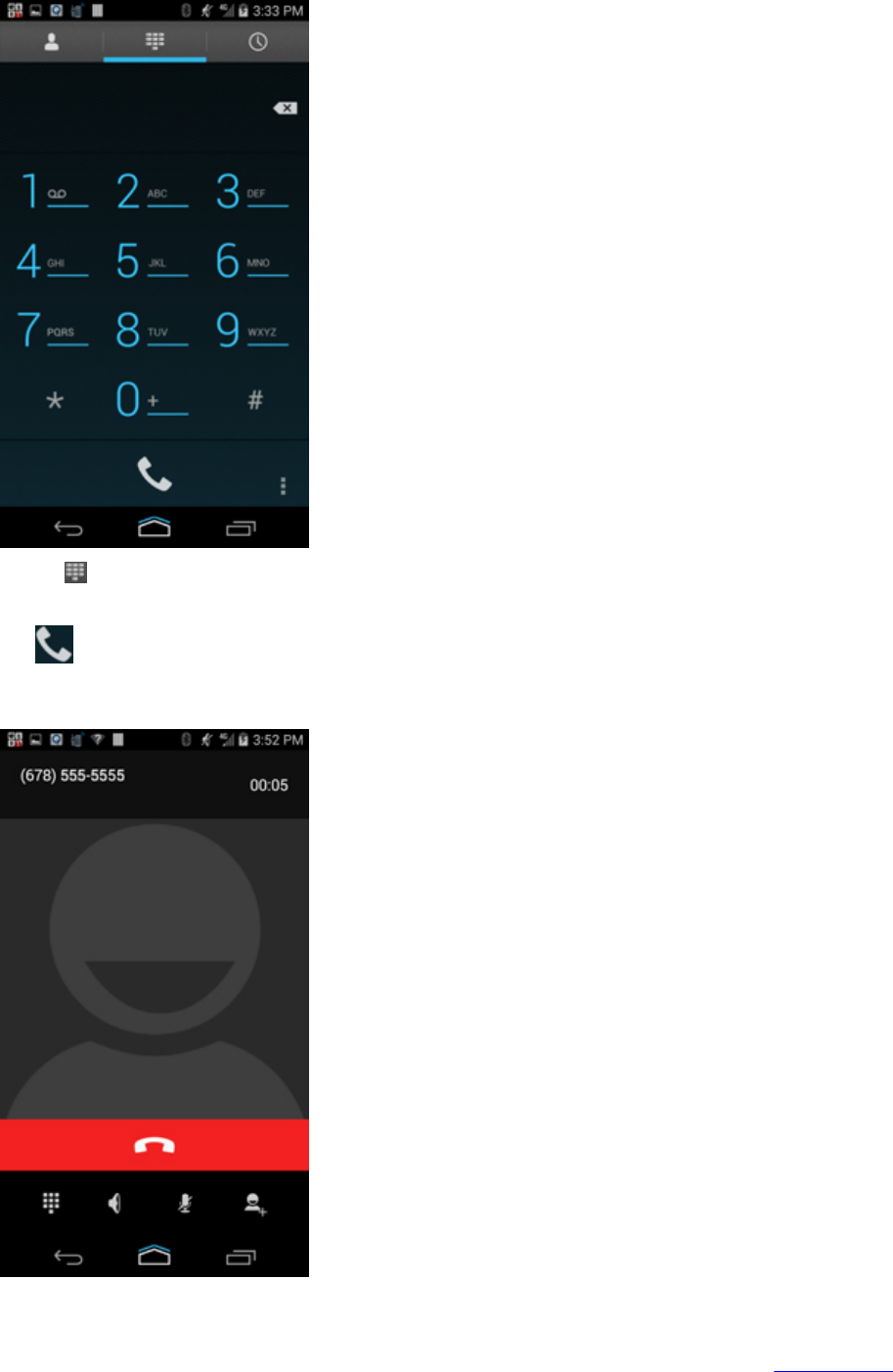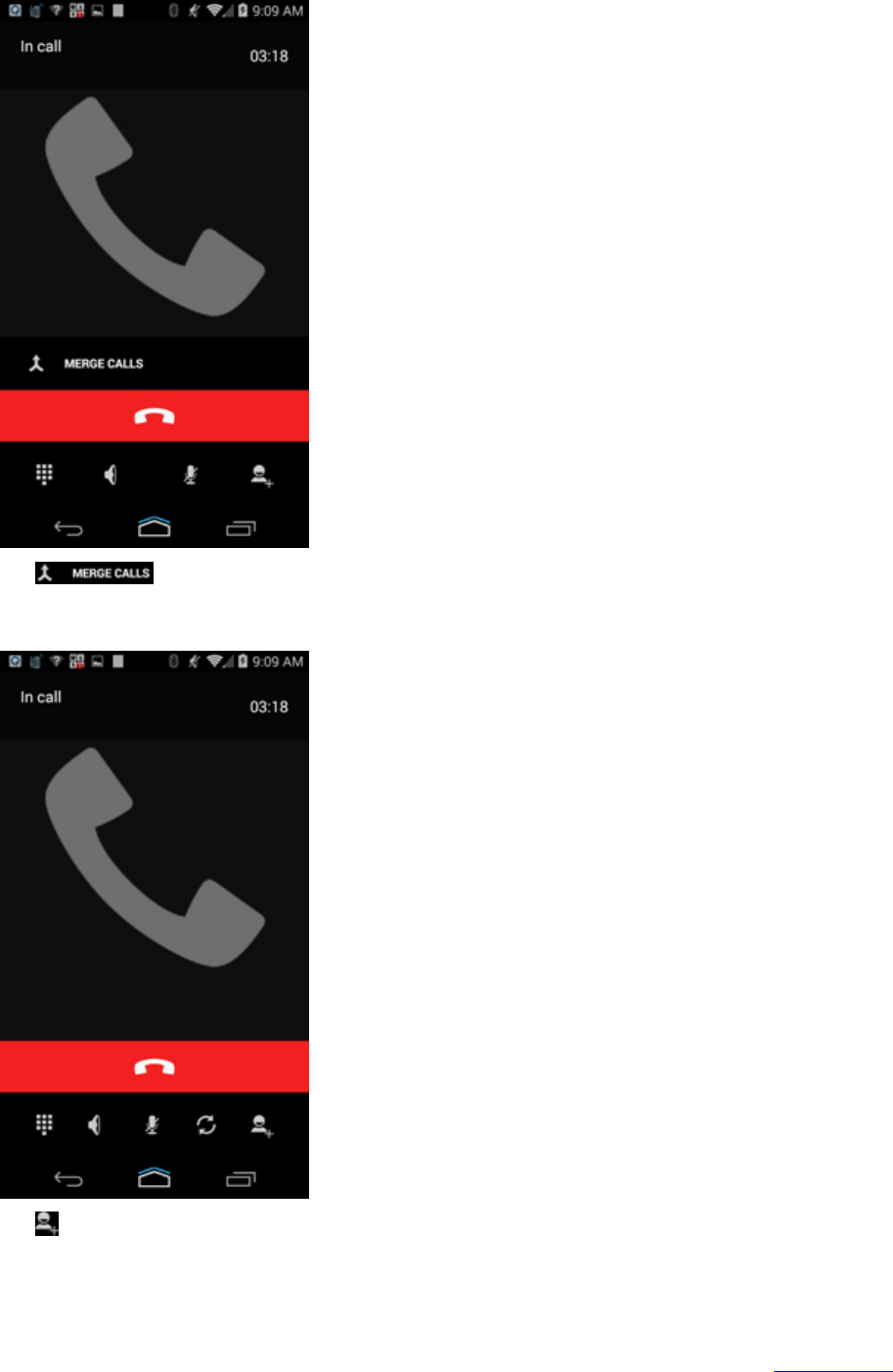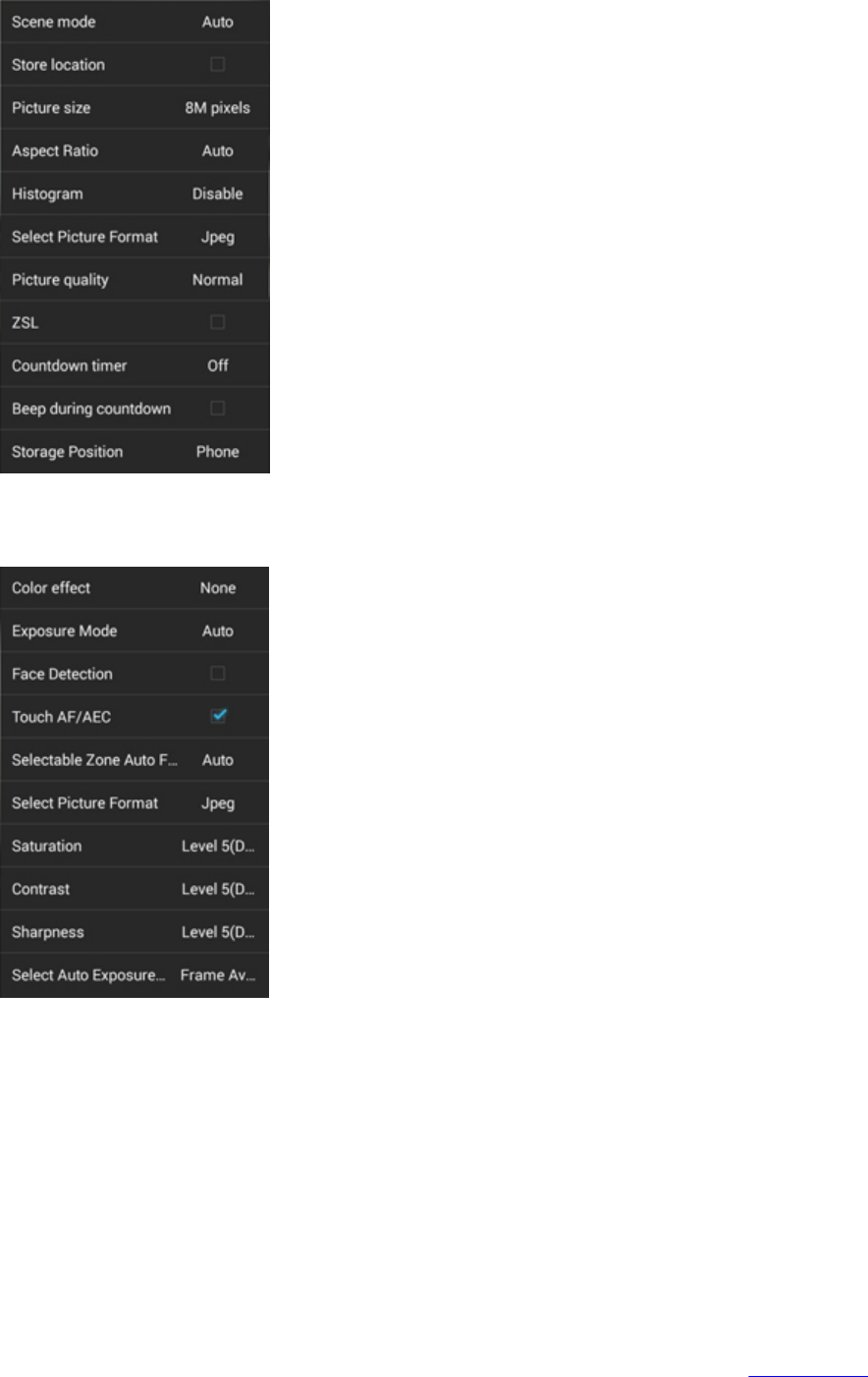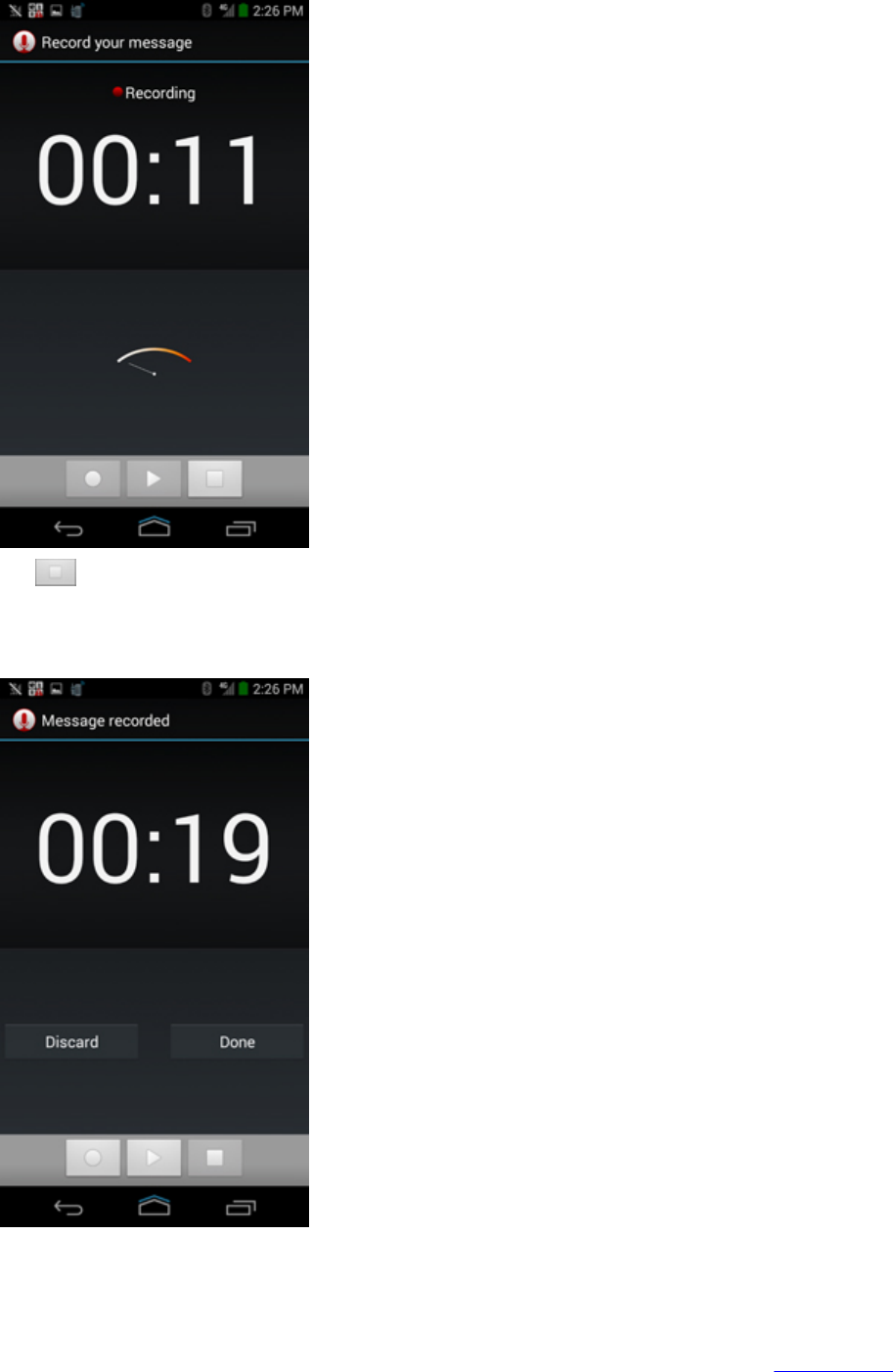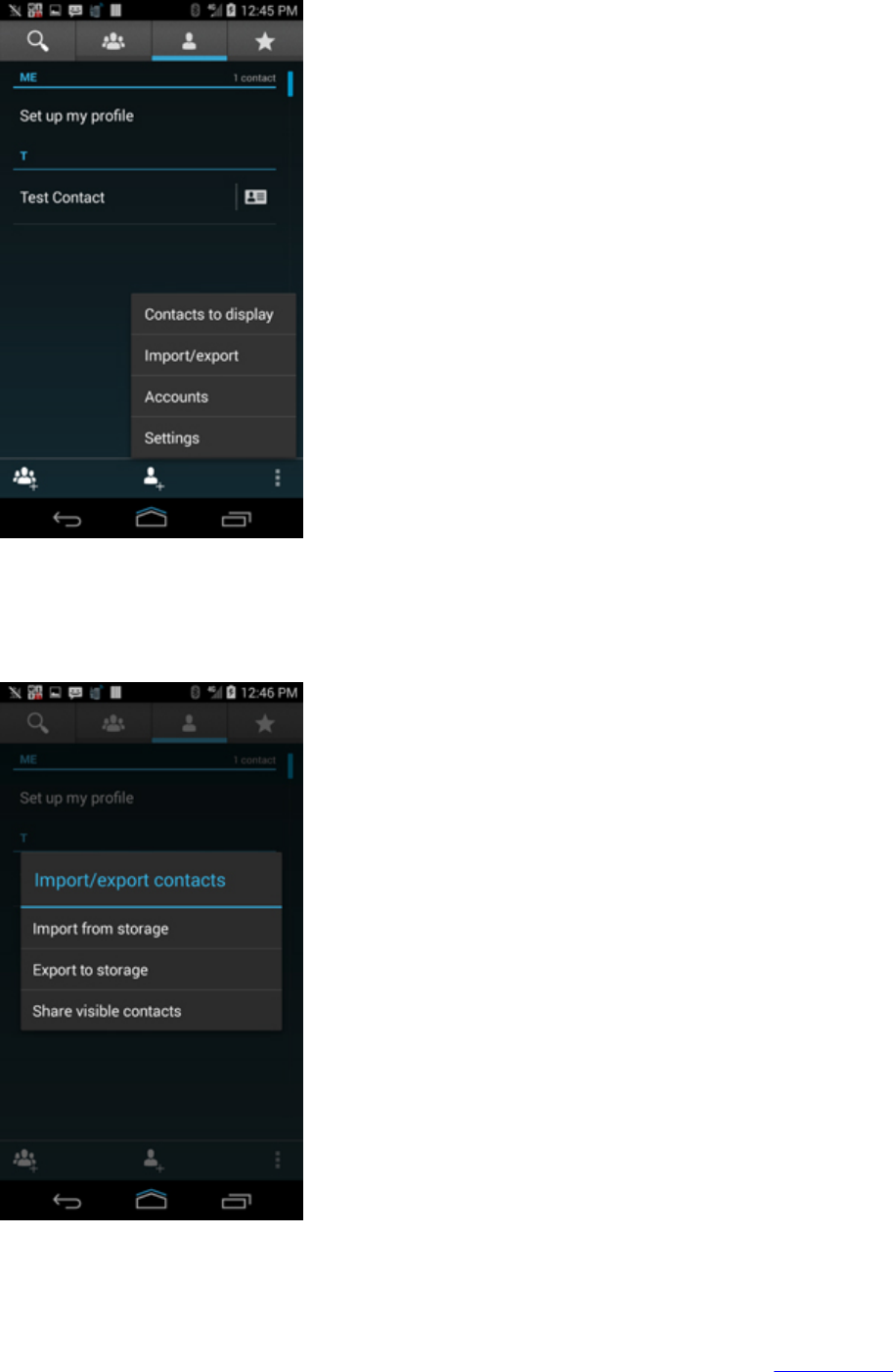Motorola Solutions 89FT7062 Smart phone User Manual LEX L10 Mission Critical Handheld User Guide
Motorola Solutions, Inc. Smart phone LEX L10 Mission Critical Handheld User Guide
Contents
User Manual

LEX L10 MISSION CRITICAL
HANDHELD USER GUIDE
Contents
List of Figures.................................................................................................................................. 7
List of Tables.................................................................................................................................. 11
List of Processes............................................................................................................................. 13
List of Procedures.......................................................................................................................... 15
Chapter 1: About this Guide.................................................................................19
1.1 Contact Us..................................................................................................................................................... 19
1.2 Versions.........................................................................................................................................................20
1.2.1 Operating System Version..............................................................................................................20
1.2.2 Software Build Number..................................................................................................................20
1.2.3 Kernel Version............................................................................................................................... 20
1.3 Chapter Descriptions..................................................................................................................................... 20
1.4 Helpful Background Information.................................................................................................................. 21
1.5 Notational Conventions.................................................................................................................................21
1.6 Icon Conventions...........................................................................................................................................21
1.7 Regulatory Information................................................................................................................................. 22
1.8 Service Information.......................................................................................................................................22
1.9 Documentation Set........................................................................................................................................ 23
Chapter 2: Getting Started with the LEX L10....................................................25
2.1 LEX L10 Features......................................................................................................................................... 25
2.2 Unpacking..................................................................................................................................................... 27
2.3 Setting Up the LEX L10................................................................................................................................27
2.3.1 Removing the Screen Protective Film............................................................................................28
2.3.2 Removing the Battery Cover..........................................................................................................28
2.3.3 Installing a microSD or CRYPTR micro Encryption Card............................................................29
2.3.4 Removing the microSD or CRYPTR Card.................................................................................... 30
2.3.5 Installing the Public and Private SIM Cards.................................................................................. 30
2.3.6 Removing the Public and Private SIM Cards.................................................................................31
2.3.7 Installing the Battery...................................................................................................................... 31
2.3.8 Removing the Battery.....................................................................................................................32
2.4 Charging the LEX L10..................................................................................................................................32
2.4.1 Charging Temperature....................................................................................................................33
2.4.2 Battery Charge Indications.............................................................................................................33
2.4.3 Battery Management...................................................................................................................... 34
2.4.3.1 Monitor Battery Usage.................................................................................................... 34
2.4.3.2 Low Battery Notification.................................................................................................35
2.4.3.3 Battery Optimization....................................................................................................... 36
2.5 Powering On the LEX L10 for the First Time.............................................................................................. 37
2.6 Powering Off the LEX L10...........................................................................................................................38
2.7 Entering and Exiting the Suspend Mode.......................................................................................................38
2.7.1 Setting Time Out to Enter Suspend Mode......................................................................................38
2.8 Covert Mode..................................................................................................................................................39
2.8.1 Turning On Covert Mode...............................................................................................................39
2.8.2 Turning Off Covert Mode.............................................................................................................. 40
2.9 Locking the LEX L10....................................................................................................................................40
2.9.1 Selecting a Locking Option............................................................................................................40
2.9.1.1 Specifying a Pattern.........................................................................................................41
2.9.1.2 Specifying a PIN or Password.........................................................................................41
Contents | 3
2.9.1.3 Setting the Timeout for Locking the LEX L10............................................................... 41
2.9.2 Unlocking the LEX L10.................................................................................................................42
2.9.2.1 Unlocking the LEX L10 Using a Pattern........................................................................ 42
2.9.2.2 Unlocking the LEX L10 Using a PIN or Password.........................................................42
2.9.3 Calling Emergency from a Locked LEX L10................................................................................ 42
2.10 Setting the Date and Time...........................................................................................................................43
2.11 Setting the Display...................................................................................................................................... 43
2.11.1 Setting Screen Brightness.............................................................................................................43
2.11.2 Setting Screen Rotation................................................................................................................44
2.11.3 Setting Up Sleep Mode.................................................................................................................44
2.11.4 Setting Up Daydream................................................................................................................... 44
2.11.5 Setting the Font Size.....................................................................................................................45
2.12 General Sound Setting.................................................................................................................................45
2.13 Public and Private Carrier Modes............................................................................................................... 47
2.13.1 Switching Modes Using the Power Button.................................................................................. 47
2.13.2 Switching Modes Using the Settings App....................................................................................47
Chapter 3: Using the LEX L10............................................................................. 49
3.1 Using the Touchscreen.................................................................................................................................. 49
3.2 Using the On-Screen Keyboard.....................................................................................................................50
3.2.1 Android Keyboard Settings............................................................................................................51
3.3 Motorola Solutions Home Experience (MHx).............................................................................................. 51
3.3.1 Home Screen.................................................................................................................................. 51
3.3.1.1 Home Screen Overlay..................................................................................................... 53
3.3.2 Customizing the Home Screen.......................................................................................................53
3.3.2.1 Adding Widgets...............................................................................................................53
3.3.2.2 Moving Widgets..............................................................................................................58
3.3.2.3 Removing Widgets..........................................................................................................58
3.3.2.4 Example of a Customized Home Screen Panel............................................................... 59
3.4 Status Bar...................................................................................................................................................... 59
3.5 Notification Icons..........................................................................................................................................60
3.6 Status Icons....................................................................................................................................................61
3.7 Managing Notifications.................................................................................................................................63
3.8 Working with Status......................................................................................................................................63
3.9 Quick Settings............................................................................................................................................... 64
3.10 Applications.................................................................................................................................................65
3.11 Folders.........................................................................................................................................................67
3.11.1 Creating a Folder..........................................................................................................................67
3.11.2 Naming Folders............................................................................................................................ 67
3.11.3 Removing a Folder....................................................................................................................... 68
Chapter 4: Calling..................................................................................................69
4.1 Making a Call Using the Dialer.....................................................................................................................70
4.2 Making a Call Using People List Contacts................................................................................................... 72
4.3 Making a Call Using Call History.................................................................................................................73
4.4 Making a Conference Call.............................................................................................................................73
4.5 Answering Calls with a Bluetooth Headset...................................................................................................76
4.6 Call Settings.................................................................................................................................................. 76
Chapter 5: Radio Remote Control........................................................................79
5.1 Pairing Radio with the LEX L10...................................................................................................................80
5.2 Unpairing the Radio...................................................................................................................................... 83
5.3 Requesting an Emergency Alert....................................................................................................................85
4 | Contents
5.4 Setting Zone and Channel............................................................................................................................. 87
5.5 Setting Radio Volume................................................................................................................................... 88
5.6 Favorite Channels..........................................................................................................................................89
5.6.1 Viewing Favorite Channels............................................................................................................89
5.6.2 Adding a Favorite Zone and Channel.............................................................................................91
5.6.3 Removing a Favorite Channel........................................................................................................93
Chapter 6: Messaging............................................................................................ 97
6.1 Sending a Text Message................................................................................................................................97
6.2 Sending a Multimedia Message.................................................................................................................... 98
Chapter 7: Applications.........................................................................................99
7.1 File Browser.................................................................................................................................................. 99
7.2 People.......................................................................................................................................................... 100
7.2.1 Adding People.............................................................................................................................. 100
7.2.2 Editing People.............................................................................................................................. 101
7.2.3 Deleting People............................................................................................................................ 101
7.3 Camera.........................................................................................................................................................101
7.3.1 Taking Photos...............................................................................................................................102
7.3.2 Taking a Panoramic Photo........................................................................................................... 104
7.3.3 Recording Videos.........................................................................................................................105
7.3.4 Camera Settings............................................................................................................................106
7.3.5 Video Settings.............................................................................................................................. 108
7.4 Gallery.........................................................................................................................................................109
7.4.1 Working with Albums..................................................................................................................110
7.4.1.1 Sharing an Album..........................................................................................................111
7.4.1.2 Getting Album Information...........................................................................................111
7.4.1.3 Deleting an Album........................................................................................................ 112
7.4.2 Working with Photos....................................................................................................................112
7.4.2.1 Viewing and Browsing Photos......................................................................................112
7.4.2.2 Rotating a Photo............................................................................................................ 113
7.4.2.3 Cropping a Photo...........................................................................................................113
7.4.2.4 Setting a Photo as a Contact Icon..................................................................................114
7.4.2.5 Sharing a Photo............................................................................................................. 114
7.4.2.6 Deleting a Photo............................................................................................................ 115
7.4.3 Working with Videos................................................................................................................... 115
7.4.3.1 Watching a Video..........................................................................................................115
7.4.3.2 Sharing a Video.............................................................................................................115
7.4.3.3 Deleting a Video............................................................................................................116
7.5 Sound Recorder........................................................................................................................................... 116
7.6 Voice Dialer................................................................................................................................................ 118
7.6.1 Calling a Person by Name............................................................................................................118
7.6.2 Redialing a Previous Call.............................................................................................................118
7.6.3 Dialing by Number.......................................................................................................................118
7.6.4 Opening an Application................................................................................................................119
Chapter 8: Wireless..............................................................................................121
8.1 Wireless Wide Area Networks.................................................................................................................... 121
8.1.1 Sharing the Mobile Data Connection........................................................................................... 121
8.1.1.1 USB Tethering...............................................................................................................121
8.1.1.2 Bluetooth Tethering.......................................................................................................122
8.1.1.3 Portable WiFi Hotspot...................................................................................................122
8.1.2 Data Usage................................................................................................................................... 124
Contents | 5
8.1.2.1 Setting Data Usage Warning......................................................................................... 124
8.1.2.2 Setting Auto-Sync......................................................................................................... 125
8.1.3 Disabling Data When Roaming....................................................................................................125
8.1.4 Limiting Data Connection to a Network...................................................................................... 125
8.1.5 Editing the Access Point Name....................................................................................................125
8.1.6 Adding a Virtual Private Network (VPN)....................................................................................126
8.1.7 Cell Broadcasts.............................................................................................................................127
8.2 Wireless Local Area Networks....................................................................................................................127
8.2.1 Scanning and Connecting to a WiFi Network..............................................................................127
8.2.2 Configuring a WiFi Network....................................................................................................... 129
8.2.3 Adding a WiFi Network...............................................................................................................130
8.2.4 Manually Adding a WiFi Network...............................................................................................130
8.2.5 Advanced WiFi Settings...............................................................................................................131
8.2.6 WLAN Configuration...................................................................................................................131
8.2.7 Modifying a WiFi Network..........................................................................................................131
8.2.8 Removing a WiFi Network.......................................................................................................... 132
8.3 Bluetooth..................................................................................................................................................... 132
8.3.1 Adaptive Frequency Hopping...................................................................................................... 133
8.3.2 Security.........................................................................................................................................133
8.3.3 Bluetooth Profiles.........................................................................................................................133
8.3.4 Bluetooth Power States................................................................................................................ 134
8.3.5 Bluetooth Radio Power — Android............................................................................................. 134
8.3.5.1 Enabling Bluetooth........................................................................................................134
8.3.5.2 Disabling Bluetooth.......................................................................................................135
8.3.6 Discovering Bluetooth Device(s)................................................................................................. 135
8.3.7 Changing the Bluetooth Name..................................................................................................... 136
8.3.8 Connecting to a Bluetooth Device................................................................................................136
8.3.9 Selecting Profiles on a Bluetooth Device.....................................................................................137
8.3.10 Unpairing a Bluetooth Device....................................................................................................137
8.4 Pairing the LEX L10 with a Radio..............................................................................................................137
8.4.1 Establishing a Connection............................................................................................................138
Chapter 9: Accessories.........................................................................................141
9.1 LEX L10 Accessories..................................................................................................................................141
9.2 USB Cable...................................................................................................................................................142
9.3 Desktop Cradle............................................................................................................................................142
9.4 Vehicle Cradle.............................................................................................................................................143
9.5 Holster......................................................................................................................................................... 144
Chapter 10: Maintenance & Troubleshooting.................................................. 145
10.1 Maintaining the LEX L10......................................................................................................................... 145
10.2 Battery Safety Guidelines..........................................................................................................................145
10.3 Cleaning Instructions.................................................................................................................................146
10.4 Cleaning the LEX L10.............................................................................................................................. 147
10.5 Cleaning the Interface Connector..............................................................................................................147
10.6 Cleaning the Battery Contacts...................................................................................................................147
10.7 Troubleshooting the LEX L10.................................................................................................................. 148
10.8 Backing Up the LEX L10..........................................................................................................................150
10.8.1 Backing up Contacts...................................................................................................................150
10.9 Resetting the LEX L10..............................................................................................................................152
10.9.1 Performing Factory Data Reset.................................................................................................. 152
Chapter 11: LEX L10 Technical Specifications................................................ 155
6 | Contents
List of Figures
Figure 1: Manufacturing Label .......................................................................................................................................22
Figure 2: LEX L10 Features ...........................................................................................................................................25
Figure 3: Removing the Screen Protective Film ............................................................................................................ 28
Figure 4: Removing the Battery Cover .......................................................................................................................... 29
Figure 5: Installing the microSD or CRYPTR micro Encryption Card ......................................................................... 29
Figure 6: Installing the Public and Private SIM Cards ...................................................................................................31
Figure 7: Installing the Battery .......................................................................................................................................32
Figure 8: Charging the LEX L10 ................................................................................................................................... 33
Figure 9: Charge and Notification LED .........................................................................................................................33
Figure 10: Battery Screen ...............................................................................................................................................35
Figure 11: Low Battery Notification ..............................................................................................................................35
Figure 12: Battery Depleted Screen ............................................................................................................................... 36
Figure 13: Quick Settings Menu — Airplane Mode ...................................................................................................... 37
Figure 14: LEX L10 Boot Screen ...................................................................................................................................37
Figure 15: Selecting Power Off ......................................................................................................................................38
Figure 16: Power Button Menu ......................................................................................................................................39
Figure 17: Power Button Menu ......................................................................................................................................40
Figure 18: Sound Screen ................................................................................................................................................ 46
Figure 19: Volume Button ..............................................................................................................................................46
Figure 20: Service Switch .............................................................................................................................................. 47
Figure 21: Switch Networks Confirmation Popup .........................................................................................................48
Figure 22: Android Keyboard Settings .......................................................................................................................... 50
Figure 23: Default Home Screen ....................................................................................................................................52
Figure 24: Widgets Screen ............................................................................................................................................. 54
Figure 25: Example of a Widget Added to New Panel .................................................................................................. 55
Figure 26: Empty My Apps Widget ...............................................................................................................................56
Figure 27: List of Shortcuts for My Apps Widgets ........................................................................................................56
Figure 28: My Apps Widget with Shortcuts Added .......................................................................................................57
Figure 29: My Status Widget ......................................................................................................................................... 57
Figure 30: Available/Busy Status Selection ...................................................................................................................58
Figure 31: Example of a Customized Home Screen Panel ............................................................................................ 59
Figure 32: Status Bar ......................................................................................................................................................59
Figure 33: Notification Panel ......................................................................................................................................... 63
Figure 34: Quick Settings Panel .....................................................................................................................................65
Figure 35: Opened Unnamed Folder ..............................................................................................................................67
Figure 36: Named Folder ............................................................................................................................................... 67
Figure 37: Insert Wired Headset Plug ............................................................................................................................ 70
Figure 38: Dialer Screen .................................................................................................................................................71
Figure 39: Call in Progress .............................................................................................................................................71
Figure 40: People List Contact .......................................................................................................................................72
Figure 41: Call History Tab ............................................................................................................................................73
Figure 42: Two Calls ......................................................................................................................................................74
Figure 43: Two Calls Connected ....................................................................................................................................75
Figure 44: Merged Calls .................................................................................................................................................75
Figure 45: Radio Remote Control Screen ...................................................................................................................... 80
Figure 46: Pair With a Radio Screen ..............................................................................................................................81
Figure 47: Blue Pairing Dots ..........................................................................................................................................81
Figure 48: Bluetooth Connection Screen ....................................................................................................................... 82
List of Figures | 7
Figure 49: Radio Remote Control Screen ...................................................................................................................... 82
Figure 50: Radio Remote Control Screen ...................................................................................................................... 83
Figure 51: ....................................................................................................................................................................... 84
Figure 52: Select Unpair .................................................................................................................................................84
Figure 53: Unpaired Screen ............................................................................................................................................85
Figure 54: Emergency Alert Activation Popup ..............................................................................................................86
Figure 55: Notification Screen with Emergency Notification ........................................................................................86
Figure 56: Radio Remote Control Screen ...................................................................................................................... 87
Figure 57: Channel Selection Screen ............................................................................................................................. 88
Figure 58: Radio Remote Control Screen ...................................................................................................................... 89
Figure 59: Radio Volume Slider .................................................................................................................................... 89
Figure 60: Radio Remote Control Screen ...................................................................................................................... 90
Figure 61: Radio Remote Control — Favorites Screen ................................................................................................. 91
Figure 62: Radio Remote Control Screen ...................................................................................................................... 92
Figure 63: Favorites Screen ............................................................................................................................................92
Figure 64: Radio Remote Control Screen ...................................................................................................................... 94
Figure 65: Favorites Screen ............................................................................................................................................94
Figure 66: New Message Screen .................................................................................................................................... 97
Figure 67: New Multimedia Message Screen ................................................................................................................ 98
Figure 68: File Browser Screen ......................................................................................................................................99
Figure 69: Camera Photo Screen ..................................................................................................................................102
Figure 70: Camera Screen ............................................................................................................................................ 103
Figure 71: Camera Option Bar ..................................................................................................................................... 103
Figure 72: Camera Zoom ............................................................................................................................................. 104
Figure 73: Panoramic Mode .........................................................................................................................................104
Figure 74: Panoramic Frame ........................................................................................................................................ 105
Figure 75: Video Mode ................................................................................................................................................ 105
Figure 76: Camera Settings .......................................................................................................................................... 106
Figure 77: First More Options Screen ..........................................................................................................................107
Figure 78: Second More Options Screen ..................................................................................................................... 107
Figure 79: Third More Options Screen ........................................................................................................................ 108
Figure 80: Video Settings .............................................................................................................................................108
Figure 81: First More Options Video Screen ............................................................................................................... 109
Figure 82: Second More Options Video Screen ...........................................................................................................109
Figure 83: Gallery — Albums ......................................................................................................................................110
Figure 84: Photos/Videos Inside an Album ................................................................................................................. 111
Figure 85: Photo Example ............................................................................................................................................112
Figure 86: Cropping Grid .............................................................................................................................................114
Figure 87: Start Recording ........................................................................................................................................... 116
Figure 88: Record Your Message .................................................................................................................................117
Figure 89: Finish Recording .........................................................................................................................................117
Figure 90: Voice Dialer Window ................................................................................................................................. 118
Figure 91: USB Cable Connection to Host Computer ................................................................................................. 122
Figure 92: Set up WiFi Hotspot Dialog Box ................................................................................................................123
Figure 93: Settings Screen ............................................................................................................................................128
Figure 94: WiFi Screen ................................................................................................................................................ 128
Figure 95: WLAN Network Security Dialog Boxes .................................................................................................... 129
Figure 96: Bluetooth Pairing ........................................................................................................................................ 136
Figure 97: Pairing Screen .............................................................................................................................................138
Figure 98: Blue Pairing Dots ........................................................................................................................................139
Figure 99: USB Cable .................................................................................................................................................. 142
Figure 100: Desktop Cradle ......................................................................................................................................... 143
8 | List of Figures
Figure 101: Vehicle Cradle on Windshield ..................................................................................................................144
Figure 102: Holster .......................................................................................................................................................144
Figure 103: Contacts Menu .......................................................................................................................................... 151
Figure 104: Import/Export Contacts Popup ................................................................................................................. 151
Figure 105: Export Confirmation Popup ......................................................................................................................152
List of Figures | 9
10 | List of Figures
List of Tables
Table 1: LEX L10 Features ............................................................................................................................................25
Table 2: Charge and Notification LED — Charging Indications ...................................................................................34
Table 3: Using the Touchscreen .....................................................................................................................................49
Table 4: Android Keyboard Settings ..............................................................................................................................51
Table 5: Home Screen Items .......................................................................................................................................... 52
Table 6: Notification Icons .............................................................................................................................................60
Table 7: Status Icons ...................................................................................................................................................... 61
Table 8: Applications ..................................................................................................................................................... 65
Table 9: Camera Icons and Actions ............................................................................................................................. 102
Table 10: General Accessories ..................................................................................................................................... 141
Table 11: Troubleshooting the LEX L10 ..................................................................................................................... 148
Table 12: LEX L10 Technical Specifications .............................................................................................................. 155
Table 13: General Accessories ..................................................................................................................................... 158
List of Tables | 11
12 | List of Tables

List of Procedures
Removing the Battery Cover ..........................................................................................................................................28
Installing a microSD or CRYPTR micro Encryption Card ............................................................................................29
Removing the microSD or CRYPTR Card .................................................................................................................... 30
Installing the Public and Private SIM Cards .................................................................................................................. 30
Removing the Public and Private SIM Cards .................................................................................................................31
Installing the Battery ...................................................................................................................................................... 31
Removing the Battery .....................................................................................................................................................32
Turning Off the Radio .................................................................................................................................................... 36
Powering Off the LEX L10 ............................................................................................................................................38
Entering and Exiting the Suspend Mode ........................................................................................................................38
Setting Time Out to Enter Suspend Mode ......................................................................................................................38
Turning On Covert Mode ...............................................................................................................................................39
Turning Off Covert Mode .............................................................................................................................................. 40
Selecting a Locking Option ............................................................................................................................................40
Specifying a Pattern ........................................................................................................................................................41
Specifying a PIN or Password ........................................................................................................................................41
Setting the Timeout for Locking the LEX L10 .............................................................................................................. 41
Unlocking the LEX L10 Using a Pattern ....................................................................................................................... 42
Unlocking the LEX L10 Using a PIN or Password ........................................................................................................42
Calling Emergency from a Locked LEX L10 ................................................................................................................ 42
Setting the Date and Time ..............................................................................................................................................43
Setting Screen Brightness ...............................................................................................................................................43
Setting Screen Rotation ..................................................................................................................................................44
Setting Up Sleep Mode ...................................................................................................................................................44
Setting Up Daydream ..................................................................................................................................................... 44
Setting the Font Size .......................................................................................................................................................45
Switching Modes Using the Power Button .................................................................................................................... 47
Switching Modes Using the Settings App ......................................................................................................................47
Adding Widgets ..............................................................................................................................................................53
Adding Shortcuts to the My Apps Widget ..................................................................................................................... 55
Changing My Status ....................................................................................................................................................... 57
Moving Widgets .............................................................................................................................................................58
Removing Widgets .........................................................................................................................................................58
Creating a Folder ............................................................................................................................................................67
Naming Folders .............................................................................................................................................................. 67
Removing a Folder ......................................................................................................................................................... 68
Making a Call Using the Dialer ......................................................................................................................................70
Making a Call Using People List Contacts .................................................................................................................... 72
Making a Call Using Call History ..................................................................................................................................73
Making a Conference Call ..............................................................................................................................................73
Pairing Radio with the LEX L10 ....................................................................................................................................80
Unpairing the Radio ....................................................................................................................................................... 83
Requesting an Emergency Alert .....................................................................................................................................85
Setting Zone and Channel .............................................................................................................................................. 87
Setting Radio Volume .................................................................................................................................................... 88
Viewing Favorite Channels ............................................................................................................................................89
Adding a Favorite Zone and Channel .............................................................................................................................91
Removing a Favorite Channel ........................................................................................................................................93
15 | List of Procedures
MN001456A01-A | February 2015 | Send Feedback

Sending a Text Message .................................................................................................................................................97
Sending a Multimedia Message ..................................................................................................................................... 98
Adding People .............................................................................................................................................................. 100
Editing People .............................................................................................................................................................. 101
Deleting People ............................................................................................................................................................ 101
Taking Photos ...............................................................................................................................................................102
Taking a Panoramic Photo ........................................................................................................................................... 104
Recording Videos .........................................................................................................................................................105
Sharing an Album .........................................................................................................................................................111
Getting Album Information ..........................................................................................................................................111
Deleting an Album ....................................................................................................................................................... 112
Viewing and Browsing Photos .....................................................................................................................................112
Rotating a Photo ........................................................................................................................................................... 113
Cropping a Photo ..........................................................................................................................................................113
Setting a Photo as a Contact Icon .................................................................................................................................114
Sharing a Photo ............................................................................................................................................................ 114
Deleting a Photo ........................................................................................................................................................... 115
Watching a Video .........................................................................................................................................................115
Sharing a Video ............................................................................................................................................................115
Deleting a Video ...........................................................................................................................................................116
Calling a Person by Name ............................................................................................................................................118
Redialing a Previous Call .............................................................................................................................................118
Dialing by Number .......................................................................................................................................................118
Opening an Application ................................................................................................................................................119
USB Tethering ..............................................................................................................................................................121
Bluetooth Tethering ......................................................................................................................................................122
Portable WiFi Hotspot ..................................................................................................................................................122
Configuring the WiFi Hotspot ......................................................................................................................................123
Setting Data Usage Warning ........................................................................................................................................ 124
Setting Auto-Sync ........................................................................................................................................................ 125
Disabling Data When Roaming ....................................................................................................................................125
Limiting Data Connection to a Network ...................................................................................................................... 125
Editing the Access Point Name ....................................................................................................................................125
Adding a Virtual Private Network (VPN) ....................................................................................................................126
Cell Broadcasts .............................................................................................................................................................127
Scanning and Connecting to a WiFi Network ..............................................................................................................127
Configuring a WiFi Network ....................................................................................................................................... 129
Adding a WiFi Network ...............................................................................................................................................130
Manually Adding a WiFi Network ...............................................................................................................................130
Modifying a WiFi Network ..........................................................................................................................................131
Removing a WiFi Network .......................................................................................................................................... 132
Enabling Bluetooth .......................................................................................................................................................134
Disabling Bluetooth ......................................................................................................................................................135
Discovering Bluetooth Device(s) ................................................................................................................................. 135
Changing the Bluetooth Name ..................................................................................................................................... 136
Connecting to a Bluetooth Device ................................................................................................................................136
Selecting Profiles on a Bluetooth Device .....................................................................................................................137
Unpairing a Bluetooth Device ......................................................................................................................................137
Establishing a Connection ............................................................................................................................................138
Cleaning the Interface Connector .................................................................................................................................147
Cleaning the Battery Contacts ......................................................................................................................................147
Backing Up the LEX L10 .............................................................................................................................................150
16 | List of Procedures
Send Feedback | February 2015 | MN001456A01-A

Backing up Contacts .....................................................................................................................................................150
Resetting the LEX L10 .................................................................................................................................................152
Performing Factory Data Reset .................................................................................................................................... 152
List of Procedures | 17
MN001456A01-A | February 2015 | Send Feedback
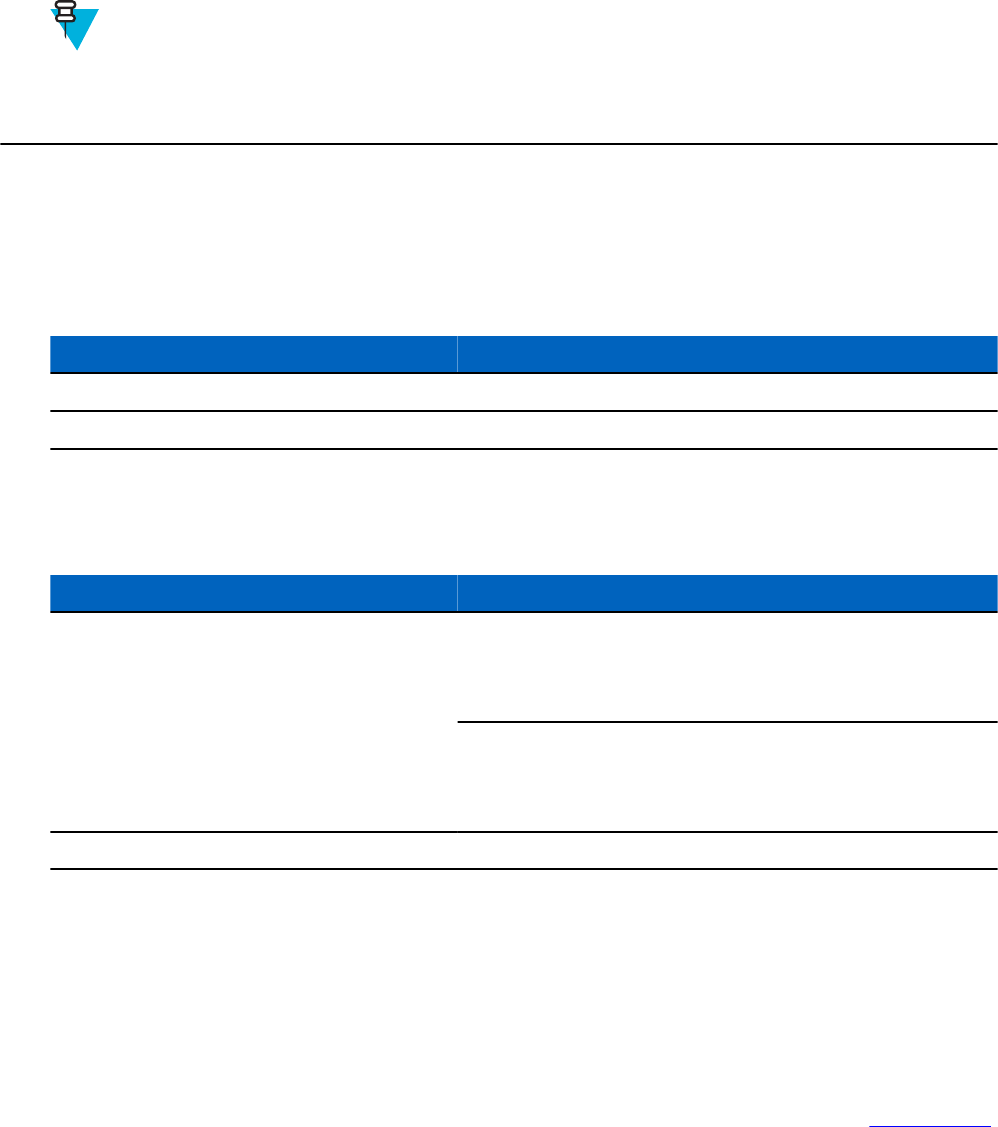
Chapter
1
About this Guide
This guide provides information about using the LEX L10 Mission Critical Handheld and accessories.
Note: Screens and menu options may be changed or customized by your agency to show different
information.
1.1 Contact Us
Motorola Solution Support Center
The Solution Support Center (SSC) is the primary Motorola Solutions support contact. Call:
• Before any software reload.
• To confirm troubleshooting results and analysis before removing and replacing a Field Replaceable Unit (FRU)
and Field Replaceable Entity (FRE) to repair the system.
For... Phone
United States Calls 800-221-7144
International Calls 302-444-9800
North America Parts Organization
For assistance in ordering replacement parts or identifying a part number, contact the Motorola Parts organization.
Your first response when troubleshooting your system is to call the Motorola SSC.
For... Phone
Phone Orders 800-422-4210 (US and Canada Orders)
For help identifying an item or part number, select choice 3 from
the menu.
302-444-9842 (International Orders)
Includes help for identifying an item or part number and for
translation as needed.
Fax Orders 800-622-6210 (US and Canada Orders)
Comments
Send questions and comments regarding user documentation to documentation@motorolasolutions.com.
Provide the following information when reporting a documentation error:
• The document title and part number
19 | About this Guide
MN001456A01-A | February 2015 | Send Feedback
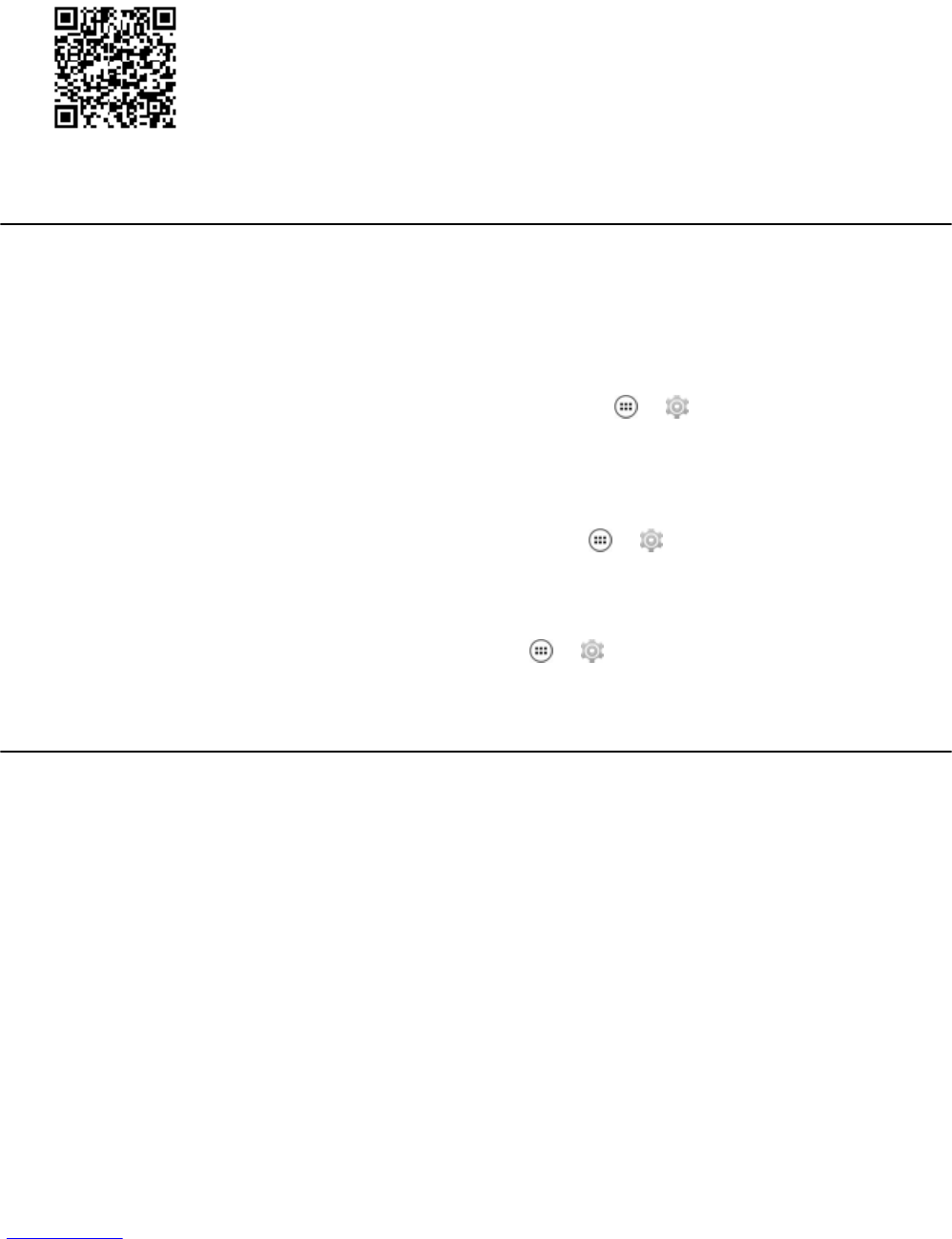
• The page number with the error
•A description of the error
We welcome your feedback on this and other Motorola manuals. To take a short, confidential survey on Motorola
Customer Documentation, go to docsurvey.motorolasolutions.com or scan the following QR code with your mobile
device to access the survey.
1.2 Versions
This guide covers various software configurations and references are made to operating system or software versions
discussed in the following three subsections.
1.2.1 Operating System Version
To determine the Operating System version, from the Home screen touch → → About phone → Android
Version. The last line provides the Android version information. For example: 4.4.4.
1.2.2 Software Build Number
To determine the software build number, from the Home screen touch → → About phone → Build Number.
1.2.3 Kernel Version
To determine the kernel version, from the Home screen, touch → → About phone → Kernel version.
1.3 Chapter Descriptions
This Guide provides information on the features listed in the chapter descriptions below:
•Chapter 1, About this Guide: Customer contacts and general information related to this product.
• Chapter 2, Getting Started with the LEX L10: Getting the LEX L10 up and running for the first time.
• Chapter 3, Using the LEX L10: Operating the LEX L10.
• Chapter 4, Calling: Making and receiving calls.
• Chapter 5, Radio Remote Control: Connecting the LEX L10 to a Land Mobile Radio for communicating on LTE
and P25 systems.
• Chapter 6, Messaging: Sending text and multimedia messages.
• Chapter 7 Applications: Using basic applications installed on the LEX L10 such as Camera, People and File
Browser.
• Chapter 8, Wireless: Configuring the LEX L10 to operate on a personal, local and wide area wireless network.
• Chapter 9, Accessories: Available accessories and how to use them with the LEX L10.
• Chapter 10, Maintenance & Troubleshooting :Cleaning and storing the LEX L10, and troubleshooting solutions
for potential problems.
20 | About this Guide
Send Feedback | February 2015 | MN001456A01-A
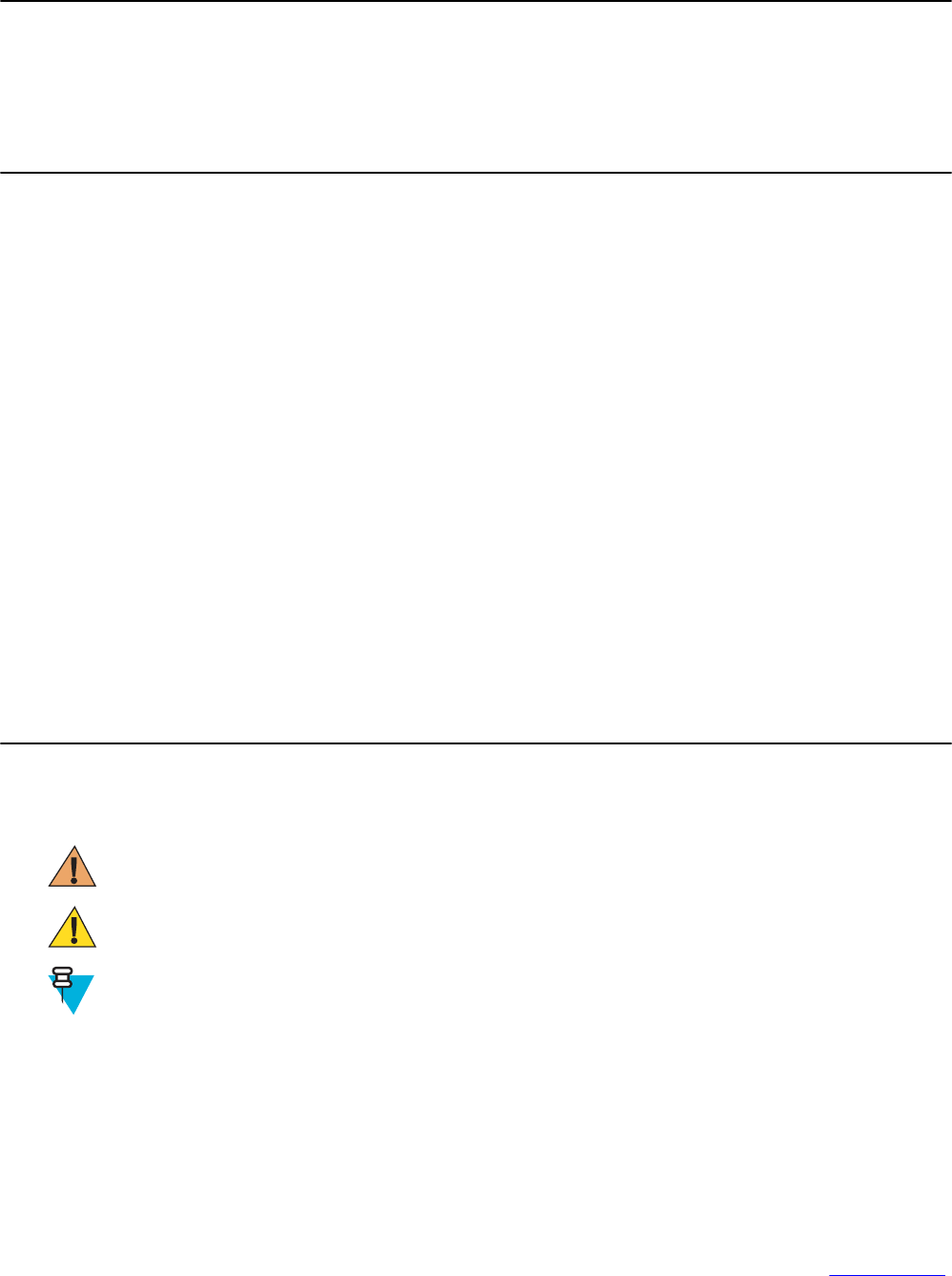
• Chapter 11, Technical Specifications: Technical specifications for the LEX L10.
1.4 Helpful Background Information
Motorola offers various courses designed to assist in learning about the system. For information, go to http://
www.motorolasolutions.com/training to view the current course offerings and technology paths.
1.5 Notational Conventions
The following conventions are used in this document:
Italics are used to highlight the following:
•Icons on a screen
• Chapters and sections in this and related documents
Bold text is used to highlight the following:
• Dialog box, window, and screen names
• Drop-down list and list box names
• Check box and radio button names
• Key names on a keypad
• Button names on a screen
Bullets (•) indicate:
• Action items
• Lists of alternatives
• Lists of required steps that are not necessarily sequential
Sequential lists (e.g., those that describe step-by-step procedures) appear as numbered lists.
1.6 Icon Conventions
The documentation set is designed to give the reader more visual clues. The following graphic icons are used
throughout the documentation set. These icons and their associated meanings are described below.
Warning: The word WARNING with the associated safety icon implies information that, if disregarded,
could result in death or serious injury, or serious product damage.
Caution: The word CAUTION with the associated safety icon implies information that, if disregarded,
may result in minor or moderate injury, or serious product damage.
Note: NOTE contains information more important than the surrounding text, such as exceptions or
preconditions. They also refer the reader elsewhere for additional information, remind the reader how to
complete an action (when it is not part of the current procedure, for instance), or tell the reader where
something is located on the screen. There is no warning level associated with a note.
About this Guide | 21
MN001456A01-A | February 2015 | Send Feedback
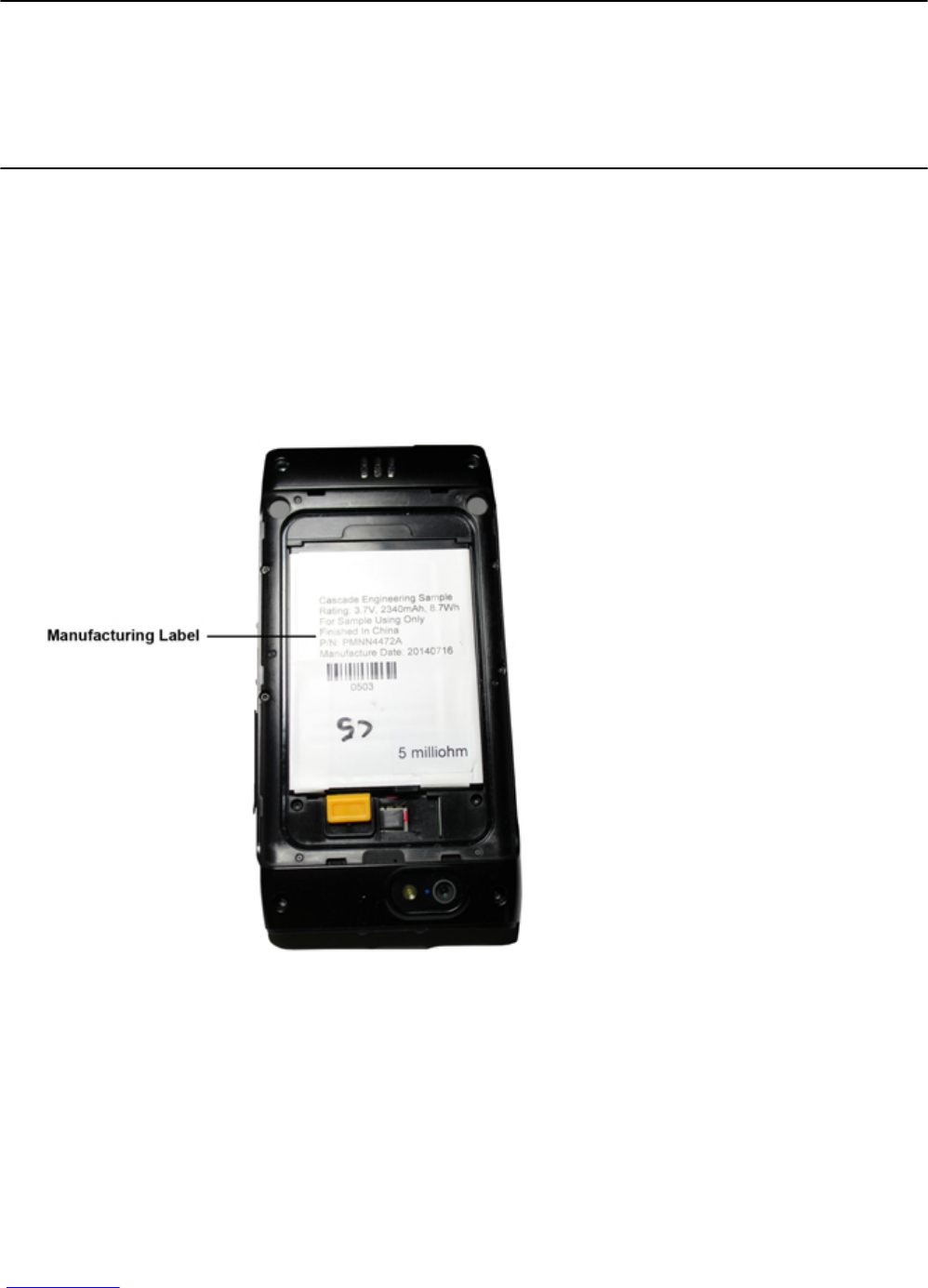
1.7 Regulatory Information
BEFORE USING THIS device, READ the Product Regulatory, Safety & RF Exposure Guide (PN MN001458A01-A)
included with this package.
1.8 Service Information
If you have a problem with your equipment, contact Motorola Solutions Global Customer Support Center for your
region. Contact information is available at: http://www.motorolasolutions.com/support. You can also call
1-800-323-9949 for support and select option 6 for PS LTE infrastructure and devices. When contacting support, have
the following information available:
•Serial number of the unit (found on manufacturing label)
• Model number or product name (found on manufacturing label)
• Software type and version number
Figure 1: Manufacturing Label
Motorola Solutions responds to calls by e-mail, telephone or fax within the time limits set forth in support
agreements.
If your problem cannot be solved by Motorola Solutions Global Customer Support Center, you may need to return
your equipment for servicing and will be given specific directions. Motorola Solutions is not responsible for any
damages incurred during shipment if the approved shipping container is not used. Shipping the units improperly can
possibly void the warranty. Remove the CRYPTR card or microSD card and SIM card before shipping.
If you purchased your product from a Motorola Solutions business partner, contact that business partner for support.
22 | About this Guide
Send Feedback | February 2015 | MN001456A01-A

1.9 Documentation Set
Unless otherwise specified, Motorola Solutions documents listed here are available from Motorola Online at https://
businessonline.motorolasolutions.com. If you are new to Motorola Online, follow the on-screen instructions to sign
up for an account To access Public Safety LTE infrastructure and device manuals, select Resource Center →
Product Information → Manuals → Network Infrastructure.
The documentation set for the LEX L10 provides information for specific user needs, and includes:
•LEX L10 Quick Start Guide PN MN001457A01-A: describes how to get the LEX L10 up and running.
•LEX L10 Mission Critical Handheld User Guide (this guide) MN001456A01-A: describes how to use the LEX
L10.
•LEX L10 Push-To-Talk User Guide PN xxxxxxxxA01-A: describes how to use the PTT feature on the LEX L10.
•LEX L10 Regulatory and Safety Guide PN MN001458A01-A: describes how to safely use the LEX L10.
•LEX L10 Service Provisioning Guide PN MN001462A01-A: provides technical instructions on how to activate,
provision, and configure the LEX L10.
•LEX L10 Vehicle Cradle Quick Reference Guide PN MN001460A01-A: describes how to charge a single LEX
L10 unit inside a vehicle.
•LEX L10 Desktop Cradle Quick Reference Guide PN MN001459A01-A: describes how to charge a single LEX
L10 unit inside a vehicle.
For the latest version of this guide and all guides, go to: https://businessonline.motorolasolutions.com.
About this Guide | 23
MN001456A01-A | February 2015 | Send Feedback
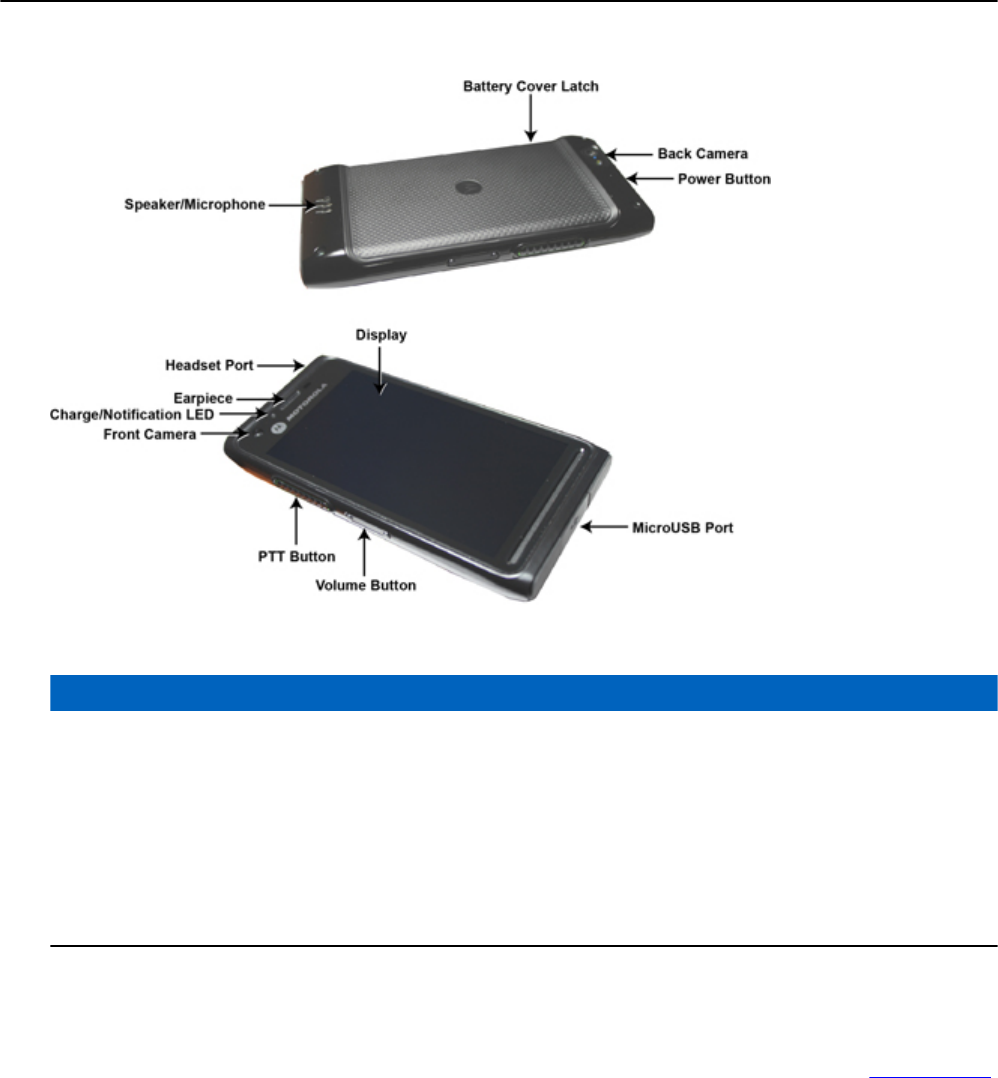
Chapter
2
Getting Started with the LEX L10
2.1 LEX L10 Features
Figure 2: LEX L10 Features
Table 1: LEX L10 Features
Item Function
Charge and Notification LED Solid Blue: New notification (New Voice mail, New
Text messages, Missed Calls, Android App Notifications,
etc.)
Off: Battery is not charging.
Solid Red: Battery is charging.
Blinking Amber: Waiting to charge.
Solid Green: Fully Charged.
Table continued…
25 | Getting Started with the LEX L10
MN001456A01-A | February 2015 | Send Feedback
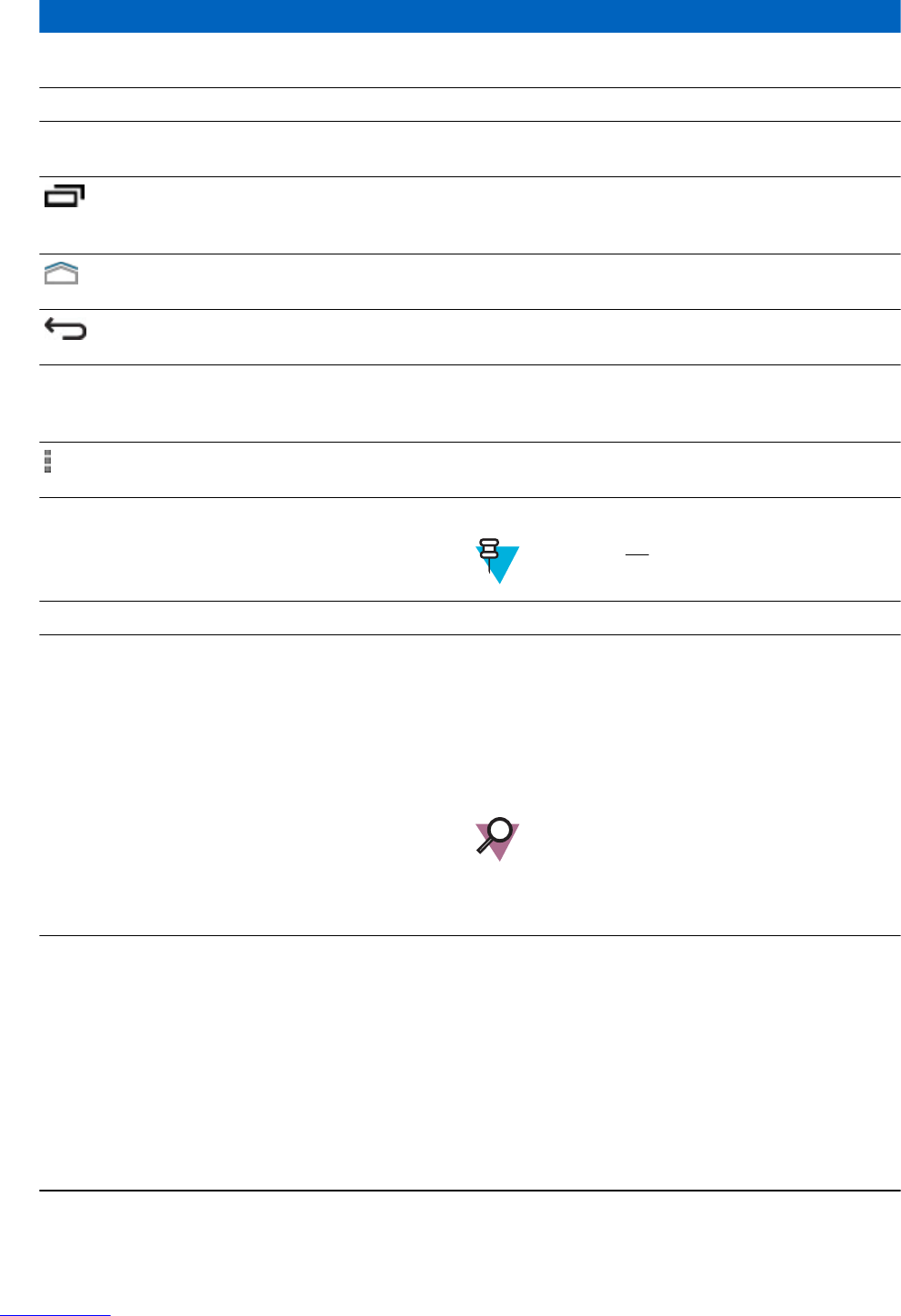
Item Function
Ambient Light Sensor Determines ambient light for controlling display back-
light intensity.
Proximity Sensor Turning off display when the phone is close to ear.
Screen Tap screen displays all information needed to operate the
LEX L10.
Recent Apps key — Press to switch to, stop or manage
applications currently running on the background of the
LEX L10.
Home key — Displays the Home screen with a single
tap.
Back key — Displays the previous screen. Closes the
keyboard if the on-screen keyboard is open.
Primary Microphone/Speaker Use for communications in handset mode. Provides au-
dio output for video and voice playback in speakerphone
mode.
Menu key — At any screen or application, press to see
available options.
Headset Port Connects to headsets (3.5 mm plug).
Note: Do not user 2.5 mm to 3.5 mm adapters
Volume Up/Down Buttons Increase and decrease audio volume.
PTT Button Push-to-Talk (PTT) button enables Push-to-Talk services
over a broadband network and can also be interconnected
to Project 25 Land Mobile Radio (LMR) networks. The
PTT application offers calls, alerts, group calls, Talk
Group calls, and Talk Group monitoring and scanning.
For PTT button and application operations, see Push-to-
Talk User Guide for LEX L10 PN MNxxxxxxxxx
Important: The PTT is an optional feature
that requires installation of software and sys-
tem connection following the LEX L10 ship-
ping. To verify if the PTT feature is enabled
on the device, contact your technical support.
Power Button Press and hold to turn on the LEX L10. Press to turn the
screen on or off. Press and hold to select one of these op-
tions:
•Power On/Off — Turn On/Off the LEX L10.
•Airplane mode — Disables all wireless connections.
•Service switch — Switches between public and Pri-
vate carrier modes.
•Covert mode — In covert mode, all sounds and visu-
al indications of the LEX L10 are turned off. See
Covert Mode on page 39.
Table continued…
26 | Getting Started with the LEX L10
Send Feedback | February 2015 | MN001456A01-A
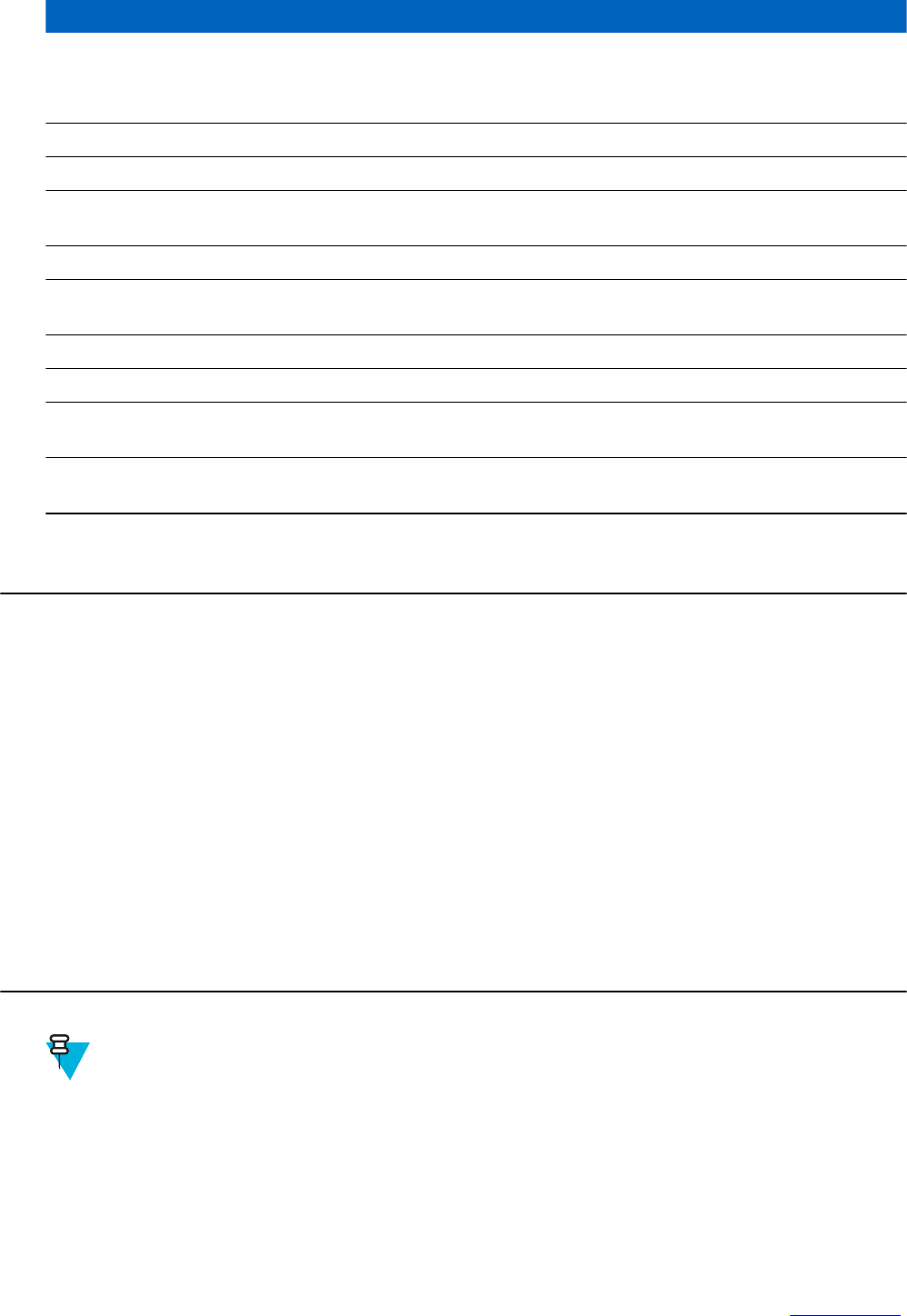
Item Function
•Vibrate mode — Sets the LEX L10 to vibrate only.
•Speaker on — Routes the earpiece sound to the
speaker.
Front Camera Used to capture live video for video calls.
Earpiece Provides audio in handset mode.
Secondary Microphone Use for making voice recordings and communications in
speakerphone mode.
Interface Connector Provides power to the LEX L10 from cradles.
Battery Cover Latch Assists in battery cover removal to provide access to the
battery, SIM, CRYPTR and microSD card holders.
Camera Button Starts the camera and takes photos and video.
microUSB Port Provides USB client and host communications.
Radio Paring Point Serves as a secure Bluetooth pairing point with Motorola
Solutions Land Mobile Radios (LMR).
Back Camera and Flash Takes photos and video, and provides flash illumination
for the camera.
2.2 Unpacking
Carefully remove all protective material from the LEX L10 and save the shipping container for later storage and
shipping. Verify that the following were received:
•LEX L10
• Battery Cover
• 2280 mAh Lithium-ion battery
• USB Charger
• USB Cable
• Regulatory Guide
• Quick Start Guide
Inspect the equipment for damage. If any equipment is missing or damaged, contact the Motorola Solutions Support
Center immediately.
2.3 Setting Up the LEX L10
Note: The LEX L10 may be delivered to you with battery, SIM card, microSD card and/or CRYPTR cards
already installed, activated and ready for use. In this case, ignore steps 2 through 6 of the following section
if they were already performed.
Before using the LEX L10 for the first time, perform the following:
1Remove the screen protection film from the LEX L10 screen. (See Removing the Screen Protective Film on page
28).
2Install the public and/or Private SIM cards. (See Installing the Public and Private SIM Cards on page 30).
Getting Started with the LEX L10 | 27
MN001456A01-A | February 2015 | Send Feedback
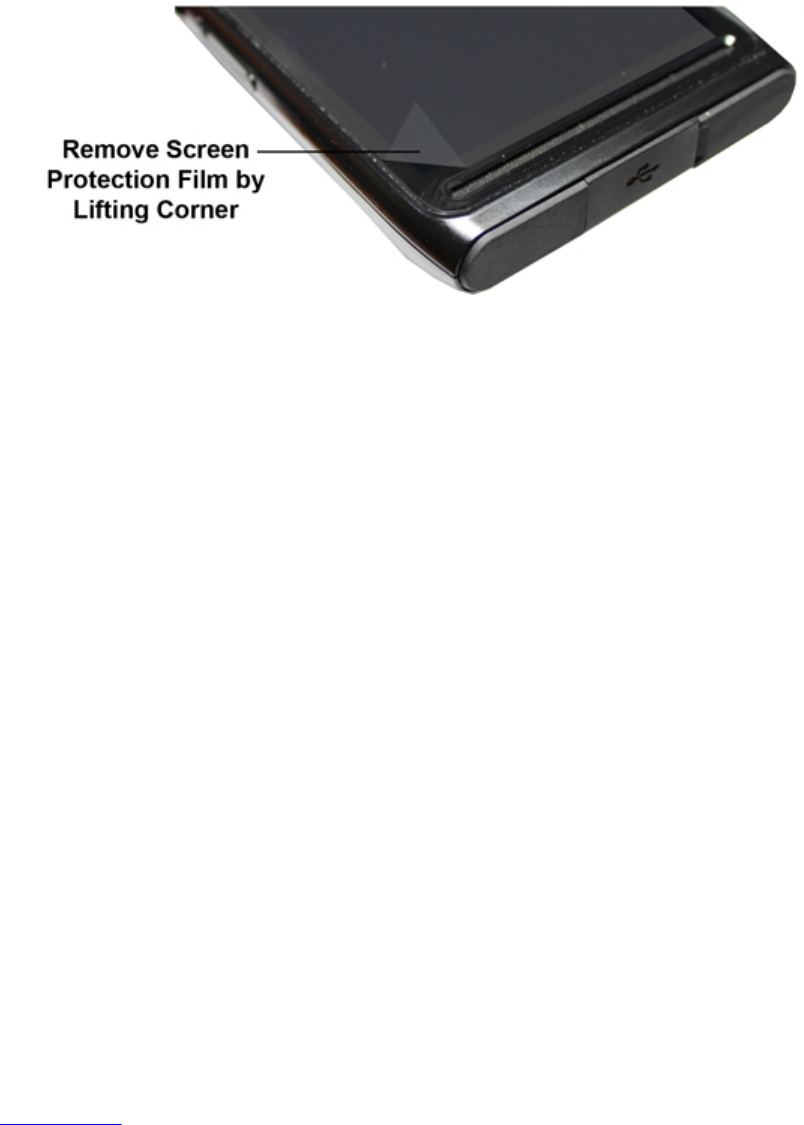
3Install the microSD or CRYPTR card (optional). (See Installing a microSD or CRYPTR micro Encryption Card
on page 29).
4Install the battery. (See Installing the Battery on page 31).
5Install the battery cover.
6Charge the LEX L10. (See Charging the LEX L10 on page 32).
2.3.1 Removing the Screen Protective Film
The LEX L10 is provided with a screen protective film that protects the device during shipping. To enable proper
operation of the LEX L10, the screen protector must be removed before use.
Figure 3: Removing the Screen Protective Film
2.3.2 Removing the Battery Cover
This procedure explains how to remove the battery cover.
Procedure:
1Hold the LEX L10 firmly as shown.
2Using the battery cover removal slot, gently lift the battery cover up and away from the LEX L10.
28 | Getting Started with the LEX L10
Send Feedback | February 2015 | MN001456A01-A
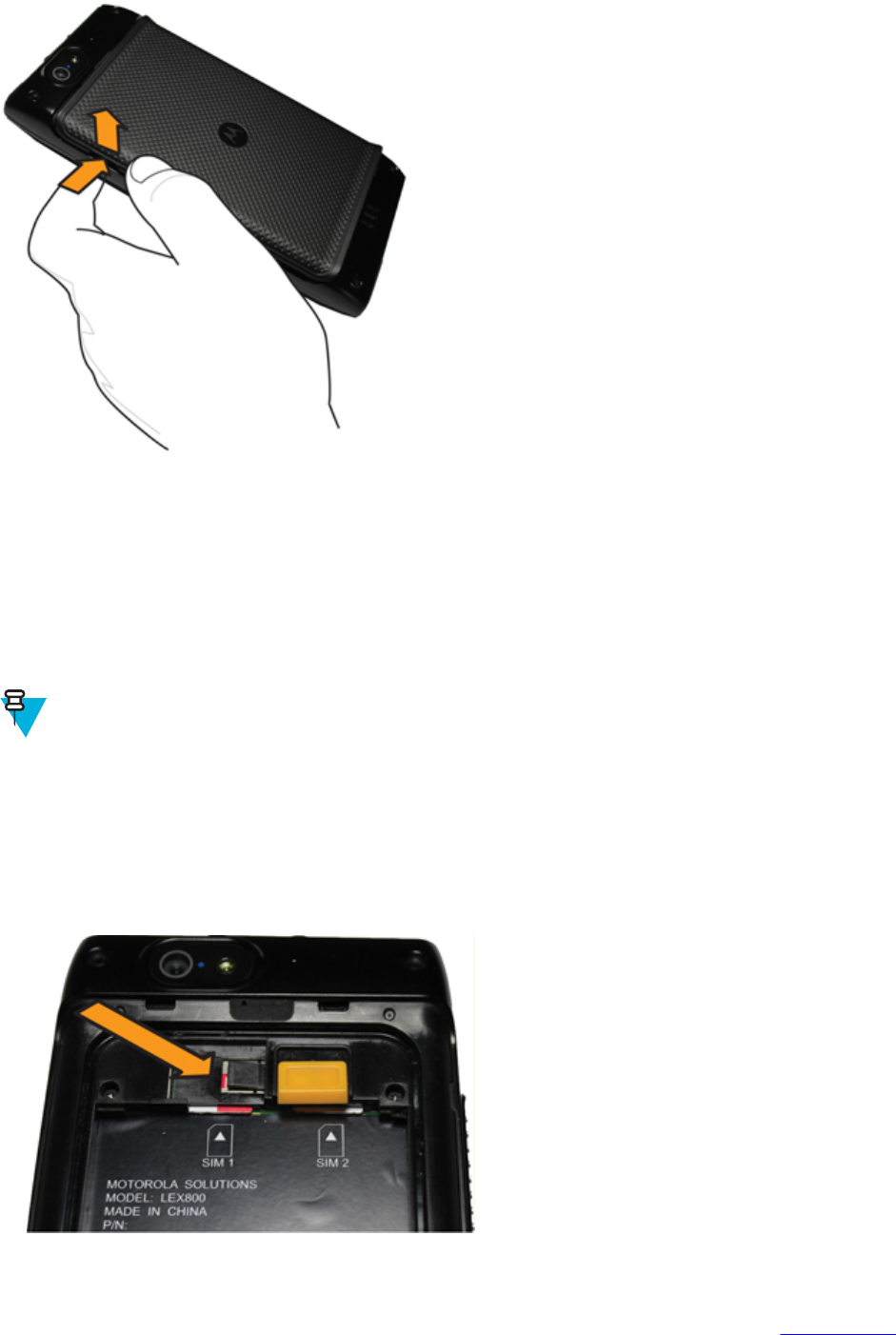
Figure 4: Removing the Battery Cover
2.3.3 Installing a microSD or CRYPTR micro Encryption Card
The LEX L10 card holder can support either a microSD card or a CRYPTR micro encryption card. The microSD card
is a removable flash memory used for storing media on the LEX L10. The LEX L10 can support microSD cards with
up to 64GB memory space. The CRYPTR micro encryption card is used for voice encryption in features such as data
and phone over Virtual Private Network (VPN) and Push-to-Talk (PTT) communication. The slot of the card is
located under the LEX L10 battery
When and where to use:
Note: The LEX L10 may be delivered to you with battery, SIM card and microSD or CRYPTR card
already installed, activated and ready for use. In case a CRYPTR is pre-installed in the LEX L10, you will
be required to change the CRYPTR password initially provided by your technical support. CRYPTR
password is required whenever the LEX L10 is restarted.
Procedure:
1Slide the card into the card holder slot with contacts facing down.
2Push the card into the slot until it is fully seated and locked into place.
Figure 5: Installing the microSD or CRYPTR micro Encryption Card
Getting Started with the LEX L10 | 29
MN001456A01-A | February 2015 | Send Feedback

2.3.4 Removing the microSD or CRYPTR Card
When and where to use: Use this procedure to remove the microSD or CryptR micro Encryption Card:
Procedure:
1Press and hold the Powerbutton for three seconds.
2Touch Power Off.
3Touch OK.
4Lift the battery cover.
5Push the Card Holder lock down to release the card.
6Remove the Card from the holder.
7Replace the battery cover.
2.3.5 Installing the Public and Private SIM Cards
Prerequisites: Public and private phone services require a Subscriber Identification Module (SIM) card. The card can
contain the following information:
•Mobile phone service provider account details.
• Information regarding service access and preferences.
• Contact information, which can be moved to the People application on the LEX L10.
• Any additional subscribed services.
Note: The LEX L10 requires activated SIM cards. Obtain activated SIM cards from your organization
administrator.
Caution:
•Electrostatic discharge (ESD) precaution.
• For proper ESD precautions to avoid damaging the SIM card. Proper ESD precautions include, but not
limited to, working on an ESD mat and ensuring that the user is properly grounded.
When and where to use: Use this procedure to install a SIM card:
Procedure:
1If the battery is in place, remove the battery as described in Removing the Battery on page 32.
2Slide the SIM card into the SIM card holder with the contacts facing down. Note the card notch position.
3Push that the SIM card into the holder until it is fully seated and flat.
You should hear a click when the SIM card in fully in place.
30 | Getting Started with the LEX L10
Send Feedback | February 2015 | MN001456A01-A

Figure 6: Installing the Public and Private SIM Cards
2.3.6 Removing the Public and Private SIM Cards
When and where to use: Use this procedure to remove the public or private SIM Cards:
Procedure:
1Press and hold the Power button for three seconds.
2Touch Power Off.
3Touch OK.
4Lift the battery cover.
5Slide the battery latch to Unlock position.
6Lift the battery out of the LEX L10.
7Push the SIM card to release it from the holder.
8Remove the SIM card.
9Place the battery back into the LEX L10.
10 Sanp the battery cover back into place.
2.3.7 Installing the Battery
When and where to use: Use this procedure to install the battery:
Procedure:
1Remove the battery from the packaging.
2Insert the battery into the battery compartment with the battery contacts facing the bottom of the LEX L10.
3Press the top of battery into place.
4Place the battery cover into place.
Getting Started with the LEX L10 | 31
MN001456A01-A | February 2015 | Send Feedback
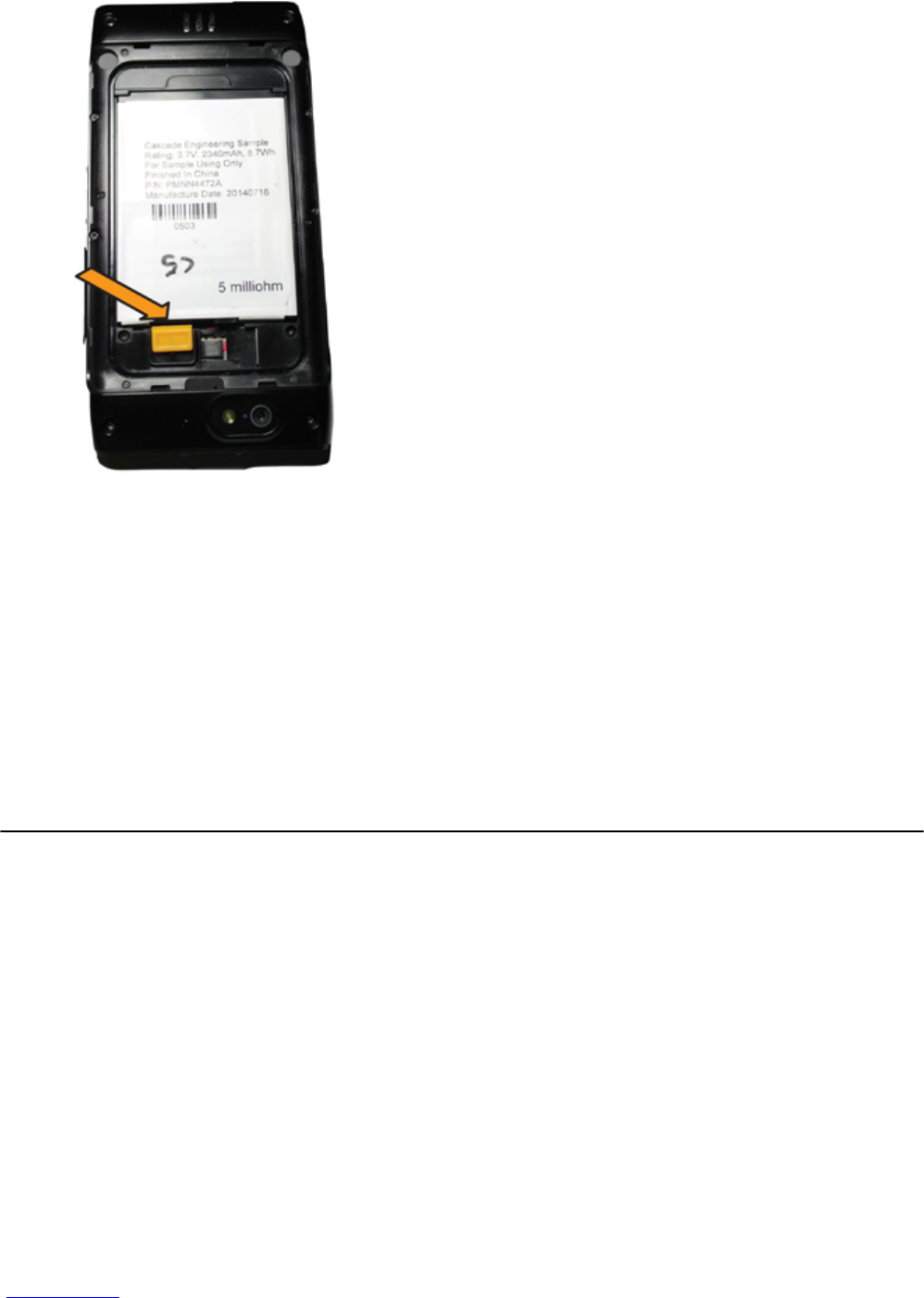
Figure 7: Installing the Battery
2.3.8 Removing the Battery
When and where to use: Use this procedure to remove the battery:
Procedure:
1Slide a finger nail (preferably a thumb nail) into the Battery Cover removal slot and gently pull the Battery Cover
away from the LEX L10
2Remove the Battery Cover.
3Slide the Battery Lock up and hold it.
4With the tip of your finger, lift up the battery from the side closest to the top side of the LEX L10.
2.4 Charging the LEX L10
Before using the LEX L10 for the first time, charge the battery using the provided USB Charger and USB Cable or
connect the USB Cable to the USB port of a personal computer. An unused battery fully charges in less than six
hours.
The LEX L10 battery can also be charged by one of the optional charging cradles.
32 | Getting Started with the LEX L10
Send Feedback | February 2015 | MN001456A01-A
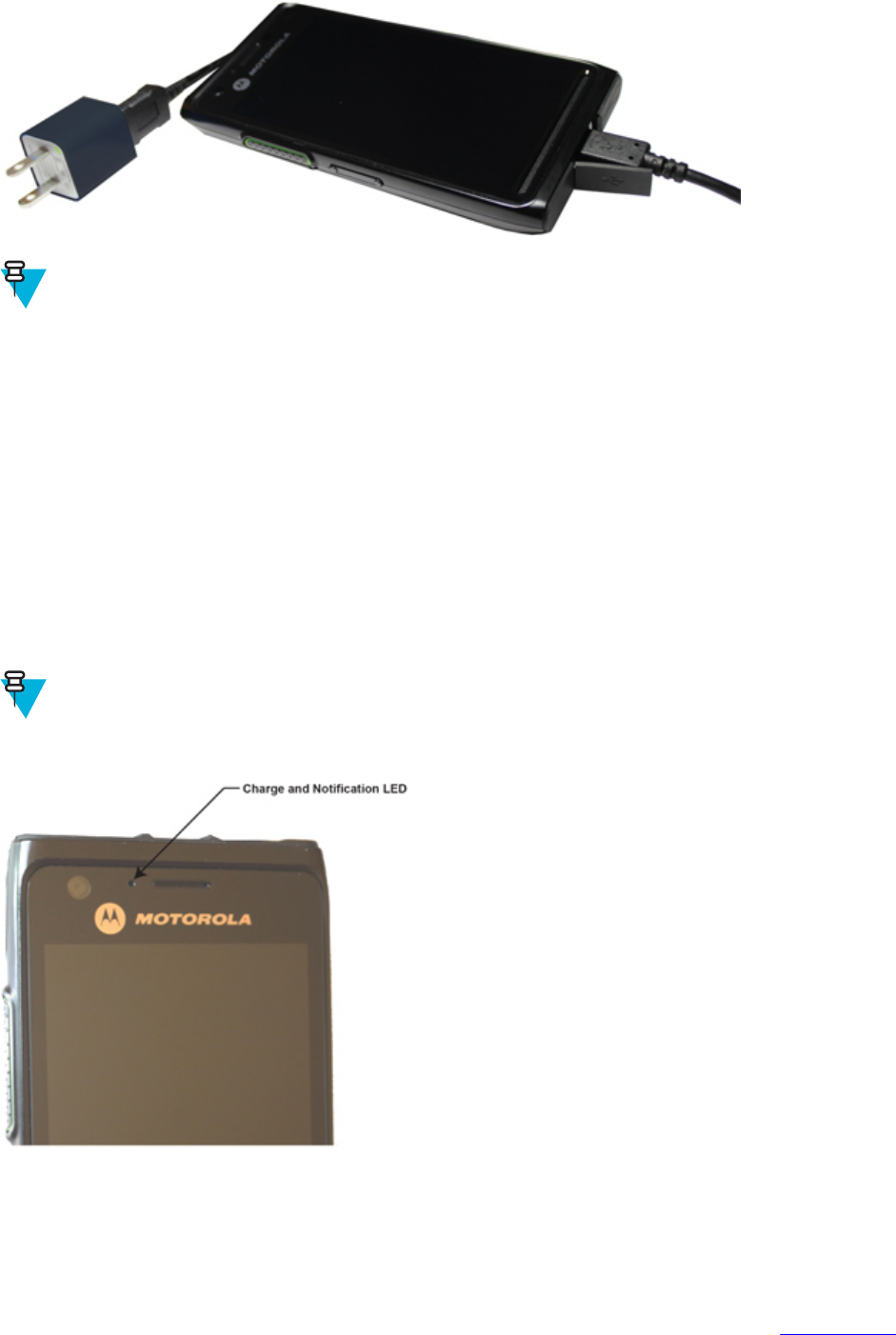
Figure 8: Charging the LEX L10
Note: For detailed description, installation and operation of the LEX L10 accessories, refer the quick start
guides provided with each accessory.
2.4.1 Charging Temperature
Charge batteries in temperatures from 0°C to 40°C (32°F to 104°F). Note that charging is intelligently controlled by
the LEX L10.
To accomplish this, for small periods of time, the LEX L10 alternately enables and disables battery charging to keep
the battery at acceptable temperatures. The LEX L10 LED indicates when charging is disabled due to abnormal
temperatures by fast blinking amber (once every 2 seconds).
2.4.2 Battery Charge Indications
The Charge and Notification LED is located at the top, front of the LEX L10.
Battery charging and power level is also indicated by a battery icon on the status bar.
Note: Before checking the battery charge level, remove the LEX L10 from any power source (cradle or
USB cable connection).
Figure 9: Charge and Notification LED
Getting Started with the LEX L10 | 33
MN001456A01-A | February 2015 | Send Feedback
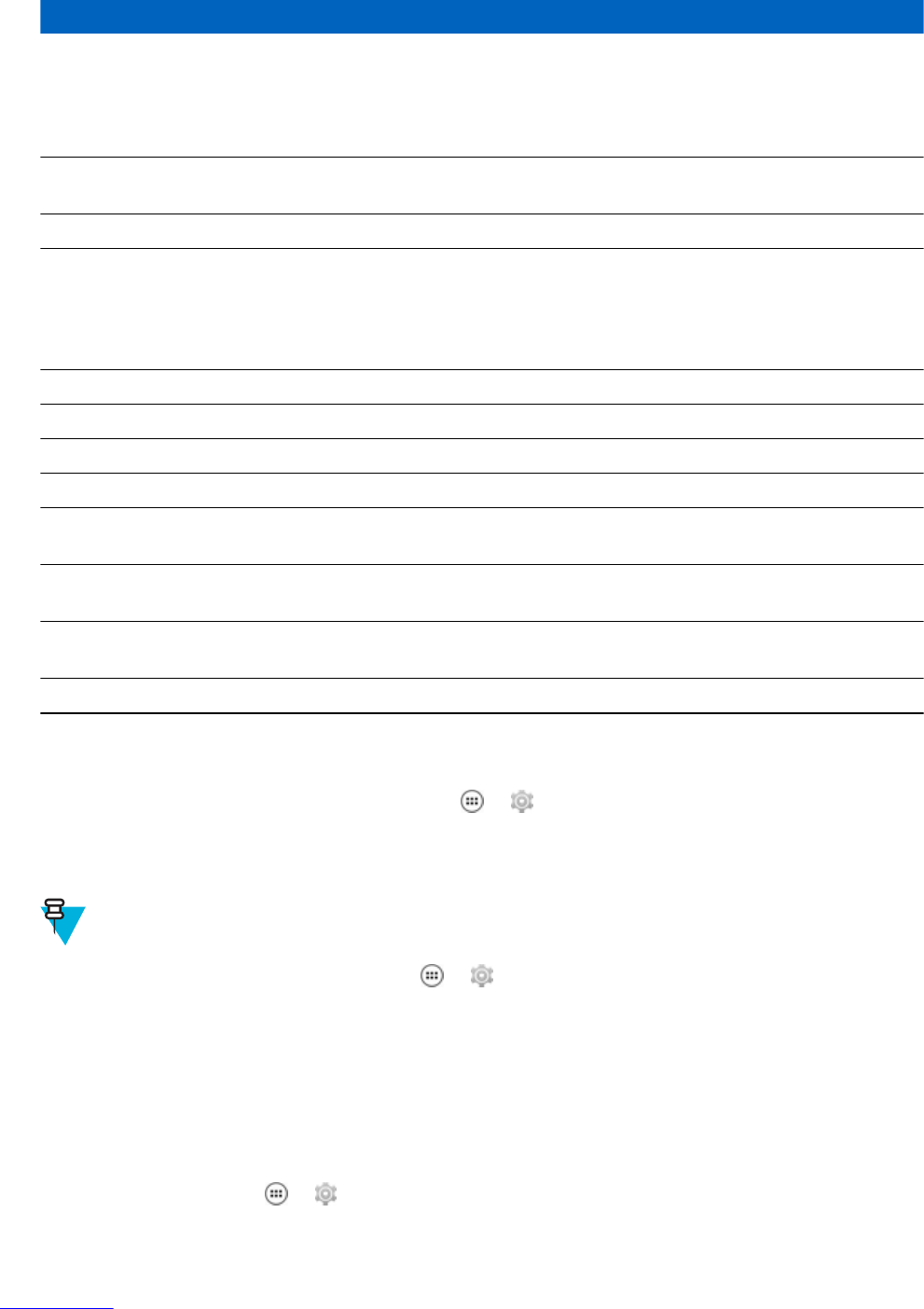
Table 2: Charge and Notification LED — Charging Indications
Status Indications
Off Battery is not charging. Could indicate that:
•LEX L10 is not inserted correctly in the cradle
• LEX L10 is not connected to a USB cable
• Charger or cradle is not powered
Slowly blinking red (once every 2 seconds) Battery power is extremely low (less than 10% power
left).
Solid red LEX L10 is charging.
Fast blinking red (once every 0.5 second) Charging error:
• Temperature is too low or too high
• Charging has gone on too long without completion
(typical charge is four hours)
Slowly blinking green (once every 2 seconds) Battery is greater than 90% charged.
Solid green LEX L10 is completely charged.
Slowly blinking blue (once every 4 seconds) A new notification has been received.
Alternately blinking blue (1 second) and red (3 seconds) LEX L10 is charging and a new notification is received.
Alternately blinking blue (1 second) and green (3 sec-
onds)
LEX L10 is completely charged and a new notification is
received.
Slowly blinking blue and red (every other second) Battery power is extremely low (less than 10% power
left) and a new notification is received..
Alternately blinking blue (1 second) and fast blinking red
(every 0.5 seconds for 3 seconds)
A new notification is received during a charging error.
Slowly blinking amber (once every 2 seconds) LEX L10 is waiting to charge.
When the battery power falls below a predetermined level the icon indicates the status and a battery dialog box
appears indicating the status of the battery. The message displays until the user taps Dismiss.
To monitor battery usage, from the Home screen, touch → → Battery.
2.4.3 Battery Management
Note: Before checking the battery charge level, remove the LEX L10 from any AC power source (cradle or
cable).
To check the charge status of the main battery, tap → → About phone → Status.
Battery status indicates that the battery is discharging and Battery level lists the battery charge (as a percentage of
fully charged).
2.4.3.1 Monitor Battery Usage
The Battery screen lists which applications consume the most battery power. Also use it to turn off applications that
were downloaded if they are consuming too much power.
To monitor battery usage, tap → → Battery.
34 | Getting Started with the LEX L10
Send Feedback | February 2015 | MN001456A01-A
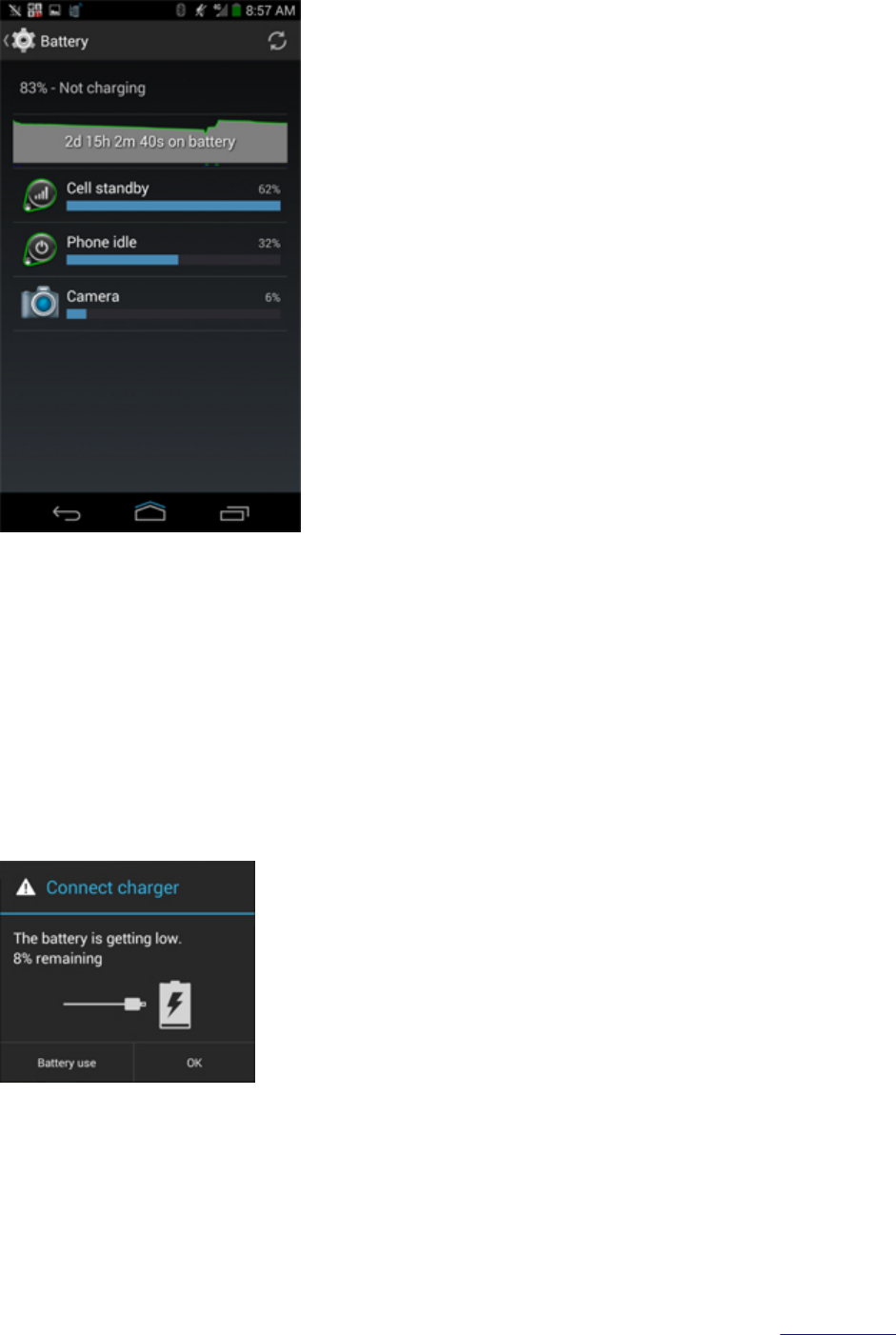
Figure 10: Battery Screen
The Battery screen lists the applications using the battery. The discharge graph at the top of the screen shows the rate
of the battery discharge since last charged (short periods of time when connected to a charger are shown as thin green
lines at the bottom of the chart), and how long it has been running on battery power.
Tap an application in the Battery screen to display details about its power consumption. Different applications
display different information. Some applications include buttons that open screens with settings to adjust power use.
2.4.3.2 Low Battery Notification
When the battery charge level drops below 20%, the LEX L10 displays a notice to connect the LEX L10 to power.
The user should charge the battery using one of the charging accessories.
Figure 11: Low Battery Notification
When the battery charge drops below 10%, the LEX L10 displays a notice to connect the LEX L10 to power. The
user must charge the battery using one of the charging accessories.
When the battery charge drops below 4%, the LEX L10 turns off. Anytime the user then tries to power on the LEX
L10, the following screen appears.
The user must charge the LEX L10 using one of the charging accessories to retain data.
Getting Started with the LEX L10 | 35
MN001456A01-A | February 2015 | Send Feedback

Figure 12: Battery Depleted Screen
The user must charge the LEX L10 using one of the charging accessories.
2.4.3.3 Battery Optimization
Observe the following battery saving tips:
•Leave the LEX L10 inside a cradle connected to AC power at all times when not in use.
• Turn off Bluetooth if not needed.
• Turn off WiFi if not needed.
• Change screen time-out to as short as possible.
• Charge the LEX L10 when not in use.
• Set the screen to Suspend (Sleep) after a short period of non-use.
• Reduce screen brightness.
• Minimize use of applications that keep the LEX L10 from suspending, for example, music or video applications.
2.4.3.3.1 Turning Off the Radio
When and where to use: Use this procedure to turn off the LEX L10 radios.
Procedure:
1Press the Power button until the Quick Settings menu appears.
36 | Getting Started with the LEX L10
Send Feedback | February 2015 | MN001456A01-A
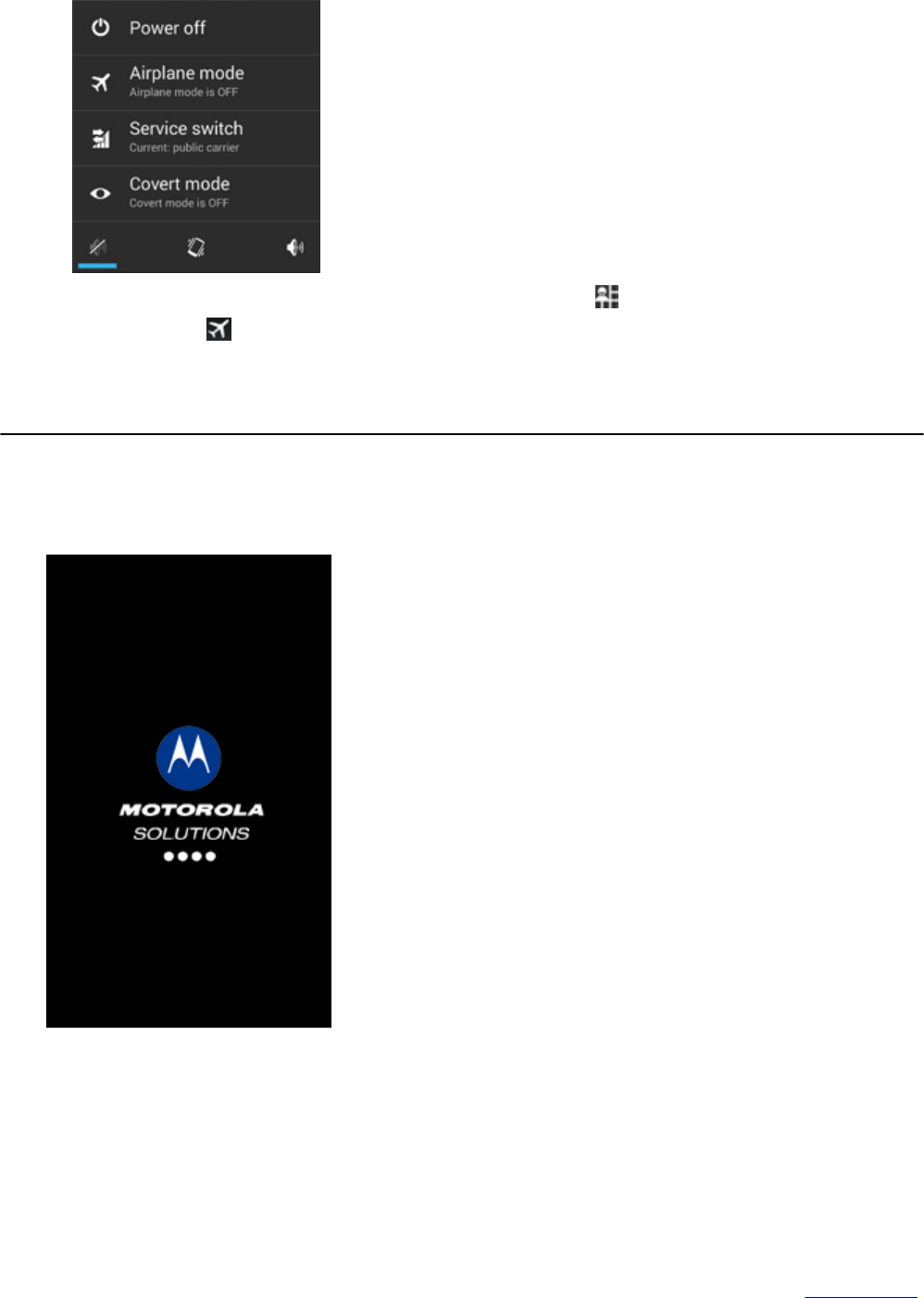
Figure 13: Quick Settings Menu — Airplane Mode
2Tap Airplane mode. Alternately, open the Notification panel and tap → Airplane Mode.
The airplane icon appears in the Status bar indicating that all the radios are off.
2.5 Powering On the LEX L10 for the First Time
Press the Power button to turn on the LEX L10. The LEX L10 boot screen displays as the LEX L10 boots.
Figure 14: LEX L10 Boot Screen
Getting Started with the LEX L10 | 37
MN001456A01-A | February 2015 | Send Feedback
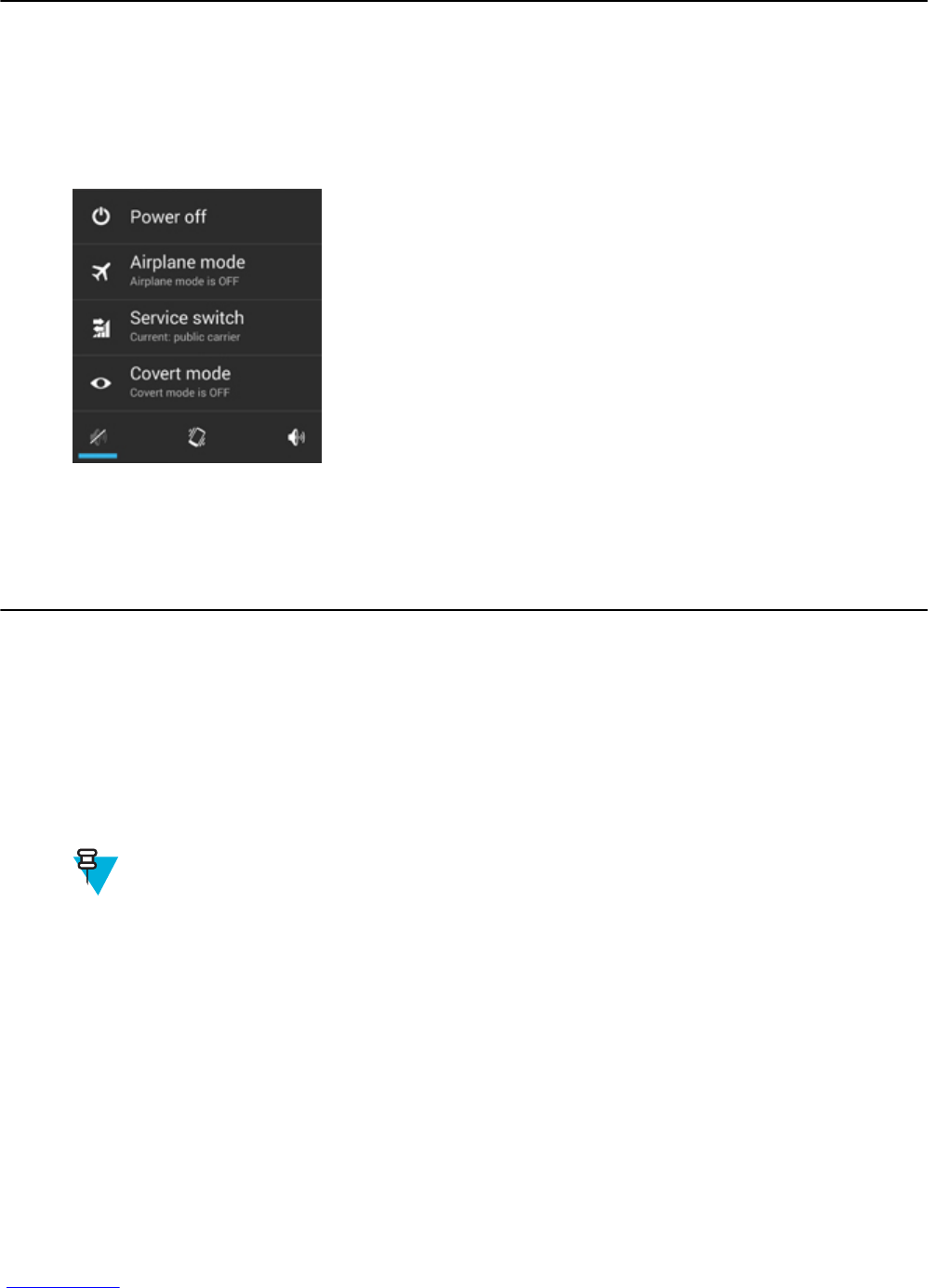
2.6 Powering Off the LEX L10
When and where to use: Use this procedure to power off the LEX L10:
Procedure:
1Press and hold the Power button until the Power Button menu appears.
Figure 15: Selecting Power Off
2Tap Power off and then OK.
Your phone will shut down is displayed on the screen.
2.7 Entering and Exiting the Suspend Mode
Suspend mode (also known as sleep mode) is a low-power mode of operation that helps reduce electrical power
consumption by shutting down parts of the LEX L10 that are not in use. The LEX L10 goes into Suspend mode when
the Power button is pressed or after a time out period of inactivity.
When and where to use: Use this procedure to enter and exit Suspend mode:
Procedure:
1To enter Suspend mode, press and release the Power button.
The LEX L10 screen turns off.
Note: In Suspend mode, the following items continue to operate:
•Power button
•PTT Button (if set to be used)
•Notification LEDs
• Wireless communication.
2To exit Suspend mode, press and release the Power button.
2.7.1 Setting Time Out to Enter Suspend Mode
When and where to use: Use this procedure to set the period of inactivity before suspend mode occurs:
Procedure:
1From the Home screen, tap: Settings → Display → Sleep.
2Check the inactivity duration before Suspend mode becomes active.
38 | Getting Started with the LEX L10
Send Feedback | February 2015 | MN001456A01-A
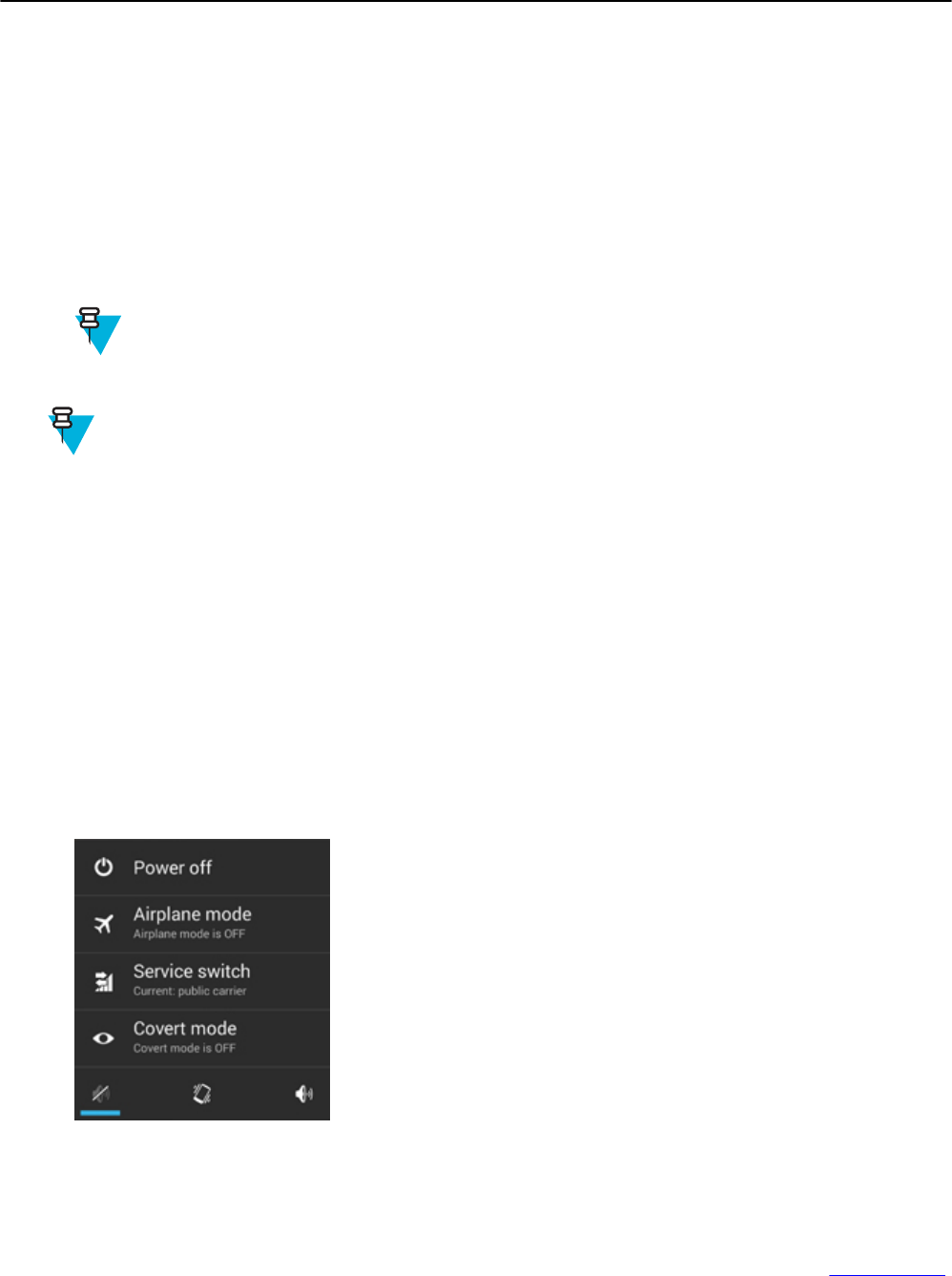
3Press the Home key.
2.8 Covert Mode
Covert Mode gives to you the ability to shut down all visible and audible LEX L10 alerts and notifications. This
feature makes the LEX L10 effectively unnoticeable even in a silent and dark environment.
In Covert Mode, the following sounds, visual indications, and keys of the LEX L10 are disabled
•Display brightness
• Touchscreen
• Keylight
• LED indications
• Vibration
• Speaker audio
Note: In Covert Mode, sound is routed to a Bluetooth headset, if connected or sound is routed to a
wired earpiece, if connected. Alternatively, sound is routed to the LEX L10 earpiece.
• Tone indications
Note: In Covert Mode, the following features remain active:
•Power button
•PTT button
•Volume button
•Four front panel keys
•Camera button
• Audio or tone indications are available using a wired headset( through headset port) or a Bluetooth
headset
2.8.1 Turning On Covert Mode
Procedure:
1Press and hold the Power button for at least two seconds.
The following Power Button menu displays:
Figure 16: Power Button Menu
2Tap Covert mode.
The LEX L10 screen goes blank.
Getting Started with the LEX L10 | 39
MN001456A01-A | February 2015 | Send Feedback
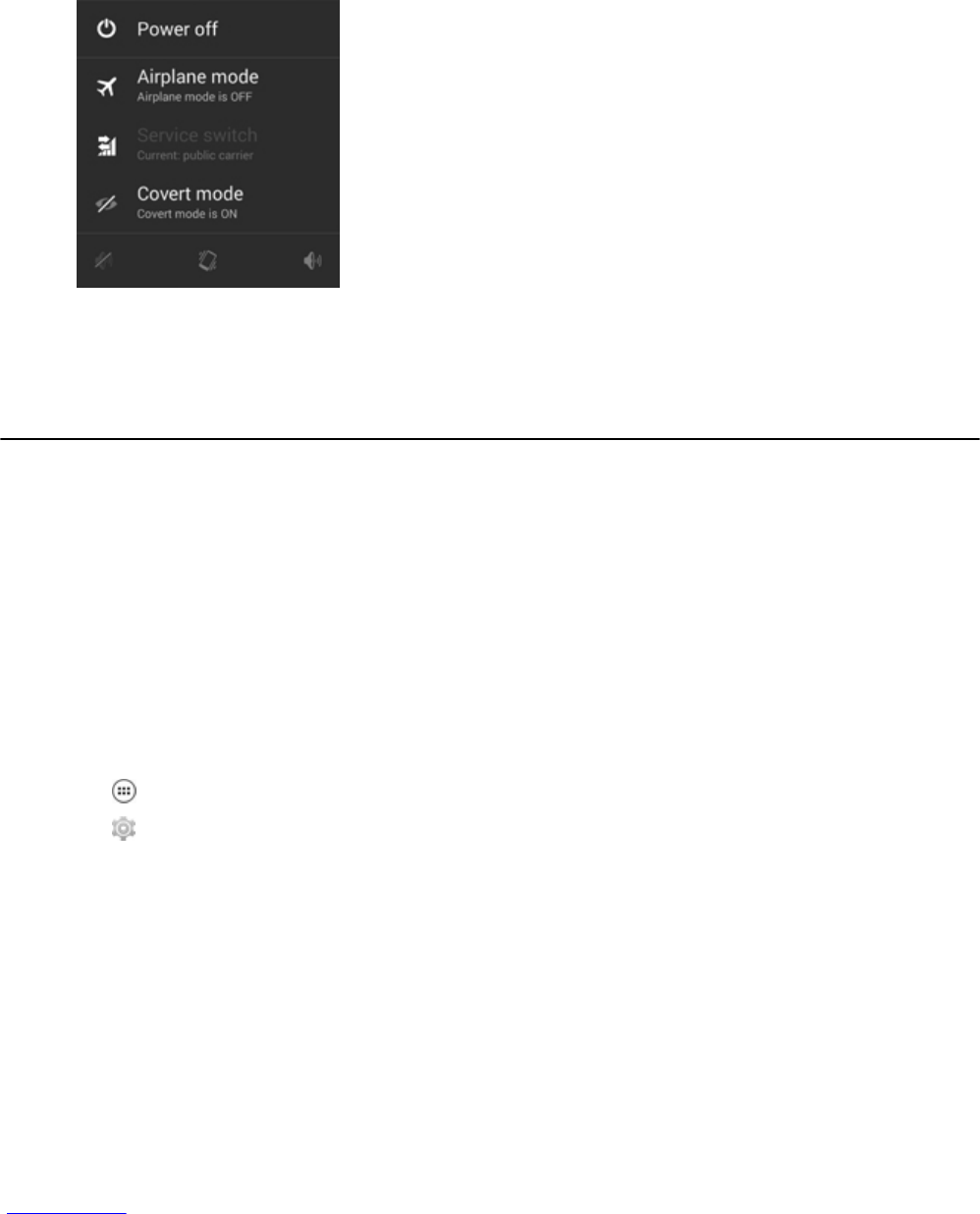
2.8.2 Turning Off Covert Mode
Procedure:
1Press and hold the Power button for at least two seconds.
The following Power Button menu displays:
Figure 17: Power Button Menu
2Tap Covert mode.
The Home screen appears.
2.9 Locking the LEX L10
The lock screen automatically displays after predefined time out to prevent unauthorized people using the LEX L10.
The LEX L10 does not lock at the same time as it is suspended. The LEX L10 can also be locked manually by the
user to disable unwanted key presses or screen tap or to keep data secured. To manually lock the LEX L10, press and
release the Power button. When the LEX L10 is locked and cellular network signal is available, phone calls,
notification of new messages, missed calls and upcoming appointments still can be received. The LEX L10 locks after
a specified time.
2.9.1 Selecting a Locking Option
When and where to use: Security dictates a specific level of locking for the LEX L10.
Procedure:
1Tap .
2Tap .
3Tap Security.
4Tap Screen lock.
The following options are displayed:
•None.
•Slide — User slides the lock to unlock the device.
•Pattern — User must replicate a specified pattern to unlock the device.
•PIN — User must enter a pin to unlock the device.
•Password — User must enter a specified password to unlock the device.
5Select an option.
40 | Getting Started with the LEX L10
Send Feedback | February 2015 | MN001456A01-A

If None or Slide is selected, the Security screen is re-displayed. If Pattern, PIN, or Password is selected, a
pattern, pin or password must be specified. Then, the Security screen is re-displayed.
The LEX L10 is now set to lock.
Postrequisites: Specify a pattern as described in Specifying a Pattern on page 41 Specify a pin, or password as
described in Specifying a PIN or Password on page 41. Then, specify a timeout value as described in Setting the
Timeout for Locking the LEX L10 on page 41.
2.9.1.1 Specifying a Pattern
Prerequisites: The Pattern option has been selected for Screen lock.
Procedure:
1Tap .
2Tap .
3Tap Security lock.
4Select Pattern.
5Using a finger, draw a pattern to unlock your LEX L10
6Tap Continue.
7Draw the same pattern again.
8Tap Confirm.
The Security screen is re-displayed.
A pattern must be entered to unlock the LEX L10.
2.9.1.2 Specifying a PIN or Password
Prerequisites: The PIN or Password option has been selected for Screen lock.
Procedure:
1Tap .
2Tap .
3Tap Security lock.
4Select PIN or Password.
5Enter a pin or password.
6Tap Continue.
7Enter the pin or password again.
8Tap OK.
The Security screen is re-displayed.
A pin or password must be entered to unlock the LEX L10.
2.9.1.3 Setting the Timeout for Locking the LEX L10
Select a timeout value to lock the LEX L10.
Prerequisites: Screen lock must be set to Pattern, PIN, or Password.
Procedure:
1Tap .
Getting Started with the LEX L10 | 41
MN001456A01-A | February 2015 | Send Feedback

2Tap .
3Tap Security.
4Tap Automatically lock.
A list of timeout values is displayed.
5Select a timeout value from the list.
6The Security screen is re-displayed.
2.9.2 Unlocking the LEX L10
When the LEX L10 is not used for a period of time and the user tries to access the device, the Lock screen displays.
Depending on which Screen lock option is active, the user does one of the following:
•Nothing
• Slide the slider to the unlock position
• Enter a pattern, pin, or password.
2.9.2.1 Unlocking the LEX L10 Using a Pattern
When and where to use: Use this procedure to unlock the screen with a pattern.
Procedure:
1Press and release the Power button.
2Using a finger, draw the specified pattern on the screen.
Once the correct pattern is drawn, the LEX L10 unlocks.
2.9.2.2 Unlocking the LEX L10 Using a PIN or Password
When and where to use: Use this procedure to unlock the screen with a pin or password.
Procedure:
1Press and release the Power button.
2In the text field, enter your pin or password.
3Tap Done.
The LEX L10 unlocks and the Home screen is shown.
2.9.3 Calling Emergency from a Locked LEX L10
You can make an emergency call even when the LEX L10 is locked and you do not remember the PIN.
When and where to use: Use this procedure to make an emergency call when the LEX L10 is locked and you do not
remember the PIN:
Procedure:
1Tap EMERGENCY CALL at the bottom of the lock screen.
The Emergency Dialer screen displays.
2Enter the emergency number.
3
Tap .
42 | Getting Started with the LEX L10
Send Feedback | February 2015 | MN001456A01-A

2.10 Setting the Date and Time
When the LEX L10 is connected to cellular network, date and time are automatically synchronized.
When and where to use: Perform this procedure to manually set the date and time:
Procedure:
1Tap .
2Tap .
3Tap Date & time.
4Tap Automatic date & time to disable automatic date and time synchronization.
5Tap Automatic time zone to disable automatic time zone synchronization.
6Tap Set date.
7Slide your finger up and down to select the month, date and year.
8Tap Done.
9Tap Set time.
10 Slide your finger up and down to select the hour, minutes and part of the day.
11 Tap Done.
12 Tap Select time zone.
13 Tap to select a time zone from the list.
14 Tap .
2.11 Setting the Display
The following LEX L10 display features can be customize:
•Brightness — Set the brightness of the display.
• Auto-rotate — Set the content to rotate automatically when the LEX L10 is turned.
• Sleep — Set the length of time the LEX L10 waits before turning off the display’s backlight.
• Daydream — Set the LEX L10 to launch a screensaver when the LEX L10 is docked inside a cradle or charging.
• Font size — Change the font size for display text.
• Cast screen —
2.11.1 Setting Screen Brightness
To set the screen brightness:
Procedure:
1Tap .
2Tap .
3Tap Display.
4Tap Brightness.
5Tap Automatic brightness to set the device to automatically adjust the brightness using the built-in light sensor.
Use the slider to set a brightness level.
6Tap .
Getting Started with the LEX L10 | 43
MN001456A01-A | February 2015 | Send Feedback

2.11.2 Setting Screen Rotation
Screen rotation enables the LEX L10 to automatically determine the orientation of the screen to portrait or landscape.
When and where to use: Use this procedure to set screen rotation:
Procedure:
1 Note: Some applications may not support screen rotation.
Tap .
2Tap .
3Tap Display.
4Check Auto-rotate screen to automatically switch orientation when the LEX L10 is rotated.
Note: The Home screen does not rotate.
5Tap .
2.11.3 Setting Up Sleep Mode
When and where to use: Use this procedure to set up sleep mode (screen time-out):
Procedure:
1Tap .
2Tap .
3Tap Display.
4Tap Sleep.
5Select one of the sleep values:
•15 seconds
• 30 seconds (default)
• 1 minutes
• 2 minutes
• 5 minutes
• 10 minutes
• 30 minutes
6Tap .
2.11.4 Setting Up Daydream
The Daydream application behaves as a screensaver when the LEX L10 is docked inside a cradle and/or in sleep
mode.
Procedure:
1From the Home screen, tap .
2Tap .
3Tap Display.
4Tap Daydream.
5Select from Clock, Colors, Photo Frame or Photo Table.
44 | Getting Started with the LEX L10
Send Feedback | February 2015 | MN001456A01-A

6Tap to configure the item selected in the previous step.
7Tap WHEN TO DAYDREAM and select when you would like the feature to be active (While docked, while
charging or either).
8Tap START NOW to preview and confirm your selection.
9Tap .
2.11.5 Setting the Font Size
When and where to use: Use this procedure to change the font size.
Procedure:
1Tap .
2Tap .
3Tap Display.
4Tap Font size.
5Select one of the font size values:
•Small
• Normal (default)
• Large
• Huge
6Press .
2.12 General Sound Setting
Use the Sounds settings to configure media and alarm volumes. On the Home screen, tap → → Sound.
Alternately, open the Notification panel and tap → Settings → Sound.
Getting Started with the LEX L10 | 45
MN001456A01-A | February 2015 | Send Feedback
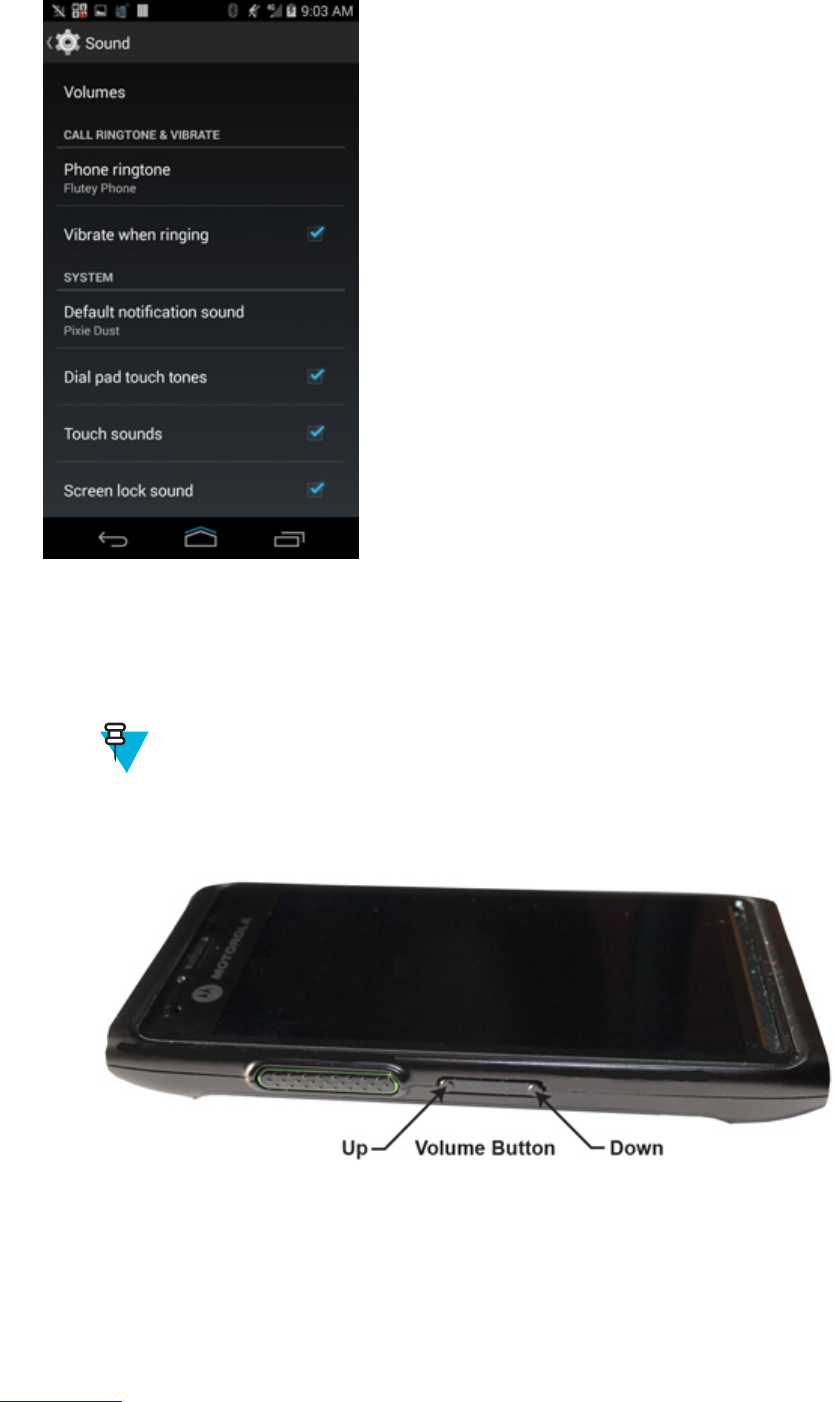
Figure 18: Sound Screen
•Volumes – Use to change the volume of media, ringtones, notifications, and alarms.
•Call Ringtone and Vibrate
-Phone ringtone — Tap to select a ringtone to sound when an incoming call is received.
-Vibrate when ringing — Check to make the device vibrate when a call is received.
Note: Setting volume can also be done by pressing the Volume button, up and down, during a call,
or while playing music or a video. When not on a call, pressing the Volume button all the way down
to set the LEX L10 to vibrate. During an in-coming call, pressing the Volume button up and down
changes the ringtone volume.
Figure 19: Volume Button
•System
-Default notification sound — Tap to select a sound to play for all system notifications.
-Dial pad tap tones — Check to play a sound when a LEX L10 key is touched.
-Touch sounds — Check to play a sound when making screen selections.
46 | Getting Started with the LEX L10
Send Feedback | February 2015 | MN001456A01-A
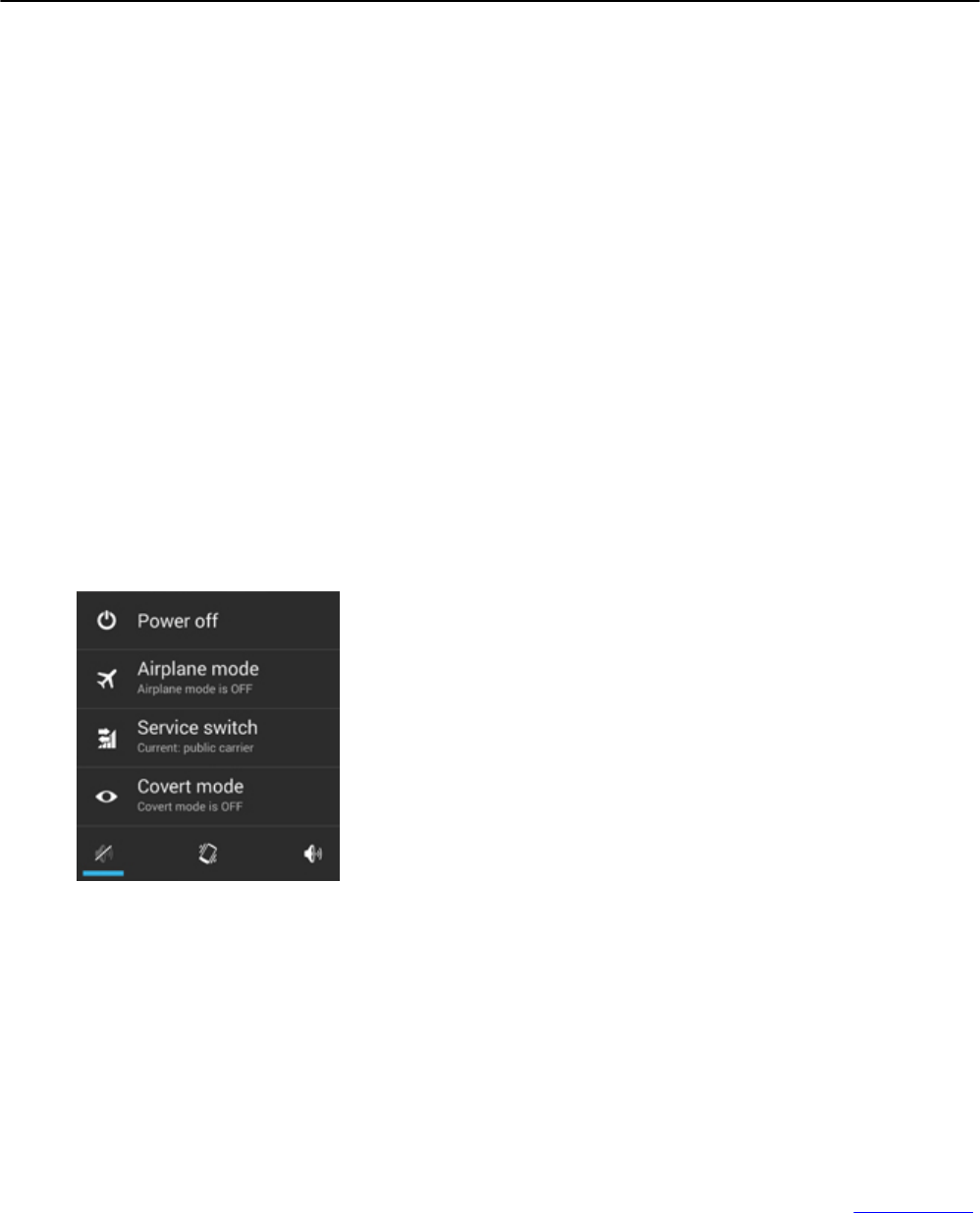
-Screen lock sounds — Check to play a sound when locking and unlocking the screen.
-Vibrate on tap — Check to have the device vibrate when touching soft keys and on certain screen
interactions.
-Emergency tone — Select and check Alert to play a tone or Vibrate when an emergency notification is
received. Select Off to disable emergency notification.
2.13 Public and Private Carrier Modes
The LEX L10 is capable of operating on the following bands:
Private Mode
•LTE B14
Public Mode
• LTE B4 and B13
• CDMA EVDO Rev. A (Band 0, Band 1) 3G, 1X
The user can manually switch modes to operate on the Private Mode LTE network or the Public Carrier Mode.
2.13.1 Switching Modes Using the Power Button
Prerequisites: The LEX L10 is equipped with Private and Public enabled SIM cards.
When and where to use: You may need to switch between private and public network modes when you want to use
capabilities provided by one network that are not provided by the other. For example, if the phone is in private mode,
switch to public mode before you can dial numbers that are not included in the private network.
Procedure:
1Press and hold the Power button until a menu appears.
Figure 20: Service Switch
2Tap Service switch.
The current carrier mode is indicated under the Service switch option.
3Tap Reboot now.
The LEX L10 powers off and restarts in the optional carrier mode.
2.13.2 Switching Modes Using the Settings App
Prerequisites: The LEX L10 is equipped with Private and Public enabled SIM cards.
Getting Started with the LEX L10 | 47
MN001456A01-A | February 2015 | Send Feedback

When and where to use: You may need to switch between private and public network modes when you want to use
capabilities provided by one network that are not provided by the other. For example, if the phone is in private mode,
switch to public mode before you can dial numbers that are not included in the private network.
Procedure:
1On the Home screen, tap .
2Tap .
3Tap More... .
4Tap Mobile networks.
5Tap Select network.
6Select Public or Private.
A confirmation popup is displayed.
Figure 21: Switch Networks Confirmation Popup
7Tap Switch.
48 | Getting Started with the LEX L10
Send Feedback | February 2015 | MN001456A01-A

Chapter
3
Using the LEX L10
This chapter explains the indicators, buttons, status icons, and controls on the LEX L10. This chapter also provides
basic instructions for using the device.
3.1 Using the Touchscreen
Use the multi-tap sensitive screen to operate the device.
Table 3: Using the Touchscreen
Action Result
Tap Tap to:
•select items on the screen
• type letters and symbols using the on-screen key-
board
• press on-screen buttons
Tap and Hold Tap and hold:
• an item on the Home screen to move it to a new loca-
tion or to the trash
• an item in Apps to create a shortcut on the Home
screen
• the Home screen to open a menu for customizing the
Home screen
• an empty area on the Home screen until the menu ap-
pears
Drag Tap and hold an item for a moment and then move finger
on the screen until reaching the new position.
Swipe Move finger up and down or left and right on the screen
to:
• unlock the screen
• view additional Home screens
• view additional application icons in the Launcher
window
• view more information on an application’s screen
Double-tap Tap twice on a web page, map, or other screen to zoom
in and out.
Table continued…
49 | Using the LEX L10
MN001456A01-A | February 2015 | Send Feedback
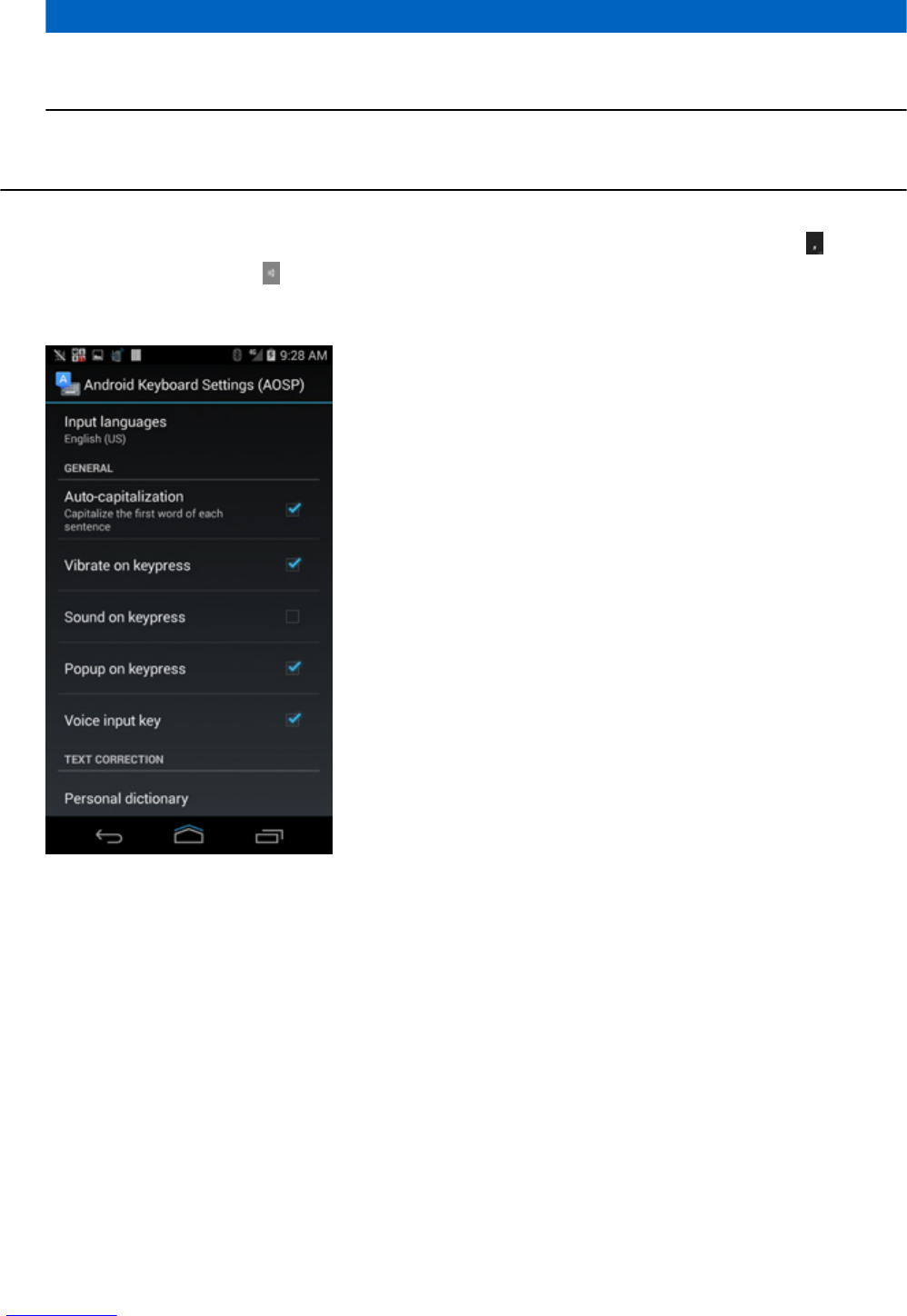
Action Result
Pinch In some applications, zoom in and out by placing two
fingers on the screen and pinching them together (to
zoom out) or spreading them apart (to zoom in).
3.2 Using the On-Screen Keyboard
Use the on-screen keyboard to enter text in a text field. To configure the keyboard settings, tap and hold (comma
key) > slide your finger up to and then select Android Keyboard Settings.
Figure 22: Android Keyboard Settings
A description of the settings can be found in Android Keyboard Settings on page 51.
Editing Text
Edit entered text and use menu commands to cut, copy, and paste text within or across applications. Some
applications do not support editing some or all of the text they display; others may offer their own way to select text.
Entering Numbers, Symbols and Special Characters
To enter numbers and symbols:
• Without switching to the Numbers or Symbols keyboard, tap and hold one of the top-row keys until a menu
appears then select a number. Keys with alternate characters display an ellipsis ( ... ) below the character.
• Tap the Shift key to enter one capital letter.
• Tap and hold the Shift key until it changes state (Shift key is underlined) to enter two or more capital letters. Tap
Shift key again to return to the lowercase keyboard.
50 | Using the LEX L10
Send Feedback | February 2015 | MN001456A01-A

• Tap to switch to the numbers and symbols keyboard.
•Tap the key on the numbers and symbols keyboard to view additional symbols.
To enter special characters, tap and hold a number or symbol key to open a menu of additional symbols.
• A larger version of the key displays briefly over the keyboard.
• Keys with alternate characters display an ellipsis ( ... ) below the character.
3.2.1 Android Keyboard Settings
Table 4: Android Keyboard Settings
Setting Description
GENERAL
Input Languages Selects the language used in the keyboard.
Auto-capitalization Automatically capitalize the first letter after a period.
Vibrate on keypress Vibrates the LEX L10 when a key is pressed.
Sound on keypress Makes a sound on the LEX L10 when a key is pressed.
Popup on keypress Pops up a duplicate of the key pressed.
Voice input key Allows you to speak the name of the key to input a key.
TEXT CORRECTION
Personal Dictionary Uses your personal dictionary when correcting words.
Add-on dictionaries Allows you to add additional dictionaries to correct
words.
Block offensive words Blocks offensive words from being suggested to correct
words.
Auto-correction Sets the level of auto-correction to: Off, Modest, Ag-
gressive, or Very aggressive.
Show correction suggestions Displays a list of corrections so that you can select make
a selection.
OTHER OPTIONS
Next word suggestions Anticipates the next word that you want to type based on
the last word typed.
Advanced settings The Advanced settings should only be set by experts.
3.3 Motorola Solutions Home Experience (MHx)
The Motorola Solutions Home Experience (MHx) is the engine that drives the user interface of the LEX L10.
Specifically, MHx provides an unique experience for customizing the LEX L10 Home screen.
3.3.1 Home Screen
The Home screen displays after the LEX L10 turns on and unlocks.
Using the LEX L10 | 51
MN001456A01-A | February 2015 | Send Feedback
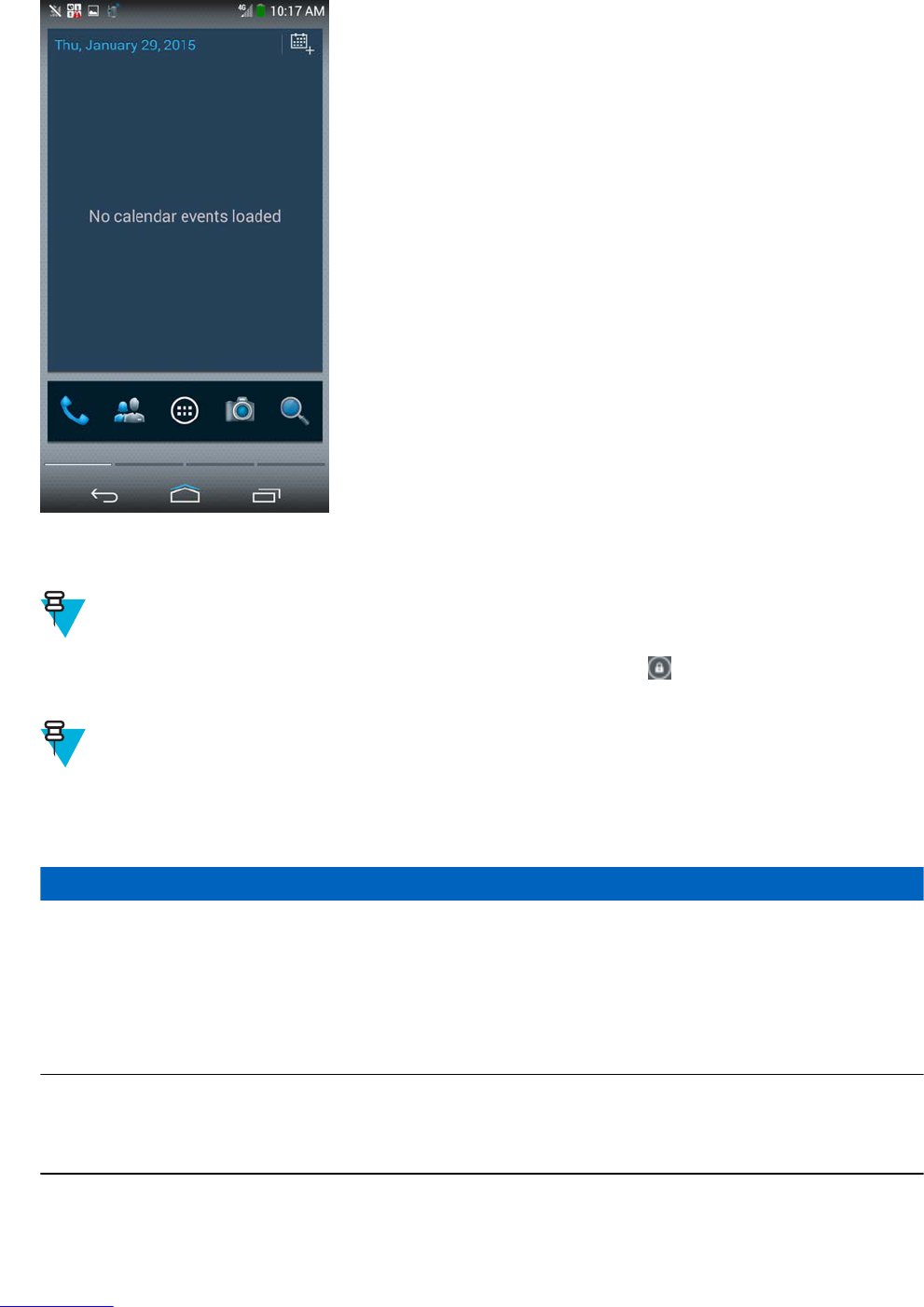
Figure 23: Default Home Screen
The Home screen is completely customizable depending on the specifications for your agency. Each organization
may have a different Home screen. Contact your technical support for more information.
Note: When CRYPTR Card is used, the LEX L10 requires setting a password after initial boot and entering
this password whenever the LEX L10 restarts.
After a suspend or screen time-out, the screen displays with the lock slider. Slide in any direction towards the
outside of the screen to unlock the screen.
Note: If you have changed the Screen lock option, depending on the selected option, you will have to enter
a pattern, pin, or password to unlock the LEX L10.
The Home Screen Items table lists some of the items that may appear on the Home screen.
Table 5: Home Screen Items
Item Description
Core Applications Widget Provides shortcuts to:
•Phone Dialer
• Contacts
• Application Launcher
• Camera
• Search Feature
Other Possible Widgets Provides access to application features thru:
• Calendar Widget
• eMail Widget
Table continued…
52 | Using the LEX L10
Send Feedback | February 2015 | MN001456A01-A
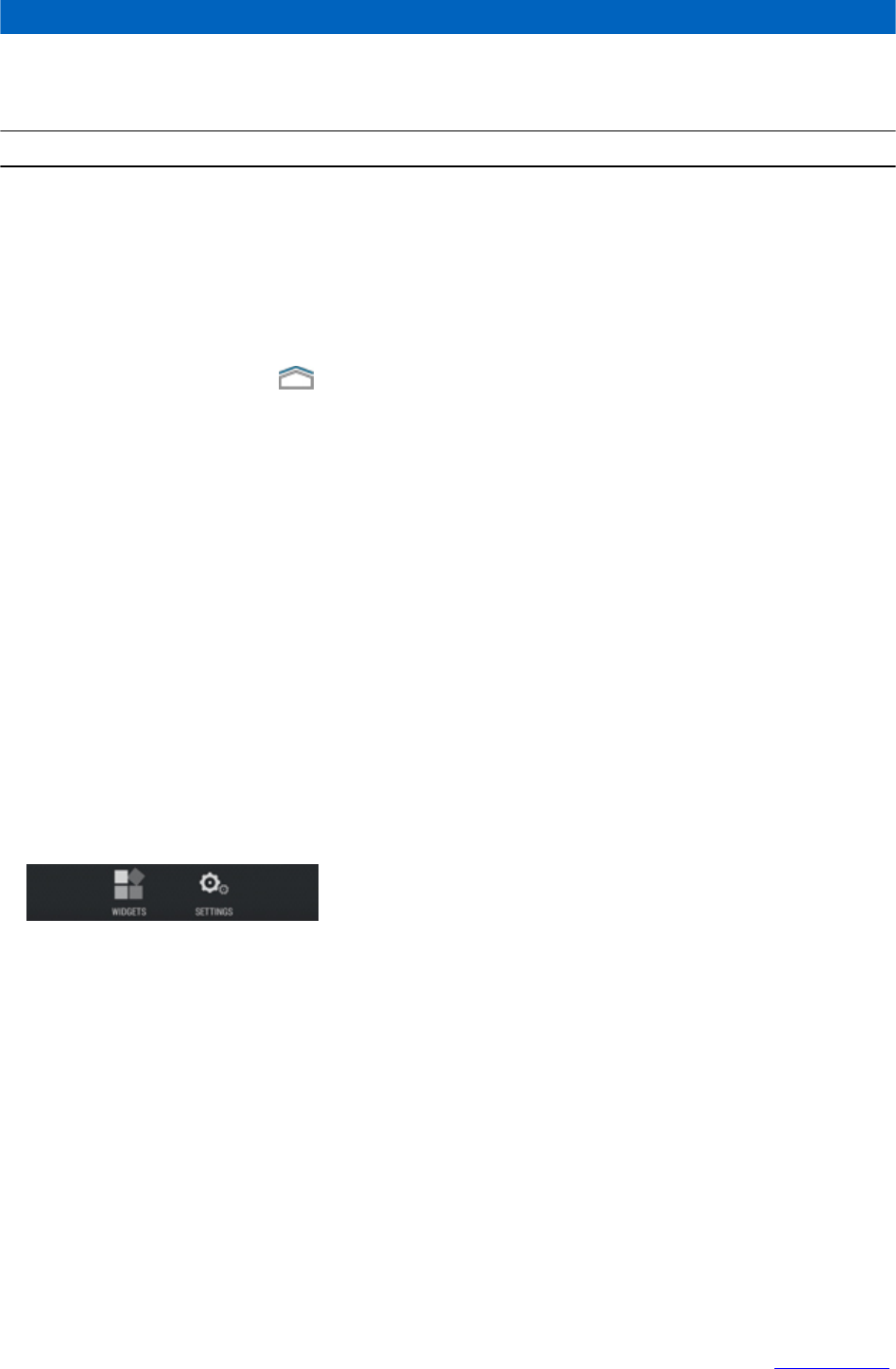
Item Description
• Messaging Widget
•Search Widget
• My Apps Widget
Home Screen Overlay Provides quick access to core functions.
The Home screen provides four screens for placement of widgets and shortcuts. Swipe the screen left or right to view
the additional screens.
3.3.1.1 Home Screen Overlay
The Home screen overlay provides quick access to core functions. Each organization may have a different Home
screen overlay. Contact your technical support for more information.
Swipe the Home screen up from the icon to access the Home screen overlay.
3.3.2 Customizing the Home Screen
The Home screen contains panels that can be accessed by swiping the page to the left or right. Panels provide more
space for adding widgets to the Home screen and can be customized by the user.
This section describes how to:
•Add Widgets
• Move Widgets
• Remove Widgets
• Configure Home Screen Settings
3.3.2.1 Adding Widgets
When and where to use: You want to add one or more widgets to your Home screen.
Procedure:
1Swipe the Home screen left or right to locate the panel that you want to add a widget to.
2Touch and hold a gray area of the panel until you see the following icons near the bottom of the screen:
3Tap the Widgets icon to reveal the widgets.
Using the LEX L10 | 53
MN001456A01-A | February 2015 | Send Feedback

Figure 24: Widgets Screen
4The Widgets screen contains five panels. Swipe the Widgets screen left or right to locate the widget that you want
to add.
5Touch and hold the widget; then, slide the widget down the screen and place it in the current panel.
If there is not enough room in the panel or you want to place the widget in a new panel, slide the widget to the
right of the screen until a blank panel appears. Then, place the widget in the new panel.
54 | Using the LEX L10
Send Feedback | February 2015 | MN001456A01-A
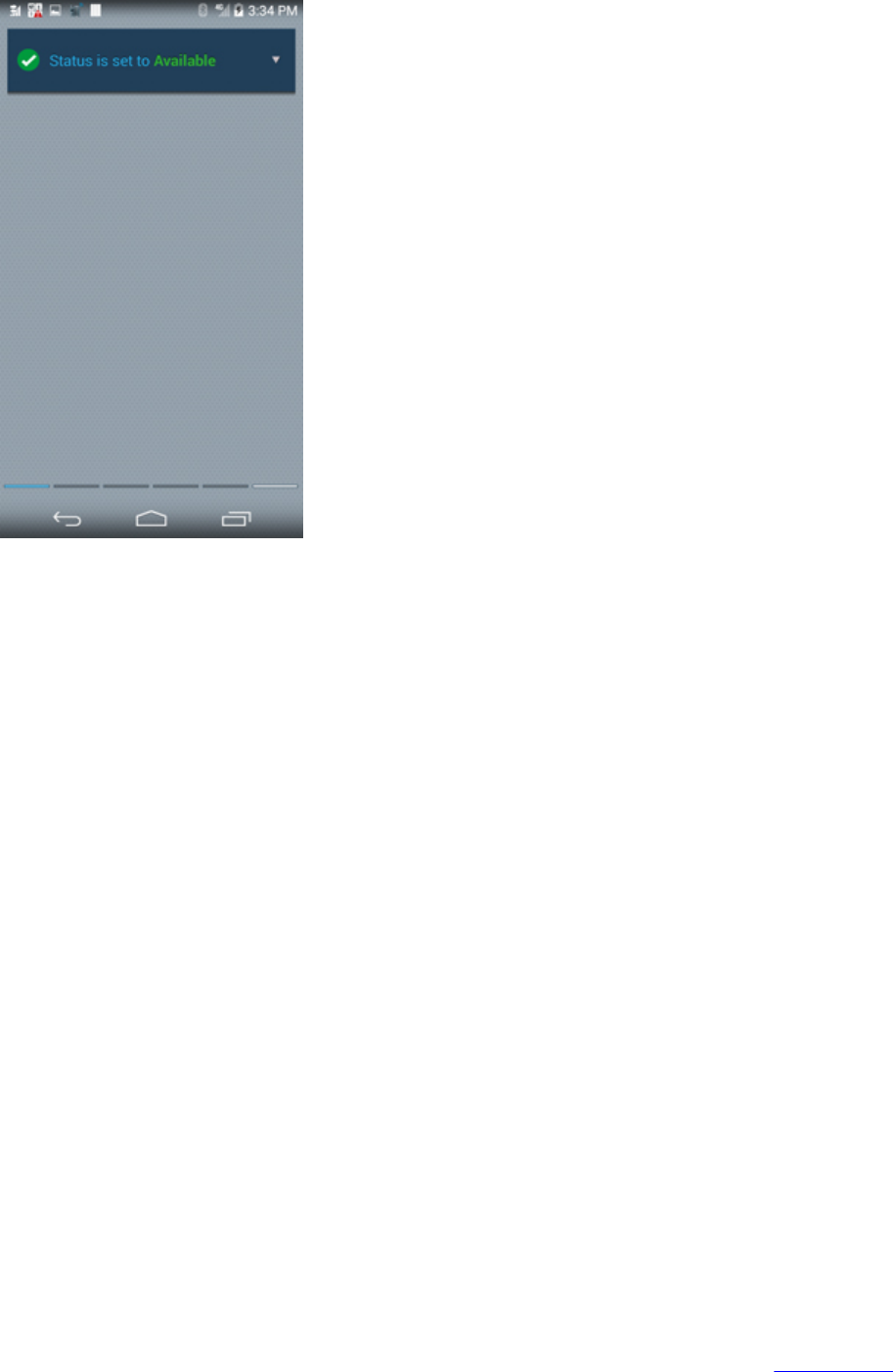
Figure 25: Example of a Widget Added to New Panel
3.3.2.1.1 Adding Shortcuts to the My Apps Widget
Prerequisites: A My Apps widget has been added to the Home screen.
When and where to use: An empty My Apps needs shortcuts to be functional.
Procedure:
1Add a My Apps widget as described under Adding Widgets.
An empty My Apps widget displays.
Using the LEX L10 | 55
MN001456A01-A | February 2015 | Send Feedback
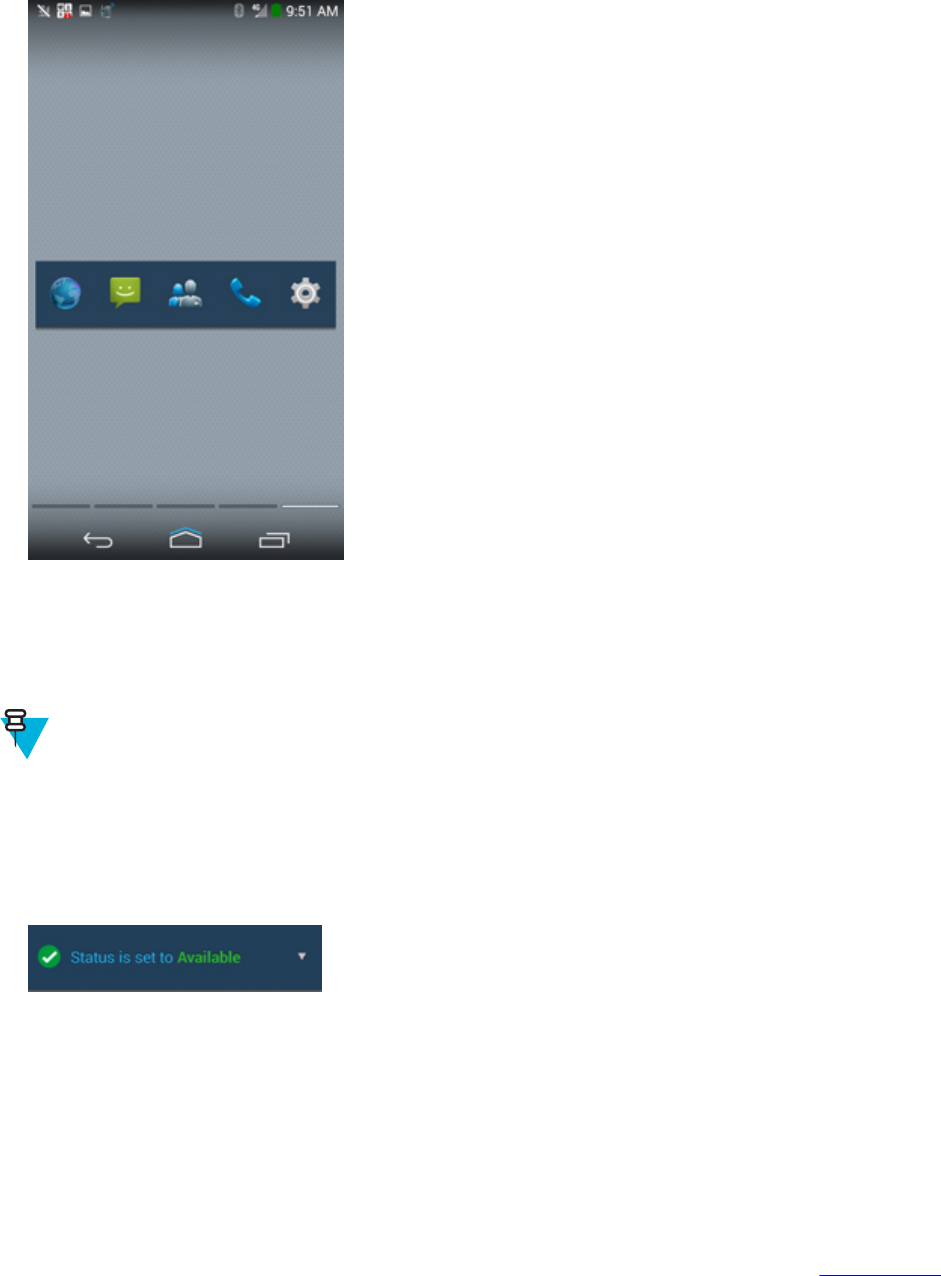
3Select each shortcut that you want to add to the My Apps widget.
You may add up to five shortcuts.
4Tap Done.
Shortcuts are added to the My Apps widget.
Figure 28: My Apps Widget with Shortcuts Added
3.3.2.1.2 Changing My Status
Perform this procedure to set the status of the LEX L10 user to either Available or Busy. No matter what the status is
set to, calls are still received. This status is shown to other users.
Note: The My Status widget must be added before it is visible in the Home screen.
Procedure:
1Tap the My Status dropdown menu.
Figure 29: My Status Widget
The My Status options menu is displayed.
Using the LEX L10 | 57
MN001456A01-A | February 2015 | Send Feedback

Figure 30: Available/Busy Status Selection
2Tap Available or Busy.
Status is immediately set to the selected state.
3.3.2.2 Moving Widgets
When and where to use: There is a need to move a widget to another location.
Procedure:
1Navigate to the Home screen panel where the widget is located.
2Touch and hold the widget; then, slide the widget to a new location.
If you want to move the widget to another panel, slide the widget left or right to that panel; then slide the widget to
a location in the panel.
3.3.2.3 Removing Widgets
When and where to use: There is a need to remove a widget from a Home screen panel.
Procedure:
1Slide the Home screen panel until you locate the panel that holds the widget that you want to remove.
2Touch and hold the widget while sliding it down to the bottom of the panel.
X Remove appears near the bottom of the screen.
3Slide the widget to X Remove until the widget turns red; then, release the widget.
The widget is removed from the panel.
Note: The widget is only removed from the panel. It is not deleted from the LEX L10.
58 | Using the LEX L10
Send Feedback | February 2015 | MN001456A01-A
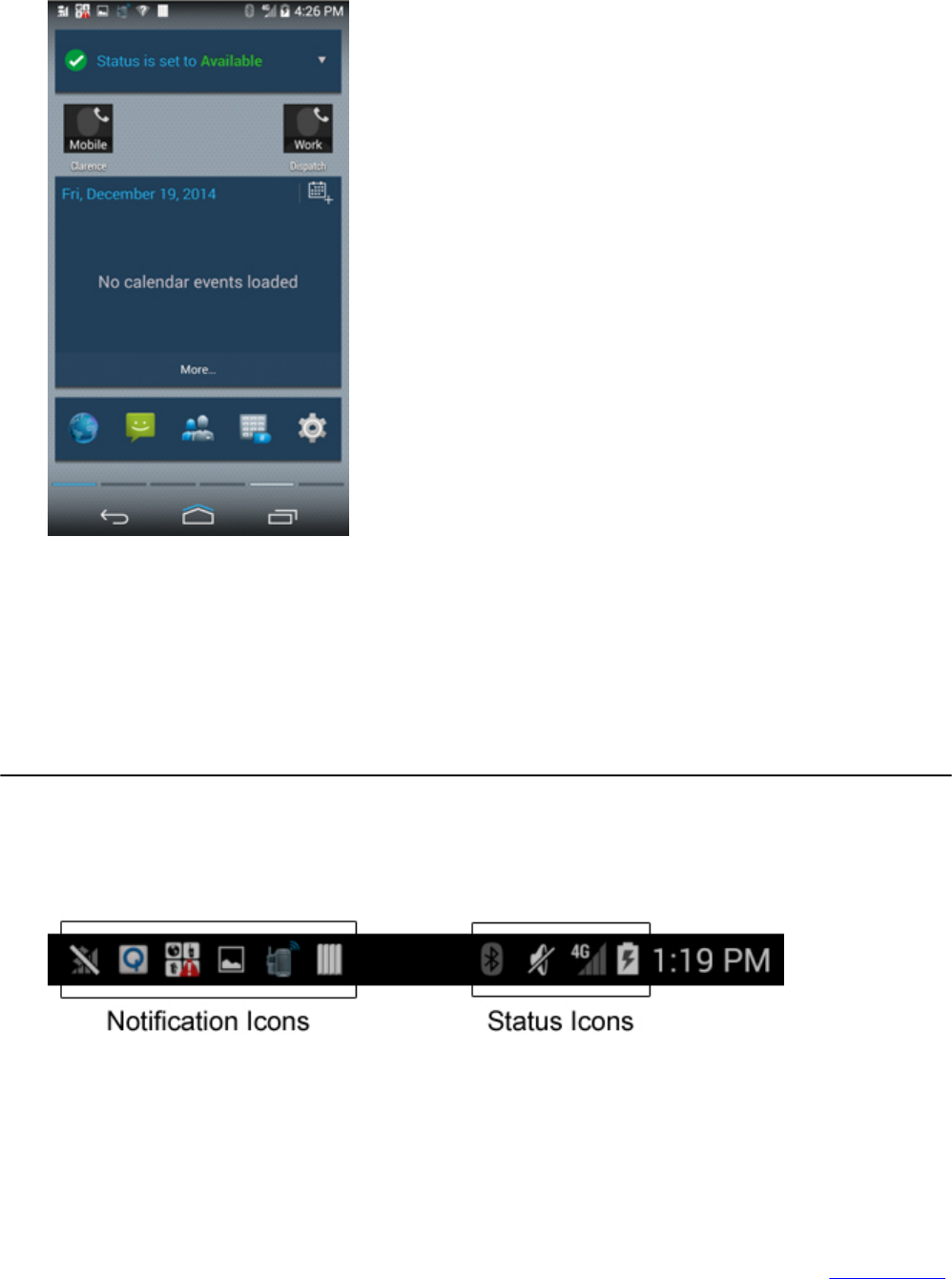
3.3.2.4 Example of a Customized Home Screen Panel
Figure 31: Example of a Customized Home Screen Panel
The above figure shows a customized Home screen panel with the following widgets:
•My Status
•Two Direct dial widgets
•Calendar
•My Apps
3.4 Status Bar
The Status bar displays the time, notification icons (left side) and status icons (right side).
Figure 32: Status Bar
If there are more notifications than can fit in the Status bar, it is indicate that more notifications exist. Open the
Notifications panel to view all notifications and status.
Using the LEX L10 | 59
MN001456A01-A | February 2015 | Send Feedback
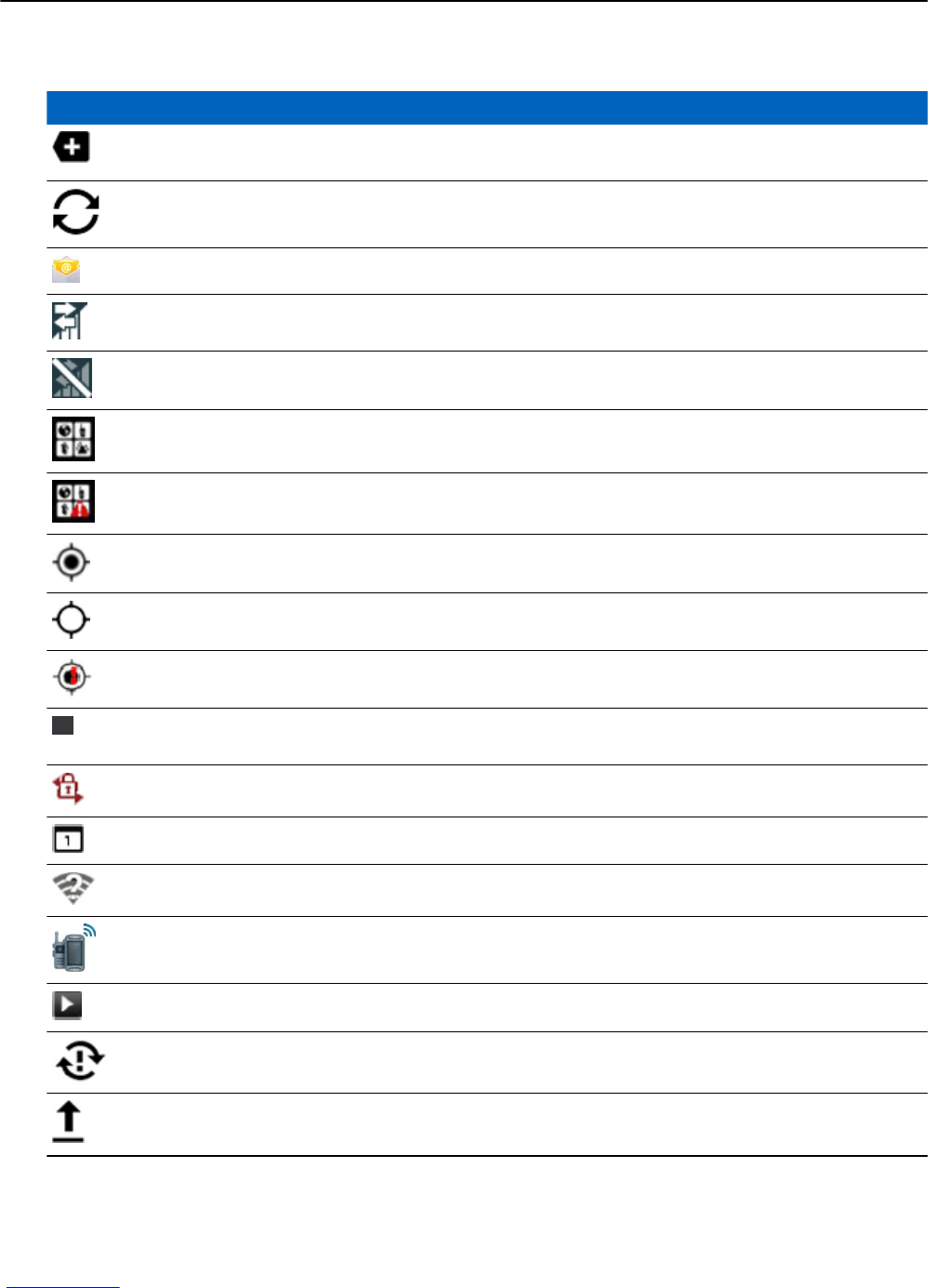
3.5 Notification Icons
Table 6: Notification Icons
Icon Description
Indicates that more notifications are available for view-
ing.
Indicates that data is syncing.
Indicates an incoming email.
Indicates that network auto-switching is enable.
Indicates that network auto-switching is disabled.
Network Services notification.
Network Services error notification.
Indicates that location reporting service is enabled.
Indicates that the LEX L10 is searching location data.
Indicates an error or a warning that requires user action
in the location application.
Indicates an error or a warning that requires user action
in the presence application.
CRYPTR feature error.
Indicates an upcoming event.
Indicates that an open WiFi network is available.
Radio Remote Control application is on.
Indicates that a song is playing.
Indicates that a problem with sign-in or sync has occur-
red.
Indicates that the LEX L10 is uploading data.
Table continued…
60 | Using the LEX L10
Send Feedback | February 2015 | MN001456A01-A
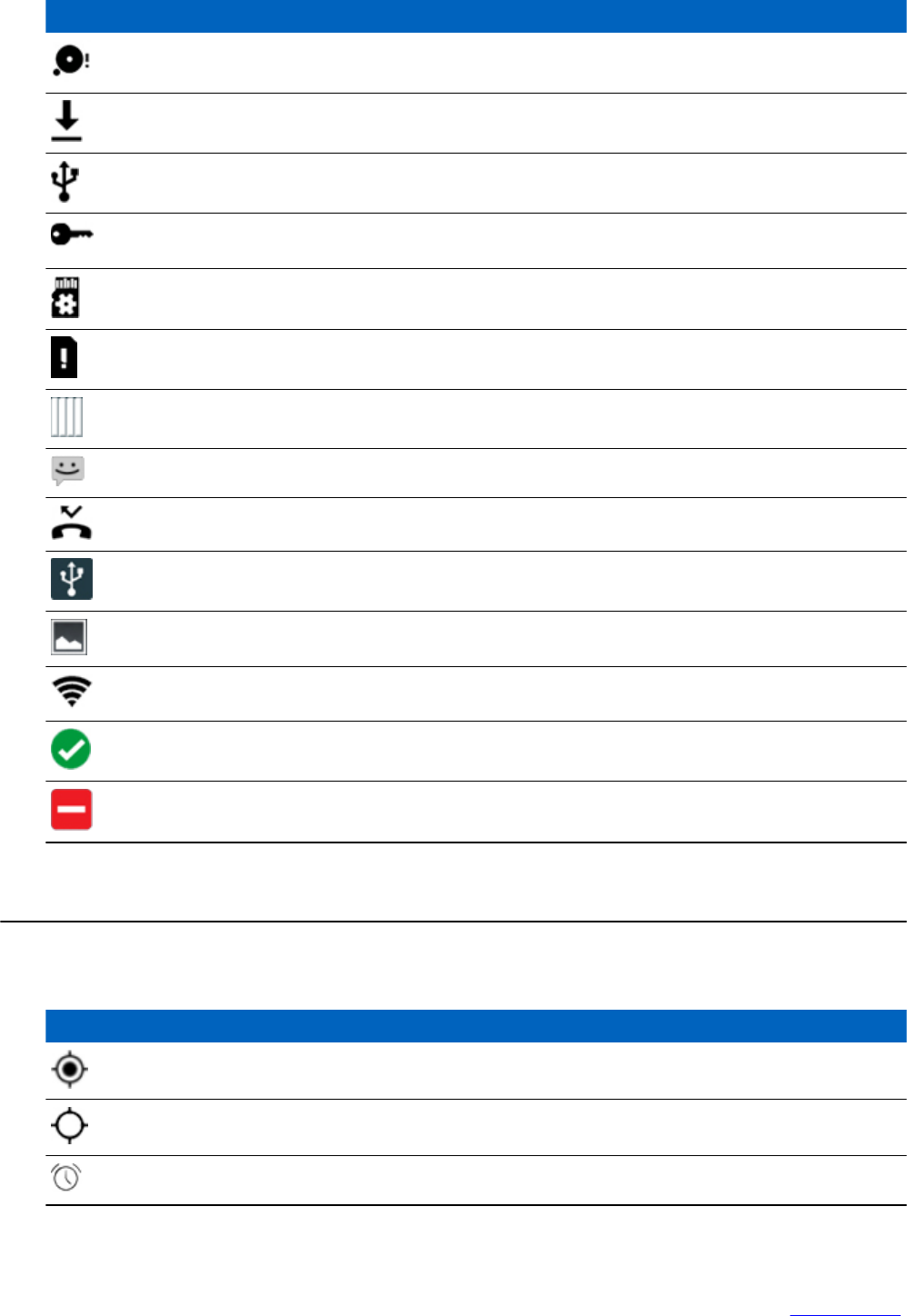
Icon Description
Indicates that the microSD card is almost full.
Indicates that the LEX L10 is downloading data when
animated and download is complete when static.
Indicates that the LEX L10 is connected via USB cable.
Indicates that the LEX L10 is connected to or disconnect-
ed from virtual private network (VPN).
Preparing SD card.
Indicates that no SIM is installed.
Indicates that USB debugging is enabled on the LEX
L10.
Indicates that the LEX L10 has received a text message.
Indicates a missed call.
Indicates that tethering is active for bluetooth or USB.
Also used to indicate a WiFi hotspot is active.
Screenshot captured.
Indicates that WiFi hotspot is active.
My Status indicates device is available.
My Status indicates device is busy.
3.6 Status Icons
Table 7: Status Icons
Icon Description
Indicates that GPS is in use.
Indicates that the LEX L10 is searching location data.
Indicates that the Alarm is active.
Table continued…
Using the LEX L10 | 61
MN001456A01-A | February 2015 | Send Feedback
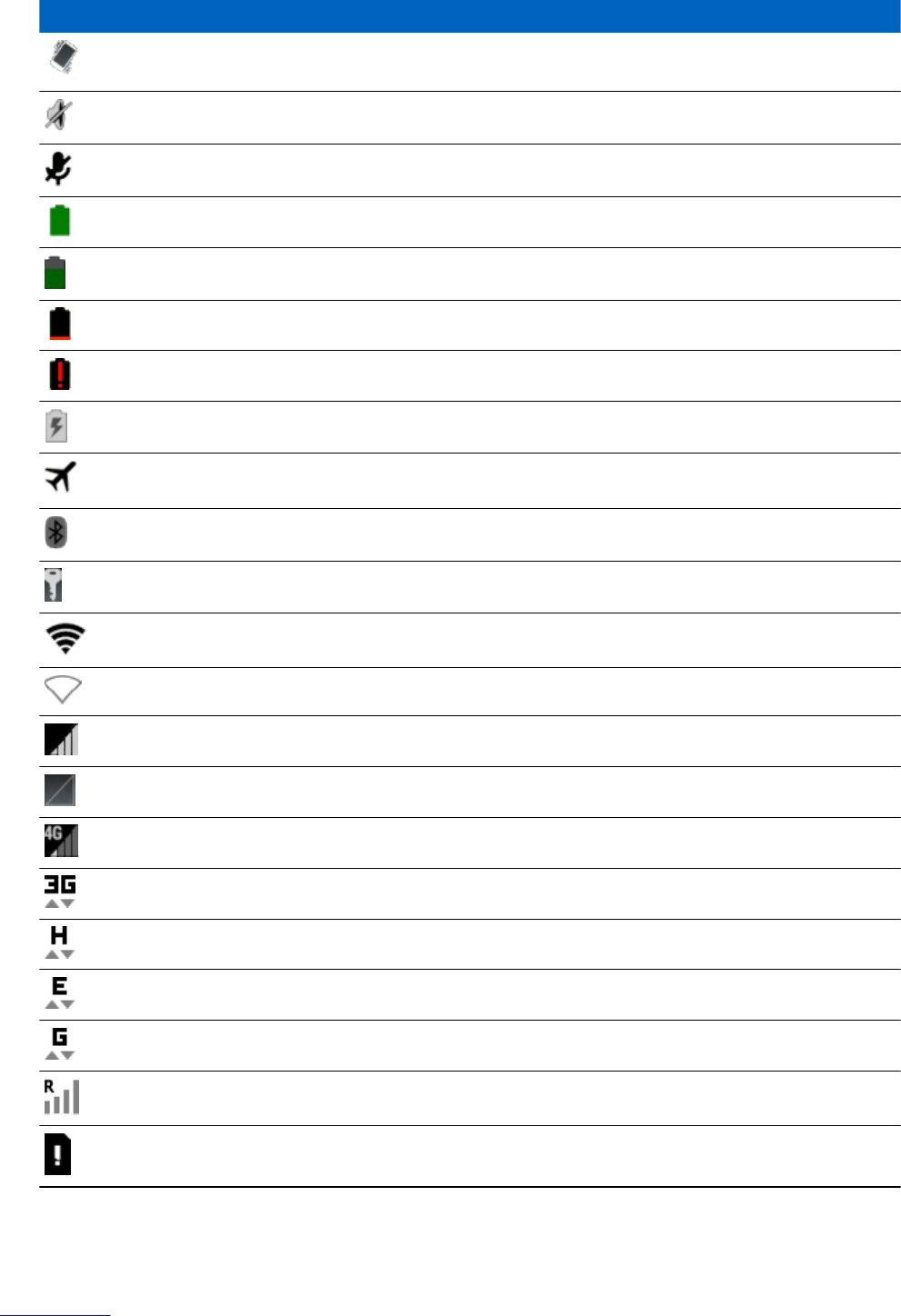
Icon Description
Indicates that all sounds except media and alarms are si-
lenced and vibrate mode is active.
Indicates that the ringer is silenced.
Microphone is muted during a call.
Indicates that the battery is fully charged.
Indicates that the battery is partially drained.
Indicates that the battery charge is low.
Indicates that the battery charge is very low.
Indicates that the battery is charging.
Indicates that the Airplane Mode is active. All radios are
turned off.
Indicates that Bluetooth is on.
LEX L10 is set to operate on Private network.
Connected to a WiFi network.
No WiFi signal.
Mobile network signal strength.
No mobile network signal.
Connected to a 4G network.
Connected to a 3G network.
Connected to an HSPA network.
Connected to an EDGE network.
Connected to a GPRS network.
Roaming from a network.
No SIM card installed.
62 | Using the LEX L10
Send Feedback | February 2015 | MN001456A01-A
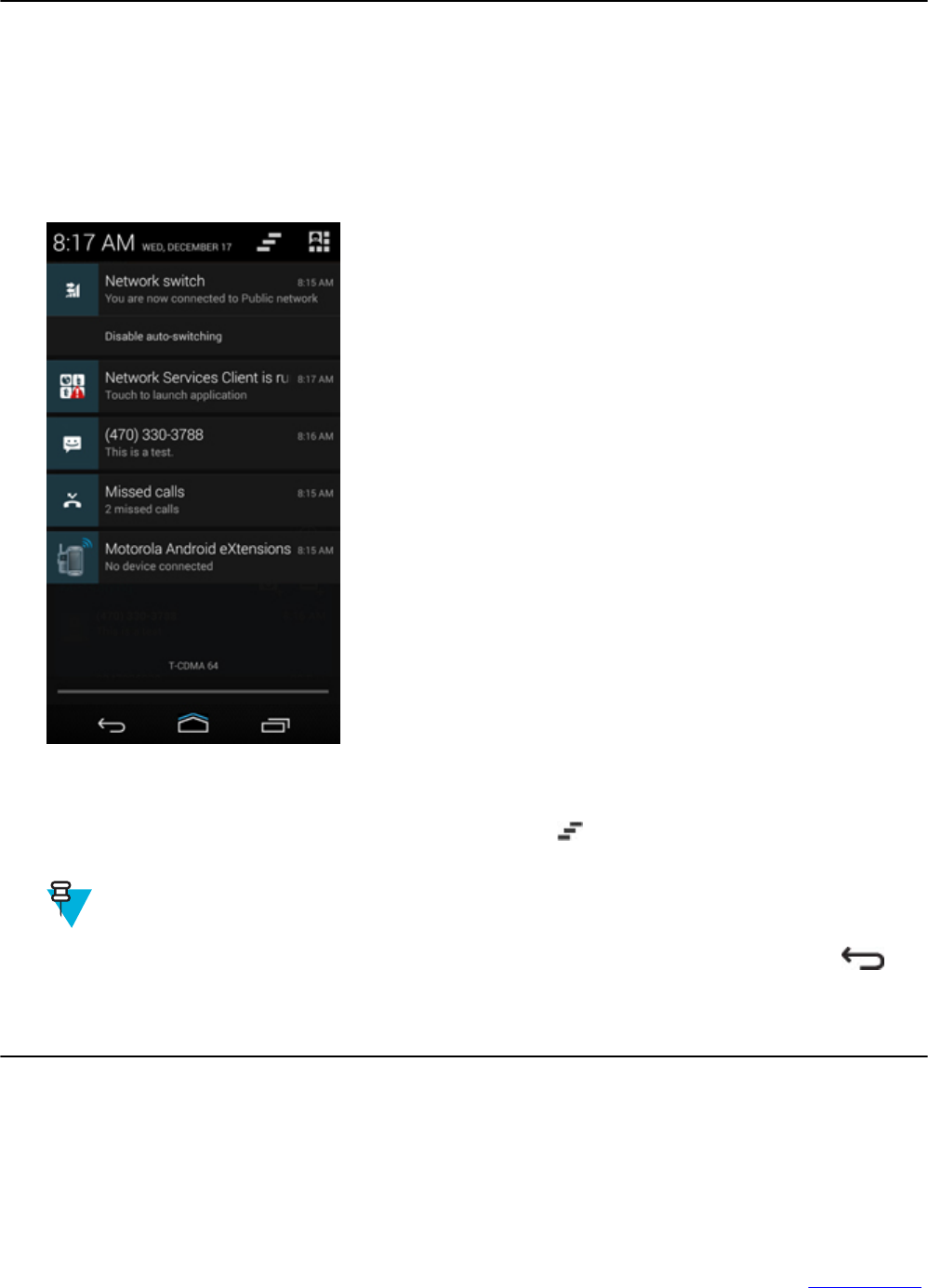
3.7 Managing Notifications
Notification icons report the arrival of new messages, calendar events, alarms, and ongoing events. When a
notification occurs, an icon appears in the Status bar with a brief description. See Notification Icons on page 60 for a
list of possible notification icons and their description. Open the Notifications panel to view a list of all the
notifications.
To open the Notification panel drag the Status bar down from the top of the screen.
Figure 33: Notification Panel
To respond to a notification, open the Notifications Panel and then tap a notification. The Notifications Panel closes
and the subsequent activity is dependent on the notification.
To clear all notifications, open the Notifications Panel and then tap . All event-based notifications are removed.
Ongoing notifications remain in the list.
Note: Some notifications cannot be cleared and will remain to inform you of running applications
To close the Notification Panel, drag the bottom of the Notifications Panel to the top of the screen or tap .
3.8 Working with Status
LEX L10 users work with status in two ways: setting their own status (Available or Busy) and viewing the status of
their contacts.
The status displayed for Contacts shows the following:
Using the LEX L10 | 63
MN001456A01-A | February 2015 | Send Feedback

• The presence status currently detected by a call system or network (offline or online status)
•The availability status currently selected by the contact (Available or Busy)
My Status
The LEX L10 user sets the value of My Status to Available or Busy. This status is shown in the Contacts and
Session Log screens of other LEX L10 users. The Available status:
• Is the default “sign-on” state
• Indicates that the LEX L10 user is willing to send and receive calls
The Busy status indicates that the LEX L10 user is busy but the LEX L10 is still able to send and receive calls.
Status of Contacts
The status of LEX L10 contacts is shown in all of the Contacts screens, and People list. The status of a contact can
be:
• Offline
• Available
• Busy
If the contact is not connected to and registered with a system server, the status shown is Offline.
If the contact is connected to and registered with the system server, the My Status value (Available or Busy) of the
contact is shown.
When the Contacts are synchronized with the People list, the Contacts are added to the regular LEX L10 contacts.
3.9 Quick Settings
The Quick Settings panel provides easy access to some frequently used settings.
Drag the Status Bar down from the top of the screen. The Quick Settings icon displays in the top right corner. Tap
to display the Quick Settings panel.
64 | Using the LEX L10
Send Feedback | February 2015 | MN001456A01-A
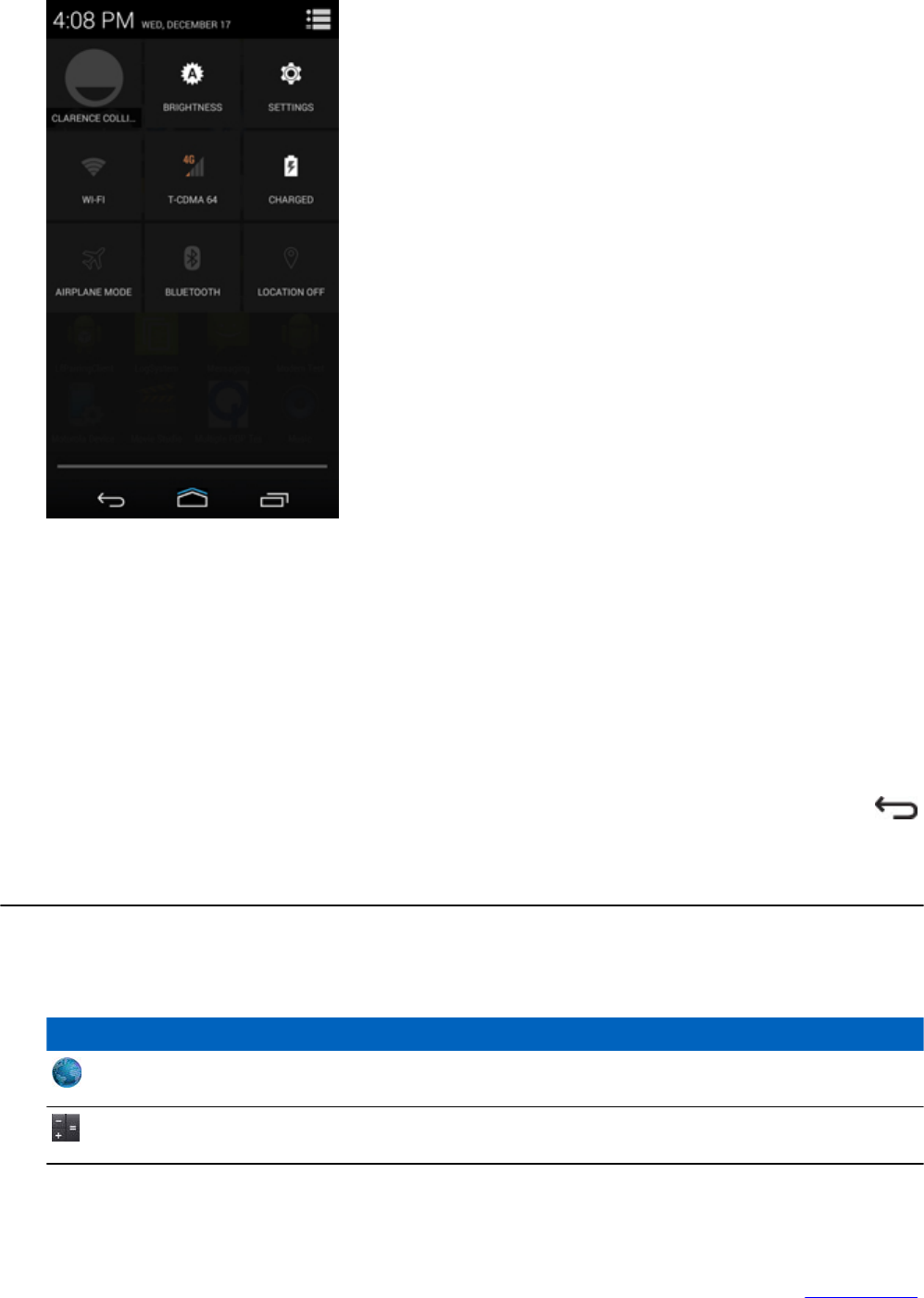
Figure 34: Quick Settings Panel
• Display the owner’s contact image. Tap to open the owner’s contact information.
•Brightness — Opens the Brightness setting dialog box to set the screen brightness.
•Settings — Opens the Settings screen.
•WiFi — Displays the current WiFi connection. Tap to open the WiFi settings screen.
•Service — Displays the current cellular service used; public or Private.
•Battery Status — Displays the current battery charge level. Tap to open the Battery screen.
•Airplane Mode — Displays the Airplane mode status. Tap to toggle Airplane mode on and off. Turn on Airplane
mode to turn off all the radios.
•Bluetooth — Displays the current state of the Bluetooth radio. Tap to open the Bluetooth settings screen.
•Location — Displays the current state.
To close the Quick Settings Panel, drag the bottom of the Quick Settings Panel to the top of the screen or tap .
3.10 Applications
The Apps screen displays icons for all installed applications.
Table 8: Applications
Icon Description
AOSP Browser — Use to access the Internet or agency
intranet.
Calculator — Provides the basic and scientific arithmet-
ic functions.
Table continued…
Using the LEX L10 | 65
MN001456A01-A | February 2015 | Send Feedback
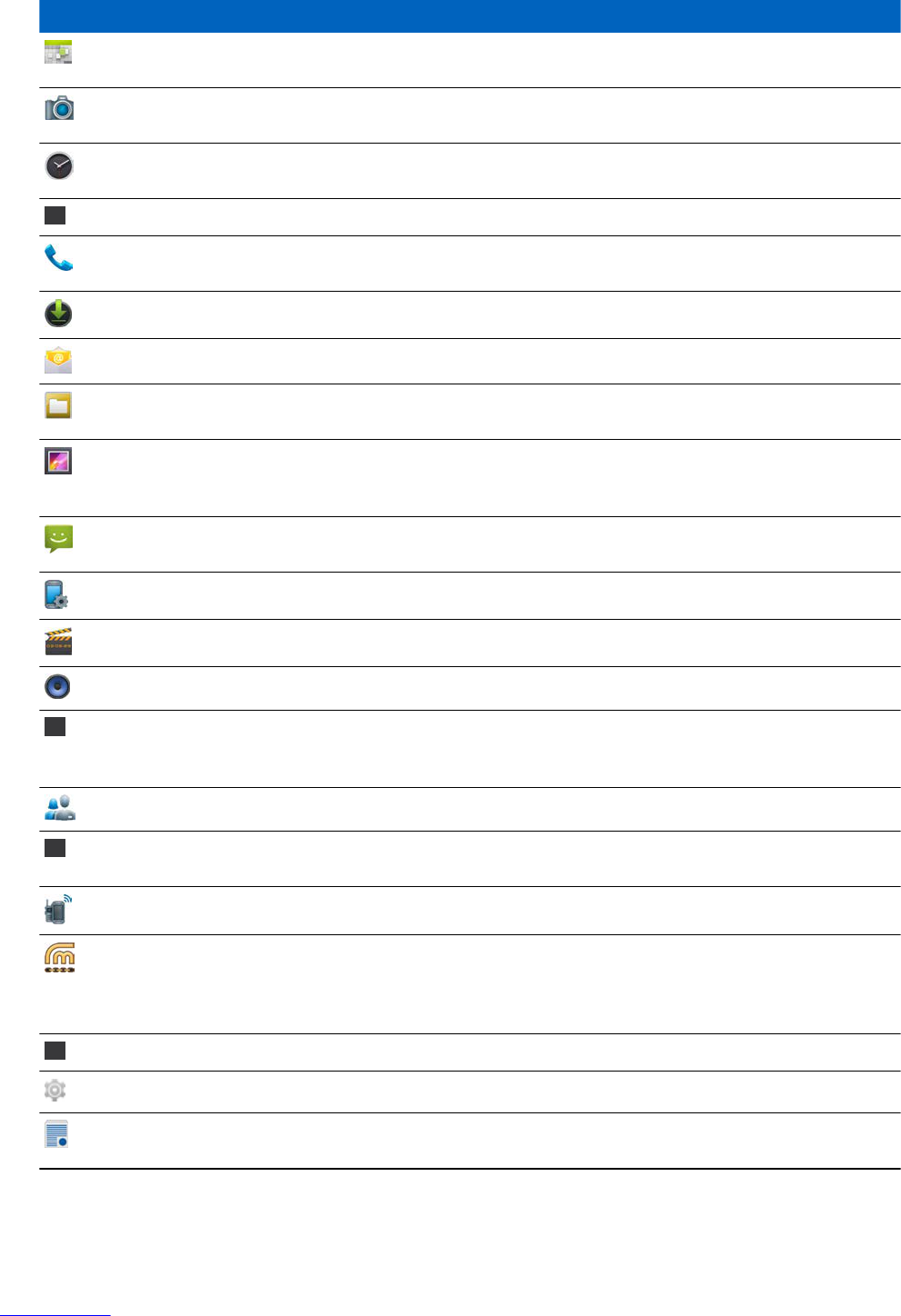
Icon Description
Calendar — Use to manage events and appointments.
Allows synchronization with Google account calendar.
Camera / Video Recorder — Take photos or record
videos. For more information, see Camera on page 101.
Clock / Alarms — Use to set an alarm, stopwatch or
timer.
Device Search —
Dialer — Use to make phone calls. See Calling on page
69 for more information.
Downloads — lists all downloads files.
Email — Use to send and receive email.
File Browser — Use to view and manage files on the
LEX L10.
Gallery — Use to view photos stored on the microSD
card. For more information, see Gallery on page 109 for
more information.
Messaging - Send SMS and MMS messages. See Mes-
saging on page 97 for more information.
Motorola Device Management —
Movie Studio —
Music — Access music stored on the LEX L10.
My Status — Use to view the current availability of the
user and LEX L10 device to other agency users and sys-
tem.
People — Use to manage contact information.
Quick Action — Use to notify an emergency situation to
a dispatcher or staff.
Radio Services — Use to pair radios.
Radio Manager Link Client — Enables connecting the
LEX L10 to a remote host computer for staging, firm-
ware installation, application installation, and application
removal by technical support.
Reader —
Settings — Use to configure the LEX L10.
Software Licensing — Licensing for software installed
on the LEX L10.
Table continued…
66 | Using the LEX L10
Send Feedback | February 2015 | MN001456A01-A
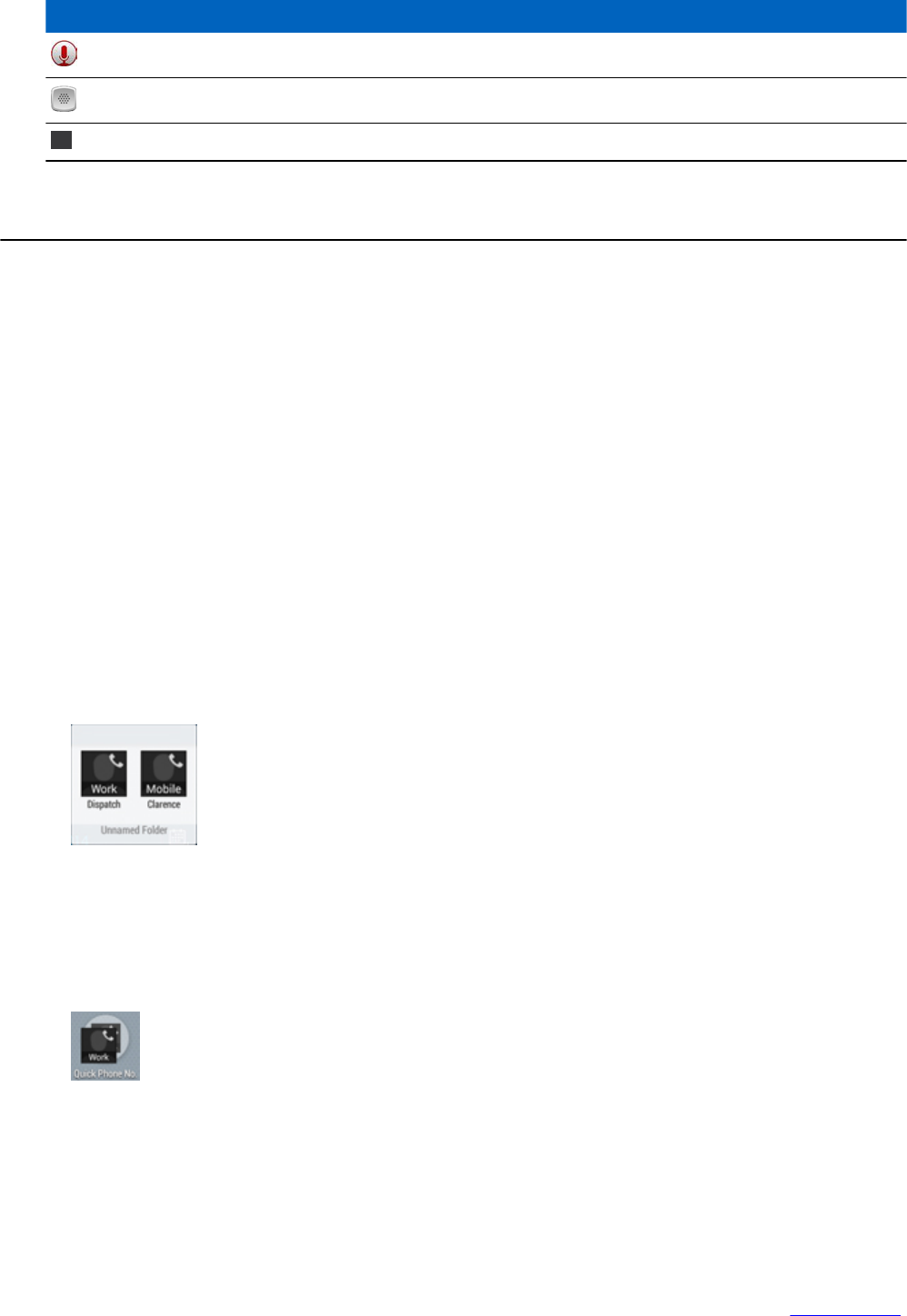
Icon Description
Sound Recorder — Use to record audio.
Voice Dialer — Use to place calls by speaking.
VPN / MVPN —
3.11 Folders
Use Folders to organize similar applications together. Tap the folder to open and display items in the folder.
3.11.1 Creating a Folder
To create a folder, there must be at least two app icons on the Home screen.
Procedure:
1Go to the desired Home screen.
2Tap and hold on one application icon.
3Drag the icon and stack on top of another icon.
4Lift and release.
3.11.2 Naming Folders
Procedure:
1Tap the folder.
Figure 35: Opened Unnamed Folder
2Tap the title area and enter a folder name using the keyboard.
3Tap Done.
4Tap anywhere on the Home screen to close the folder.
The folder name appears under the folder.
Figure 36: Named Folder
Using the LEX L10 | 67
MN001456A01-A | February 2015 | Send Feedback

Chapter
4
Calling
Make a phone call from the Phone application, the People application or other applications or widgets that display
contact information.
Emergency Calling
The service provider programs one or more emergency phone numbers that you can call under any circumstances,
even when the phone is locked, a SIM card is not inserted or the phone is not activated. However, the SIM card must
be installed in the LEX L10 to enable preset emergency numbers stored on it.
Emergency numbers vary by country. The LEX L10 must be switched to public mode to use the emergency numbers
for your country on the public SIM.
The LEX L10 pre-programmed emergency number(s) may not work in all locations, and sometimes an emergency
call cannot be placed due to network, environmental, or interference issues. For additional information, contact your
organization’s technical support.
Important: The numbers you can call depend on whether the LEX L10 is in private mode or public mode.
For example, if the LEX L10 is in private mode, you need to switch to public mode before you can call
numbers that are not included in the private network. To switch modes, see Switching Private and Public
Modes.
Note: You can set up other emergency alert methods if your device is licensed for these options. See Radio
Remote Control on page 79.
Audio Modes
The device offers three audio modes for use during phone calls:
•Handset Mode: Switches audio to the receiver at the top front of the device, so the user can use the device as a
handset. This is the default mode.
•Speaker Mode: Use the device as if on speaker phone.
•Headset Mode: Connect a Bluetooth or wired headset to automatically switch audio to the headset.
Using a Bluetooth Headset
Use a Bluetooth headset for audio communication when using an audio-enabled application. See Bluetooth on page
132 for information on connecting a Bluetooth headset to the device. Set the volume appropriately before putting on
the headset. When a Bluetooth headset is connected, the speakerphone is muted.
Using a Wired Headset
Use a wired headset (with 3.5 mm plug) for audio communication when using an audio-enabled application. Set the
volume appropriately before putting on the headset. When a wired headset is connected, the speakerphone is muted.
Lift the headset cover and insert the headset plug.
To end a call using the wired headset, press and hold the headset button until the call ends.
69 | Calling
MN001456A01-A | February 2015 | Send Feedback
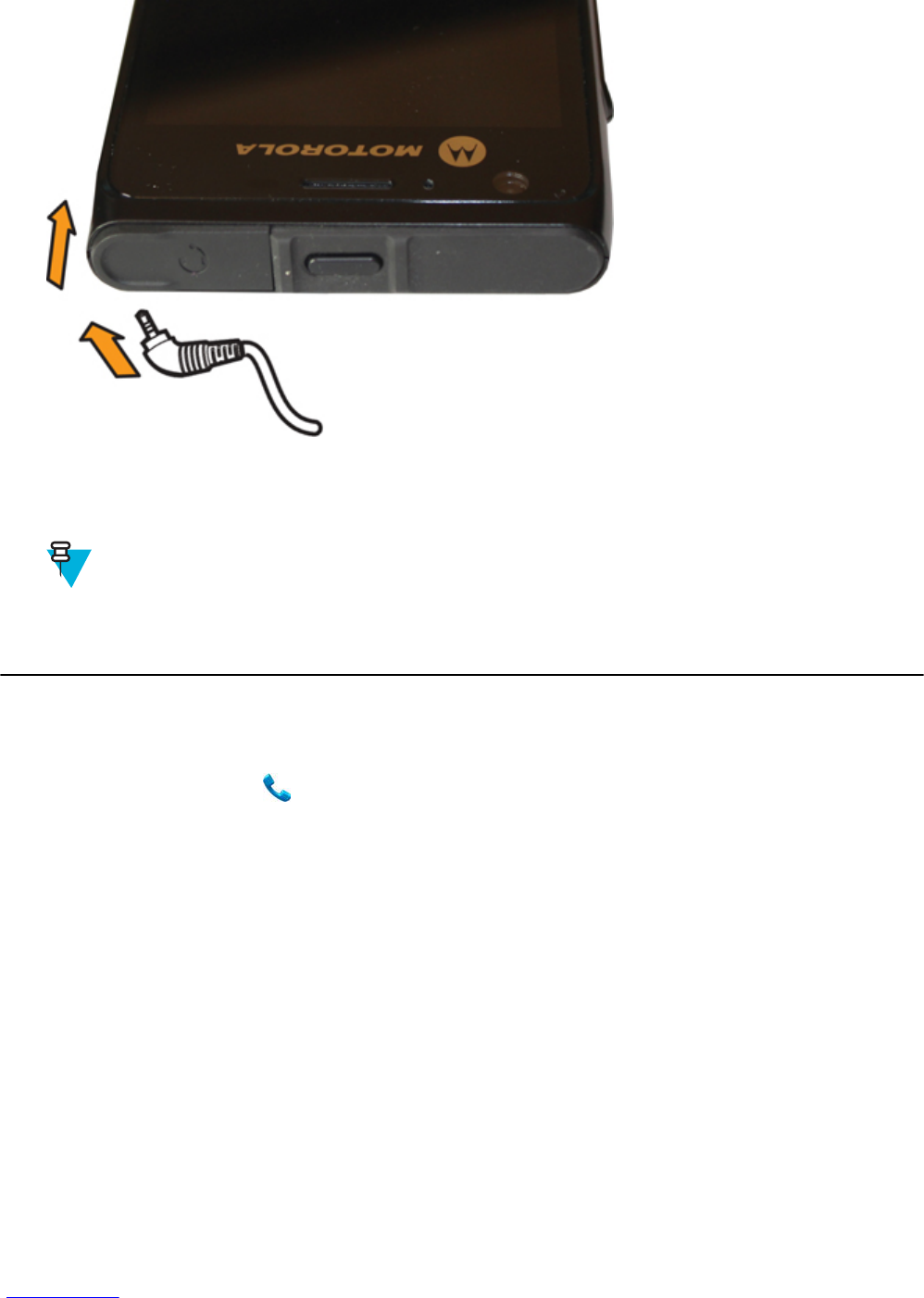
Figure 37: Insert Wired Headset Plug
Adjusting Audio Volume
Use the Volume buttons to adjust the volume of the ringer when not in a call and the audio volume when in a call.
Note: Adjust the conversation phone volume during a call. Adjusting the volume while not in a call affects
the ring and notification sound levels.
4.1 Making a Call Using the Dialer
Use the dialer tab to dial phone numbers.
Procedure:
1On the Home screen, tap .
70 | Calling
Send Feedback | February 2015 | MN001456A01-A
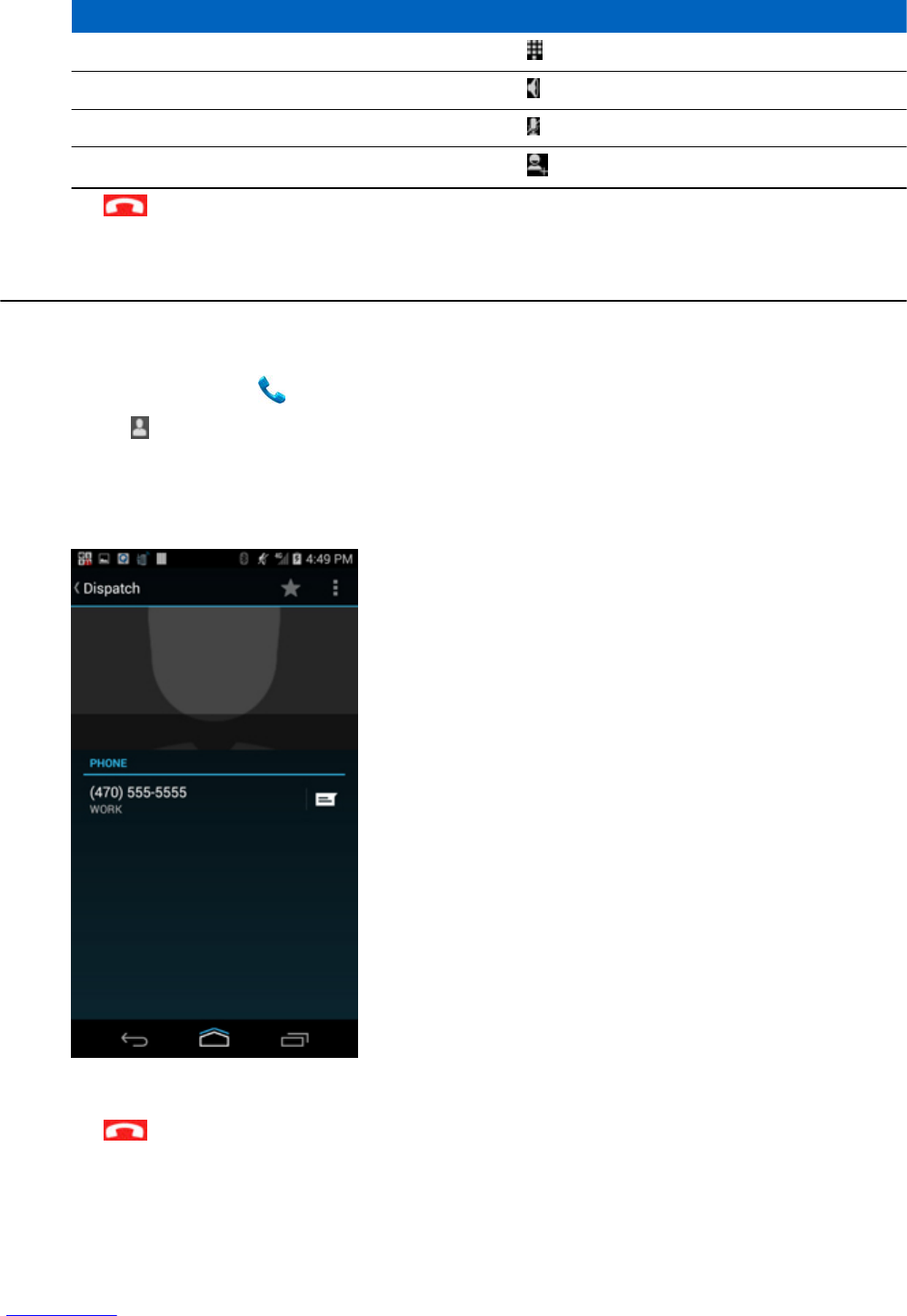
If... Then...
You want to display the dialer. Tap .
You want to turn on the speakerphone. Tap .
You want to mute the call. Tap .
You want to add another person to the call. Tap .
5Tap to end the call.
4.2 Making a Call Using People List Contacts
Procedure:
1On the Home screen, tap .
2Tap the tab.
3From the people list contacts, tap a phone contact or a PTT contact for making a One-to-One Private or Alert Call
(see Push-To-Talk User Guide For LEX L10).
Figure 40: People List Contact
4Tap the phone number next to the contact to initiate the call or press the PTT button for making a One-to-One
Private or Alert Call.
5Tap to end the call.
72 | Calling
Send Feedback | February 2015 | MN001456A01-A
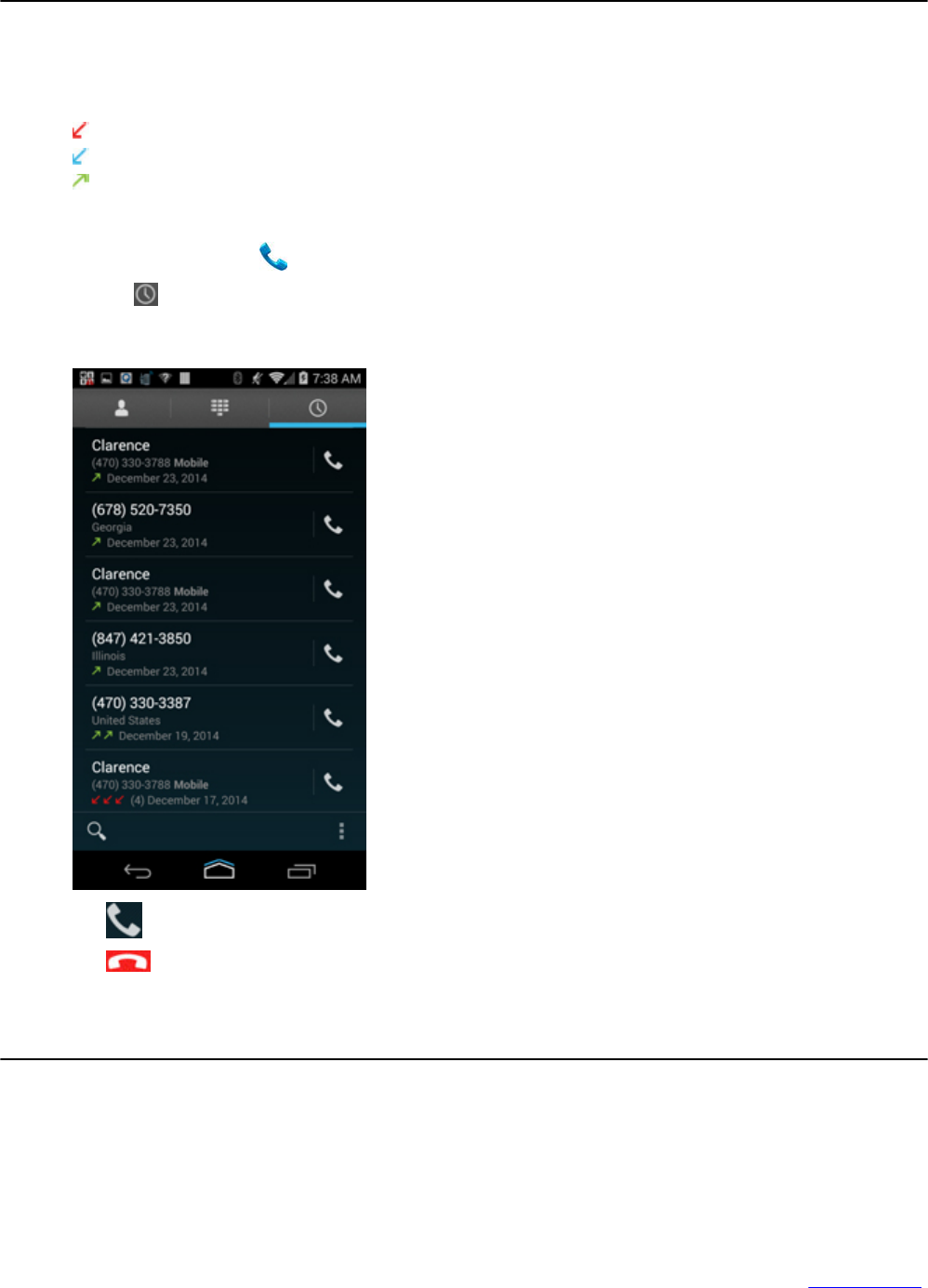
4.3 Making a Call Using Call History
Call History is a list of all the calls placed, received, or missed. It provides a convenient way to redial a number,
return a call, or add a number to Contacts.
Arrow icons beside a call indicate the type of call. Multiple arrows indicate multiple calls:
• — Missed incoming call
• — Received incoming call
• — Outgoing call
Procedure:
1On the Home screen tap .
2Tap the tab.
Figure 41: Call History Tab
3
Tap next to the contact to initiate the call.
4Tap to end the call.
4.4 Making a Conference Call
This procedure describes how to create a conference phone session with multiple people.
Calling | 73
MN001456A01-A | February 2015 | Send Feedback

Note: Conference calling may not be supported by your service provider. Check with your technical
support for conference calling availability. The total number of conference call participants may be limited
by your service provider. For the maximum number of participants in a conference call, contact technical
support.
Procedure:
1On the Home screen tap .
2Tap the tab above the dialer.
3Tap the keys to enter the phone number.
4
Tap below the dialer to initiate the call.
5When the call connects, tap .
The first call is placed on hold.
6Tap the keys to enter the second phone number.
7
Tap below the dialer to initiate the call.
8When the call connects, the first call is placed on hold and the second call is active.
Figure 42: Two Calls
The screen quickly changes to:
74 | Calling
Send Feedback | February 2015 | MN001456A01-A
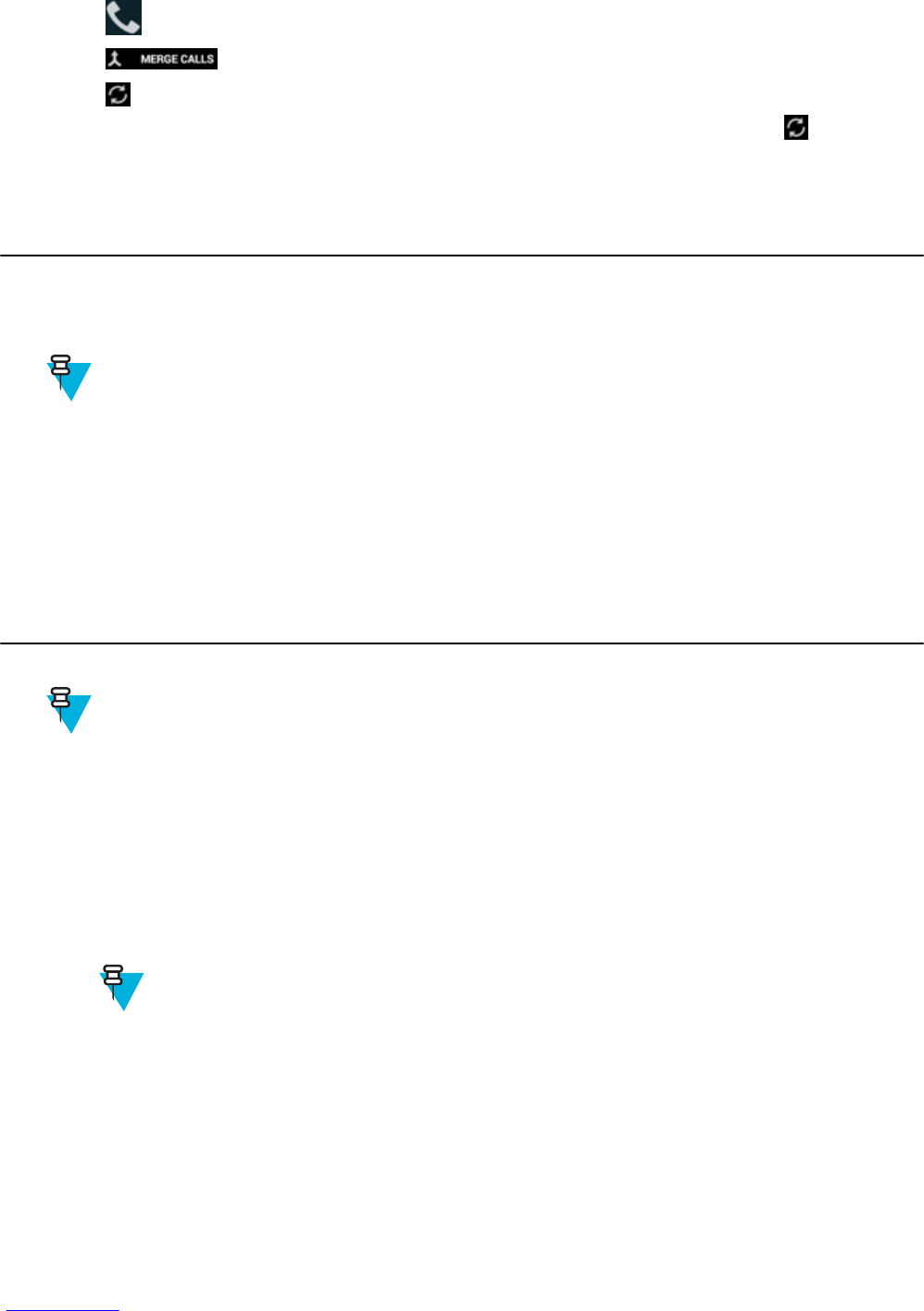
11 Tap the keys to enter the second phone number.
12
Tap below the dialer to initiate the call.
13 Tap to add the third call to the conference.
14 Tap to rotate between the individual calls.
Calls are rotated starting with the first call. This allows you to speak privately to one party. Tap to rotate to the
next party. When the rotation is complete, you are placed back into conference mode and all calls are active.
4.5 Answering Calls with a Bluetooth Headset
When you receive a phone call, the Incoming Call screen opens, displaying the caller ID and any additional
information about the caller that is in the People application.
Note: To connect a Bluetooth headset to the LEX L10, see Connecting to a Bluetooth Device on page 136.
When a call arrives, tap the Call button on the Bluetooth headset to answer the call.
To silence the ringer before answering the call, press the volume down button on the side of LEX L10.
To end the call press the Call button on the Bluetooth headset.
All incoming calls are recorded in the Phone application call Logs tab. If you miss a call, you will receive a
notification.
4.6 Call Settings
Note: Not all options are available for all configurations.
Use the Call Settings to modify options related to the phone call feature.
•Ringtone & Vibrate
-Phone Ringtone — Tap to select a ringtone to sound when an incoming call is received.
-Vibrate When Ringing — Check to make the device vibrate when a call is received.
•Other Call Settings
-Ringtone Settings — When using a Bluetooth headset, select the path that the ring is heard. Options:
Bluetooth or Speaker and Bluetooth (default).
Note: Bluetooth headset connection is required to set this option.
-Voicemail — Tap to configure voicemail settings
+Service — Set the service provider or other provider for voicemail service.
+Setup — Tap to update the phone number used to access voicemail.
+Sound — Tap to select a sound when a voicemail is received.
+Vibrate — Tap to vibrate when a voicemail is received.
.
-Dial pad touch tones — Check to play a sound when a phone key is touched.
76 | Calling
Send Feedback | February 2015 | MN001456A01-A

-Quick Responses - Tap to edit quick responses to use instead of answering a call.
-Fixed Dialing Numbers — Use Fixed Dialing to restrict the phone to dial only the phone number(s) or area
code(s) specified in a Fixed Dialing list.
-TTY mode — Tap to set the TTY setting. Use an optional teletypewriter (TTY) device with the LEX L10 to
send and receive calls. Plug the TTY device into the LEX L10 headset jack and set the LEX L10 to operate in
one of the TTY modes.
Note: Use a TSB-121 compliant cable (provided by the TTY manufacturer) to connect the TTY
device to the LEX L10.
Set the LEX L10 volume to a middle level setting for proper operation. If you experience a high
number of incorrect characters, adjust the volume as needed to minimize the error rate.
For optimal performance, the LEX L10 should be at least 30 cm (12 inches) from the TTY device.
Placing the LEX L10 too close to the TTY device may cause high error rates.
+TTY Off (default) — TTY is off.
+TTY Full — Transmit and receive TTY characters.
+TTY HCO — Transmit TTY characters but receive by listening to earpiece.
+TTY VCO — Receive TTY characters but transmit by speaking into microphone.
-DTMF tones — Set the length of the DTMF tones. Available options are : Normal or Long.
-CDMA Call Settings:
+Voice privacy — Enable enhanced privacy mode.
•Internet Call Settings
-SIP Accounts — Choose to receive Internet calls for accounts added to the device, view or change SIP
accounts, or add an Internet calling account.
-Use Internet Calling — Use Internet calling for all calls, only for calls to Internet calling addresses (the
default setting), or to ask for each call. Must be connected to a WiFi network and have added an Internet
calling account to the device to use Internet calling.
-IMS Account — Enable/Disable IMS Service Capability.
Calling | 77
MN001456A01-A | February 2015 | Send Feedback

Chapter
5
Radio Remote Control
The Radio Remote Control application enables a LEX L10 user to control a P25 Land Mobile Radio (LMR) directly
from the LEX L10. In this way, the P25 radio can operate when carried inside a pouch and radio voice
communication is routed directly between the radio and a headset.
To communicate, the user taps and holds the Push-to-Talk (PTT) button on the LEX L10 screen. The button
simulates the PTT button on the side of the radio. The user can also switch between the radio zones, select favorite
channels and change the volume directly from the LEX L10 screen.
Note:
•This chapter applies to your LEX L10 only if your organization licensed this feature for your LEX L10.
• Pairing with APX models of the P25 Land Mobile Radio, requires purchasing a Mission Critical
Wireless option (an optional Bluetooth board inside the APX radio).
Before starting to use the P25 radio with the LEX L10, Bluetooth pairing is required. After paired with the radio, the
LEX L10 initiates a secure connection with the radio.
Important: After pairing the LEX L10 with the P25 Land Mobile Radio (LMR), maintain a distance of no
more than 30 feet (10 meters) between the LEX L10 and the radio. Controlling the radio and initiating an
emergency alert from the LEX L10 beyond 30 feet (10 meters) may fail.
The Radio Remote Controlapplication is used for:
•Push-to-Talk communication
• Switching radio zones
• Changing channels
• Setting and selecting favorite channels
• Changing radio volume
• Sending an emergency alert
• Monitoring the radio battery and signal power
79 | Radio Remote Control
MN001456A01-A | February 2015 | Send Feedback
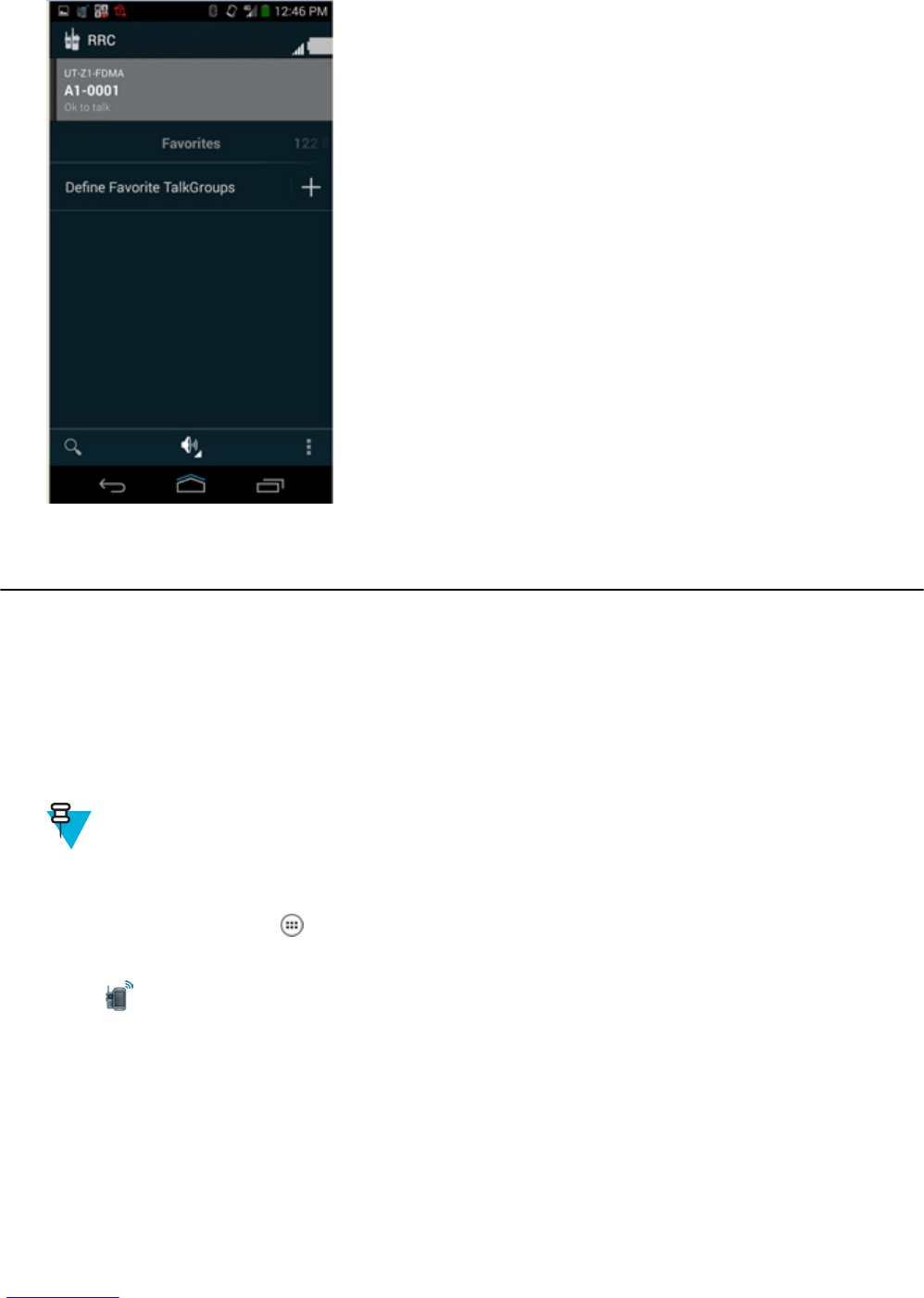
Figure 45: Radio Remote Control Screen
5.1 Pairing Radio with the LEX L10
This procedure pairs a radio with a LEX L10.
Prerequisites:
•Verify that your Land Mobile Radio (LMR) includes a secure Bluetooth pairing feature. Turn on Bluetooth feature
of the LEX L10 and radio. In the radio, enable the Bluetooth tones (see LMR User Guide).
• The LEX L10 is not paired with other radio.
When and where to use: Use this procedure to pair a LEX L10 with a radio.
Note: To pair the LEX L10 to a radio, ensure that the Bluetooth feature of the LEX L10 is enabled and
bring the blue pairing points on each device to within 2.5 cm. Once paired, their Bluetooth link has a line-
of-sight range of 30 feet (10 meters).
Procedure:
1From the Home screen, tap .
The Application screen displays.
2Tap .
The Pair with a radio screen appears.
80 | Radio Remote Control
Send Feedback | February 2015 | MN001456A01-A
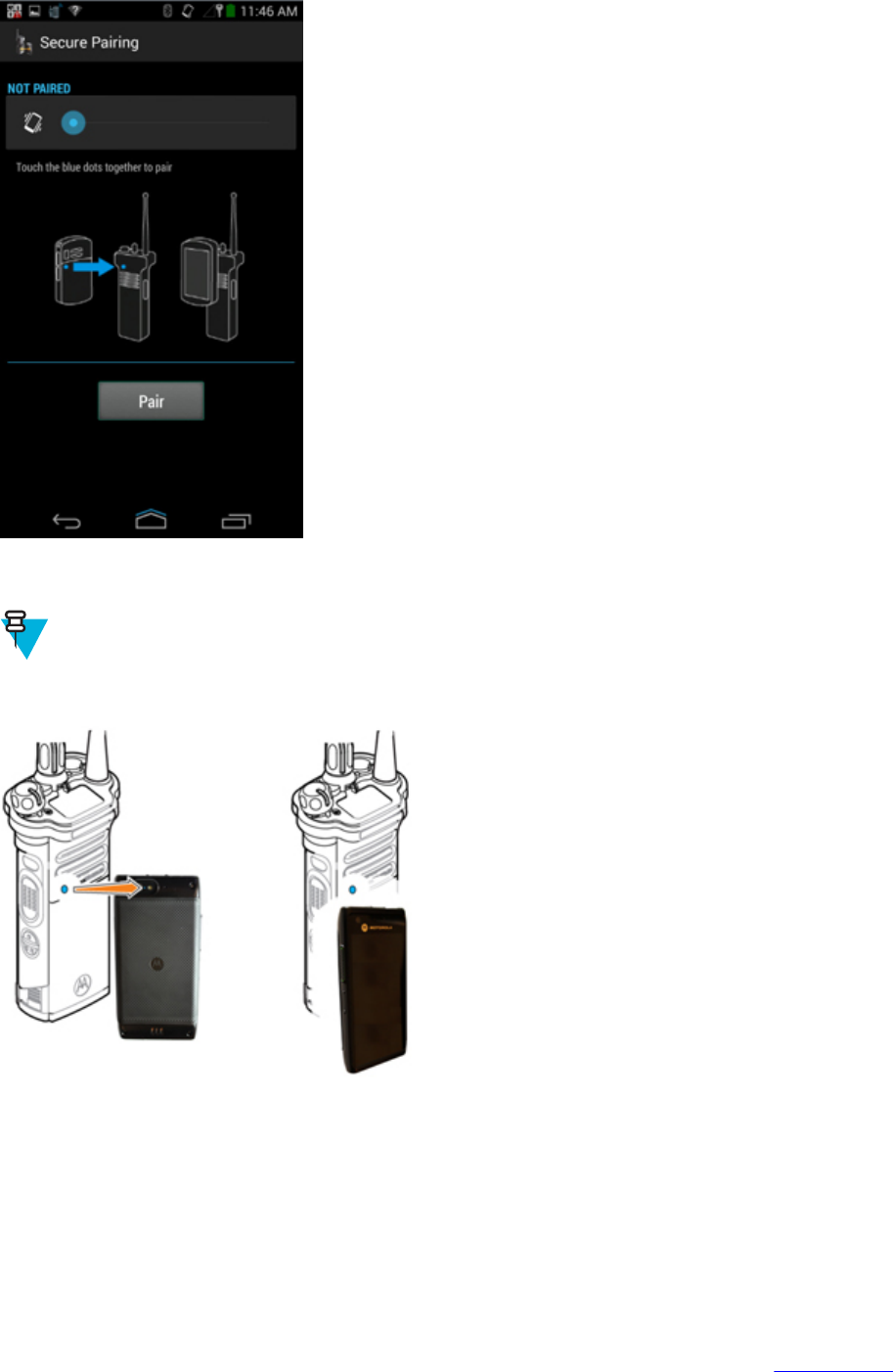
Figure 46: Pair With a Radio Screen
3Place the radio close to the LEX L10, aligning the blue pairing point on the LEX L10 with the blue pairing point
on the radio.
Note: The blue pairing points must be within 2.5 cm of each other for pairing to happen.
Figure 47: Blue Pairing Dots
• If the pairing process is successful, the radio sounds an incremental-pitched tone to indicate paired.
•If the pairing process fails, the radio sounds a short, low pitched tone. On the LEX L10 screen, tap Tap Pair to
try again to resume pairing.
Once a successful pairing is established, the Bluetooth Connection screen is displayed for a few seconds,
followed by the Radio Remote Control screen.
Radio Remote Control | 81
MN001456A01-A | February 2015 | Send Feedback

Figure 48: Bluetooth Connection Screen
Figure 49: Radio Remote Control Screen
After pairing, the range of Bluetooth operation is 30 feet (10 meters) line-of-sight communication. That means an
unobstructed path between the LEX L10 and the radio. Line-of-sight obstructions include trees, buildings,
mountains, cars, and so on.
82 | Radio Remote Control
Send Feedback | February 2015 | MN001456A01-A
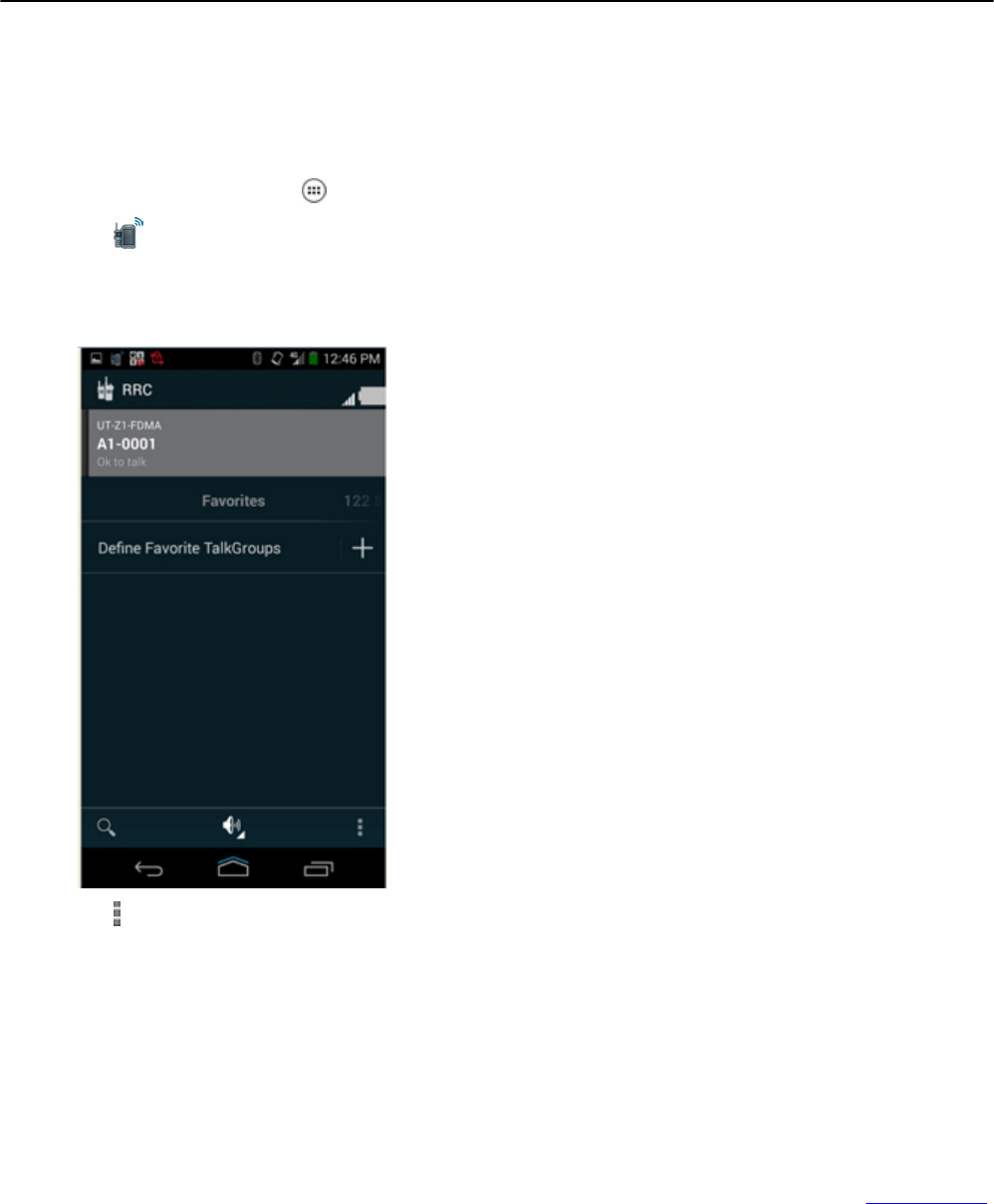
Do not leave the radio behind and expect the LEX L10 to work with a high degree of reliability when they are
separated. At the fringe areas of reception, link can be broken. To correct this problem, position the LEX L10 and
radio closer to each other to reestablish connection.
The LEX L10 remembers the radio and will automatically resume connection whenever the radio is on and within
connection range.
5.2 Unpairing the Radio
This procedure unpairs a set of paired radio with a LEX L10.
Prerequisites: The LEX L10 is paired with the radio.
When and where to use: Use this procedure to unpair the LEX L10 from a radio.
Procedure:
1From the Home screen, tap .
2Tap .
The Radio Remote Control screen appears.
Figure 50: Radio Remote Control Screen
3Tap → Unpair.
Radio Remote Control | 83
MN001456A01-A | February 2015 | Send Feedback

Figure 53: Unpaired Screen
5.3 Requesting an Emergency Alert
This emergency alert procedure is used to indicate a critical situation and is similar to pressing the emergency alert
button on the radio. The emergency alert signal overrides any other communication over the selected channel on the
radio.
Prerequisites:
•The radio is licensed and capable of P25 emergency call
• The radio and the LEX L10 are successfully paired
When and where to use: Use this procedure to use the LEX L10 to trigger an emergency alert on the radio.
Procedure:
1Swipe up from the icon.
22.Tap Activate Emergency.
A popup displays giving you 2 seconds to cancel the emergency alert.
Radio Remote Control | 85
MN001456A01-A | February 2015 | Send Feedback

Figure 54: Emergency Alert Activation Popup
3swipe down from the top of the LEX L10 to view notifications.
An Emergency notification should be included in the list of notifications.
Figure 55: Notification Screen with Emergency Notification
4Tap Clear Emergency.
86 | Radio Remote Control
Send Feedback | February 2015 | MN001456A01-A
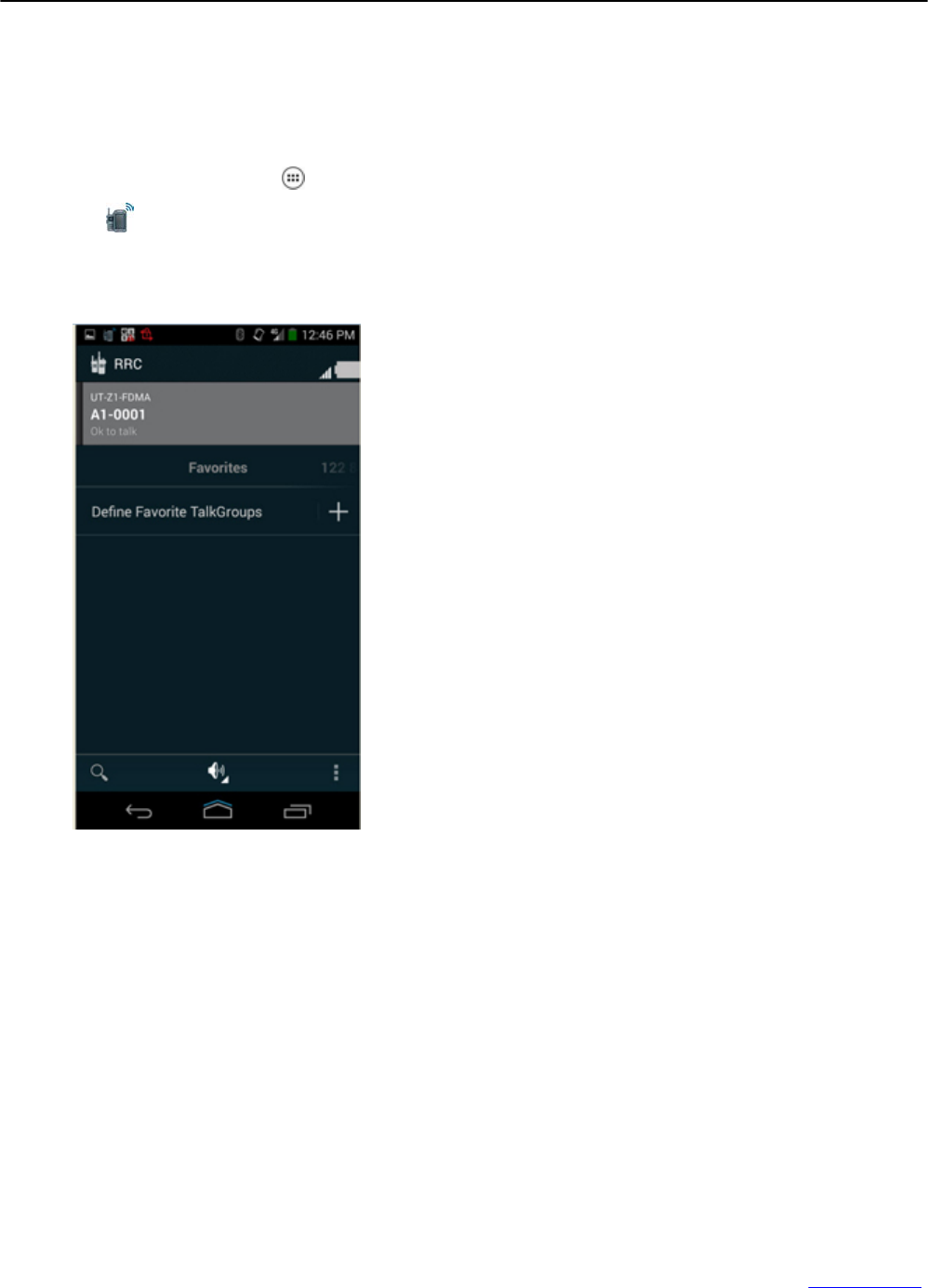
5.4 Setting Zone and Channel
This procedure remotely selects the zones of the remote radio on the LEX L10.
Prerequisites: The radio and the LEX L10 are successfully paired.
When and where to use: Use this procedure to remotely set the zones of the remote radio on the LEX L10.
Procedure:
1From the Home screen, tap .
2Tap .
The Radio Remote Control dialog box displays.
Figure 56: Radio Remote Control Screen
3Select a zone.
The Channel Selection screen appears, displaying a list of channels available for that zone.
Radio Remote Control | 87
MN001456A01-A | February 2015 | Send Feedback
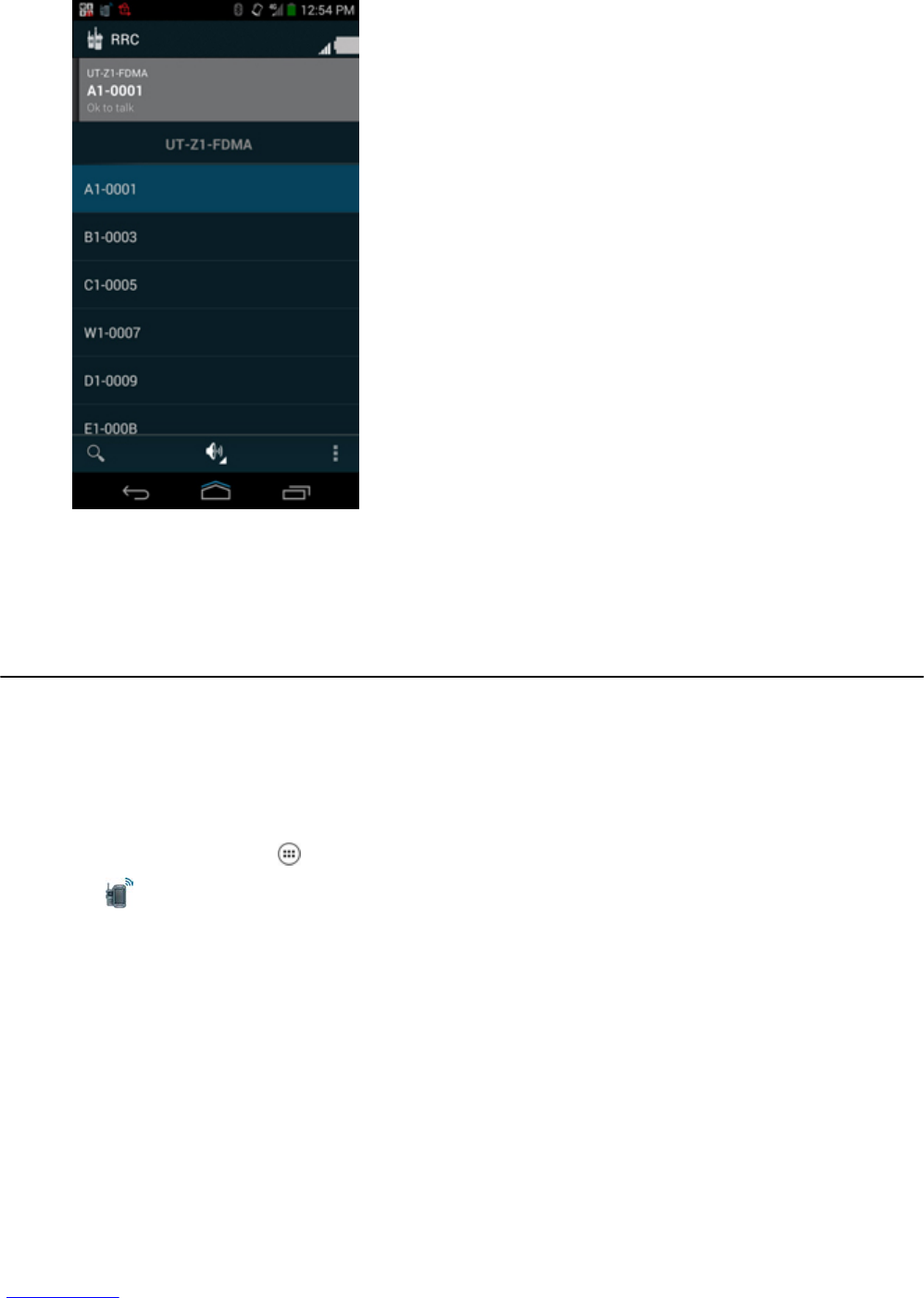
Figure 57: Channel Selection Screen
4Select a channel.
The Change Channel Confirmation screen appears if the channel was selected for the first time. Tap Yes to
confirm. The Radio Remote Control screen is displayed.
5.5 Setting Radio Volume
This procedure remotely selects the volume for the remote radio on the LEX L10.
Prerequisites: The radio and the LEX L10 are successfully paired.
When and where to use: Use this procedure to remotely set the volume for the remote radio on the LEX L10.
Procedure:
1From the Home screen, tap .
2Tap .
The Radio Remote Control screen appears.
88 | Radio Remote Control
Send Feedback | February 2015 | MN001456A01-A
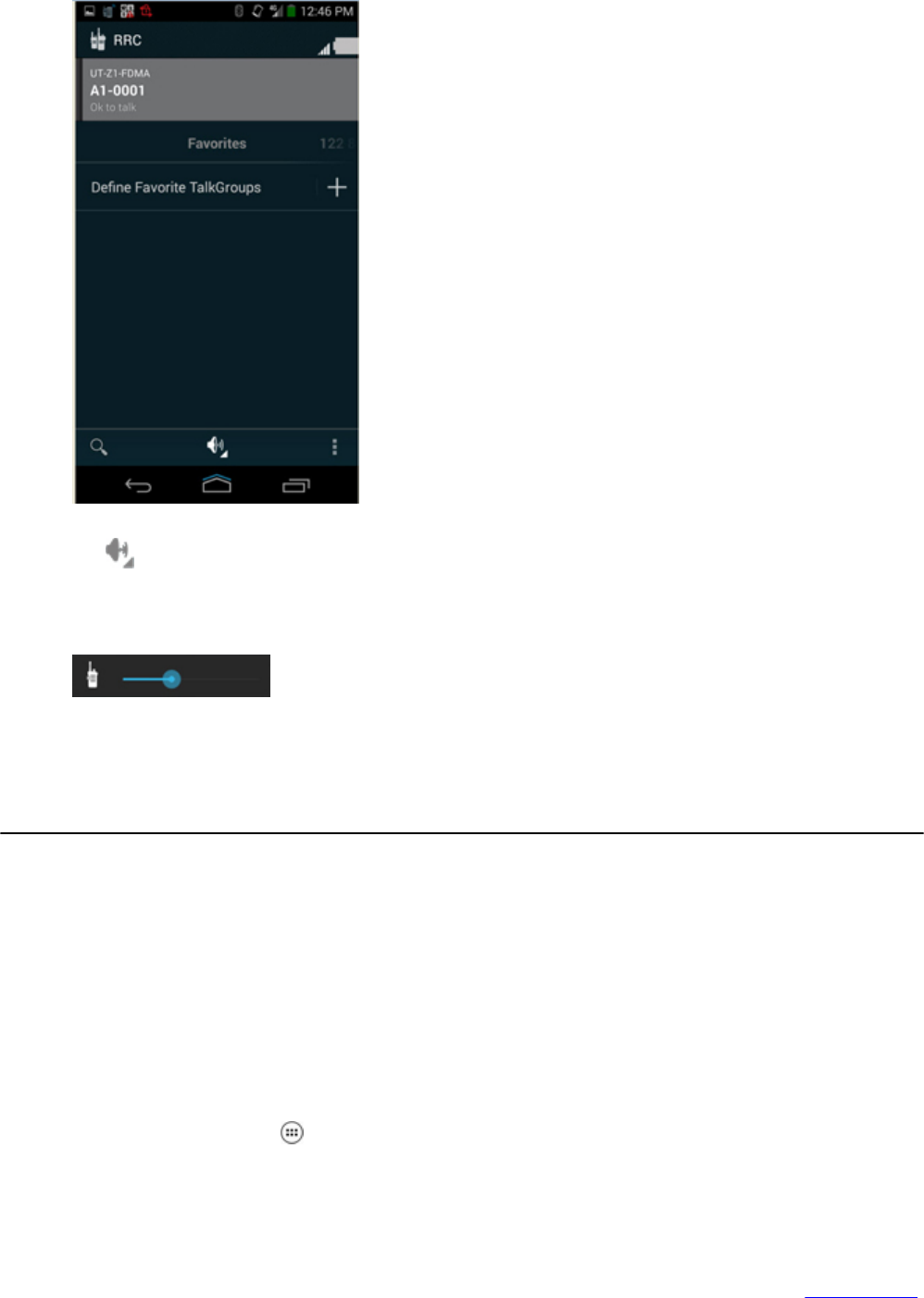
Figure 58: Radio Remote Control Screen
3Tap .
The radio volume slider displays.
Figure 59: Radio Volume Slider
4Tap anywhere on the Radio Volume slider to jump to a volume or drag to change the volume between 0 to 15.
5.6 Favorite Channels
The Favorites screen is used to have a quick glance at all saved zones and channels. Select one to connect.
5.6.1 Viewing Favorite Channels
This procedure displays the Radio Remote Control favorite zones and channels on the LEX L10.
Prerequisites: The radio and the LEX L10 are successfully paired.
When and where to use: Use this procedure to view the Radio Remote Control favorite zones and channels on the
LEX L10.
Procedure:
1From the Home screen, tap .
Radio Remote Control | 89
MN001456A01-A | February 2015 | Send Feedback
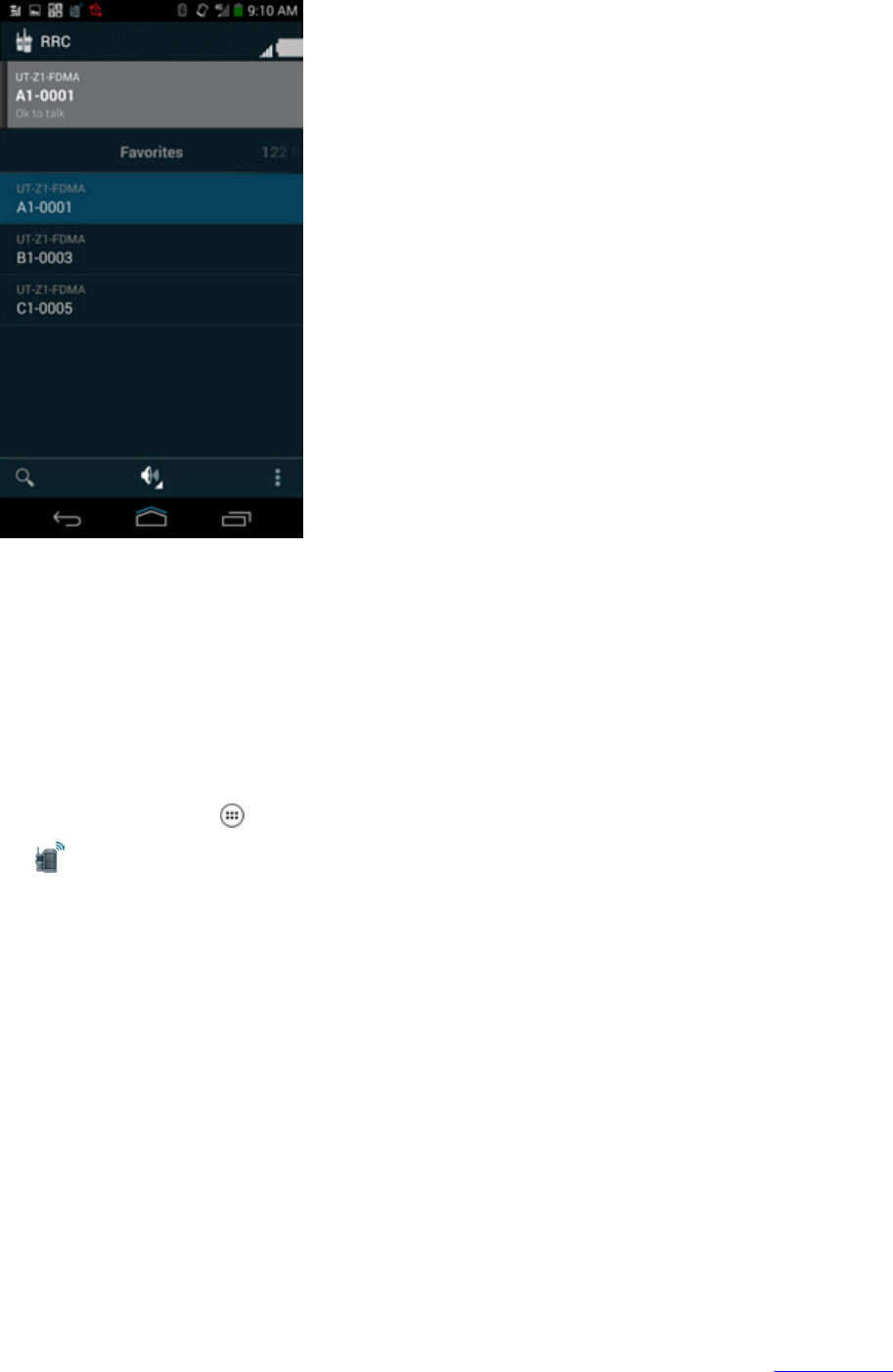
Figure 61: Radio Remote Control — Favorites Screen
5.6.2 Adding a Favorite Zone and Channel
This procedure adds a Radio Remote Control favorite Zone and Channel on the LEX L10.
Prerequisites: The radio and the LEX L10 are successfully paired.
When and where to use: Use this procedure to add a Radio Remote Control favorite Zone and Channel on the LEX
L10.
Procedure:
1From the Home screen, tap .
2Tap .
The Radio Remote Control screen displays.
Radio Remote Control | 91
MN001456A01-A | February 2015 | Send Feedback
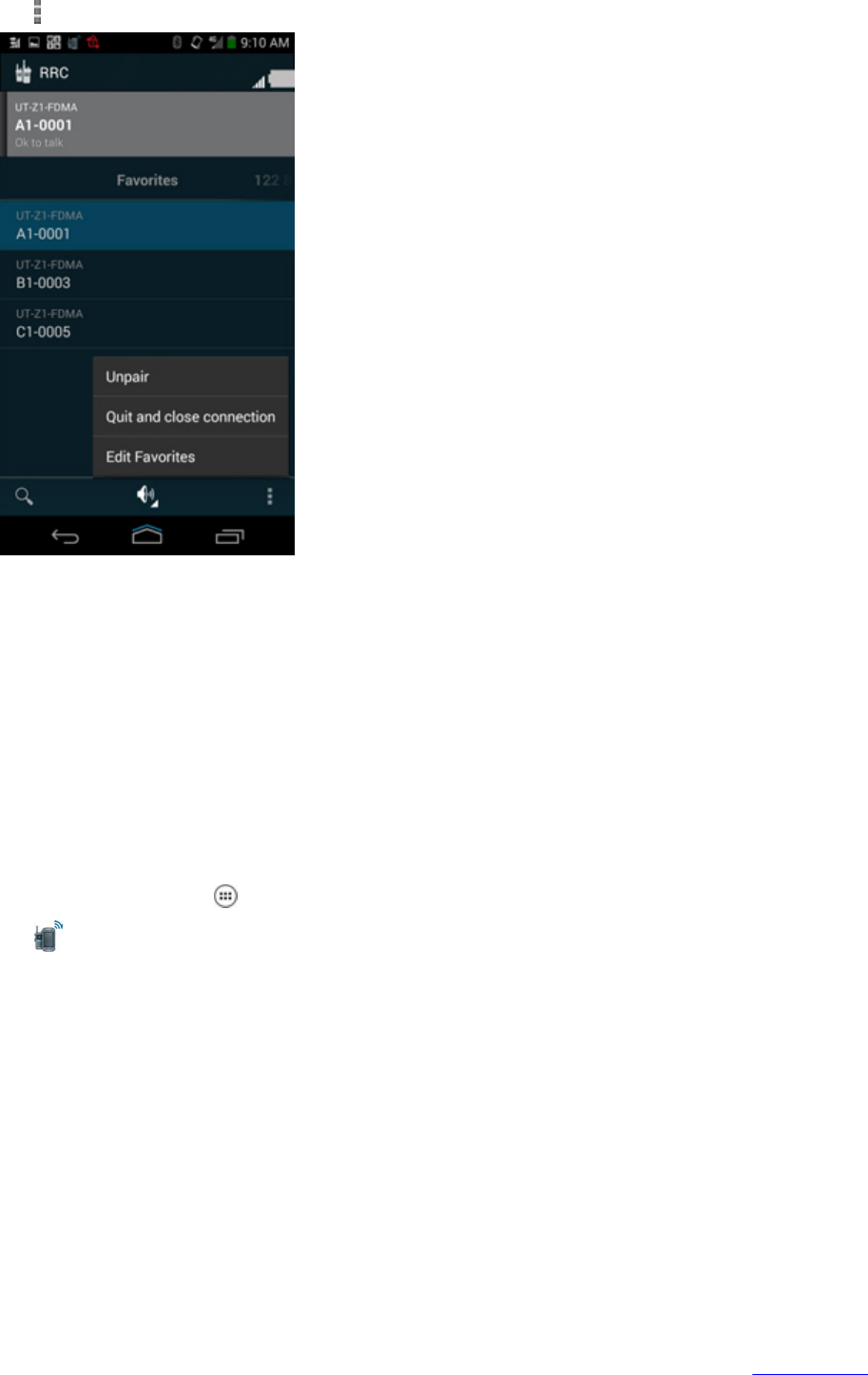
4Tap . The Favorites menu displays.
5Select Edit Favorites.
6Select the Zone and Channel that you want to add to your favorites.
7Tap < (top left side of screen) to return to the Radio Remote Control screen.
5.6.3 Removing a Favorite Channel
This procedure removes a Radio Remote Control favorite zone or channel on the LEX L10.
Prerequisites: The radio and the LEX L10 are successfully paired.
When and where to use: Use this procedure to remove a Radio Remote Control favorite zone or channel on the
LEX L10.
Procedure:
1From the Home screen, tap .
2Tap .
The Radio Remote Control screen appears.
Radio Remote Control | 93
MN001456A01-A | February 2015 | Send Feedback
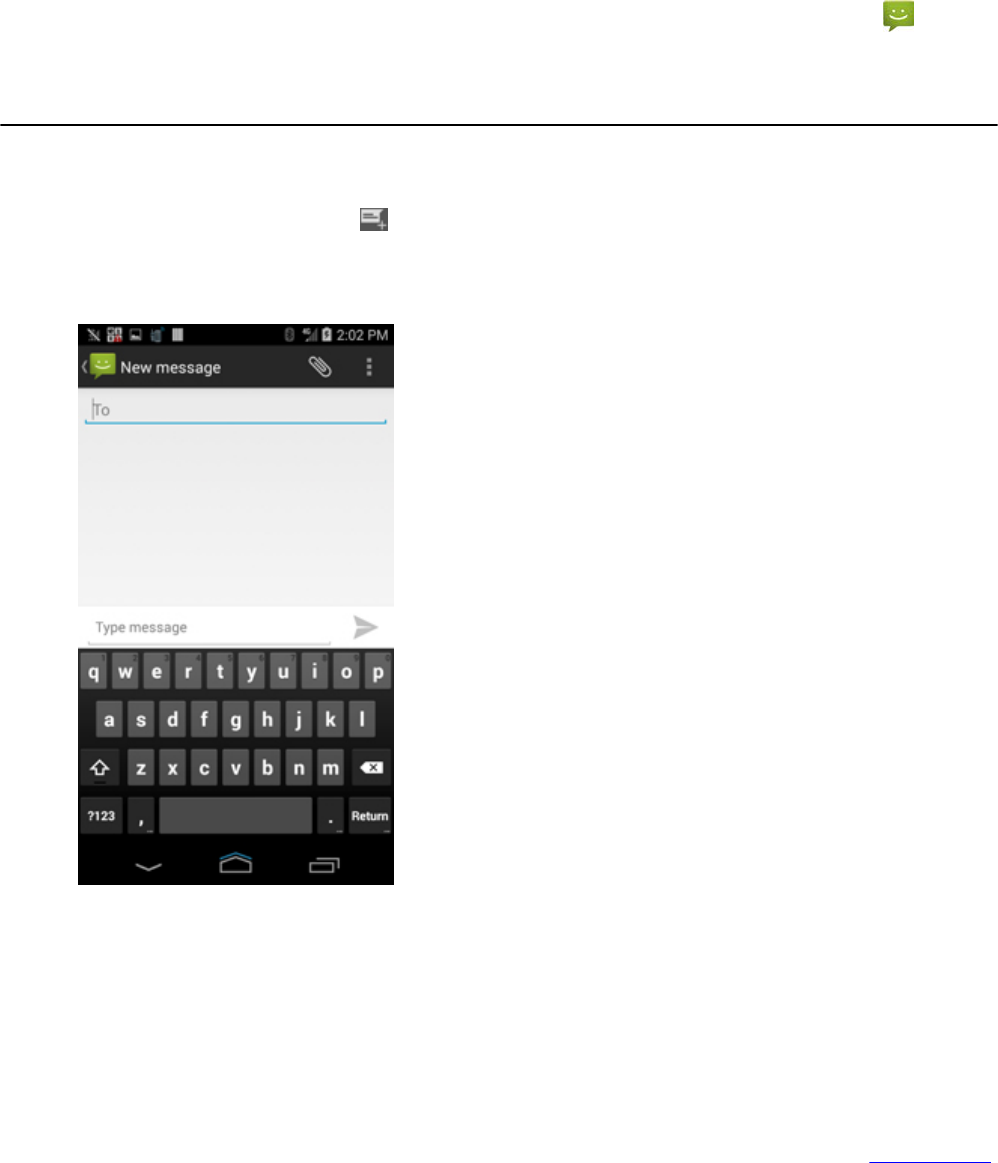
Chapter
6
Messaging
Use Messaging to send and receive SMS and MMS messages. From a Home or All Apps screen, touch .
6.1 Sending a Text Message
Procedure:
1In the main Messaging screen, tap .
The New Message screen displays.
Figure 66: New Message Screen
2In the To field, enter a name or a mobile phone number.
3In the Type message field, enter the text message.
Messages are limited to 160 characters. When the limit is approached, a counter displays, above the Send control,
showing how many characters are left. If the limit is reached and the user keeps typing, a new message is created,
which is joined with its predecessors when received.
97 | Messaging
MN001456A01-A | February 2015 | Send Feedback
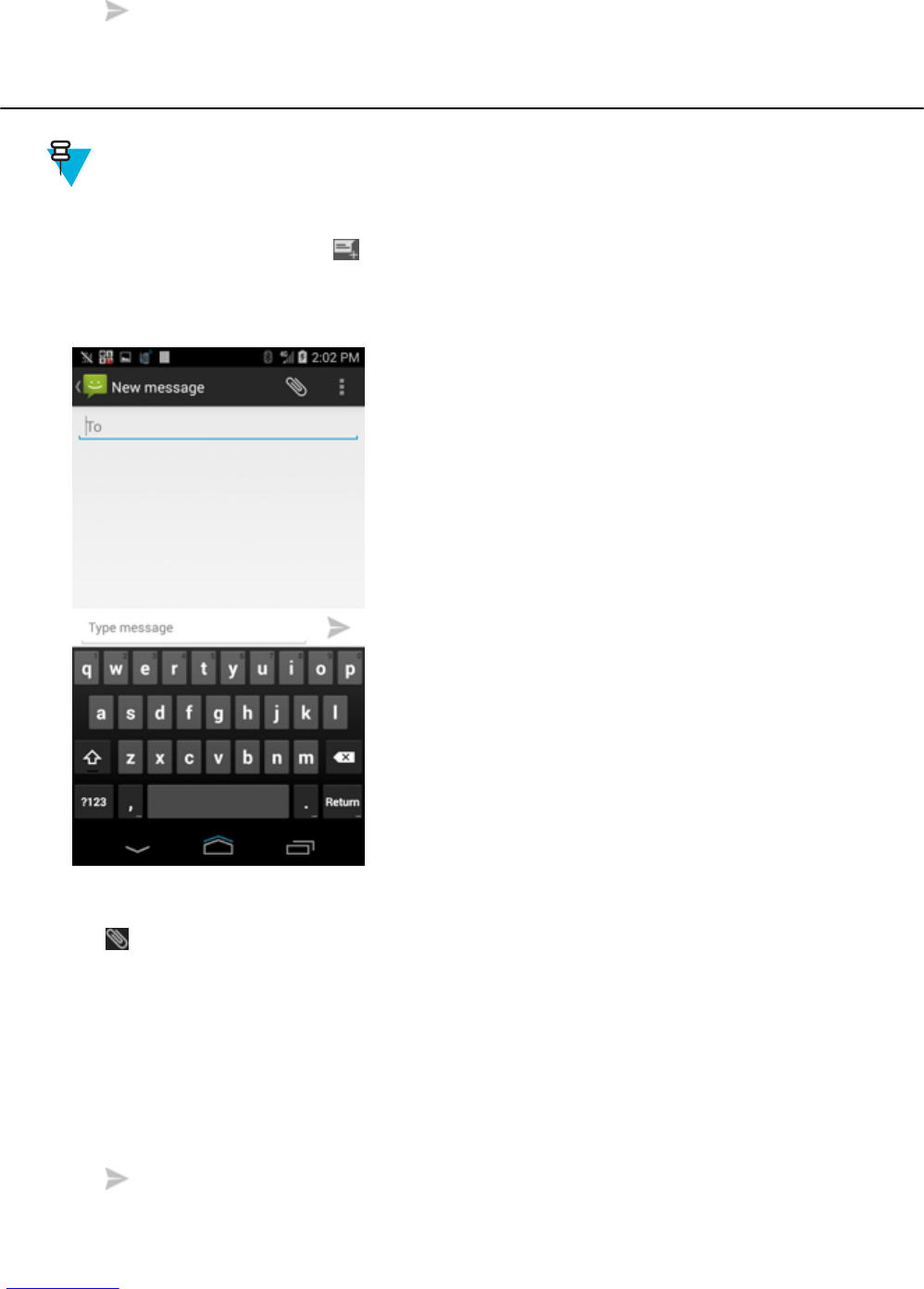
If the user presses the Back button while composing a message, it is saved as a draft in the Messaging screen. Tap
the conversation to resume composing it.
4Tap to send the message.
6.2 Sending a Multimedia Message
Note: Multimedia messaging is only supported when the LEX L10 is in Public network mode.
Procedure:
1In the main Messaging screen, tap .
The New Multimedia Message screen displays.
Figure 67: New Multimedia Message Screen
2In the To field, enter a name or a mobile phone number.
3Tap to attach the media file of your choice:
•Pictures — Select a picture to attach.
•Capture picture — Camera opens to take a picture and attach it.
•Videos — Select a video to attach.
•Capture video — Camcorder opens to record a video and attach it to the message.
•Audio — Choose a sound file to attach.
•Record audio — Sound Recorder opens to record a spoken message and attach it to the message.
•Slideshow — Opens a screen to assemble text, photos, videos, and recordings into a slideshow of up to 10
slides to attach to the message.
4Tap to send the message.
98 | Messaging
Send Feedback | February 2015 | MN001456A01-A
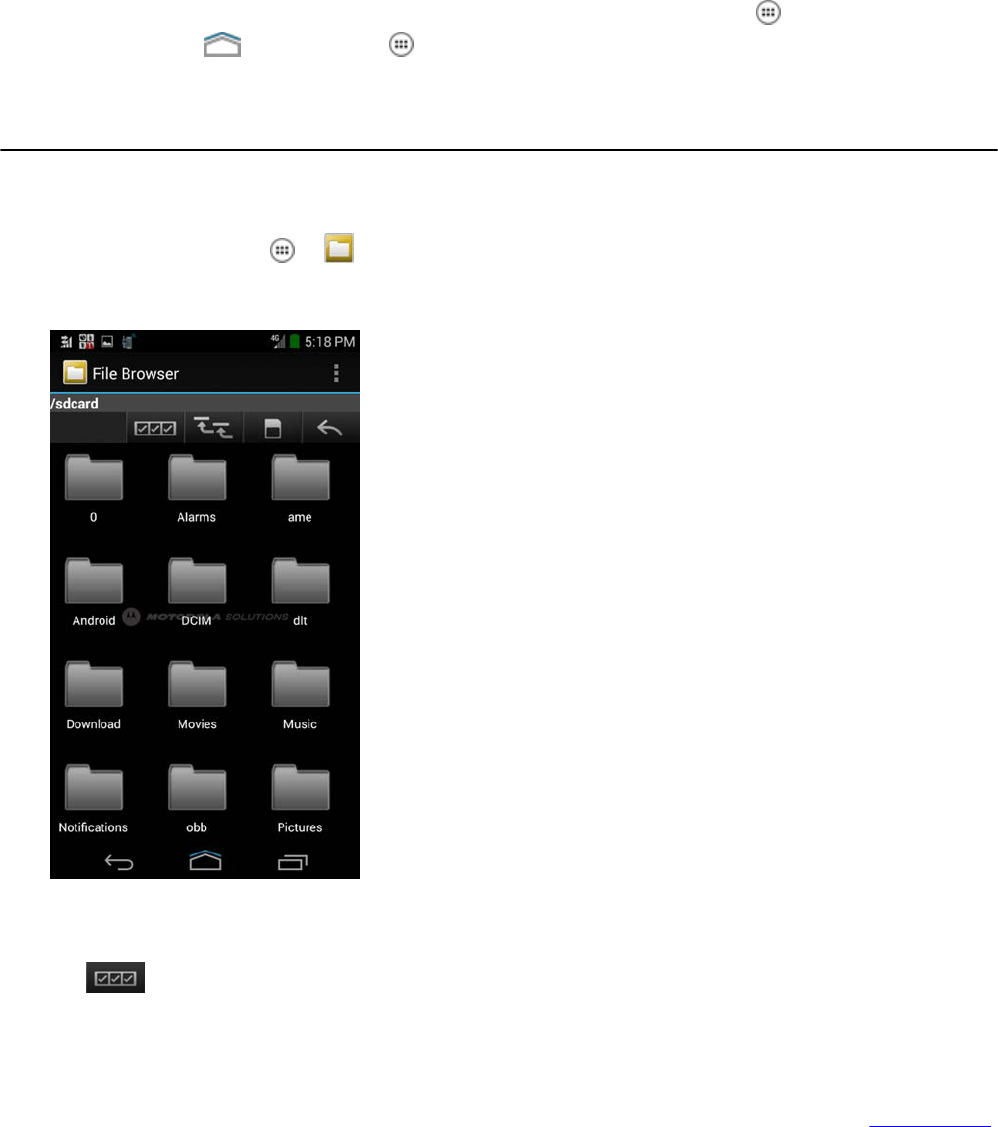
Chapter
7
Applications
This chapter describes the applications installed on the LEX L10.
Normally, you access the applications through the Home screen overlay by clicking the icon. Swipe the Home
screen up from the icon to reveal the icon.
7.1 File Browser
Use the File Browser application to view and manage files on the device.
To open File Browser, tap → .
Figure 68: File Browser Screen
The address bar indicates the current folder path. Tap the current folder path to manually enter a path and folder
name.
Tap to select multiple files/folder.
99 | Applications
MN001456A01-A | February 2015 | Send Feedback
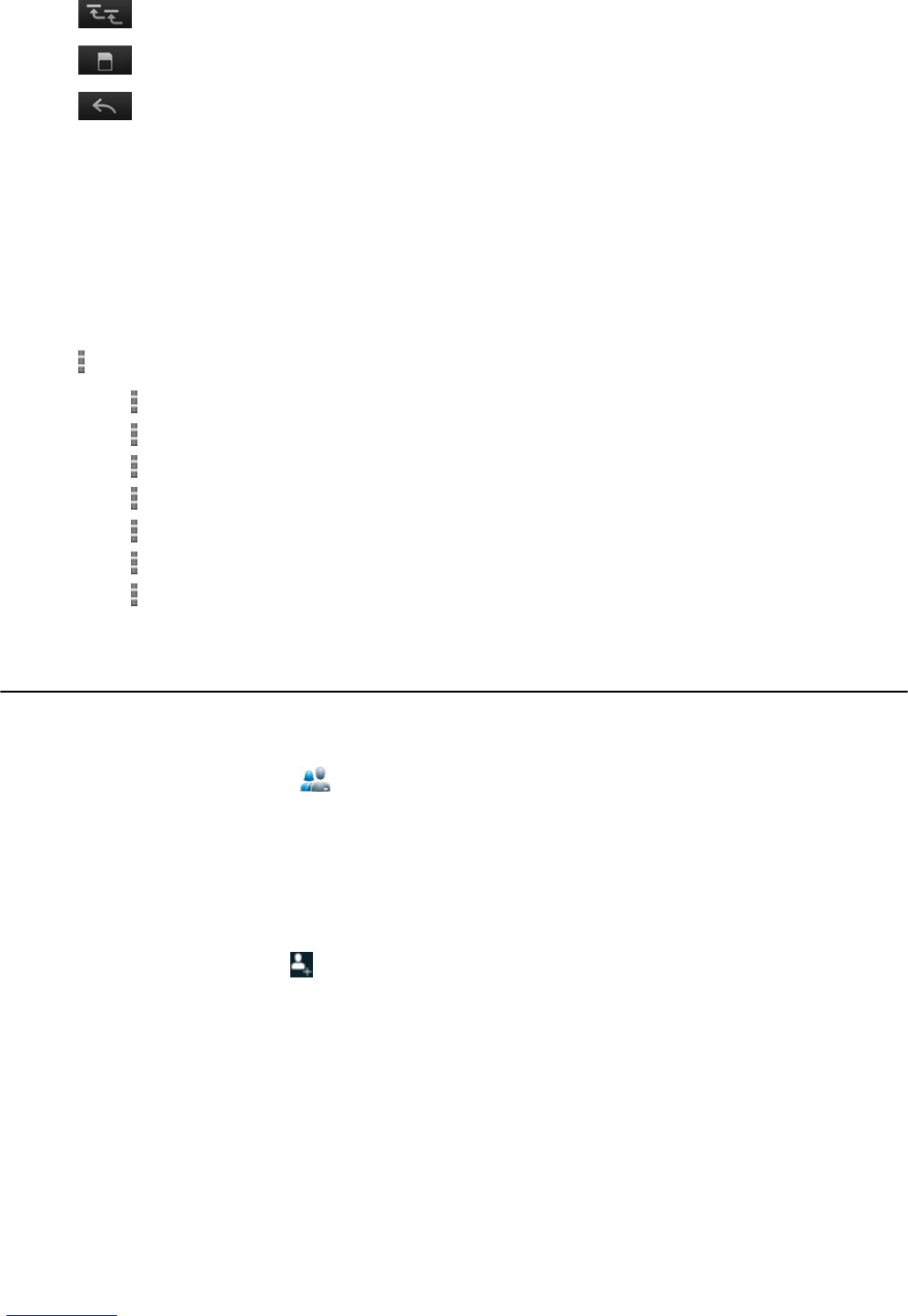
Tap to view the internal storage root folder.
Tap to view the microSD card root folder.
Tap to view the previous folder or to exit the application.
Tap and hold an item to perform an operation on that item. Select one of the options from the File Operations menu:
•Information — View detailed information about the file or folder.
•Move — Move the file or folder to a new location.
•Copy — Copy the select file.
•Delete — Delete the selected file.
•Rename — Rename the select file.
•Open as — Open the selected file as a specific file type.
•Share — Share the file with other devices.
Tap to open additional functionality:
•Tap the key → New Folder to create a new folder in the current folder.
•Tap the key → Search to search for a file or folder.
•Tap the key → Sort to sort the list by name, by type, by size or by date.
•Tap the key → Refresh to re-display the contents of the current folder.
•Tap the key → List View to change the folder view from tile to list format
•Tap the key → Change Size to change the size of the icons: Large, Normal or Small.
•Tap the key → About File Browser to view the application version information.
7.2 People
Use the People application to manage contacts.
From a Home or Apps screen, tap . The People application, displays four tabs at the top of the screen: Search,
Groups, All contacts, and Favorites. Tap the tabs to change how to view the contacts. Swipe up or down to scroll
through the lists.
7.2.1 Adding People
Procedure:
1In the People application, tap .
2If there are more than one account with contacts, tap the one to use.
3Type the contact’s name and other information. Tap a field to start typing, and swipe down to view all categories.
4Adding more than one entry for a category requires an additional step. For example:
• To add a work address after typing a personal address, tap Add new for that field.
• To open a menu with preset labels, such as Home or Work for an email address, tap the label to the right of
the item of contact information.
• To create your own label, tap Custom in the menu.
5Tap Done.
100 | Applications
Send Feedback | February 2015 | MN001456A01-A
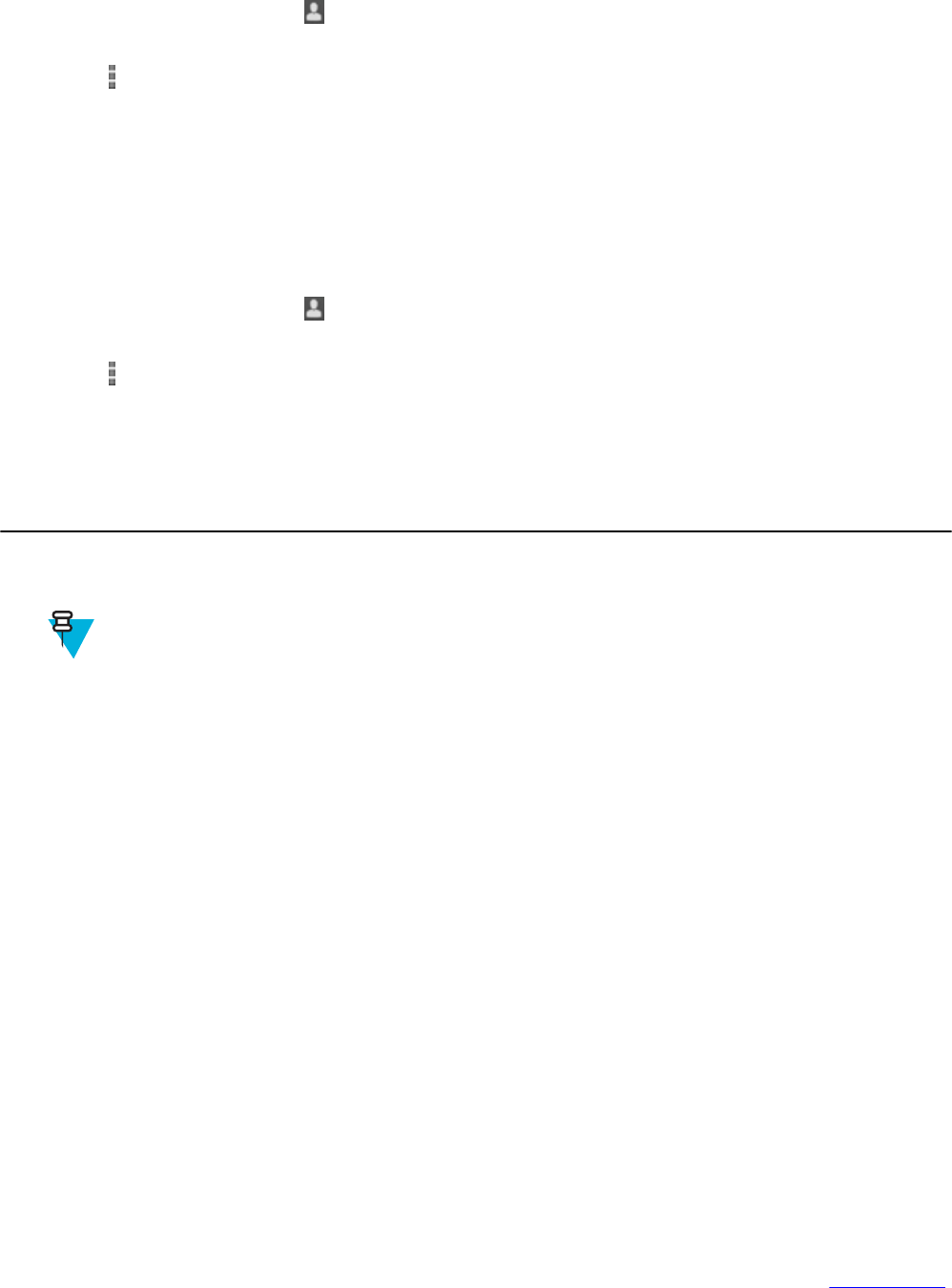
7.2.2 Editing People
Procedure:
1In the People application, tap tab.
2Tap a name to edit.
3Tap .
4Tap Edit.
5Edit the contact information.
6Tap Done.
7.2.3 Deleting People
Procedure:
1In the People application, tap tab.
2Tap a name to delete.
3Tap .
4Tap Delete.
5Tap OK to confirm.
7.3 Camera
This section provides information for taking photos and recording videos using the integrated digital cameras.
Note: If a microSD card is installed, the LEX L10 saves photos and videos on the microSD card. If a
microSD card is not installed, the LEX L10 saves photos and videos on the internal storage.
Applications | 101
MN001456A01-A | February 2015 | Send Feedback
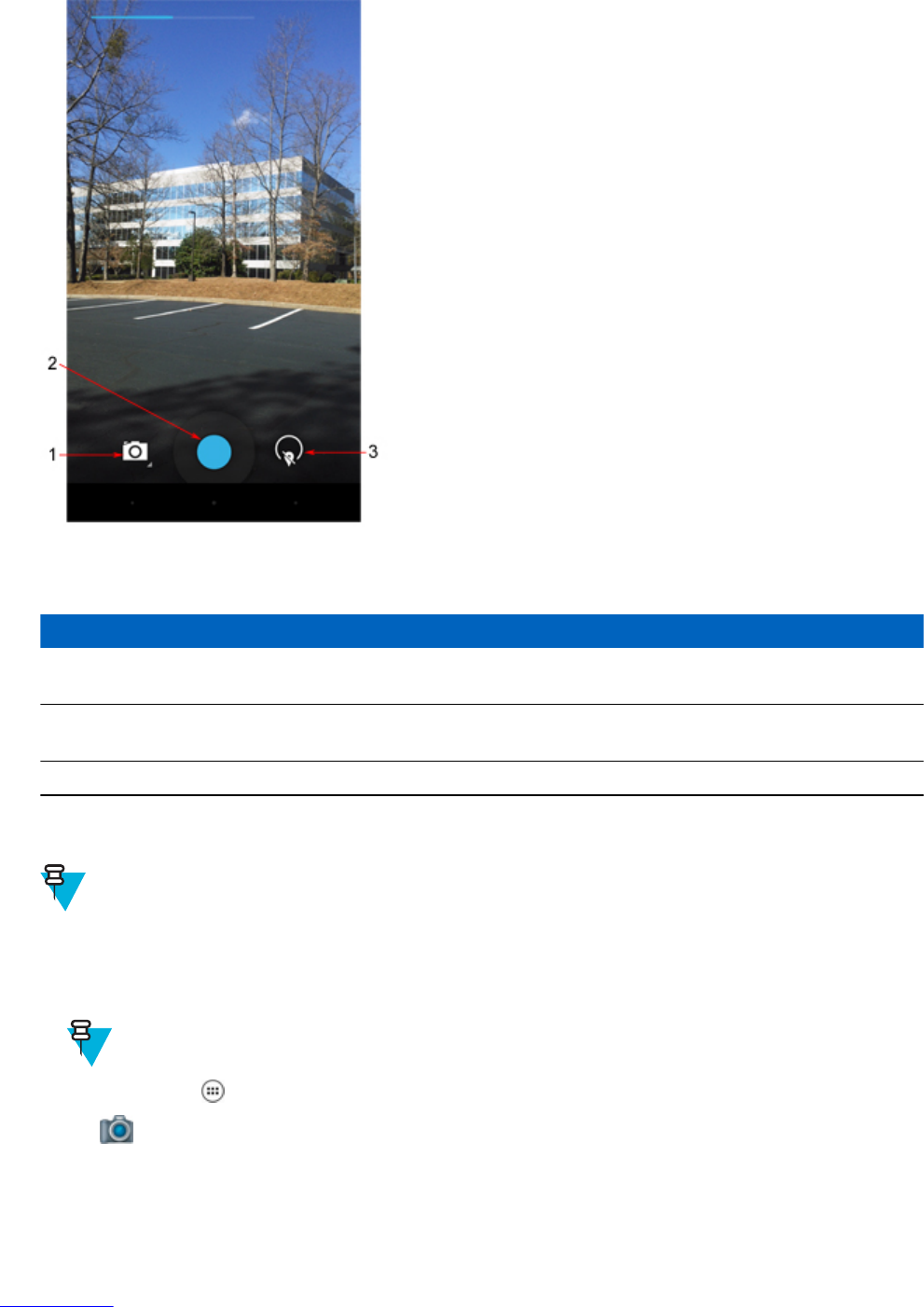
Figure 69: Camera Photo Screen
Table 9: Camera Icons and Actions
Call Out Icon Action
1 Camera Options Tap to select Camera, Video, or Pan-
orama mode.
2 Shutter Tap to take a photo, a panoramic
photo, or to record a video.
3 Photo Settings Tap to select camera settings.
7.3.1 Taking Photos
Note: Camera settings are described in Camera Settings on page 106.
Procedure:
1To use the camera, hold the camera in portrait or landscape position and press the Volume button on the LEX
L10.
Note: The Volume button also serves as the Camera button.
2Alternatively, tap .
3Tap .
The Camera screen is displayed.
102 | Applications
Send Feedback | February 2015 | MN001456A01-A
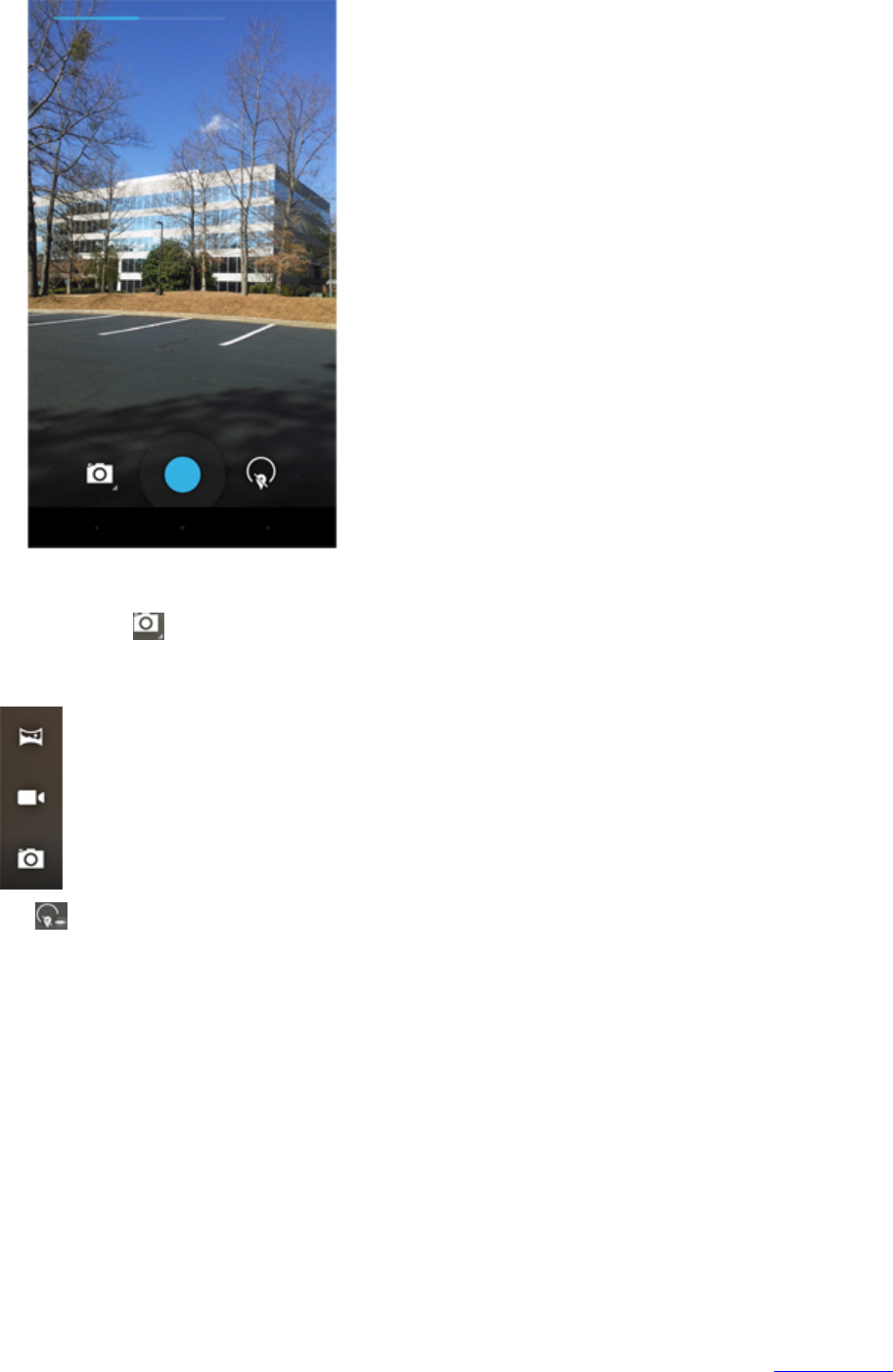
Figure 70: Camera Screen
4If necessary, tap to open the Camera Option bar and select Camera icon.
Figure 71: Camera Option Bar
5Tap for settings.
6Frame the subject on screen.
7To zoom in or out, press two fingers on the display and pinch or expand fingers.
The zoom controls appear on the screen.
Applications | 103
MN001456A01-A | February 2015 | Send Feedback

Figure 72: Camera Zoom
8Tap .
The camera brings the image into focus. When the image is in focus, the focus indicators (top and bottom of
screen) turn green and the camera takes a photo.
7.3.2 Taking a Panoramic Photo
Panorama mode lets you create a single wide image by panning slowly across a scene.
Procedure:
1Tap .
2Tap .
3Tap the Camera Options bar and tap .
Figure 73: Panoramic Mode
4Frame one side of the scene to capture.
104 | Applications
Send Feedback | February 2015 | MN001456A01-A
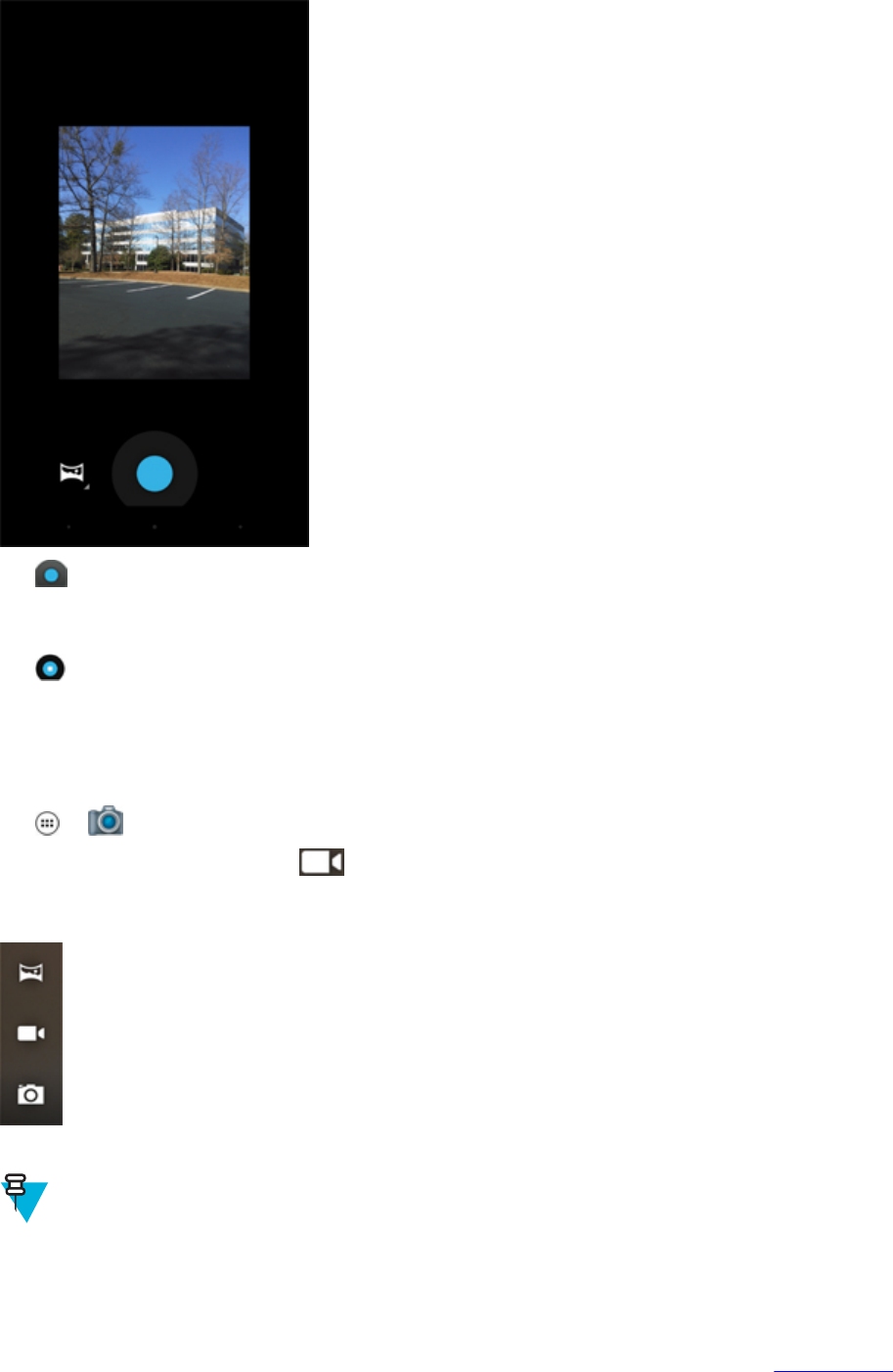
Figure 74: Panoramic Frame
5Tap and slowly start panning across the area to capture. A small white square appears inside the button the
shot is in progress.
If panning too quickly, the message Too fast displays.
6Tap to end the shot. The panorama is displayed and a progress indicator displays while it saves the image.
7.3.3 Recording Videos
Procedure:
1Tap → .
2Tap the Camera Options bar and tap .
Figure 75: Video Mode
3To zoom in or out, press two fingers on the display and pinch or expand fingers.
Note: Video zoom works the same as camera zoom.
4Point the camera and frame the scene.
Applications | 105
MN001456A01-A | February 2015 | Send Feedback
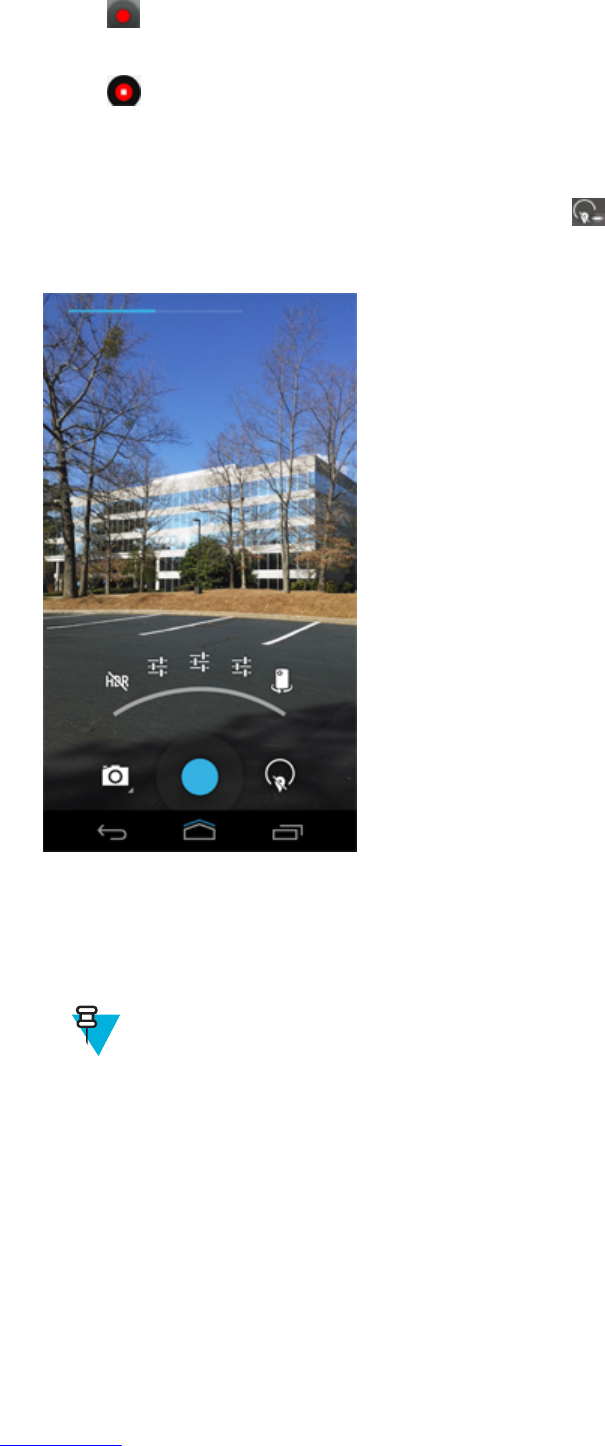
5Tap to start recording.
The device starts recording the video. The video time remaining appears in the top left of the screen.
6Tap to end recording.
7.3.4 Camera Settings
When in Photo mode, photo settings are displayed on screen. Tap to display the photo settings options.
Figure 76: Camera Settings
The available photo settings are (from left icon to right icon):
•Turn HDR on or off.
• Three screens of More Options. Settings for each option depend on the selected option. You may be required to
select an item from a menu or you can select an option by tapping it.
Note: These options are similar to the camera options seen on most cameras. Set accordingly.
- First More Options Screen.
106 | Applications
Send Feedback | February 2015 | MN001456A01-A
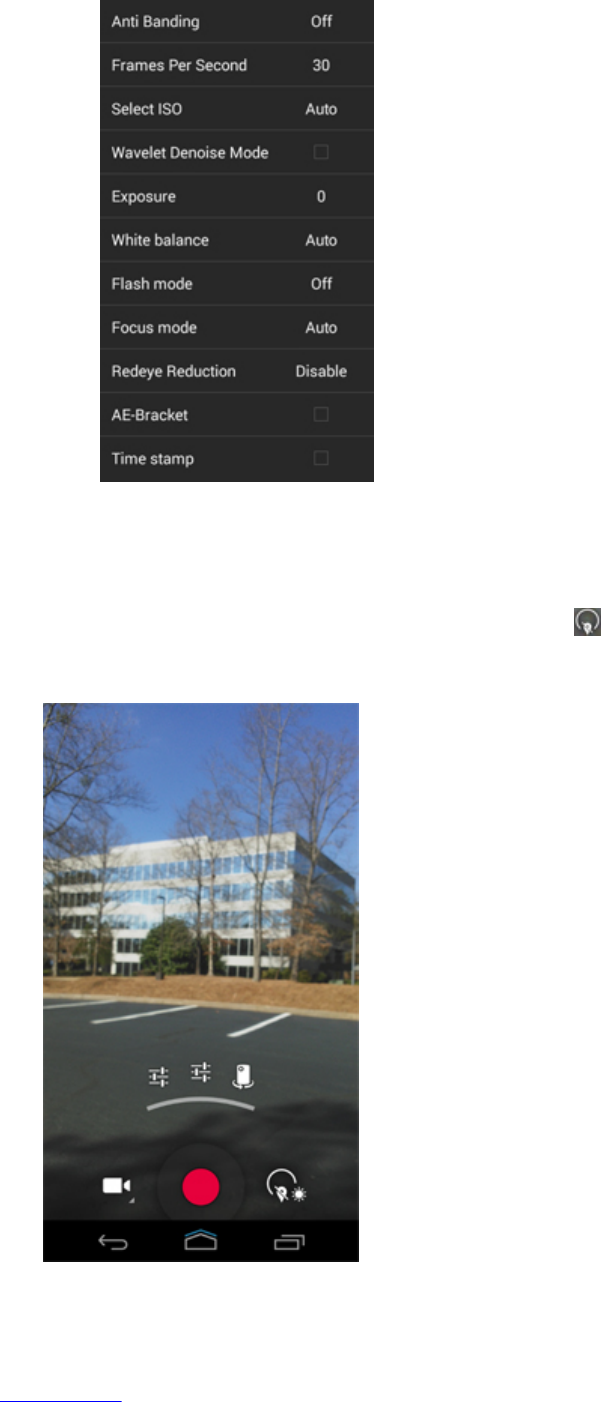
Figure 79: Third More Options Screen
• Switch from front to rear camera or from rear to front camera.
7.3.5 Video Settings
When in Video mode, video settings are displayed on screen. Tap to display the video settings options.
Figure 80: Video Settings
The available video settings are (from left icon to right icon):
108 | Applications
Send Feedback | February 2015 | MN001456A01-A
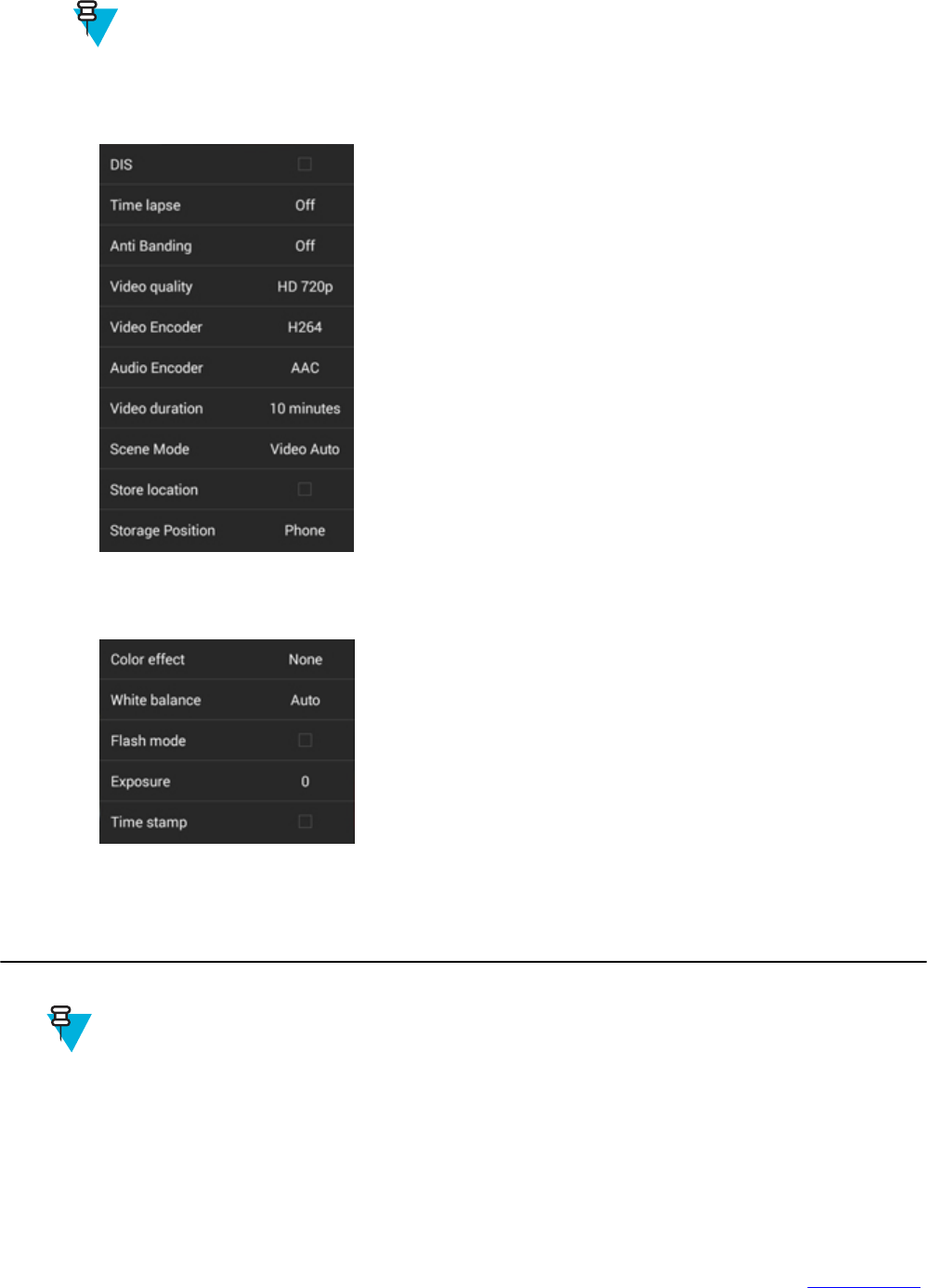
• Two screens of More Options. Settings for each option depend on the selected option. You may be required to
select an item from a menu or you just select an option by clicking on it.
Note: These options are similar to the video options seen on most cameras. You should set accordingly.
- First More Options Screen.
Figure 81: First More Options Video Screen
- Second More Options Screen.
Figure 82: Second More Options Video Screen
• Switch from front to rear video or from rear to front video.
7.4 Gallery
Note: The device supports the following image formats: JPEG, GIF, PNG, and BMP.
Use the Gallery to:
•View photos
• Play videos
• Perform basic editing of photos
• Set photos as wallpaper
Applications | 109
MN001456A01-A | February 2015 | Send Feedback

• Set photos as a contact photo
•Share photos and videos
To open the Gallery application, tap → .
The Gallery presents all photos and videos stored on the microSD card and internal memory.
Figure 83: Gallery — Albums
• Tap an album to open it and view its contents. The photos and videos in the album are displayed in chronological
order.
• Tap a photo or video in an album to view it.
• Tap icon (top left corner) to return to the main Gallery screen.
•Tap to return to the main Gallery screen.
7.4.1 Working with Albums
Albums are groups of images and videos in folders.
Tap an album to open it. The photos and videos are listed in a chronologically ordered grid. The name of the album
displays at the top of the screen.
110 | Applications
Send Feedback | February 2015 | MN001456A01-A
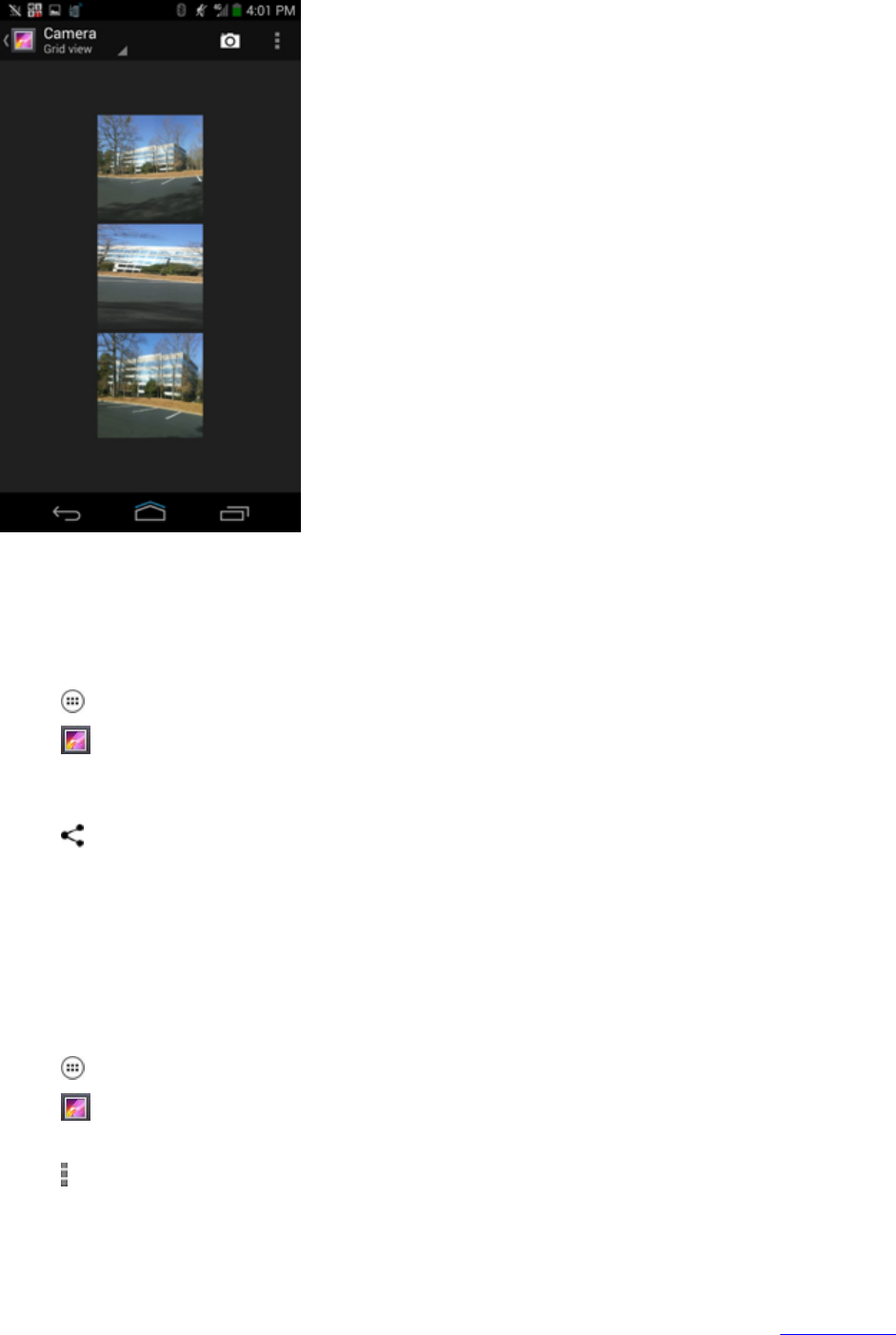
Figure 84: Photos/Videos Inside an Album
Swipe left or right to scroll images across the screen.
7.4.1.1 Sharing an Album
Procedure:
1Tap .
2Tap .
3Tap and hold an album until it highlights.
4Tap other albums as required.
5Tap .
Share applications are displayed.
6Select the application that you want to use.
7Follow the instructions within the selected application.
7.4.1.2 Getting Album Information
Procedure:
1Tap .
2Tap .
3Tap and hold an album until it highlights.
4Tap .
5Tap Details.
Applications | 111
MN001456A01-A | February 2015 | Send Feedback

7.4.1.3 Deleting an Album
Procedure:
1Tap .
2Tap .
3Tap and hold an album until it highlights.
4Tap .
5Tap Delete.
6Tap OK to delete the album.
7.4.2 Working with Photos
Use Gallery to view photos on the microSD card and edit and share photos.
7.4.2.1 Viewing and Browsing Photos
Procedure:
1Tap .
2Tap .
3Tap an album to open it.
4Tap a photo.
Figure 85: Photo Example
5Swipe left or right to view the next or previous photo in the album.
112 | Applications
Send Feedback | February 2015 | MN001456A01-A

6Turn the LEX L10 to view the photo in upright (portrait) or sideways (landscape) orientation. The photo is
displayed (but not saved) in the new orientation.
7Tap the photo to view the controls.
8Double-tap the screen to zoom in or pinch two fingers together or spread them apart to zoom in or out.
9Drag the photo to view parts that are not in view.
7.4.2.2 Rotating a Photo
Procedure:
1Tap a photo to view the controls.
2
Tap .
3Tap .
4Tap .
The photo rotates 90° clockwise. Each tap rotates the photo another 90°. The photo is automatically saved with the
new orientation.
7.4.2.3 Cropping a Photo
Procedure:
1In the Gallery, tap a photo to view the controls.
2
Tap .
3Tap .
4Tap ).
The cropping grid displays.
Applications | 113
MN001456A01-A | February 2015 | Send Feedback

Figure 86: Cropping Grid
5Adjust the endpoints to select the portion of the photo to crop.
6Tap CROP to save a copy of the cropped photo.
The original version is retained.
7.4.2.4 Setting a Photo as a Contact Icon
Procedure:
1Tap .
2Tap .
3Tap an album to open it.
4Tap the photo to open it.
5Tap .
6Tap Set picture as.
7Select a contact.
8Crop the photo accordingly as described in Cropping a Photo on page 113.
9Tap SAVE.
7.4.2.5 Sharing a Photo
Procedure:
1Tap .
2Tap .
114 | Applications
Send Feedback | February 2015 | MN001456A01-A

3Tap an album to open it.
4Tap a photo to open it.
5Tap .
6Tap the application to use for sharing the selected photo (for example Bluetooth).
7.4.2.6 Deleting a Photo
Procedure:
1Tap .
2Tap .
3Tap an album to open it.
4Tap a photo to open it.
5Tap .
6Tap Delete.
7Tap OK to delete the photo.
7.4.3 Working with Videos
Use the Gallery to view videos on the microSD card and share videos.
7.4.3.1 Watching a Video
Prerequisites: OPTIONAL TAG: insert pre requisites here - or delete this tag
When and where to use: OPTIONAL TAG: insert context here - or delete this tag
Procedure:
Type step command here
OPTIONAL TAG: Type additional step information here e.g. notes - or delete this tag
OPTIONAL TAG: Type task result here - or delete this tag
Postrequisites: OPTIONAL TAG: insert post requisites here - or delete this tag
7.4.3.2 Sharing a Video
Procedure:
1Tap .
2Tap .
3Tap an album to open it.
4Tap a video to open it.
5Tap .
The Share menu appears.
6Tap the application to use to share the selected video.
The selected application opens with the video attached to a new message.
Applications | 115
MN001456A01-A | February 2015 | Send Feedback
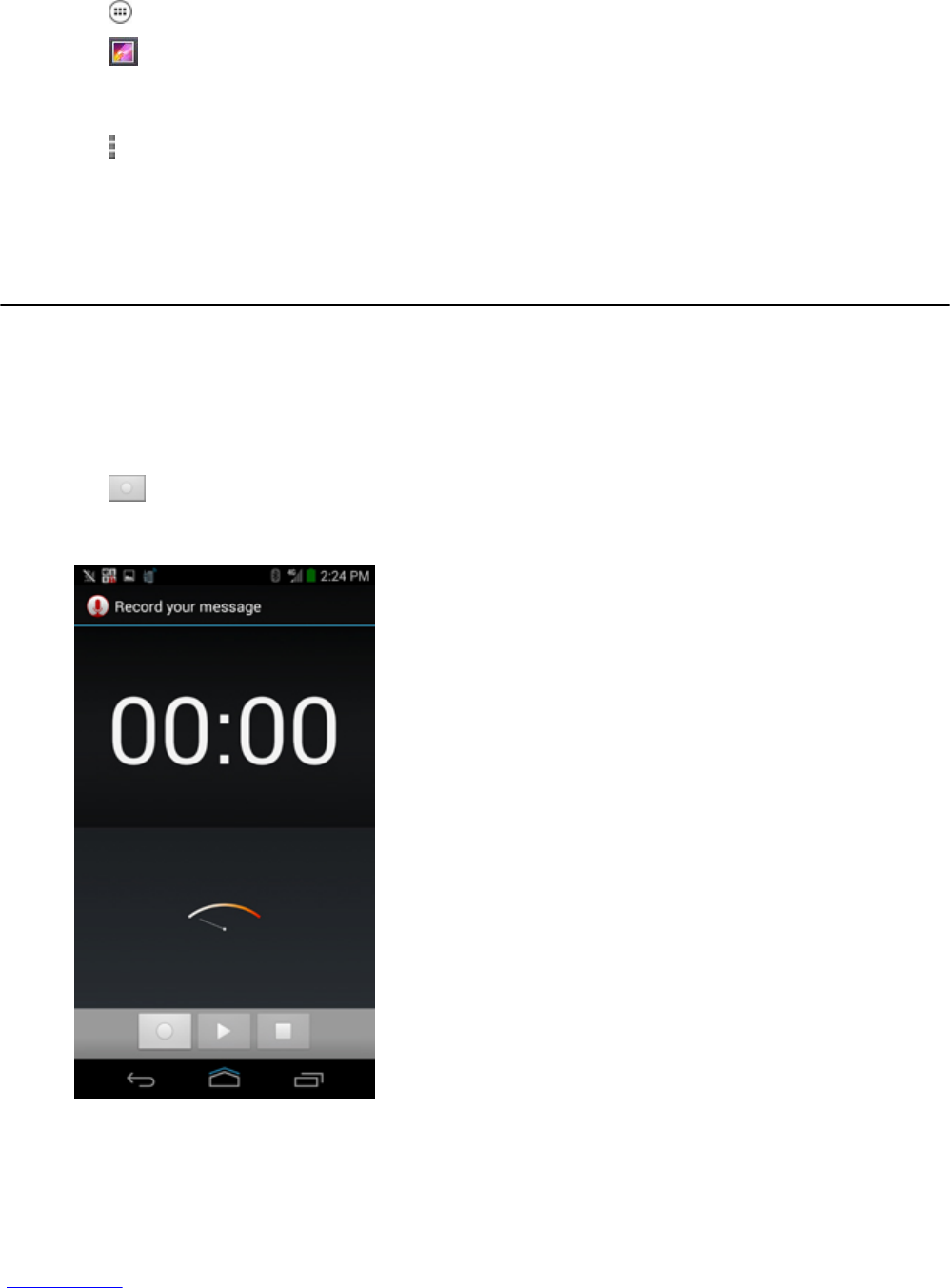
7.4.3.3 Deleting a Video
Procedure:
1Tap .
2Tap .
3Tap an album to open it.
4Tap a video to open it.
5Tap .
6Tap Delete.
7Tap OK.
7.5 Sound Recorder
Use Sound Recorder to record audio messages.
Recordings are saved on the microSD card (if installed) or the Internal Storage and available in the Music application
playlist titled My Recordings.
The recording process is done in four stages.
1Tap to start a recording.
Figure 87: Start Recording
2Record your message.
116 | Applications
Send Feedback | February 2015 | MN001456A01-A
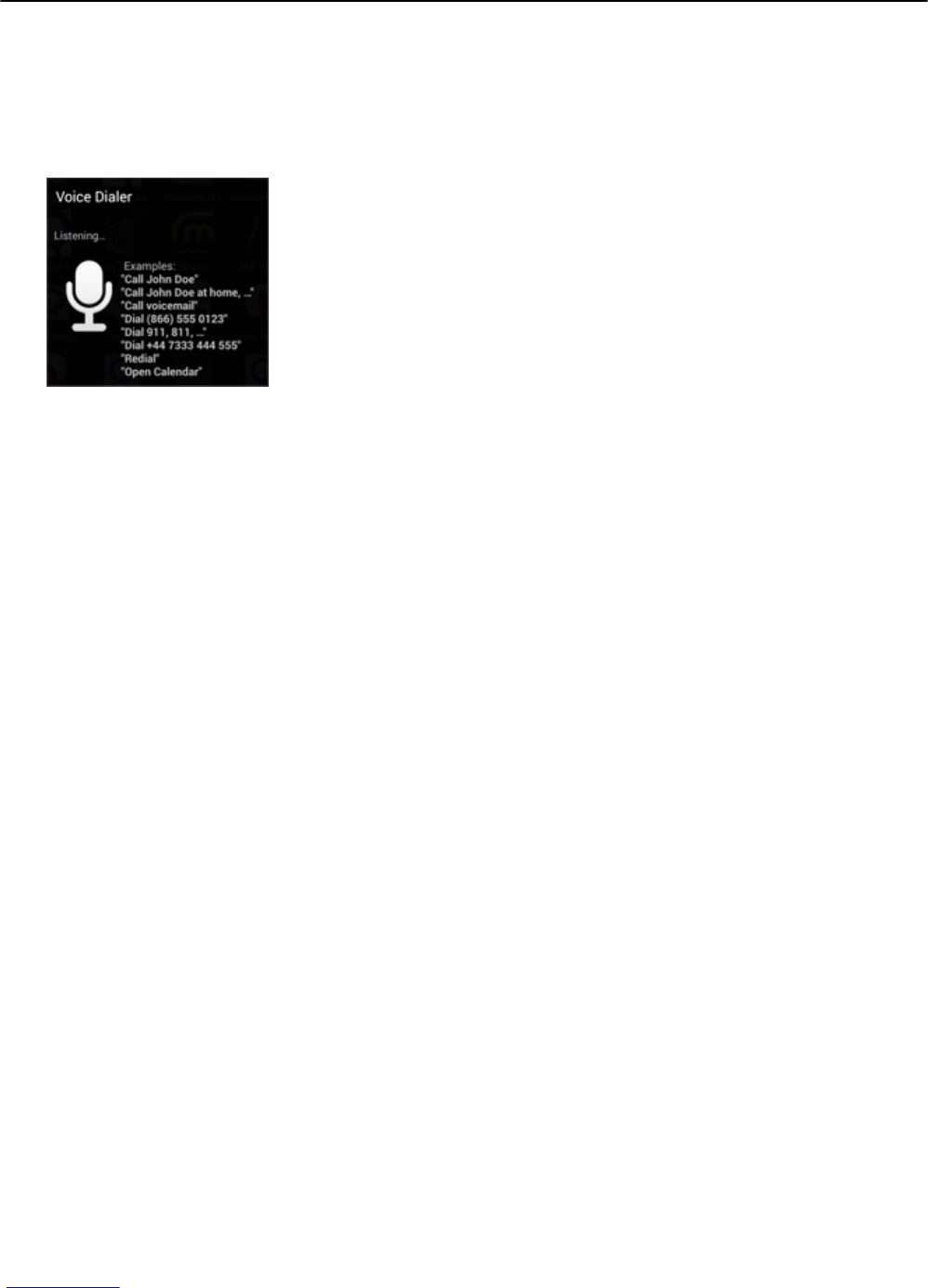
7.6 Voice Dialer
Voice Dialer is a speech dialog system that provides natural human interface for users to communicate seamlessly
with the device. Users can make phone calls, look up contact information, launch programs or check calendars.
To initiate Voice Dialer, tap Voice Dialer or press the call button on a Bluetooth headset.
Figure 90: Voice Dialer Window
Say one of the following commands:
•Call
• Dial
• Redial
• Open
7.6.1 Calling a Person by Name
Procedure:
1Launch Voice Dialer.
2Say the name of the person that you want to call (for example, John Doe).
3In the Voice Dialer dialog box, tap Call John Doe.
The call is initiated.
7.6.2 Redialing a Previous Call
Procedure:
1Launch Voice Dialer.
2Say Redial.
3In the Voice Dialer dialog box, tap Redial .
The call is initiated.
7.6.3 Dialing by Number
Procedure:
1Launch Voice Dialer.
2Say Dial [phone number].
3In the Voice Dialer dialog box, tap the number that displays.
The call is initiated.
118 | Applications
Send Feedback | February 2015 | MN001456A01-A

Chapter
8
Wireless
This section provides information on the wireless features:
•Wireless Wide Area Network (WWAN)
• Wireless Local Area Network (WLAN)
• Bluetooth
8.1 Wireless Wide Area Networks
Use Wireless Wide Area Networks (WWANs) to access data over a cellular network. This section provides
information on:
•Setting the preferred network Public / Private
• Sharing a data connection
• Enabling / Disabling data roaming
• Monitoring data usage
• Limiting connections to 2G, 3G, 4G networks
• Editing Access Point Names (APNs)
• Adding Virtual Private Network VPN
• Cellular broadcasts
8.1.1 Sharing the Mobile Data Connection
The Tethering & portable hotspot settings allow you to share your data connection. You can share the LEX L10
mobile data connection with a single computer via USB tethering or Bluetooth tethering. You can also share the data
connection with up to eight devices at once, by turning it into a portable WiFi hotspot. While the LEX L10 is sharing
its data connection, an icon appears at the top of the screen and a corresponding message appears in the notification
list.
8.1.1.1 USB Tethering
Note: USB tethering is not supported on computers running Mac OS. If your computer is running
Windows 7 or a recent version of Linux (such as Ubuntu), follow these instructions without any special
preparation. If running a version of Windows that precedes Windows 7, or some other operating system,
you may need to prepare the computer to establish a network connection via USB.
Note: After connecting the LEX L10 to a computer using USB tethering, the computer disconnects from
the network connection, for a short time, and does not have access to the Internet (the LEX L10 becomes
the primary network adapter).
Procedure:
1Connect the LEX L10 to a host computer with the USB cable.
121 | Wireless
MN001456A01-A | February 2015 | Send Feedback
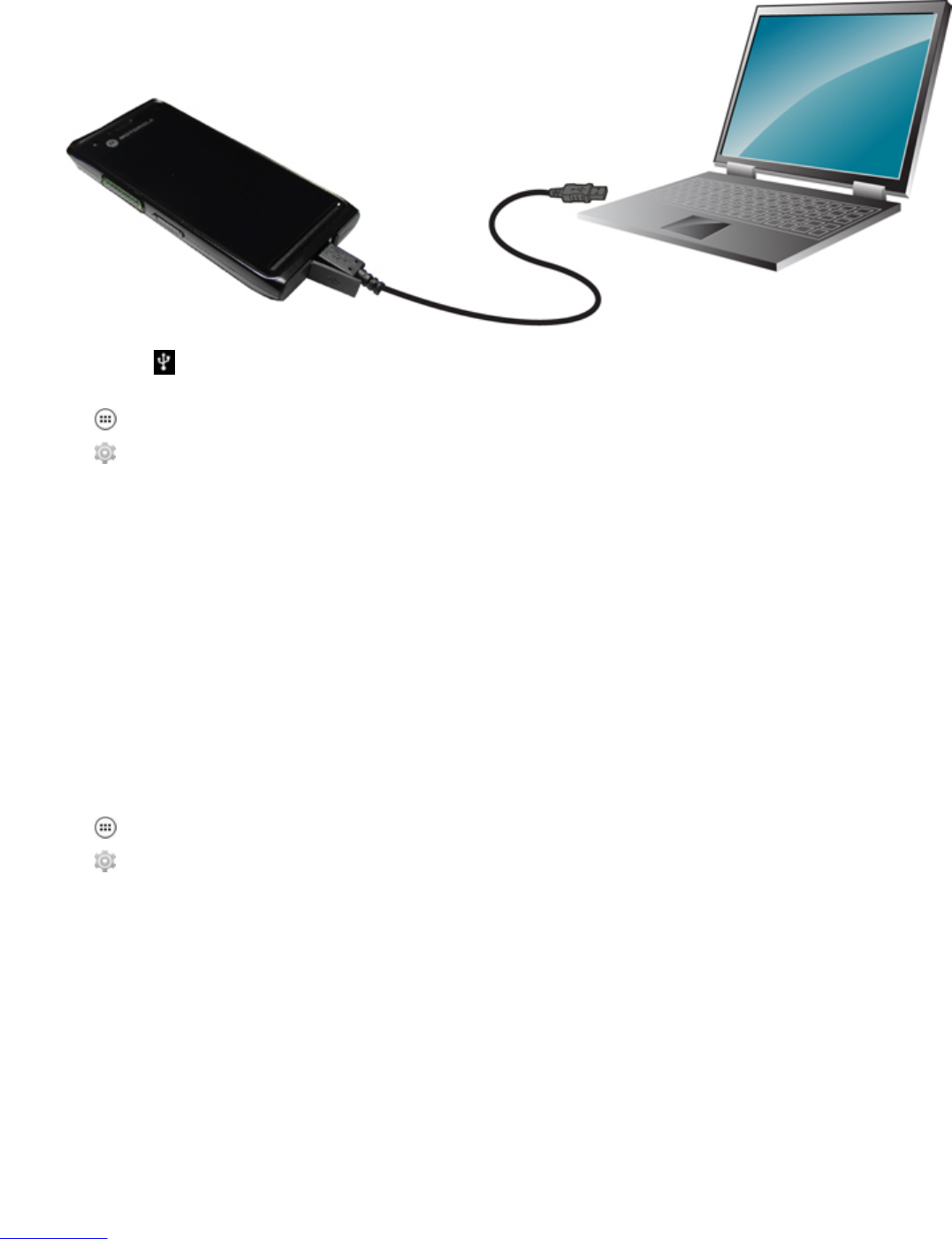
Figure 91: USB Cable Connection to Host Computer
A USB icon appears at the top of the screen, and the notification Connected as a media device appears briefly
at the top of the screen.
2Tap .
3Tap .
4Tap More ... .
5Tap Tethering & portable hotspot.
6Check USB tethering.
The host computer is now sharing the LEX L10 data connection.
Postrequisites: To stop sharing the data connection, uncheck USB tethering or disconnect the USB cable.
8.1.1.2 Bluetooth Tethering
Use Bluetooth tethering to share the data connection with a host computer.
Prerequisites: Configure the host computer to obtain its network connection using Bluetooth. For more information,
see the host computer’s documentation.
Procedure:
1Pair the LEX L10 with the host computer.
2Tap .
3Tap .
4Tap More ... .
5Tap Tethering & portable hotspot.
6Check Bluetooth tethering.
The host computer is now sharing the LEX L10 data connection.
Postrequisites: To stop sharing the data connection, uncheck Bluetooth tethering .
8.1.1.3 Portable WiFi Hotspot
Prerequisites: Configure the WiFi Hotspot settings.
122 | Wireless
Send Feedback | February 2015 | MN001456A01-A
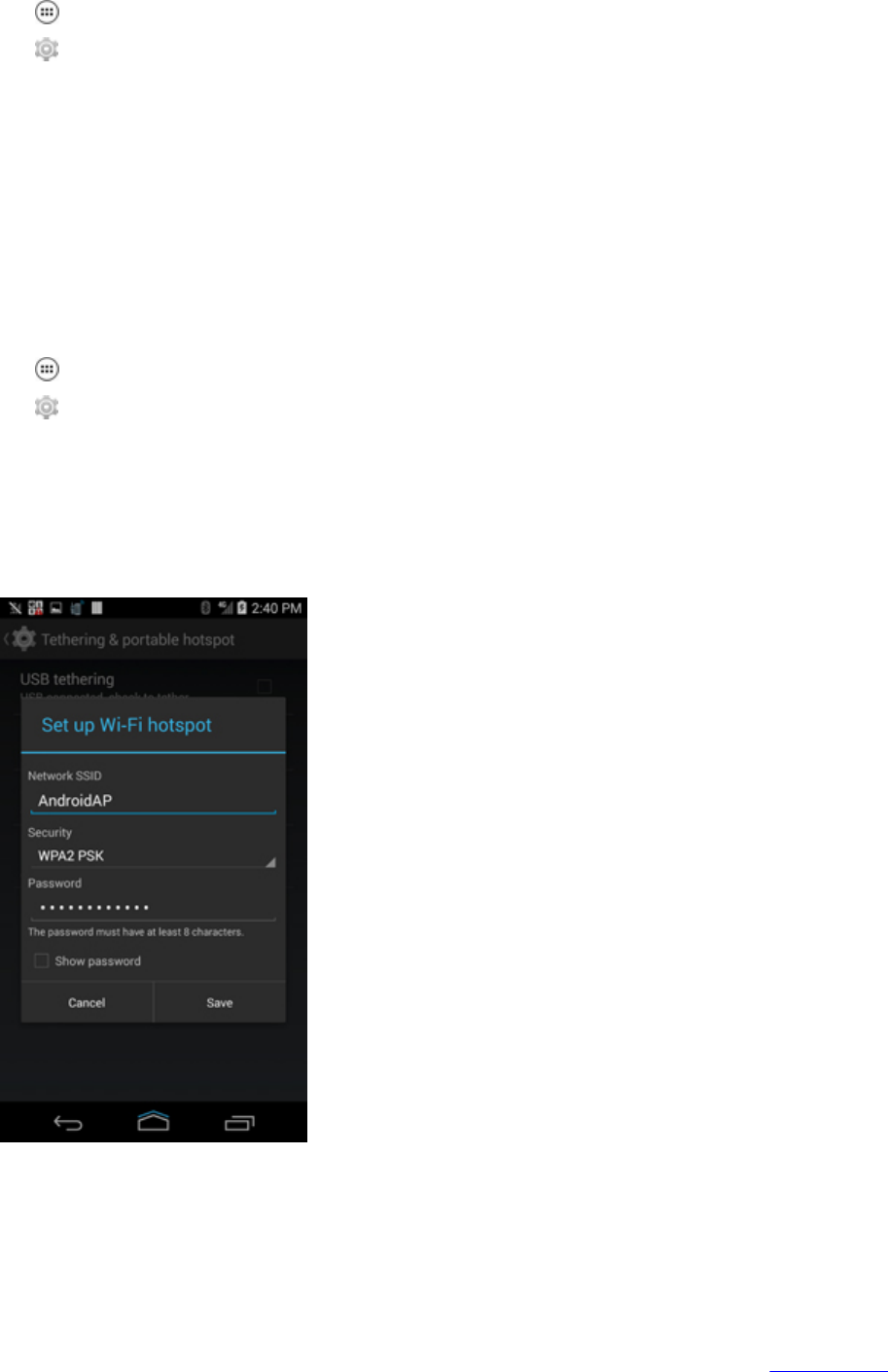
Procedure:
1Tap .
2Tap .
3Tap More ... .
4Tap Tethering & portable hotspot.
5Check Portable WiFi hotspot.
After a moment, the LEX L10 starts broadcasting its WiFi network name (SSID), so you can connect to it with up
to eight computers or other devices.
Postrequisites: To stop sharing the data connection, uncheck Portable WiFi hotspot.
8.1.1.3.1 Configuring the WiFi Hotspot
Procedure:
1Tap .
2Tap .
3Tap More ... .
4Tap Tethering & portable hotspot.
5Tap Set up WiFi hotspot.
The Set up WiFi hotspot screen displays.
Figure 92: Set up WiFi Hotspot Dialog Box
6In the Network SSID text field, edit the network name.
7Tap the Security option and select a security method from the drop-down list.
•Open
Wireless | 123
MN001456A01-A | February 2015 | Send Feedback

•WPA2 PSK.
8In the Password text field, enter a password.
Note: If Open is selected in the Security option, a password is not required.
9Tap Save.
8.1.2 Data Usage
Data usage refers to the amount of data uploaded or downloaded by the LEX L10 during a given period. Depending
on the wireless plan, you may be charged additional fees when your data usage exceeds your plan's limit. To monitor
your data usage, go to → Data usage.
Caution: The usage displayed on the data usage settings screen is measured by your device. Your carrier's
data usage accounting may differ. Usage in excess of your carrier plan's data limits can result in steep
overage charges. The feature described here can help you track your usage, but is not guaranteed to prevent
additional charges.
Data usage settings allow you to:
• Set the data usage level at which you' will receive a warning.
• Set a data usage limit.
• View or restrict data usage by app.
• Identify mobile hotspots and restrict background downloads that may result in extra charges.
By default, when you open the data usage settings screen you see the settings for mobile data: that is, the data network
or networks provided by your carrier.
Just below the on-off switch, note the data usage cycle. Tap it to choose a different cycle. This date range is the period
of time for which the graph displays data usage.
The vertical white lines on the graph show a period of time within the data usage cycle. This range determines the
usage amount displayed just below the graph. Drag lines to change the period.
8.1.2.1 Setting Data Usage Warning
When and where to use: Use this procedure to set data usage warning:
Procedure:
1Tap .
2Tap .
3Tap Data usage.
4Check Set mobile data limit.
5Drag the red line up/down to the level where you want to limit.
6Drag the orange line up/down to the level where you want to receive a warning. When your data usage reaches
this level, you' will receive a notification.
124 | Wireless
Send Feedback | February 2015 | MN001456A01-A

8.1.2.2 Setting Auto-Sync
You can also conserve data usage by syncing your apps manually, only when you need the data, rather than relying on
auto-sync.
When and where to use: Use this procedure to set Auto-Sync.
Procedure:
To turn auto-sync off or on, tap → Auto-sync data.
8.1.3 Disabling Data When Roaming
To prevent the LEX L10 from transmitting data over other carriers’ mobile networks when leaving an area that is
covered by the carrier’s networks. This is useful for controlling expenses if the service plan does not include data
roaming.
Procedure:
1Tap .
2Tap .
3Tap More... .
4Tap Mobile networks.
5Un-check Data roaming.
6Tap .
8.1.4 Limiting Data Connection to a Network
Note: This feature is only available on some networks. Check with service provider.
You can limit the device Private or Public services or extend the battery life by limiting the data connections to 2G
networks (GPRS or EDGE). For example, when connected to a 2G network, the user may want to postpone activities
that transmit a lot of data, such as sending, uploading, or downloading pictures or video, until they are connected to a
faster mobile or other wireless network.
Procedure:
1Tap .
2Tap .
3Tap More ... .
4Tap Mobile networks.
5Tap Network Mode.
6Tap 2G only or 3G only or 4G only or let the LEX L10 select automatically by touching 2G/3G/4G auto.
7Tap .
8.1.5 Editing the Access Point Name
Note: Many service provider Access Point Name (APN) data are pre-configured in the LEX L10.
Wireless | 125
MN001456A01-A | February 2015 | Send Feedback

When network information needs to change, the user can edit the APN information.
Procedure:
1Tap .
2Tap .
3Tap More ... .
4Tap Mobile networks.
5Tap Access Point Names.
6Tap .
7When finished, tap .
8Tap Save.
9Tap the radio button next to the new APN name to start using it.
10 Tap .
8.1.6 Adding a Virtual Private Network (VPN)
A virtual private network (VPN) extends a private network across a public network. VPN enables the LEX L10 to
communicate data across a public network while benefiting from the functionality and security of the private network.
When connected by VPN, the LEX L10 establishes a virtual point-to-point connection through a dedicated virtual
tunneling protocols or data encryption. The LEX L10 enables connection to Basic VPN to communicate through any
VPN and to Motorola Solutions Mobile VPN (MVPN) to communicate through Motorola Solutions mobile VPN.
This section describes adding a basic VPN. Motorola Mobile VPN is added and configured by your technical support
and requires license certification for use.
When and where to use: Use this procedure to add a virtual private network to the LEX L10 (not including the
Motorola Mobile VPN).
Procedure:
1Tap .
2Tap .
3Tap More... .
4Tap VPN.
5Tap Basic VPN .
6Tap + to add VPN profile.
7Enter and check:
•Name
• Type
• Server Address
• If required, check PPP encryption (MPPE)
• If required, check Show advanced options to enter:
• DNS servers
• DNS search domains
• Forwarding routs
8Tap Save.
Connection to VPN is indicated by on the status bar and the Choose Certification screen is displayed.
9Check My Keychain and tap Allow.
10 Tap .
126 | Wireless
Send Feedback | February 2015 | MN001456A01-A

8.1.7 Cell Broadcasts
Cell Broadcasts allows emergency alert messages to be broadcast simultaneously from a service provider to multiple
users in within a designated geographical area. Broadcasts are often used for weather updates, regional events, traffic
conditions and other services.
When and where to use: Use this procedure to enable emergency alert messages by cell broadcasts on the LEX L10.
Procedure:
1Tap .
2Tap .
3Tap More... .
4Tap Cell broadcasts.
5Check the emergency alert types you want to receive.
6Tap .
8.2 Wireless Local Area Networks
Wireless local area networks (WLANs) allow the LEX L10 to communicate wirelessly inside a building. Before using
the LEX L10 on a WLAN, the facility must be set up with the required hardware to run the WLAN (sometimes
known as infrastructure). The infrastructure and the LEX L10 must both be properly configured to enable this
communication.
See the documentation provided with the infrastructure (access points (APs), access ports, switches, Radius servers,
etc.) for instructions on how to set up the infrastructure.
Once the infrastructure is set up to enforce the chosen WLAN security scheme, use the Wireless & networks
settings to configure the LEX L10 to match the security scheme.
The LEX L10 supports the following WLAN security options:
•Open
• Wireless Equivalent Privacy (WEP)
• WiFi Protected Access (WPA)/WPA2 Personal (PSK)
• Extensible Authentication Protocol (EAP)
- Protected Extensible Authentication Protocol (PEAP) — with Microsoft Challenge-Handshake Authentication
Protocol version 2 (MSCHAPv2) and Generic Token Card (GTC) authentication.
- EAP-Transport Layer Security (TLS)
- EAP-TTLS - with Password Authentication Protocol (PAP), MSCHAP and MSCHAPv2 authentication
The Status bar displays icons that indicate WiFi network availability and WiFi status.
Note: Turn off WiFi when not using it, to extend the life of the battery.
8.2.1 Scanning and Connecting to a WiFi Network
Procedure:
1Tap .
2Tap .
Wireless | 127
MN001456A01-A | February 2015 | Send Feedback
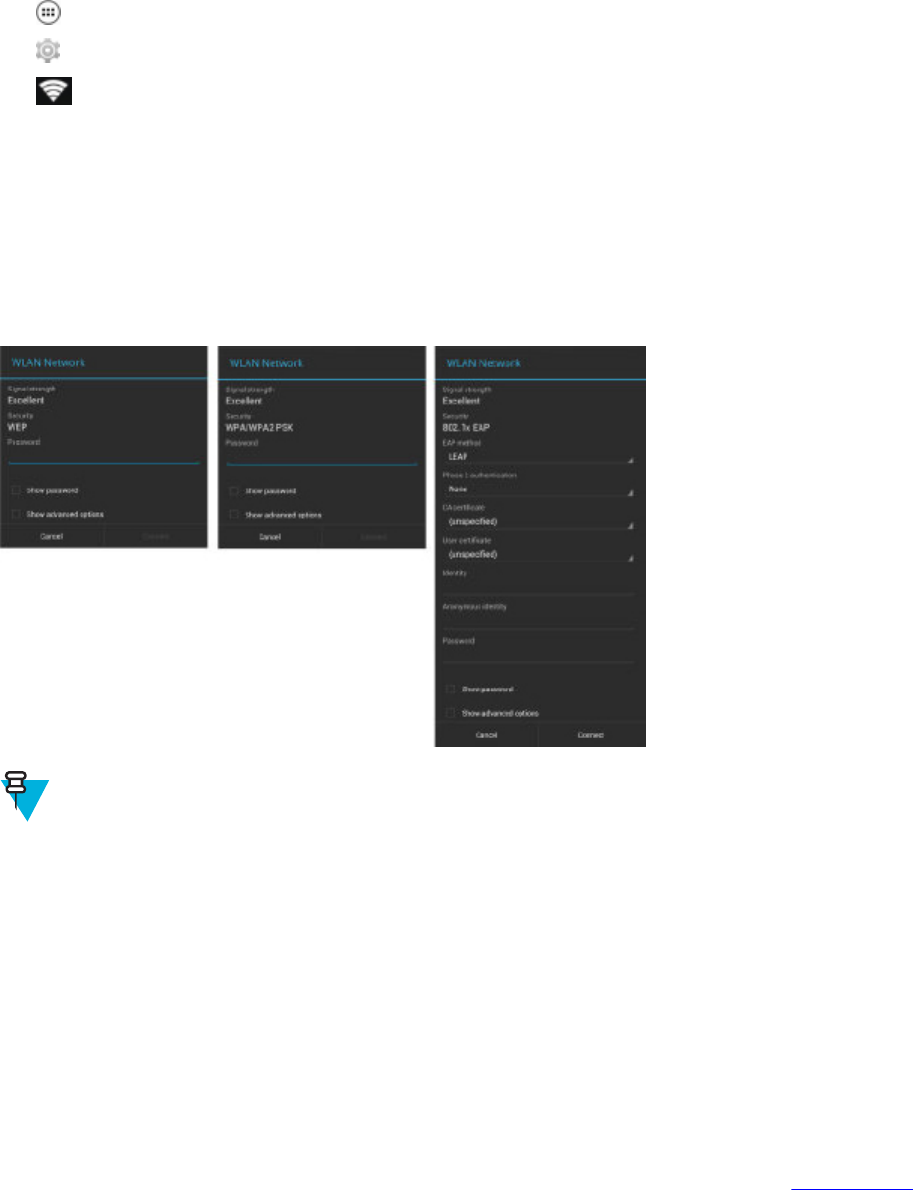
6For open networks, tap profile once or press and hold and then select Connect to network or for secure networks
enter the required password or other credentials then tap Connect. See technical support for more information.
The LEX L10 obtains a network address and other required information from the network using the dynamic host
configuration protocol (DHCP) protocol.
7In the WiFi setting field, Connected displays indicating that the LEX L10 is connected to the WLAN.
8.2.2 Configuring a WiFi Network
Procedure:
1Tap .
2Tap .
3Tap WiFi.
4Slide the switch to the ON position.
The LEX L10 searches for WLANs in the area and lists them on the screen.
5Scroll through the list and select the desired WLAN network.
6Tap the desired network.
If the network security is Open, the LEX L10 automatically connects to the network. For all other network
security a dialog box appears.
Figure 95: WLAN Network Security Dialog Boxes
Note: By default, the network Proxy is set to None and the IP settings is set to DHCP.
7If the network security is WEP or WPA/WPA2 PSK, enter the required password and then tap Connect.
8If the network security is 802.1x EAP, enter the information below and then tap Connect:
•Tap the EAP method drop-down list and select PEAP, TLS or TTLS.
• Tap the Phase 2 authentication drop-down list and select an authentication method.
• If required, tap CA certificate and select a Certification Authority (CA) certificate. Note: Certificates are
installed using the Security settings.
• If required, tap User certificate and select a user certificate. Note: User certificates are installed using the
Location & security settings.
Wireless | 129
MN001456A01-A | February 2015 | Send Feedback

• If required, in the Identity text box, enter the username credentials.
•If desired, in the Anonymous identity text box, enter an anonymous identity username
• If required, in the Password text box, enter the password.
9Tap .
8.2.3 Adding a WiFi Network
You can add a WiFi Network that is currently out of range or indiscoverable.
Procedure:
1Tap .
2Tap .
3Tap WiFi.
4Slide the WiFi switch to the On position.
5Tap +.
6Enter network SSID and select Security.
7Tap Save.
The LEX L10 connects to the wireless network.
8Tap .
8.2.4 Manually Adding a WiFi Network
Manually add a WiFi network if the network does not broadcast its name (SSID) or to add a WiFi network when out
of range.
Procedure:
1Tap .
2Tap .
3Tap WiFi.
4Slide the WiFi switch to the ON position.
5Tap + in the bottom right corner of the screen.
By default, the network Proxy is set to None and the IP settings is set to DHCP.
6In the Network SSID text box, enter the name of the WiFi network.
7In the Security drop-down list, select the type of security. Options included are:
•None
•WEP
•WPA/WPA2 PSK
•802.1x EAP
8If the network security is None, tap Save.
9If the network security is WEP or WPA/WPA2 PSK, enter the required password and then tap Save.
10 If the network security is 802.1x EAP enter the information below and then tap Save:
•Tap EAP method drop-down list and select PEAP, TLS or TTLS.
• Tap Phase 2 authentication drop-down list and select an authentication method.
• Tap CA certificate and select a Certification Authority (CA) certificate.
130 | Wireless
Send Feedback | February 2015 | MN001456A01-A

Note: Certificates are installed using the Security settings.
• Tap User certificate and select a user certificate.
Note: User certificates are installed using the Security settings.
• Tap Identity to enter the username credentials.
• Tap Anonymous to enter an anonymous identity username.
• Tap Password to enter password.
11 Tap .
8.2.5 Advanced WiFi Settings
Note: Advanced WiFi settings are for the device not for a specific wireless network.
Use the Advanced settings to configure additional WiFi settings. From the WiFi screen, tap → Advanced to view
the advanced settings.
•Network notification — When enabled, notifies the user when an open network is available.
•Keep WiFi on during sleep — Opens a menu to set whether and when the WiFi radio turns off.
-Always — The radio stays on when the device enters suspend mode.
-Only when plugged in — The radio stays on while the device is connected to external power.
-Never (increases data usage) — The radio turns off when the device enters suspend mode (default).
•WiFi optimization — Minimize the battery usage when WiFi is on.
•Avoid poor Connection — The LEX L10 connects to the internet only if connection is good.
•MAC address — Displays the Media Access Control (MAC) address of the device when connecting to WiFi
networks.
•IP address — Displays the IP address of the device when connecting to WiFi networks.
8.2.6 WLAN Configuration
Use the WLAN Configuration settings to configure additional WLAN settings. From the WiFi screen, tap →
Advanced to view the settings. The following two settings are used to configure WLAN:
•WiFi frequency band
-Auto (2.4GHz and 5GHz) —Use both the 2.4 GHz and 5 GHz bands (default).
-5Ghz Only — Use only the 5 GHz band.
-2.4Ghz Only —Use only the 2.4 GHz band.
•Keep WiFi on during sleep
-Always — WiFi is always enabled even in sleep mold.
-Only when plugged in — WiFi is enabled only when the LEX L10 is plugged in. If the LEX L10 is not
plugged in, the device will not enter the sleep mold.
-Never (increases data usage) — WiFi is never disabled.
8.2.7 Modifying a WiFi Network
The user can change settings and passwords for a network in the WiFi list.
Procedure:
1Tap .
Wireless | 131
MN001456A01-A | February 2015 | Send Feedback

2Tap .
3Tap WiFi.
4Slide the WiFi switch to the ON position.
5Tap and hold on a network name and then tap Modify network.
6Modify the network settings and then tap Save.
7Tap .
8.2.8 Removing a WiFi Network
Procedure:
1Tap .
2Tap .
3Tap WiFi.
4In the WiFi networks list, tap and hold the name of the network.
5In the menu, tap Forget network.
6Tap .
8.3 Bluetooth
Bluetooth-equipped devices can communicate without wires, using frequency-hopping spread spectrum (FHSS) radio
frequency (RF) to transmit and receive data in the 2.4 GHz Industry Scientific and Medical (ISM) band (802.15.1).
Bluetooth wireless technology is specifically designed for short-range (10 meters (32.8 feet) ) communication and
low power consumption.
Devices with Bluetooth capabilities can exchange information (e.g., files, appointments, and tasks) with other
Bluetooth enabled devices such as printers, access points, and other mobile devices.
The LEX L10 supports the following Bluetooth accessories:
•Motorola FINITI Bluetooth Headset
• Motorola H17
• Motorola H790
• Motorola Bluetooth Stereo Headphones S10-HD
• Motorola Bluetooth Hands Free Speaker T505
• Parrot Minikit Neo
• Zebra: MX220 and RW220
• Plantronics Voyager PRO+
• Jabra WAVE
The LEX L10 supports remote radio control over following Land Mobile Radios:
• APX 6000
• APX 6000XE
• APX 7000
• APX 7000XE
• APX 7000L
132 | Wireless
Send Feedback | February 2015 | MN001456A01-A

8.3.1 Adaptive Frequency Hopping
Adaptive Frequency Hopping (AFH) is a method of avoiding fixed frequency interferers, and can be used with
Bluetooth voice. All devices in the piconet (Bluetooth network) must be AFH-capable in order for AFH to work.
There is no AFH when connecting and discovering devices. Avoid making Bluetooth connections and discoveries
during critical 802.11b communications. AFH for Bluetooth consists of four main sections:
•Channel Classification - A method of detecting an interference on a channel-by-channel basis, or pre-defined
channel mask.
• Link Management - Coordinates and distributes the AFH information to the rest of the Bluetooth network.
• Hop Sequence Modification - Avoids interference by selectively reducing the number of hopping channels.
• Channel Maintenance - A method for periodically re-evaluating the channels.
When AFH is enabled, the Bluetooth radio “hops around” (instead of through) the 802.11b high-rate channels. AFH
coexistence allows Motorola Enterprise Tablets to operate in any infrastructure.
The Bluetooth radio in this device operates as a Class 2 device power class. The maximum output power is 2.5 mW
and the expected range is 10 meters (32.8 ft.). A definition of ranges based on power class is difficult to obtain due to
power and device differences, and whether one measures open space or closed office space.
Note: It is not recommended to perform Bluetooth wireless technology inquiry when high rate 802.11b
operation is required.
8.3.2 Security
The current Bluetooth specification defines security at the link level. Application-level security is not specified. This
allows application developers to define security mechanisms tailored to their specific need. Link-level security occurs
between devices, not users, while application-level security can be implemented on a per-user basis. The Bluetooth
specification defines security algorithms and procedures required to authenticate devices, and if needed, encrypt the
data flowing on the link between the devices. Device authentication is a mandatory feature of Bluetooth while link
encryption is optional.
Pairing of Bluetooth devices is accomplished by creating an initialization key used to authenticate the devices and
create a link key for them. Entering a common personal identification number (PIN) in the devices being paired
generates the initialization key. The PIN is never sent over the air. By default, the Bluetooth stack responds with no
key when a key is requested (it is up to user to respond to the key request event). Authentication of Bluetooth devices
is based-upon a challenge-response transaction. Bluetooth allows for a PIN or passkey used to create other 128-bit
keys used for security and encryption. The encryption key is derived from the link key used to authenticate the pairing
devices. Also worthy of note is the limited range and fast frequency hopping of the Bluetooth radios that makes long
distance eavesdropping difficult.
Recommendations are:
•Perform pairing in a secure environment
• Keep PIN codes private and do not store the PIN codes in the device
• Implement application-level security
8.3.3 Bluetooth Profiles
The LEX L10 supports the following Bluetooth services:
• Generic Access Profile (GAP) — Use for device discovery and authentication.
• Service Discovery Protocol (SDAP) — Handles the search for known and specific services and general services.
• Serial Port Profile (SPP) — Sets up a virtual serial port and connects two Bluetooth enabled devices. For example,
connecting the LEX L10 to a printer.
• Human Interface Device Profile (HID) — Allows Bluetooth keyboards, pointing devices, gaming devices and
remote monitoring devices to connect to the LEX L10.
Wireless | 133
MN001456A01-A | February 2015 | Send Feedback

• Object Push Profile (OPP) — Allows the LEX L10 to push and pull objects to and from a push server.
•Dial-up Networking (DUN) — Allows the LEX L10 to access the Internet and other dial-up services using a
Bluetooth enabled mobile phone.
• Hands-Free Profile (HFP) — Allows a hands-free device, such as a Bluetooth headset, to place and receive calls
on the LEX L10.
• Advanced Audio Distribution Profile (A2DP) — Allows the LEX L10 to stream stereo-quality audio to a wireless
headset or wireless stereo speakers.
• Audio/Video Remote Control Profile (AVRCP) — Allows the LEX L10 to control televisions, hi-fi equipment,
etc.
• General Object Exchange Profile (GOEP) — Provides a basis for other data profiles. Based on OBEX and
sometimes referred to as such.
• Handsfree Profile (HFP) — Allow car hands-free kits to communicate with mobile phones in the car.
• Personal Area Network (PAN) — Allow the use of Bluetooth Network Encapsulation Protocol on Layer 3
protocols for transport over a Bluetooth link.
• General Audio/Video Distribution Profile (GAVDP) — Provides the basis for A2DP, and VDP.
• Phone Book Access Profile (PBAP) — Allows exchange of Phone Book Objects between a car kit and a mobile
phone to allow the car kit to display the name of the incoming caller; allow the car kit to download the phone book
so the user can initiate a call from the car display.
• Message Access Profile (MAP) — allows exchange of messages between devices.
• Handset Profile (HSP) — Provides support for the popular Bluetooth headsets to be used with mobile phones with
ability to ring, answer a call, hang up and adjust the volume.
• File Transfer Profile (FTP) — Provides the capability to browse, manipulate and transfer files and folders in a file
system of another system.
• Proximity profile (PXP) — Enables proximity monitoring between two devices.
• Heart Rate Profile (HRP) — Enables transmission and reception of medical device data.
• Health Thermometer profile (HTP) — Enables transmission and reception of medical device data.
8.3.4 Bluetooth Power States
The Bluetooth radio is off by default.
•Suspend — When the LEX L10 goes into suspend mode, the Bluetooth radio stays on.
•Airplane Mode — When the LEX L10 is placed in Airplane Mode, the Bluetooth radio turns off. When
Airplane Mode is disabled, the Bluetooth radio returns to the prior state. When in Airplane Mode, the Bluetooth
radio can be turned back on if desired.
8.3.5 Bluetooth Radio Power — Android
Turn off the Bluetooth radio to save power or if entering an area with radio restrictions (e.g., an airplane). When the
radio is off, other Bluetooth devices cannot see or connect to the device. Turn on the Bluetooth radio to exchange
information with other Bluetooth devices (within range). Communicate only with Bluetooth radios in close proximity.
Note: To achieve the best battery life turn off radios when not in use.
8.3.5.1 Enabling Bluetooth
Procedure:
1Tap .
2Tap .
3Slide the Bluetooth switch to the ON position. also appears in the Status bar.
134 | Wireless
Send Feedback | February 2015 | MN001456A01-A

4Tap .
8.3.5.2 Disabling Bluetooth
Procedure:
1Tap .
2Tap .
3Slide the Bluetooth switch to the OFF position.
4Tap .
8.3.6 Discovering Bluetooth Device(s)
The LEX L10 can receive information from discovered devices without pairing. However, once paired, the LEX L10
and a paired device exchange information automatically when the Bluetooth radio is on. To find Bluetooth devices in
the area:
Procedure:
1Ensure that Bluetooth is enabled on both devices.
2Ensure that the Bluetooth device to discover is in discoverable mode.
3Ensure that the two devices are within 10 meters (32.8 feet) of one another.
4Tap .
5Tap .
6Tap Bluetooth.
7Tap SEARCH FOR DEVICES.
The LEX L10 begins searching for discoverable Bluetooth devices in the area and displays them under
AVAILABLE DEVICES.
8Scroll through the list and tap a device.
The Bluetooth pairing request dialog box displays.
Wireless | 135
MN001456A01-A | February 2015 | Send Feedback

Figure 96: Bluetooth Pairing
9Tap Pair on both devices.
The Bluetooth device is added to the Bluetooth devices list and a trusted (“paired”) connection is established.
8.3.7 Changing the Bluetooth Name
By default, the LEX L10 has a generic Bluetooth name that is visible to other devices when connected.
Procedure:
1Tap .
2Tap .
3Tap Bluetooth.
4If Bluetooth is not on, slide the switch to the ON position.
5Tap .
6Tap Rename Phone.
7Enter a name and tap Rename.
8Tap .
8.3.8 Connecting to a Bluetooth Device
Once paired, connect to a Bluetooth device.
Prerequisites: The Bluetooth device must be in discoverable mode.
Procedure:
1Tap ,
136 | Wireless
Send Feedback | February 2015 | MN001456A01-A
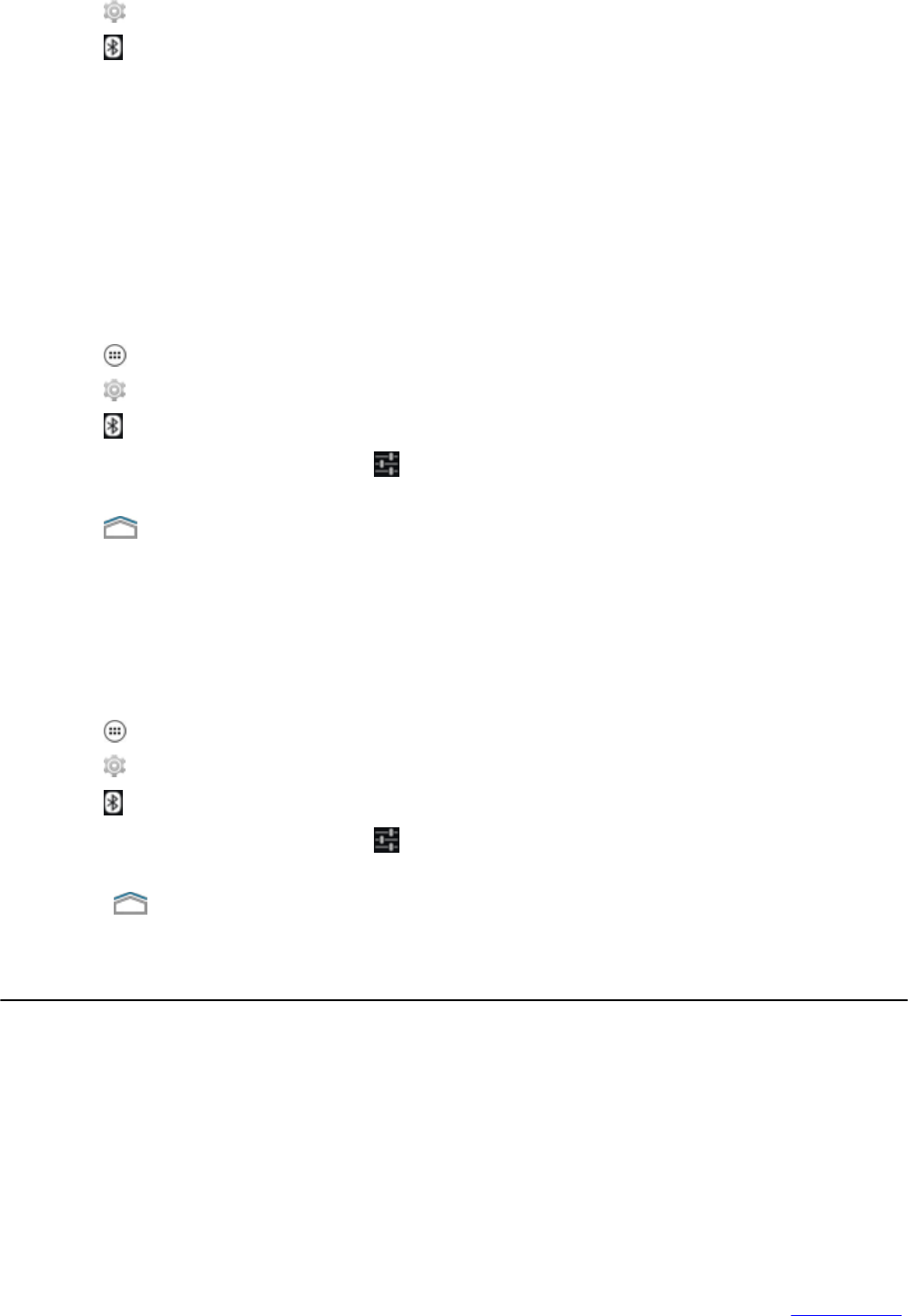
2Tap ,
3Tap Bluetooth,
4If Bluetooth is not on, slide the switch to the ON position.
5In the AVAILABLE DEVICES list, tap an unconnected Bluetooth device until a menu appears.
6Tap Pair.
When connected, the device is displayed as connected in the list.
8.3.9 Selecting Profiles on a Bluetooth Device
Some Bluetooth devices have multiple profiles for different connections.
When and where to use: Use this procedure to select a profile on the Bluetooth device that connects to the LEX L10.
Procedure:
1Tap .
2Tap .
3Tap Bluetooth.
4In the AVAILABLE DEVICES list, tap next to the device name.
5Under PROFILES, select a profile to use.
6Tap .
8.3.10 Unpairing a Bluetooth Device
Prerequisites: The Bluetooth device is paired with the LEX L10.
When and where to use: Use this procedure to unpair a Bluetooth device and erase all its pairing information.
Procedure:
1Tap .
2Tap .
3Tap Bluetooth.
4In the AVAILABLE DEVICES list, tap next to the device name.
5Tap Unpair.
6Press .
8.4 Pairing the LEX L10 with a Radio
The LEX L10 can extend its functionality by remotely operating and controlling an external proprietary Motorola
Solutions Radio (such as the APX™7000/APX™7000L) or accessory using Bluetooth.
Once pairing is established, the range of connection is no more than 10 meters line-of-sight. This is an unobstructed
path between the location of the LEX L10 and the location of the Radio (or other paired accessory).
Obstacles that can cause an obstruction in the line-of-sight include trees, buildings, cars and etc. It is NOT
recommended that you leave the Radio behind and expect the LEX L10 to work with a high degree of reliability when
they are separated.
Wireless | 137
MN001456A01-A | February 2015 | Send Feedback
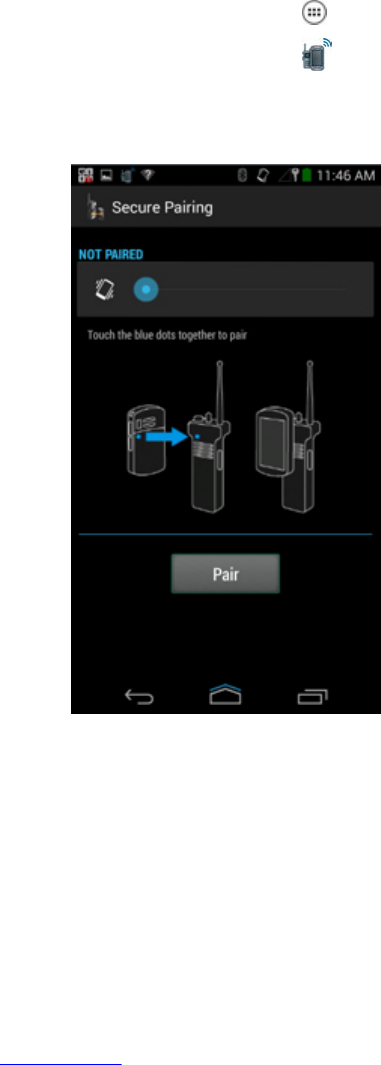
At the fringe areas of reception, both voice and tone quality will start to sound "garbled" or "broken". To correct this
problem, simply position the LEX L10 and Radio (or other paired accessory) closer to each other (within the 10 meter
defined range) to re-establish clear audio reception.
8.4.1 Establishing a Connection
Prerequisites:
•Verify that your Land Mobile Radio (LMR) includes a secure Bluetooth pairing feature. Turn on Bluetooth feature
of the LEX L10 and radio. In the radio, enable the Bluetooth tones (see LMR User Guide).
• The LEX L10 is not paired with other radio.
When and where to use: Use this procedure to pair the LEX L10 with a radio.
Procedure:
1Turn on the radio.
2On the LEX L10 screen, tap .
3On the LEX L10 screen, tap .
The Pairing screen displays on the LEX L10 and the pairing process starts.
Figure 97: Pairing Screen
4Bring the blue pairing dots on the LEX L10 and radio close to each other (within 2.5 cm) and follow the
instructions shown on the LEX L10 screen.
138 | Wireless
Send Feedback | February 2015 | MN001456A01-A

Figure 98: Blue Pairing Dots
• If the pairing process is successful, the radio sounds an incremental-pitched tone to indicate paired.
•If the pairing process fails, the radio sounds a short, low pitched tone. If this happens, tap Pair to resume
pairing.
The LEX L10 remembers the radio and will automatically resume connection whenever the radio is on and within
connection range.
Wireless | 139
MN001456A01-A | February 2015 | Send Feedback

Chapter
9
Accessories
This chapter provides information for using the accessories associated with the LEX L10.
9.1 LEX L10 Accessories
Table 10: General Accessories
Item Desktop Cradle Impact-Rated Vehicle Cradle
Physical
Dimensions (H x W x D) 6.0 x 5.0 x 3.5 in (152 x 128 x 89
mm)
6.1 x 3.0 x 2.2 in (155 x 76 x 56 mm)
Weight 12.8 oz (363 g) 4.8 oz (135 g)
Environmental Specification
Operating Temperature 32°F to 113°F (0°C to +45°C) -4°F to 131°F (-20°C to +55°C)
Storage Temperature -40° F to 158°F (-40°C to 70°C) -40° F to 185°F (-40°C to +85°C)
Humidity 95% at 113°F (45°C) for 8 hours
(non-condensing)
95% at 131°F (55°C) for 8 hours
(non-condensing)
Durability
Salt Fog Yes Yes
Vibration Yes Yes
Drop Yes Yes
Shock (Functional) Yes Yes
Shock (Crash Hazard) Yes, MIL-STD-810G, 75G impact
ESD Yes Yes
Solar Radiation Yes
Liquid Resistance Yes Yes
Safety Regulatory
Electrical Safety US: UL60950 US: UL60950
EMI/RFI FCC part 15, Subpart B, Class B
ANSI C63.4 2009 FCC part 15, Subpart B, Class B
Table continued…
141 | Accessories
MN001456A01-A | February 2015 | Send Feedback
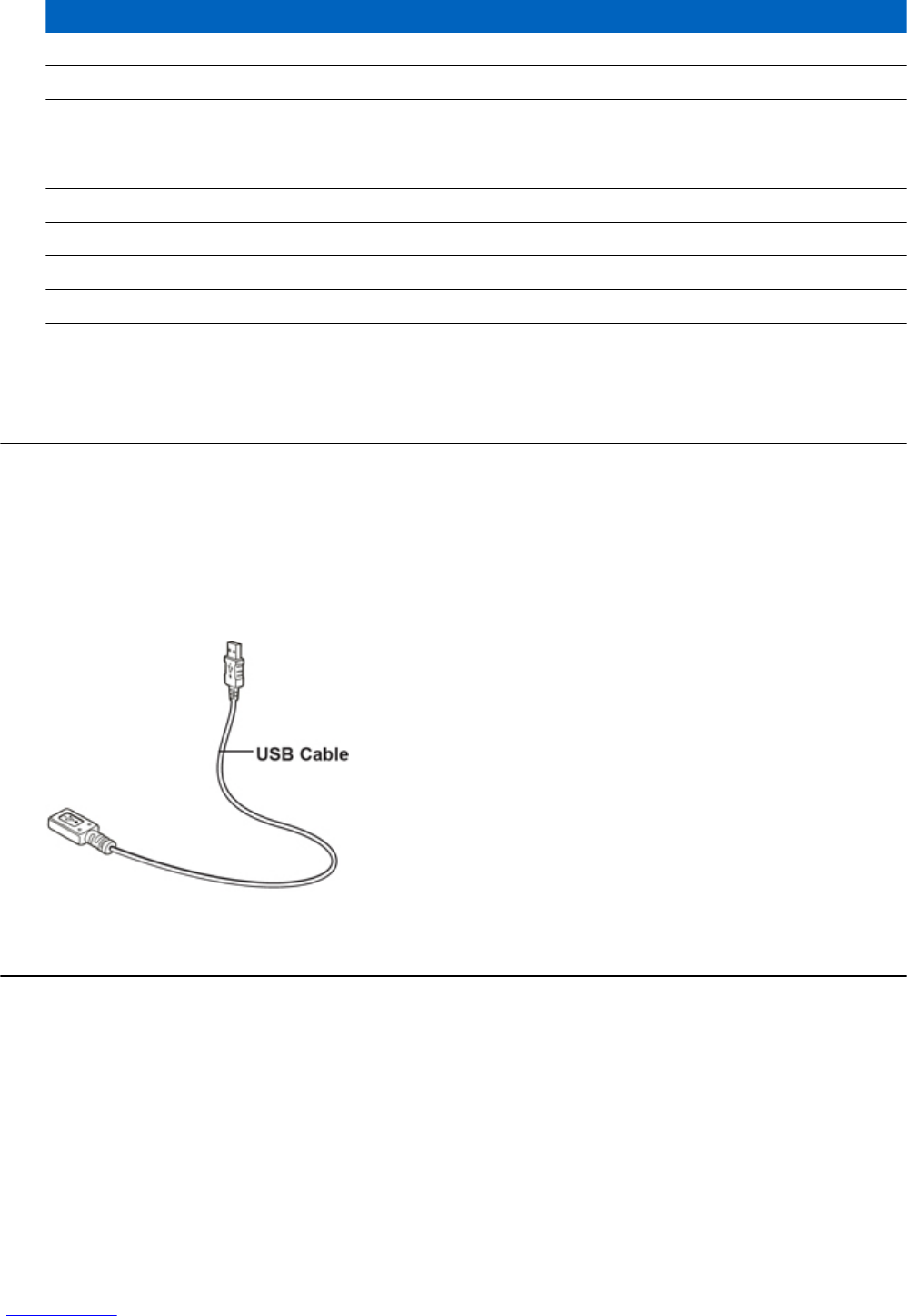
Item Desktop Cradle Impact-Rated Vehicle Cradle
Flammability ANSI/UL-94 and ASTM Standards ANSI/UL-94 and ASTM Standards
Electrical
Power Supply External power supply input 100-
240VAC output 5.0VDC 1.2A
12V-24V, 5.0VDC, 1.2A
Power Input 5.0 VDC, 1.2A 5.0 VDC, 1.2A
DC Output 5.0VDC 5.0VDC
Power On With device insertion With device insertion
Optional Accessories
Vehicle Ram® Mount Kit
Specifications subject to change.
9.2 USB Cable
The USB cable:
•Connects the LEX L10 to a USB charger to charge the LEX L10.
• Provides USB communication with a host computer. When the LEX L10 is connected to a host computer, the
LEX L10 appears as a removable disk on the host computer.
Figure 99: USB Cable
9.3 Desktop Cradle
The desktop cradle:
•Provides power for charging and operating the LEX L10.
• Enables connecting a mouse to the LEX L10.
142 | Accessories
Send Feedback | February 2015 | MN001456A01-A
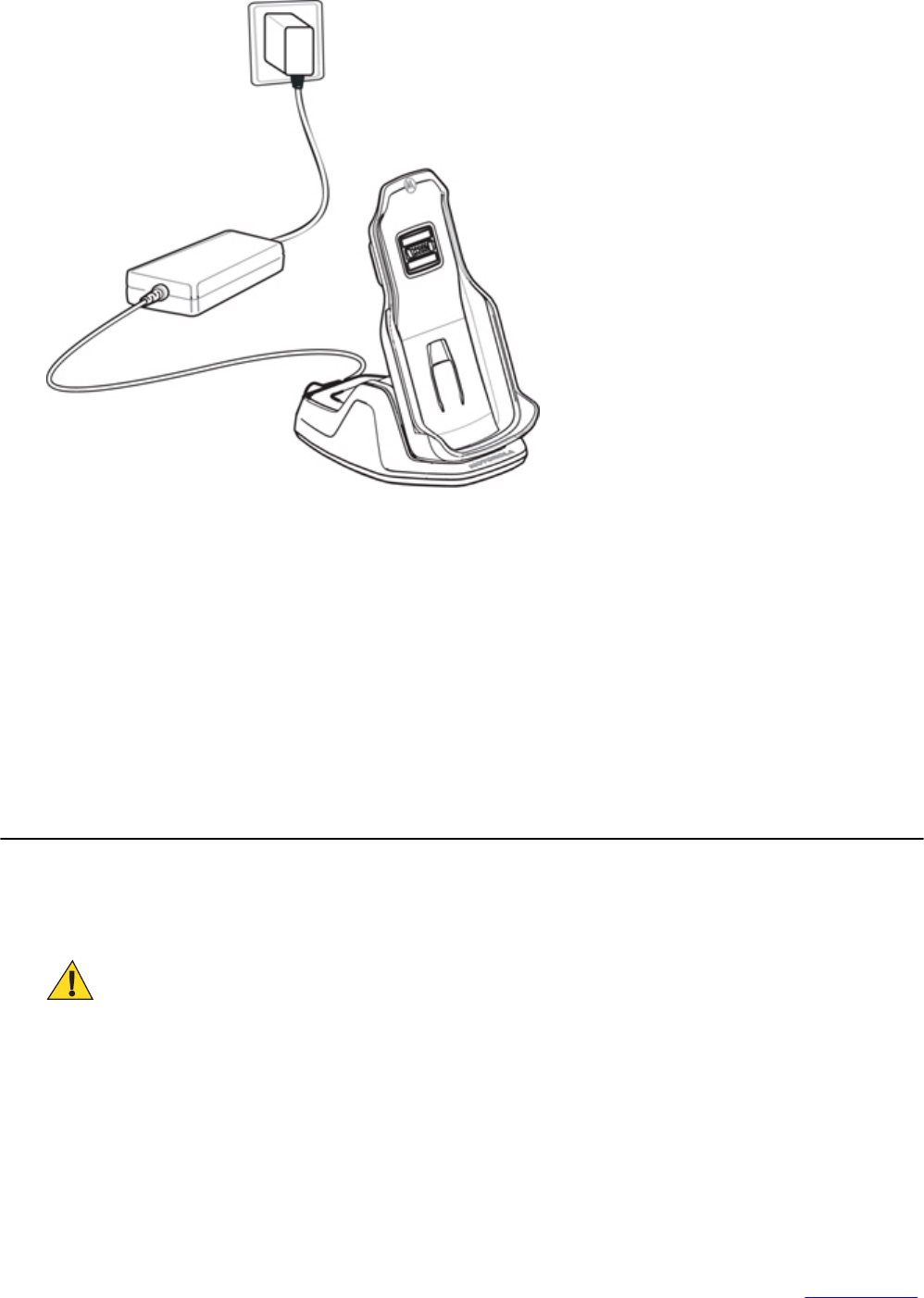
Figure 100: Desktop Cradle
Charging the LEX L10
To charge the LEX L10, insert the LEX L10 units by placing the bottom of the LEX L10, at a slight forward angle,
into the cradle.
The LEX L10's LED shows the status of the battery charging. See Battery Charge LED Status for charging status
indications. The 2280 mAh battery charges in approximately ten hours.
Charge the LEX L10 units in temperatures from 0°C to +45°C (32°F to 113°F) ). Note that charging is intelligently
controlled by the LEX L10. To accomplish this, for small periods of time, the LEX L10 alternately enables and
disables battery charging to keep the battery at acceptable temperatures. The LEX L10 indicates when charging is
disabled due to abnormal temperatures via its notification LED.
9.4 Vehicle Cradle
Install the vehicle mount on the surface of the vehicle that is reasonably flat and free of dirt and oil. Clean the
mounting surface with a glass cleaner and a clean cotton cloth. Install the vehicle mount on the windshield or other
flat car surface.
Caution: Some states prohibit the mounting of any electronic device in any location on the vehicle
dashboard. Be sure to check with local laws acceptable mounting areas before installing the auto mounting
kit.
Accessories | 143
MN001456A01-A | February 2015 | Send Feedback
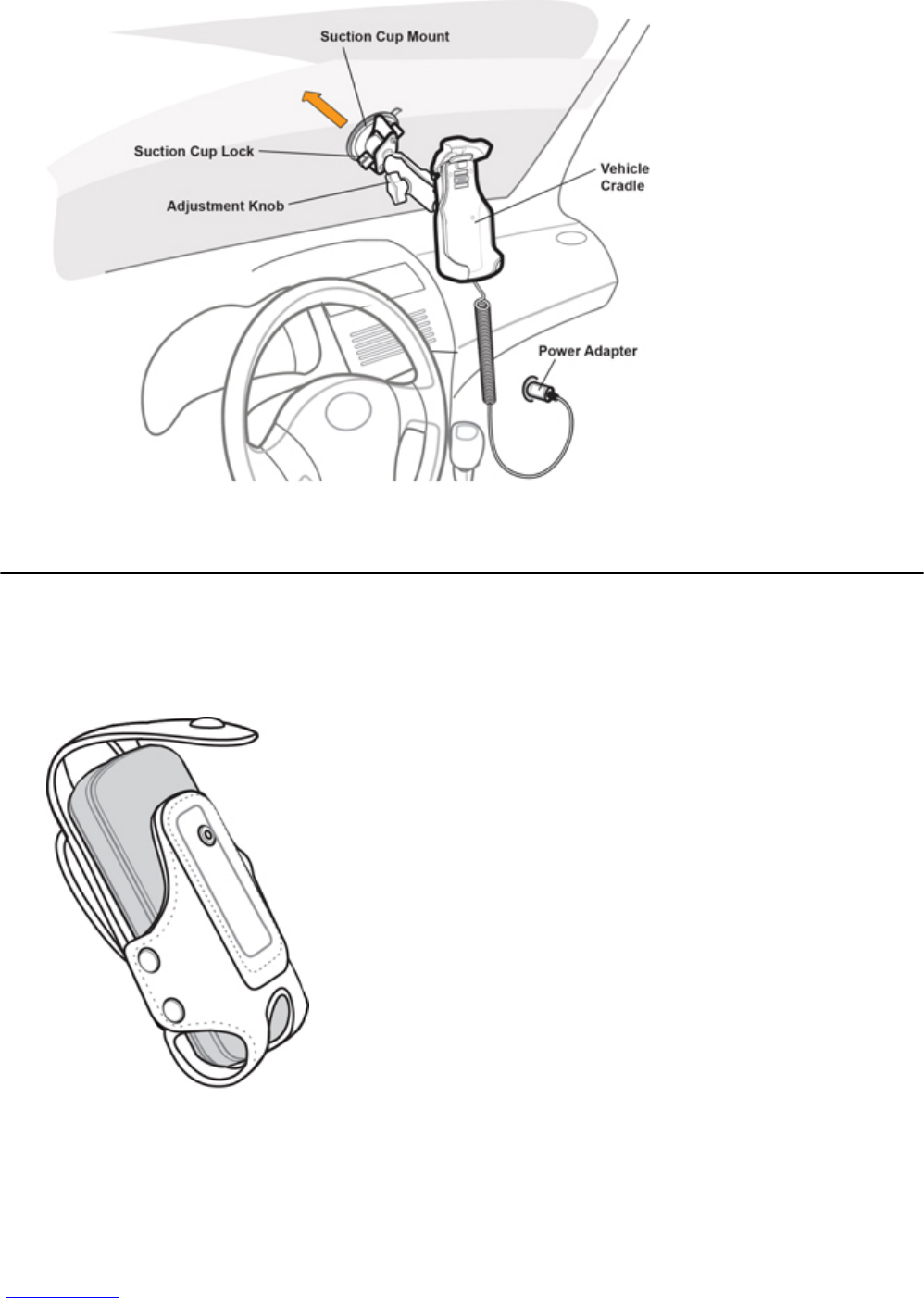
Figure 101: Vehicle Cradle on Windshield
9.5 Holster
Use the holster to securely carry the LEX L10 when working. The holster is threaded through a belt and stores the
LEX L10 when not in use or when using a headset.
Figure 102: Holster
Insert the LEX L10 into the holster with the screen facing in or out.
144 | Accessories
Send Feedback | February 2015 | MN001456A01-A

Chapter
10
Maintenance & Troubleshooting
This chapter includes instructions on cleaning and storing the LEX L10. It also provides troubleshooting solutions for
potential problems during LEX L10 operation.
10.1 Maintaining the LEX L10
For trouble-free service, observe the following tips when using the LEX L10:
•Do not scratch the screen of the LEX L10. Never use a pen or a pencil or other sharp object on the surface of the
LEX L10 screen.
• The touch-sensitive screen of the LEX L10 is made of polycarbonate. Do not to drop the LEX L10 or subject it to
strong impact.
• Protect the LEX L10 from temperature extremes. Do not leave it on the dashboard of a car on a hot day, and keep
it away from heat sources.
• Do not store the LEX L10 in any location that is dusty, damp or wet.
• Use a soft lens cloth to clean the LEX L10. If the surface of the LEX L10 screen becomes soiled, clean it with a
soft cloth moistened with isopropyl alcohol.
• Periodically replace the rechargeable battery to ensure maximum battery life and product performance. Battery
life depends on individual usage patterns.
10.2 Battery Safety Guidelines
• The area where the units are charged should be clear of debris and combustible materials or chemicals.
•Follow battery usage, storage, and charging guidelines found in this guide.
• Improper battery use may result in a fire, explosion, or other hazard.
• To charge the battery, the battery and charger temperatures must be between +32 ºF and +113 ºF (0 ºC and +45
ºC)
• Do not use incompatible batteries and chargers. Use of an incompatible battery or charger may present a risk of
fire, explosion, leakage, or other hazard. If you have any questions about the compatibility of a battery or a
charger, contact Motorola Solution support.
• If charging through a USB port, the device shall only be connected to products that bear the USB-IF logo or have
completed the USB-IF compliance program.
• To enable authentication of an approved battery, as required by IEEE1725 clause 10.2.1, all batteries will carry a
Motorola hologram. Do not fit any battery without checking it has the Motorola authentication hologram.
• Do not disassemble or open, crush, bend or deform, puncture, or shred.
• Severe impact from dropping any battery-operated device on a hard surface could cause the battery to overheat.
• Do not modify or remanufacture, attempt to insert foreign objects into the battery, immerse or expose to water or
other liquids, or expose to fire, explosion, or other hazard.
145 | Maintenance & Troubleshooting
MN001456A01-A | February 2015 | Send Feedback

• Do not leave or store the equipment in or near areas that might get very hot, such as in a parked vehicle or near a
radiator or other heat source. Do not place battery into a microwave oven or dryer.
•Battery usage by children should be supervised.
• Follow local regulations to properly dispose of used rechargeable batteries.
• Do not dispose of batteries in fire.
• In the event of a battery leak, do not allow the liquid to come in contact with the skin or eyes. If contact has been
made, wash the affected area with large amounts of water and seek medical advice.
• If you suspect damage to your equipment or battery, contact Motorola Solutions support to arrange for inspection.
10.3 Cleaning Instructions
Warning: Avoid exposing this product to contact with hot oil or other flammable liquids. If such exposure
occurs, unplug the device and clean the product immediately in accordance with these guidelines.Avoid
exposing this product to contact with hot oil or other flammable liquids. If such exposure occurs, unplug
the device and clean the product immediately in accordance with these guidelines.
Caution:
Always wear eye protection.
Read the warning labels on compressed air and alcohol products before use.
If you have to use any other solution for medical reasons, contact Motorola Solutions for more information.
Approved Cleanser Active Ingredients
100% of the active ingredients in any cleaner must consist of one or a combination of the following: isopropyl
alcohol, or mild dish soap.
Cleaning Instructions
Do not apply liquids directly to the device. Dampen a soft cloth or use pre-moistened wipes. Do not wrap the device
in the cloth or wipe, but gently wipe the unit
Harmful Ingredients
Many vinyl gloves contain phthalate additives, which are often not recommended for medical use and are known to
be harmful to the housing of the device. The device should not be handled while wearing vinyl gloves containing
phthalates, or before hands are washed to remove contaminant residue after gloves are removed. If products
containing the harmful ingredients are used before handling the device, such as hand sanitizers containing
ethanolamine, hands must be completely dry before handling the device to prevent damage to the plastics.
Cleaning Materials Required
• Alcohol wipes
• Lens tissue
• Cotton-tipped applicators
• Isopropyl alcohol
• Can of compressed air with a tube
Cleaning Frequency
The cleaning frequency is up to your discretion due to the varied environments in which the mobile devices are used.
They may be cleaned as frequently as required, but it is advisable to clean the camera window periodically when used
in dirty environments to ensure optimum performance.
146 | Maintenance & Troubleshooting
Send Feedback | February 2015 | MN001456A01-A

10.4 Cleaning the LEX L10
Housing
Using the alcohol wipes, wipe the housing including buttons.
Display
The display can be wiped down with the alcohol wipes, but care should be taken not to allow any pooling of liquid
around the edges of the display. Immediately dry the display with a soft, non-abrasive cloth to prevent streaking.
Camera Window
Wipe the camera window periodically with a lens tissue or other material suitable for cleaning optical material such
as eyeglasses.
10.5 Cleaning the Interface Connector
To clean the contacts of the interface connector on LEX L10:
Procedure:
1Power off the LEX L10.
OPTIONAL TAG: Type additional step information here e.g. notes - or delete this tag
2Dip the cotton portion of the cotton-tipped applicator in isopropyl alcohol.
3Rub the cotton portion of the cotton-tipped applicator along the contacts of the interface connector. Slowly move
the applicator back-and-forth from one side of the connector to the other.
4If grease and other dirt can be found on other areas of the cradle, remove using a lint-free cloth and alcohol.
5Allow few minutes (depending on ambient temperature and humidity) for the alcohol to air dry before powering
on the LEX L10.
10.6 Cleaning the Battery Contacts
To clean the connectors:
Procedure:
1Remove the main battery from LEX L10.
2Dip the cotton portion of the cotton-tipped applicator in isopropyl alcohol.
3Gently, rub the cotton portion of the cotton-tipped applicator back-and-forth across the contacts. Do not leave any
cotton residue on the contacts.
4Use the cotton-tipped applicator dipped in alcohol to remove any grease and dirt near the contacts area.
5Use a dry cotton-tipped applicator and repeat steps 4 and 5 at least three times.
Caution: Do not point nozzle at yourself and others. Ensure that the nozzle or tube is away from your
face.
6Spray compressed air on the connector area by pointing the tube/nozzle about ½ inch away from the surface.
7Inspect the area for any grease or dirt, repeat if required.
Maintenance & Troubleshooting | 147
MN001456A01-A | February 2015 | Send Feedback

10.7 Troubleshooting the LEX L10
Table 11: Troubleshooting the LEX L10
Problem Cause Solution
After pressing the Power
button, the LEX L10
does not turn on.
Battery is com-
pletely dis-
charged.
Re-charge or replace the battery.
Battery not instal-
led properly.
Install the battery properly. See Installing the Battery.
Power button not
held down long
enough.
Press the Power button until the Motorola Solutions splash screen is
displayed.
LEX L10 not re-
sponding.
Reset the LEX L10.
After pressing the Power
button, the LEX L10
does not turn on but a
charge battery icon Ap-
pears.
Battery charge
level is very low.
Re-charge or replace the battery.
After connecting the
LEX L10 to a Cable, a
battery charging icon
Appears.
Battery is deplet-
ed but is charg-
ing.
Press and hold the Power button to turn on the LEX L10.
When charging, the LED
slowly blinks red.
The LEX L10 is
at an extremely
low-power state.
Charge the LEX L10 for a few minutes. The LED changes to flashing
green then press the Power button to turn on the LEX L10. If LED
continuously blinks red, check power connections. Disconnect and re-
connect connections.
Battery did not charge. Battery failed. Replace battery. If the LEX L10 still does not operate, perform a
hardware reset.
LEX L10 was re-
moved from pow-
er while battery
was charging.
Insert LEX L10 in cradle or attach Charge Cable. The 2280 mAh bat-
tery fully charges in approximately four hours.
Extreme battery
temperature.
Battery does not charge if ambient temperature is below 0 °C (32 °F)
or above 45 °C (113 °F).
During data communica-
tion with a host comput-
er, no data transmitted,
or transmitted data was
incomplete.
LEX L10 re-
moved from USB
cable or discon-
nected from host
computer during
communication.
Reattach the communication cable and re-transmit.
Incorrect cable
configuration.
See technical support.
Table continued…
148 | Maintenance & Troubleshooting
Send Feedback | February 2015 | MN001456A01-A
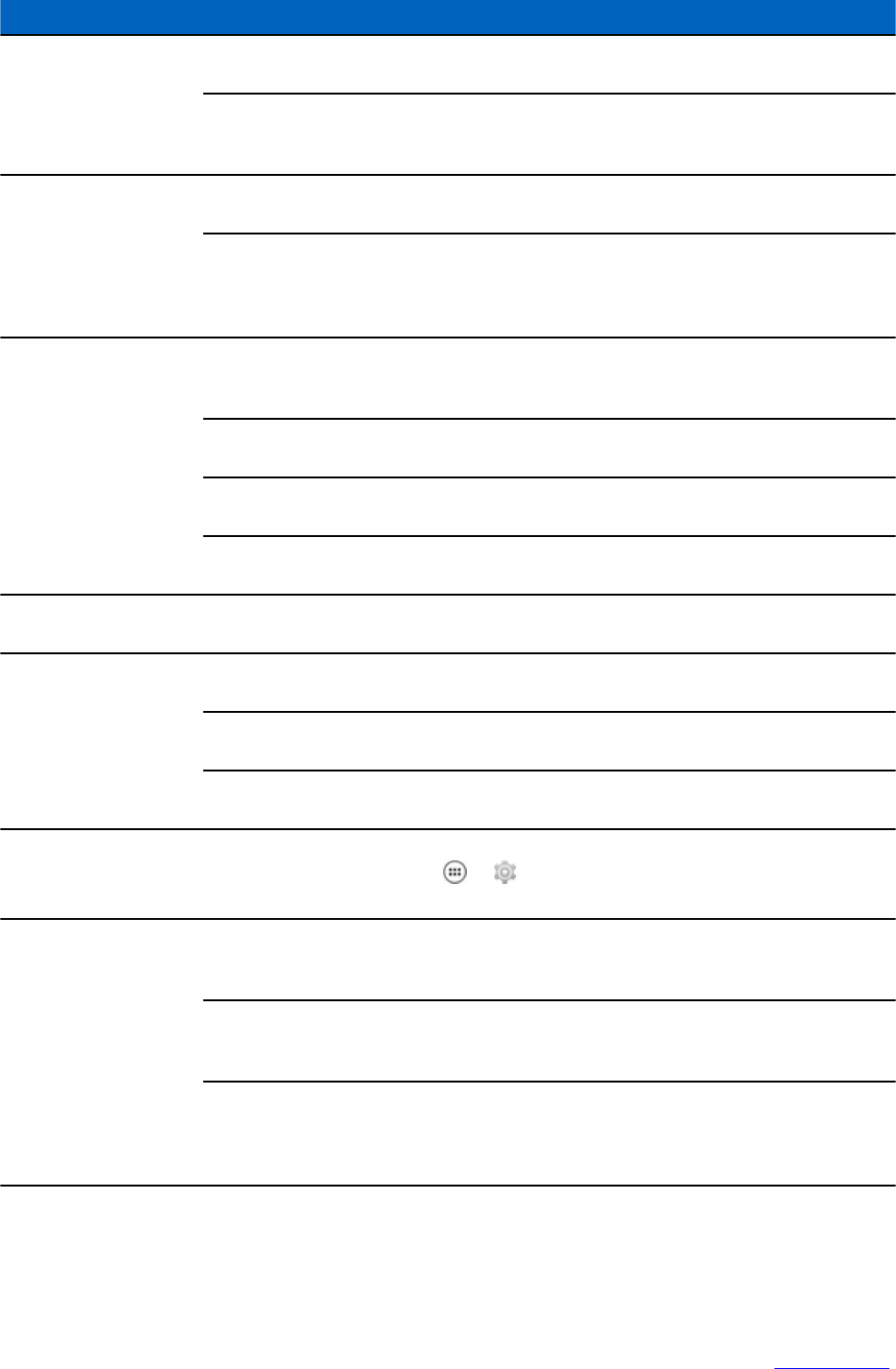
Problem Cause Solution
During data communica-
tion over WiFi, no data
transmitted, or transmit-
ted data was incomplete.
WiFi radio is not
on.
Turn on the WiFi radio.
You moved out
of range of an ac-
cess point.
Move closed to an access point.
During data communica-
tion over Bluetooth, no
data transmitted, or
transmitted data was in-
complete.
Bluetooth radio is
not on.
Turn on the Bluetooth radio.
You moved out
of range of anoth-
er Bluetooth de-
vice.
Move without 10 m (32.8 ft.) of the other device.
During data communica-
tion over Public / Pri-
vate, no data transmitted,
or transmitted data was
incomplete.
You are in an
area of poor cel-
lular service.
Move into an area that has better service.
VPN is not set up
correctly.
See technical support for VPN setup information.
SIM card not in-
stalled properly.
Remove and re-install the SIM cards.
Data plan not ac-
tivated.
Contact your service provider and ensure that your data plan is ena-
bled.
No sound. Volume setting is
low or turned off.
Adjust the volume.
LEX L10 turns off. LEX L10 is inac-
tive.
The display turns off after a period of inactivity. Set this period to 15
seconds, 30 seconds, 1, 2, 5, 10, or 30 minutes.
Battery is deplet-
ed.
Recharge or replace the battery.
Extreme battery
temperature.
Move device to an area where the ambient temperature is between 0
°C (32 °F) or above 45 °C (113 °F).
A message appears stat-
ing not enough storage
memory.
Too many appli-
cations installed
on the LEX L10.
Remove user-installed applications on the LEX L10 to recover mem-
ory. Select → → Apps → Downloaded. Select the unused
programs and tap Uninstall.
LEX L10 cannot find
any Bluetooth devices
nearby.
Too far from oth-
er Bluetooth devi-
ces.
Move closer to the other Bluetooth device(s), within a range of 10
meters (32.8 feet).
The Bluetooth de-
vice(s) nearby are
not turned on.
Turn on the Bluetooth device(s) to find.
The Bluetooth de-
vice(s) are not in
discoverable
mode.
Set the Bluetooth device(s) to discoverable mode. If needed, see the
device’s user documentation for help.
Maintenance & Troubleshooting | 149
MN001456A01-A | February 2015 | Send Feedback

10.8 Backing Up the LEX L10
Backing up the LEX L10 must be done manually.
Prerequisites: A USB cable to connect the LEX L10 to a computer.
When and where to use: Use this procedure anytime a backup of the LEX L10 is necessary.
Procedure:
1Connect the LEX L10 to a computer using the supplied USB cable.
The first time you connect to a computer the following message is displayed:
Installing Device Driver Software
After the driver software is installed, the following message is displayed:
Your device is ready to use
2Click the Start button and then select Computer.
3Select the LEX L10 Portable Device.
4Select Internal storage.
5Navigate to the files that you want to back up.
6Copy the files/folders to a secure location on your computer.
10.8.1 Backing up Contacts
To back up contacts, the contacts must be exported to a VCF file which must be copied to a secure location.
Prerequisites: Contacts must exist in the contact list.
When and where to use: Use this procedure to periodically back up your contacts.
Procedure:
1From the Home screen, tap .
2Tap .
150 | Maintenance & Troubleshooting
Send Feedback | February 2015 | MN001456A01-A
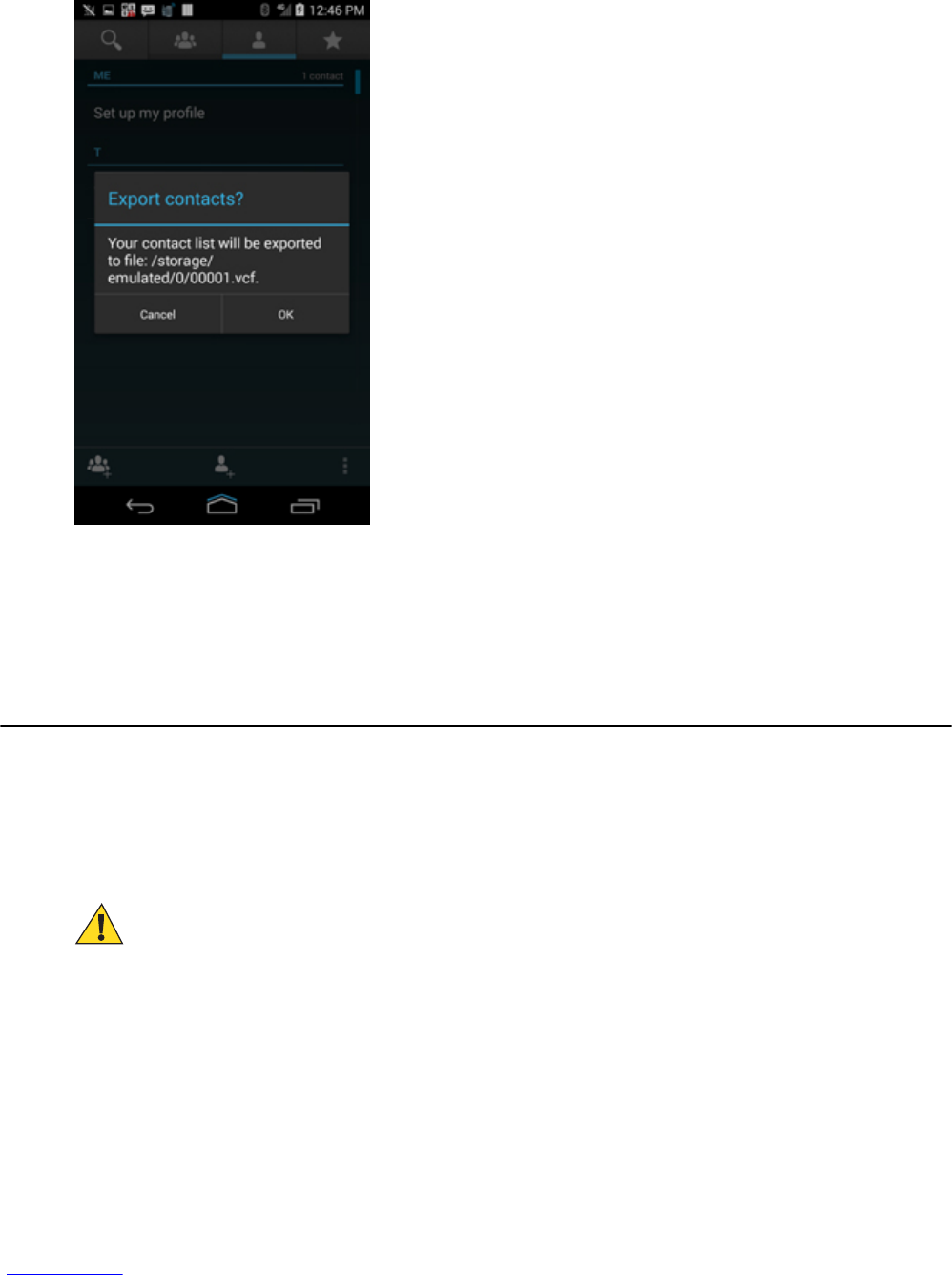
4Select Export to storage.
Figure 105: Export Confirmation Popup
5Tap OK to export the contacts.
The VCF file is saved to the location indicated.
6Follow the procedure underBacking Up the LEX L10 on page 150 to complete the contacts backup.
10.9 Resetting the LEX L10
When and where to use: If the LEX L10 does not operate properly, perform the following:
Procedure:
1Power off and on the LEX L10 and verify if the problem is gone.
The LEX L10 restarts. If the problem remains, perform Step 2.
Caution: To avoid erasing important data from your LEX L10, do not press any of the LEX L10
buttons during power up.
2Remove the battery, reinsert it, and verify if the problem is gone.
The LEX L10 restarts. If the problem remains, perform factory data reset.
10.9.1 Performing Factory Data Reset
A factory data reset is a software restore of the LEX L10 to its original manufacturer settings. Before resetting the
LEX L10, back up your data. Factory data reset erases all your personal data from the LEX L10 memory and
microSD card including: configuration, contents, accounts, installed applications, user settings, music, photos, videos,
installed licenses, pre-loaded application updates, DM bootstrapping data, integrated and pre-loaded application
152 | Maintenance & Troubleshooting
Send Feedback | February 2015 | MN001456A01-A

configuration, post-loaded applications and user passwords. After reset is performed, re-enter your backed up
information.
When and where to use: Use this procedure to perform factory data reset:
Caution: Factory data reset is performed only by technical support as a last resort when the LEX L10 fails
to operate. Before performing factory data reset, remove the SIM and microSD cards from the LEX L10.
Performing factory data reset with a microSD or SIM cards installed may cause data corruption or loss.
Note: Factory data reset configures the LEX L10 to public communication only. To return to combined
Public and Private configuration, see your technical support. The last updated firmware and the initial
version of pre-loaded applications are preserved through a reset to factory defaults.
Procedure:
1Tap .
2Tap .
3Tap Backup & reset.
4Tap Factory data reset.
The LEX L10 powers off, powers on, then the system recovery screen appears.
Maintenance & Troubleshooting | 153
MN001456A01-A | February 2015 | Send Feedback
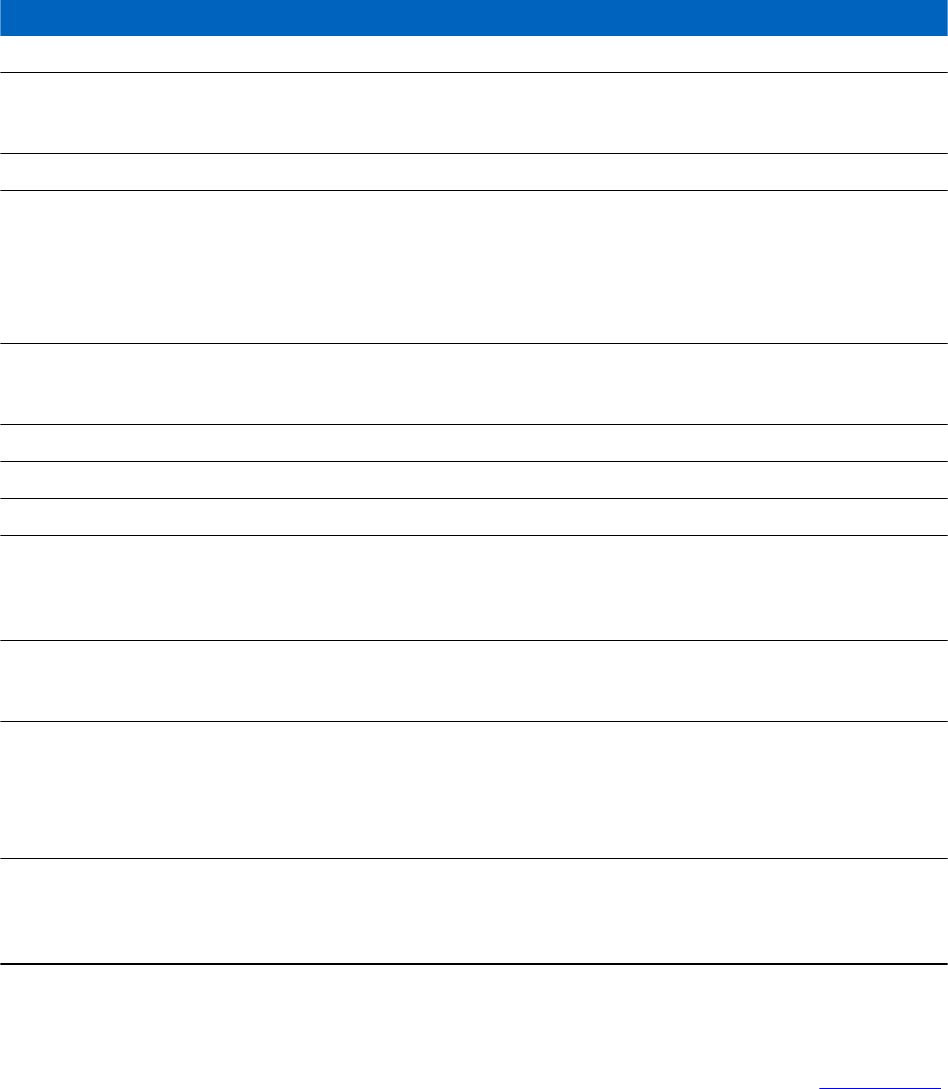
Chapter
11
LEX L10 Technical Specifications
The following table summarizes the LEX L10 operating, environment and technical hardware specifications.
Table 12: LEX L10 Technical Specifications
Item Specification
Physical
Dimensions (H x W x D) 5.62 x 2.85 x 0.547 in.
143 x 72.6 x 13.0 mm
Weight 195 g (6.88 Oz) including standard battery
Durability Continues to run after multiple drops to concrete from a
height of 48 inches (121 cm)
Drop tested using MIL-STD-810G Method 516.6, Proce-
dure IV
IP67 (1 meter water immersion for 30 minutes)
Display 4.7” 720p HD (720 x 1280)
Capacitive touch screen
Operating Temperature 14°F to 131°F (-10°C to +55°C)
Storage Temperature -22°F to 149°F (-30°C to +65°C)
Hardware
Processor 2.3 GHz
Qualcomm MSM8974AB
Quad Core Processor
Display 4.7” 720X1280
Capacitive, touch screen
Memory 2 GB RAM
16 GB eMMC
Expandable to 64GB with microSD™ card
Camera Rear 8MP Camera
Auto Focus
High-Output LED Flash
Table continued…
155 | LEX L10 Technical Specifications
MN001456A01-A | February 2015 | Send Feedback

Item Specification
Digital Zoom
Front 2MP Camera
Sensors Proximity Sensor
Ambient Light Sensor
Accelerometer Sensor
Barometer Sensor
E-Compass
Ports USB 2.0 High-Speed
3.5 mm Audio Jack (stereo)
Accessory/Charging Port
Battery Standard - 2280 mAh, 10 hours
High Capacity - 4560 mAh, 20 hours
Software
Operating System Android™ KitKat 4.4.4
User Interface Public Safety Experience (PSX) Software
Messaging SMS/MMS
Email (Corporate Sync, POP3, IMAP, Push Email)
Web Standard AOSP Browser
LTE
Release 3GPP Release 9
Band Class Band 4, 13
Band 14 (Public Safety LTE)
Output Power 23 dBm +/- 2 dB (UE power class 3)
Bandwidth 5 MHz, 10 MHz
Broadband data throughput depends on network condi-
tions
CDMA
Standards EVDO Rev. A (Band 0, Band 1) 3G, 1X
Frequencies 800/1900 MHz
WiFi
Operating Band 2.4 GHz, 5 GHz
Standards 802.11 a/b/g/n
Personal Area Networks
Bluetooth Bluetooth 4.0 Low Energy (LE) + Enhanced
Data Rate (EDR)
Table continued…
156 | LEX L10 Technical Specifications
Send Feedback | February 2015 | MN001456A01-A
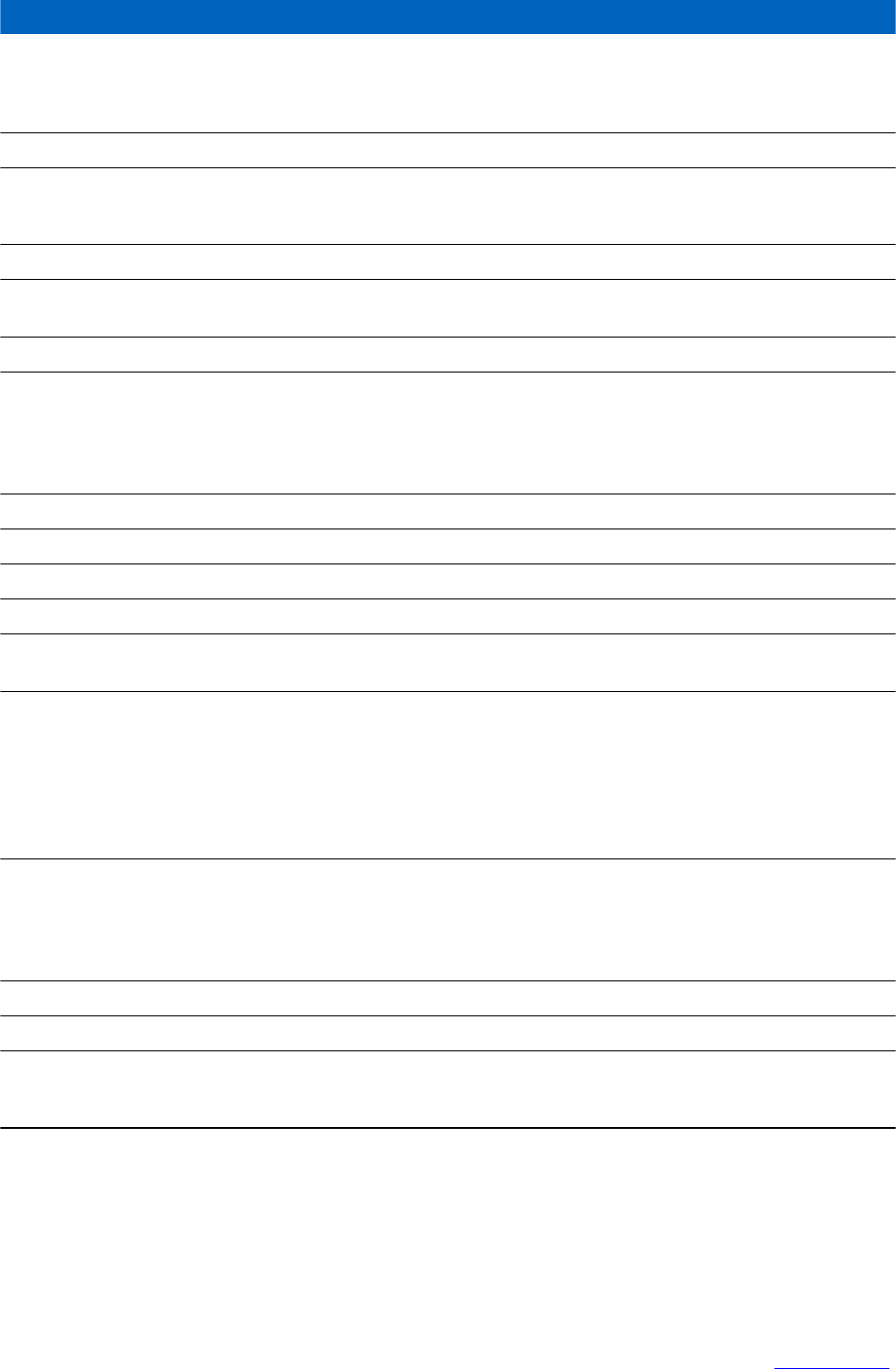
Item Specification
Mission Critical Wireless Bluetooth
Max throughput 2.1 Mbps
A2DP Stereo Profile
GPS
Location Services Standalone GPS
Assisted GPS (aGPS)
Device Management
Remote Management and Configuration Supports OMA-DM (Open Mobile Alliance Device
Management)
Video and Imaging
Supported Formats H.263, H.264, MPEG-4 SP, VP8, JPEG (.jpg), GIF (.gif),
PNG (.png),
BMP (.bmp), WebP (.webp)
Formats supported for playback, streaming and recording
Supported File Types 3GPP (.3gp), MPEG-4 (.mp4), WebM (.webm), (.mkv)
Video Recording Quality 1080p HD up to 30 frames per second (fps)
Note: Video and images are time stamped for evidence documentation
Audio
Supported Formats MP3, WAVE, AAC, AMR-NB, AMR-WB, FLAC,
MIDI, Vorbis
Supported File Types MP3 (.mp3), WAVE (.wav), 3GPP (.3gp),
MPEG-4 (.mp4, m4a), ATDS raw AAC (.aac), MPEG-
TS (.ts)
FLAC (.flac), MIDI (.mid, .xmf, .mxmf), RTTTL/RTX
(.rtttl, rtx),
OTA (.ota), iMelody (imy), Ogg (.ogg), Matroska (.mkv)
Output Dual 1 Watt Front-Facing Speakers,
106 dB Sound Pressure Level (SPL)
3.5 mm audio jack (stereo)
Bluetooth (A2DP stereo)
Input Triple Noise and Echo Cancelling Microphones
Quick Access Leather Holster
Dimensions (H x W x D) 5.7 x 3.5 x 2.0 in
(145 x 90 x 50 mm)
Specifications subject to change.
LEX L10 Technical Specifications | 157
MN001456A01-A | February 2015 | Send Feedback

Table 13: General Accessories
Item Desktop Cradle Impact-Rated Vehicle Cradle
Physical
Dimensions (H x W x D) 6.0 x 5.0 x 3.5 in (152 x 128 x 89
mm)
6.1 x 3.0 x 2.2 in (155 x 76 x 56 mm)
Weight 12.8 oz (363 g) 4.8 oz (135 g)
Environmental Specification
Operating Temperature 32°F to 113°F (0°C to +45°C) -4°F to 131°F (-20°C to +55°C)
Storage Temperature -40° F to 158°F (-40°C to 70°C) -40° F to 185°F (-40°C to +85°C)
Humidity 95% at 113°F (45°C) for 8 hours
(non-condensing)
95% at 131°F (55°C) for 8 hours
(non-condensing)
Durability
Salt Fog Yes Yes
Vibration Yes Yes
Drop Yes Yes
Shock (Functional) Yes Yes
Shock (Crash Hazard) Yes, MIL-STD-810G, 75G impact
ESD Yes Yes
Solar Radiation Yes
Liquid Resistance Yes Yes
Safety Regulatory
Electrical Safety US: UL60950 US: UL60950
EMI/RFI FCC part 15, Subpart B, Class B
ANSI C63.4 2009 FCC part 15, Subpart B, Class B
Flammability ANSI/UL-94 and ASTM Standards ANSI/UL-94 and ASTM Standards
Electrical
Power Supply External power supply input 100-
240VAC output 5.0VDC 1.2A
12V-24V, 5.0VDC, 1.2A
Power Input 5.0 VDC, 1.2A 5.0 VDC, 1.2A
DC Output 5.0VDC 5.0VDC
Power On With device insertion With device insertion
Optional Accessories
Vehicle Ram® Mount Kit
Specifications subject to change.
158 | LEX L10 Technical Specifications
Send Feedback | February 2015 | MN001456A01-A



